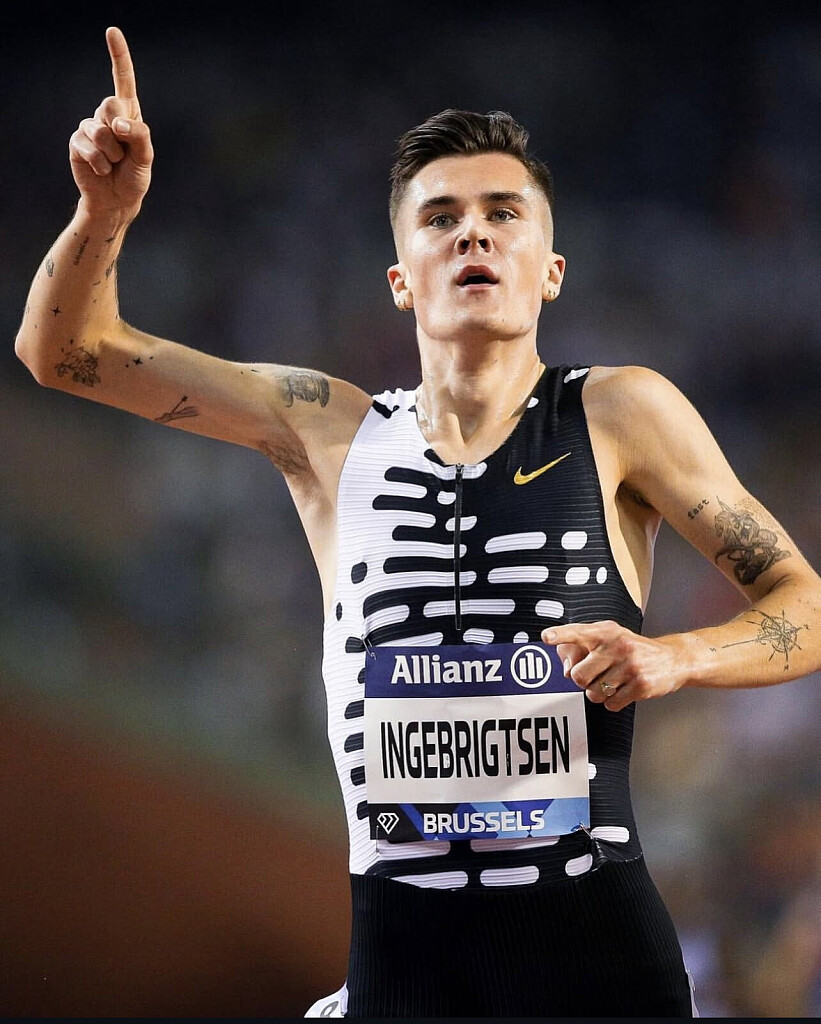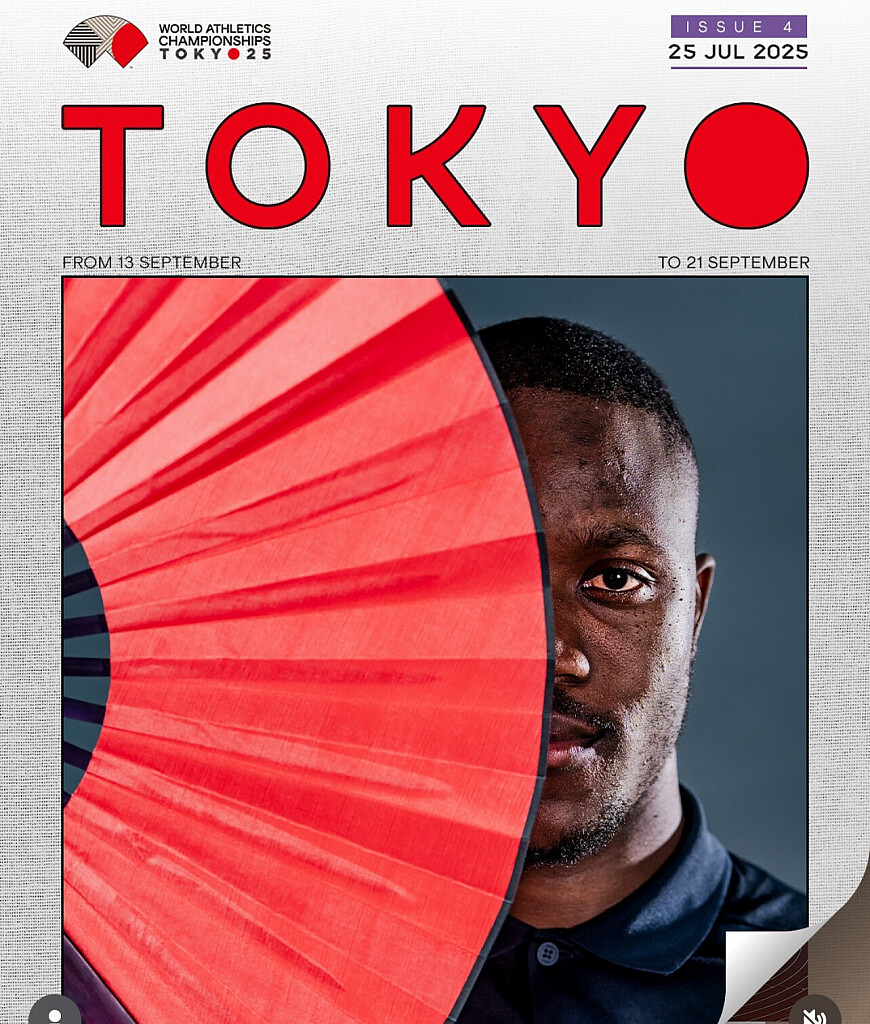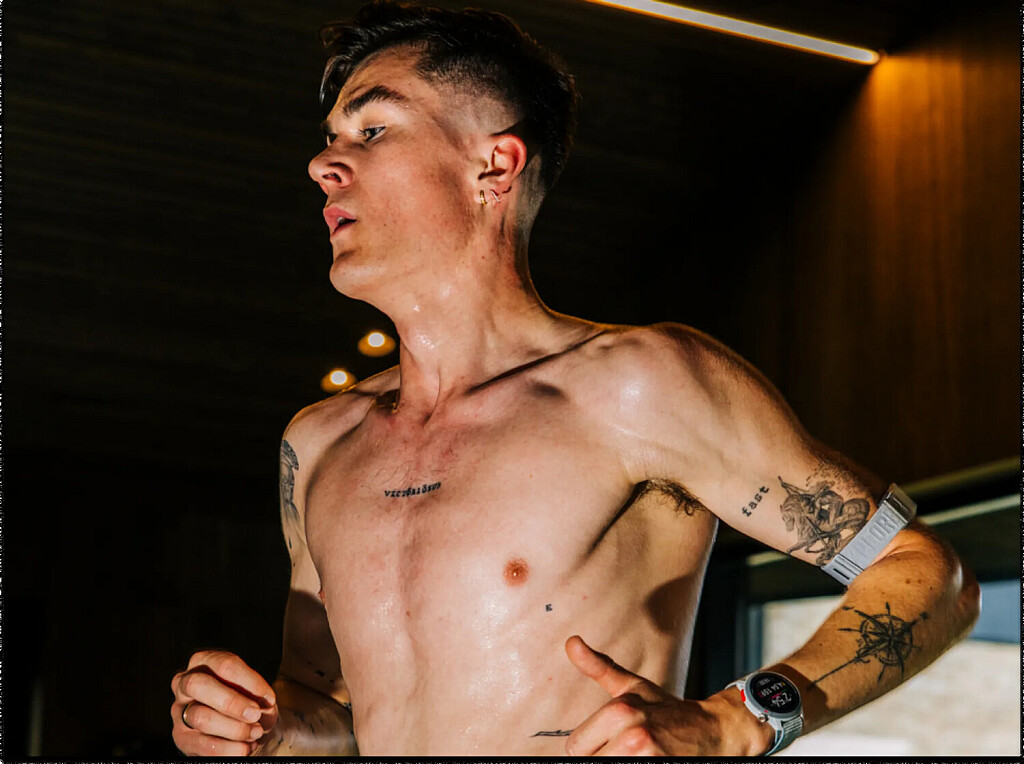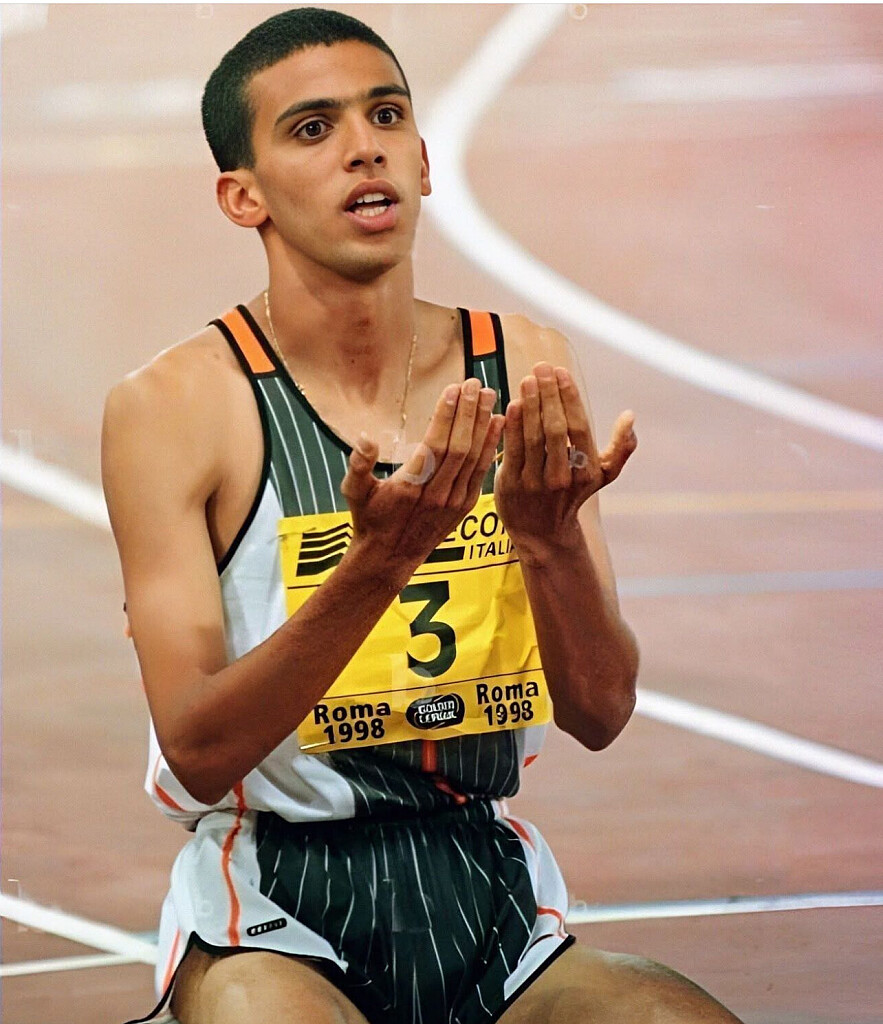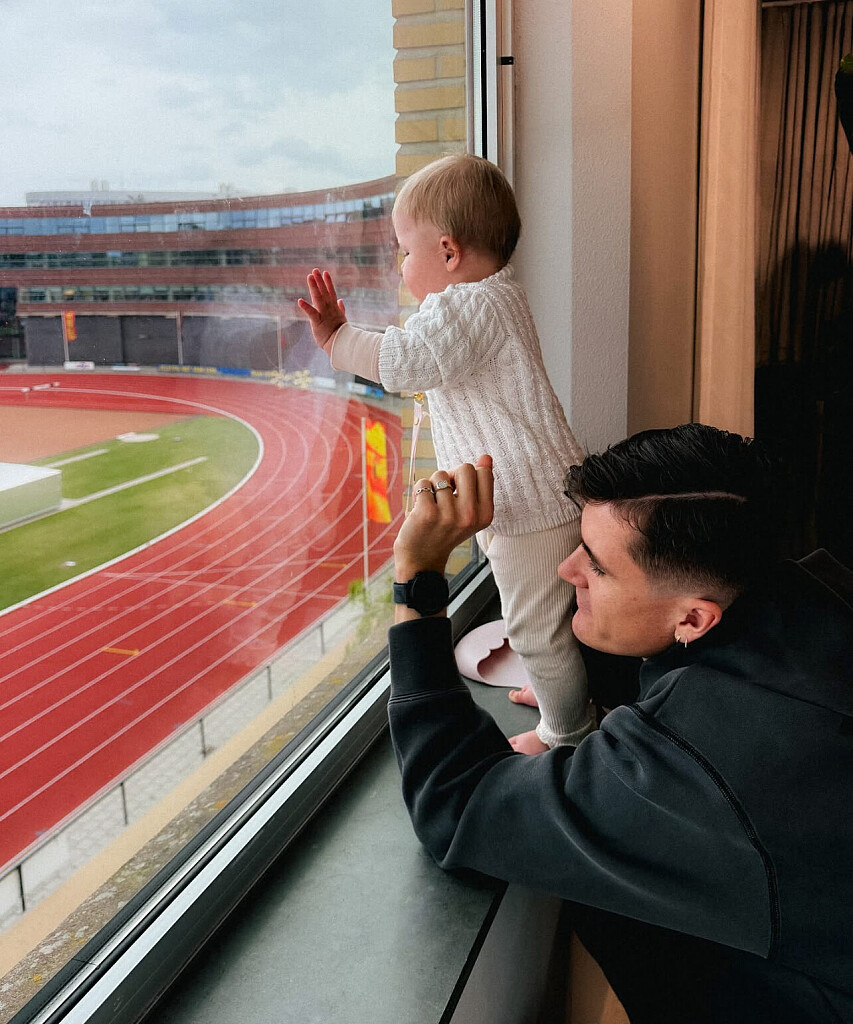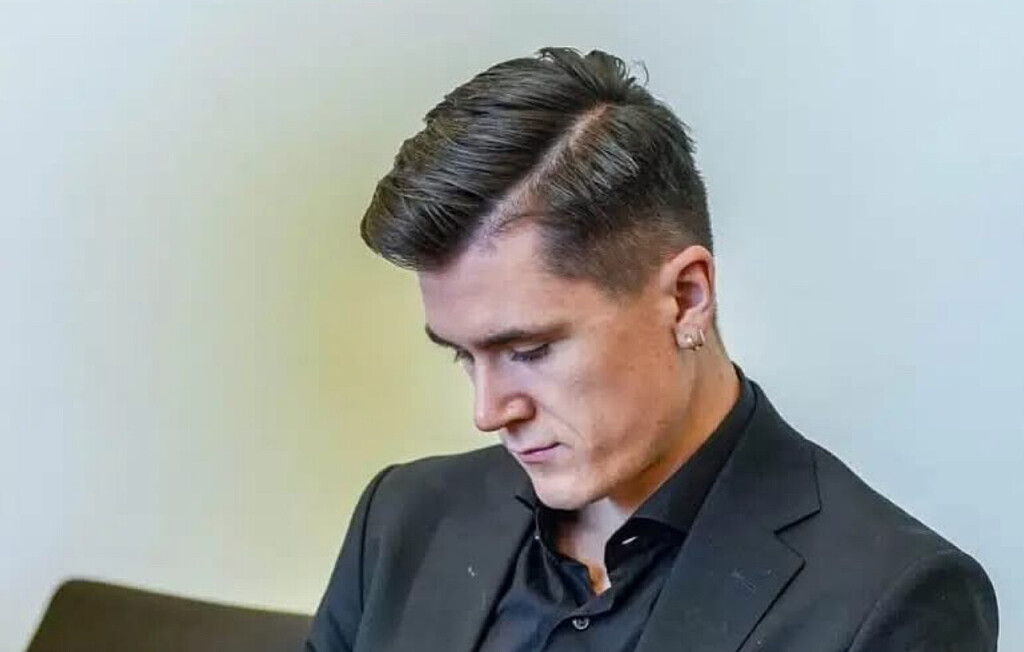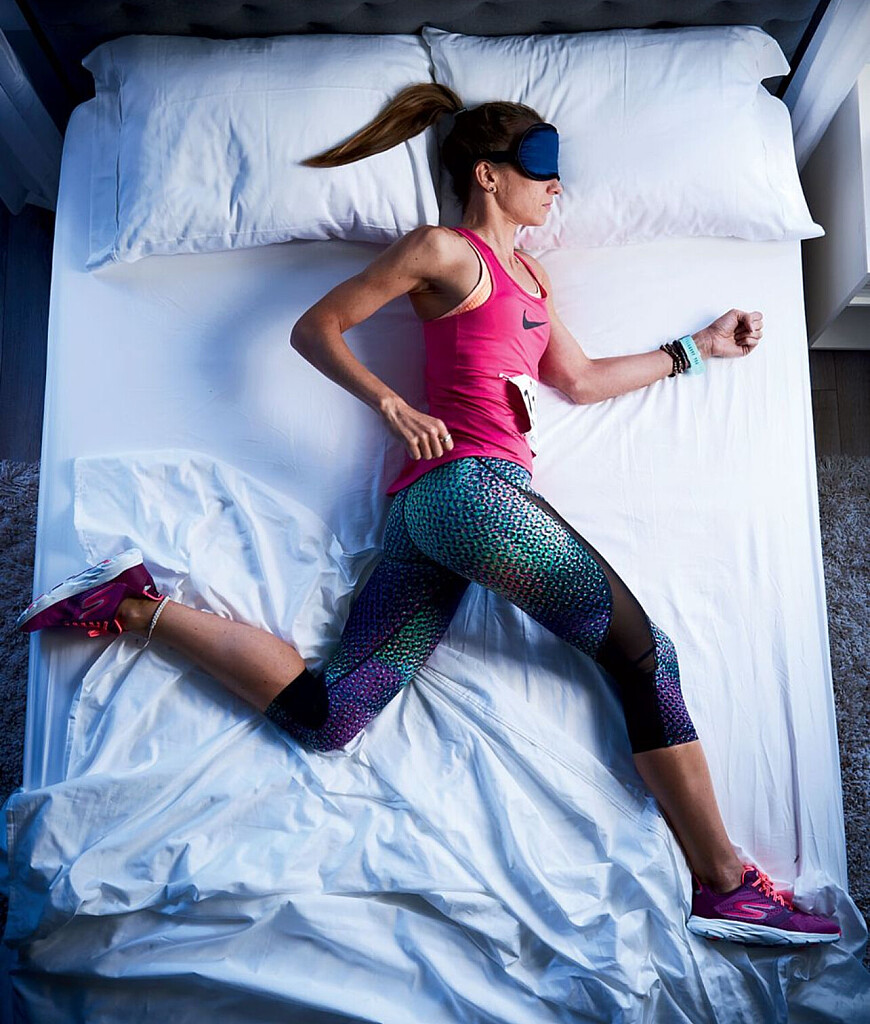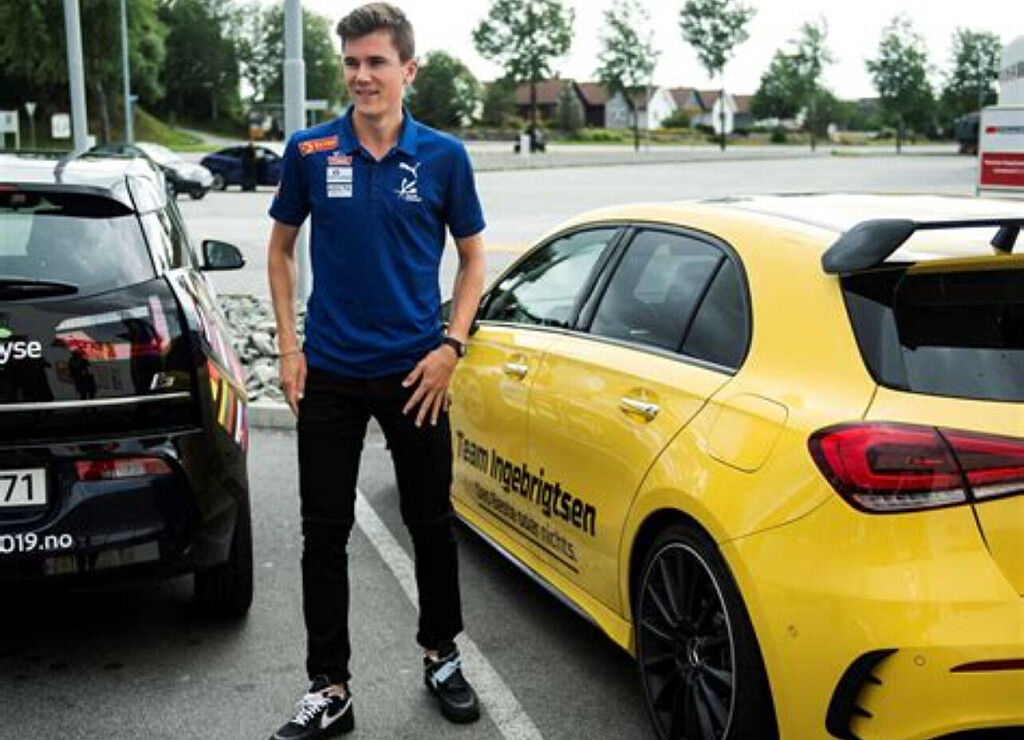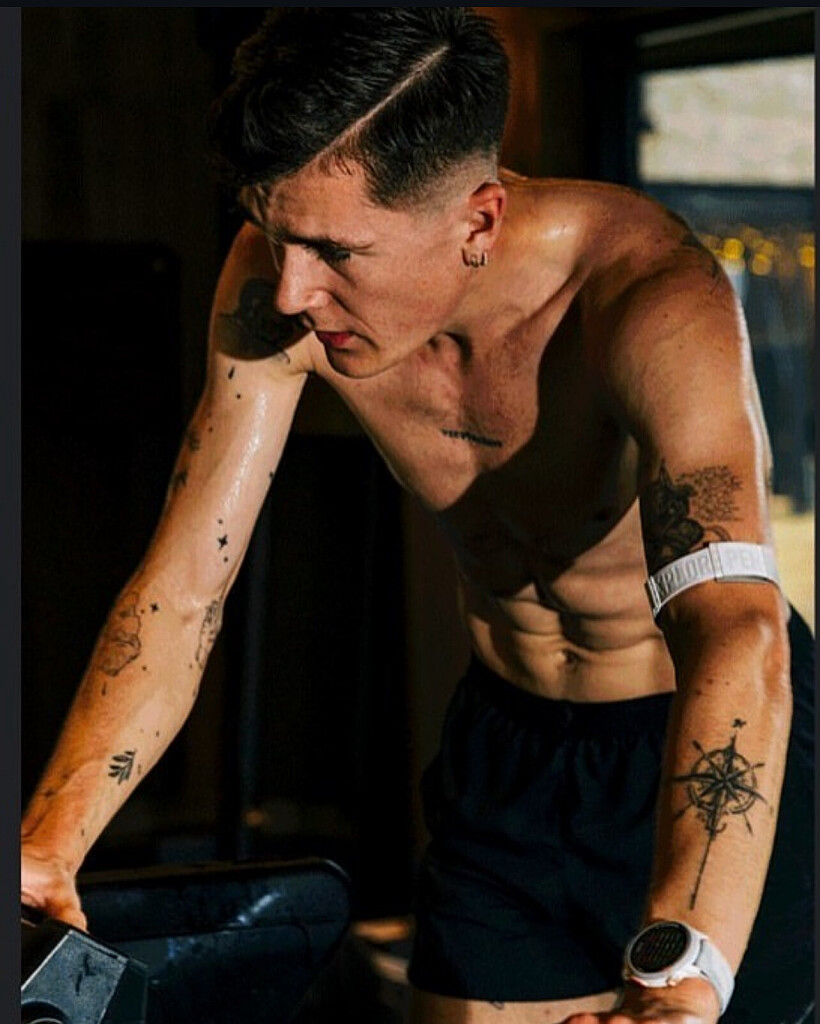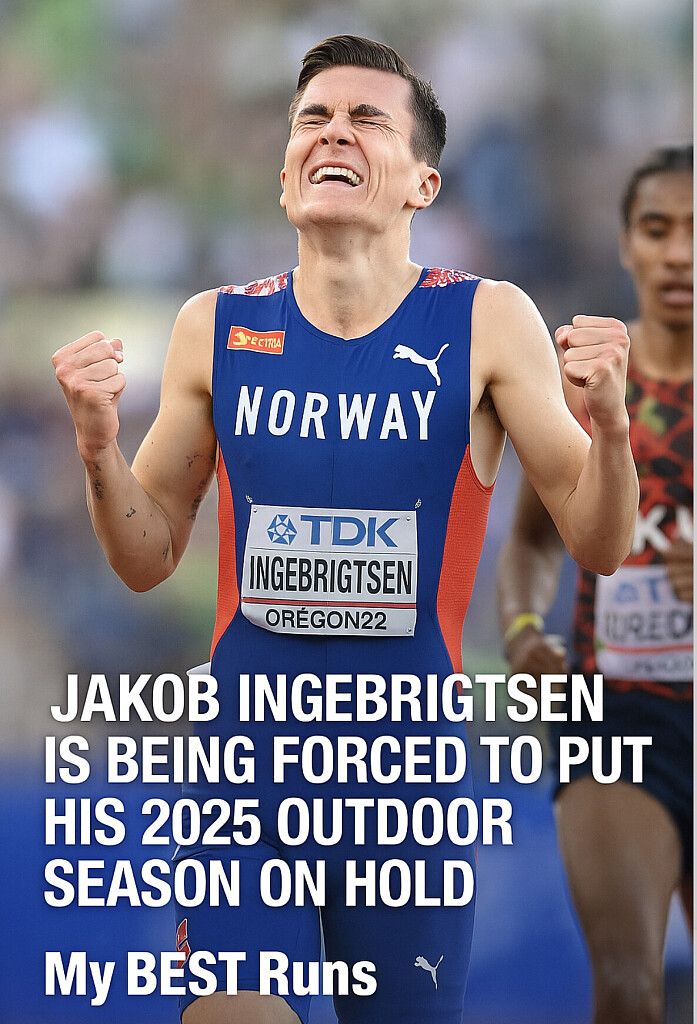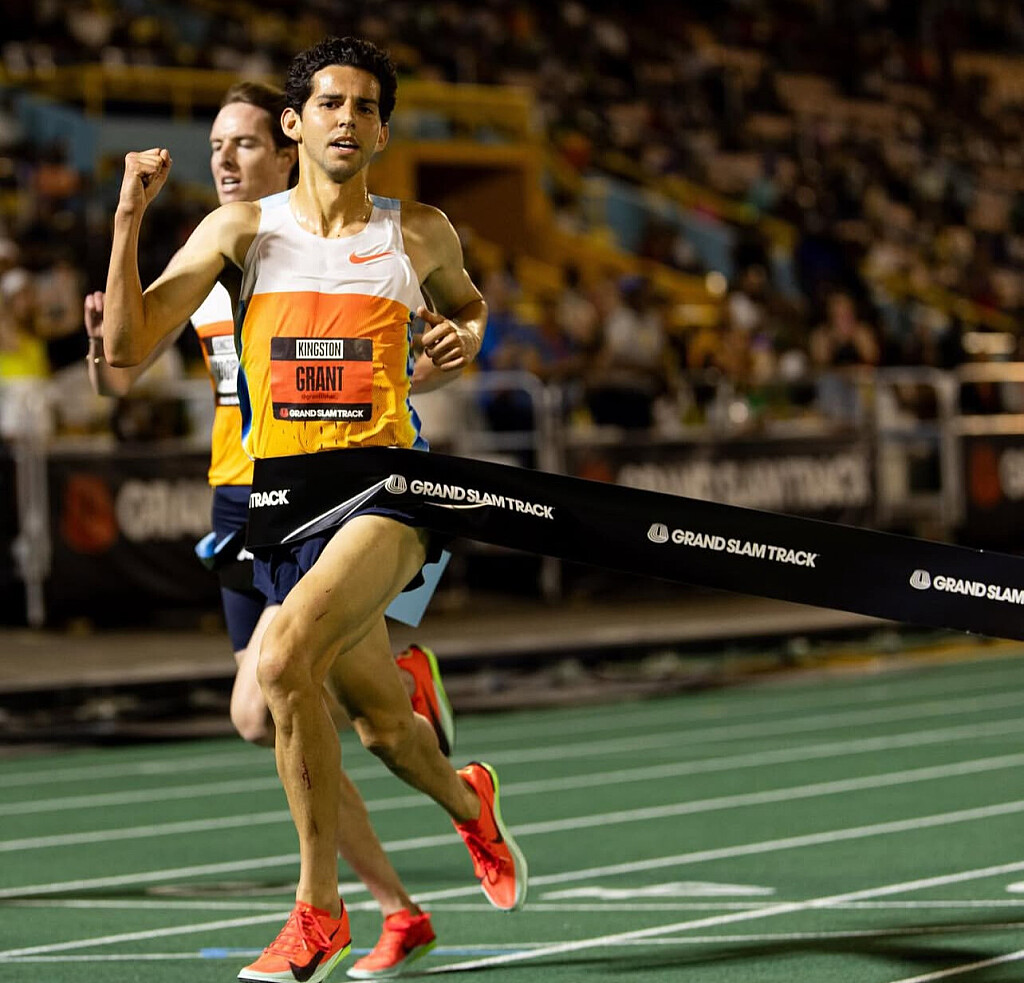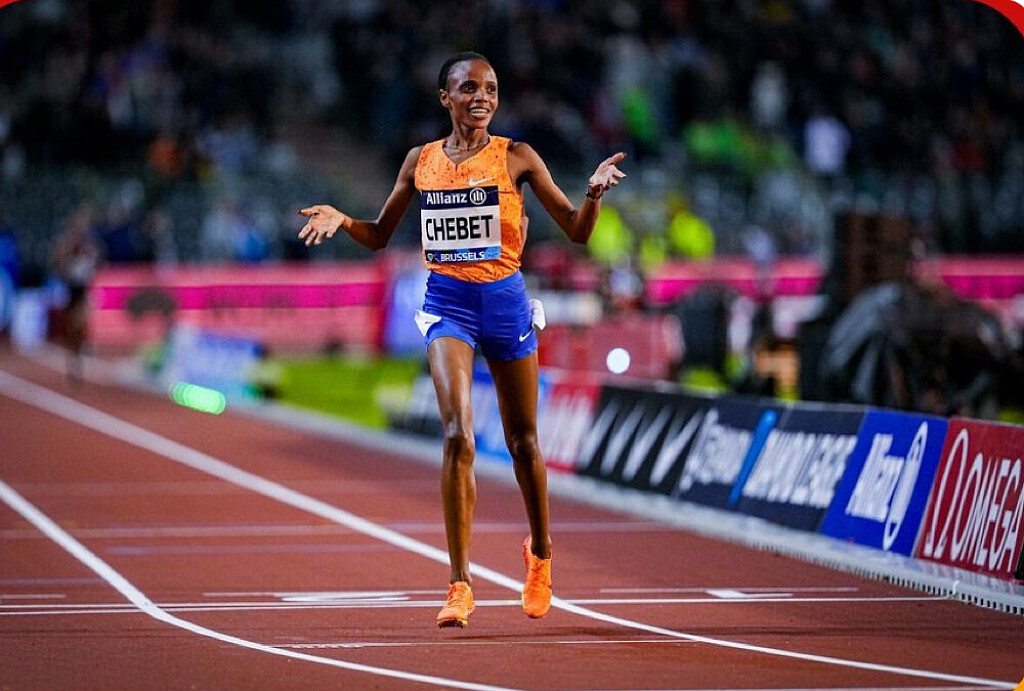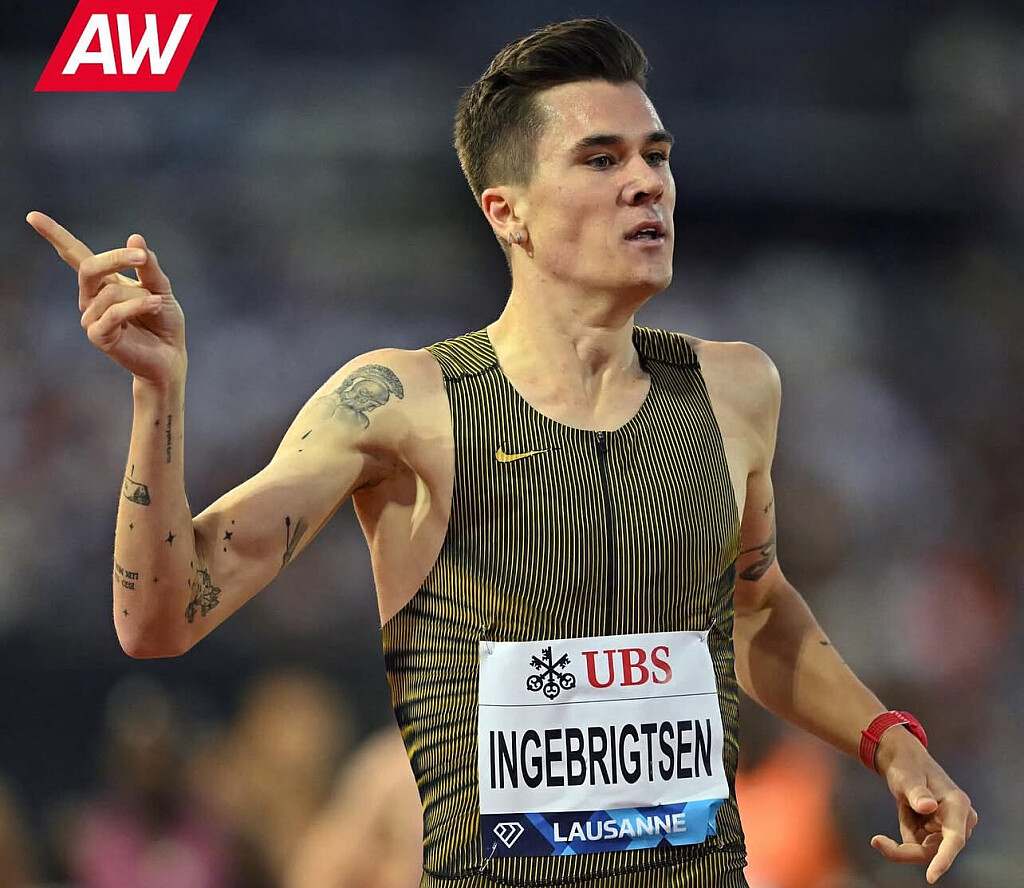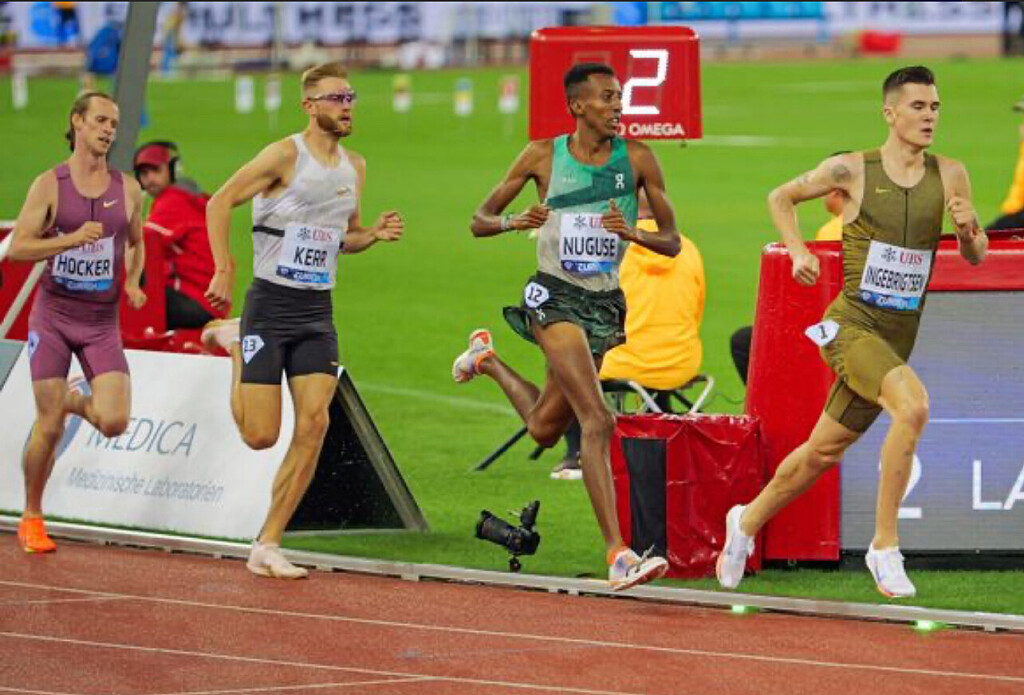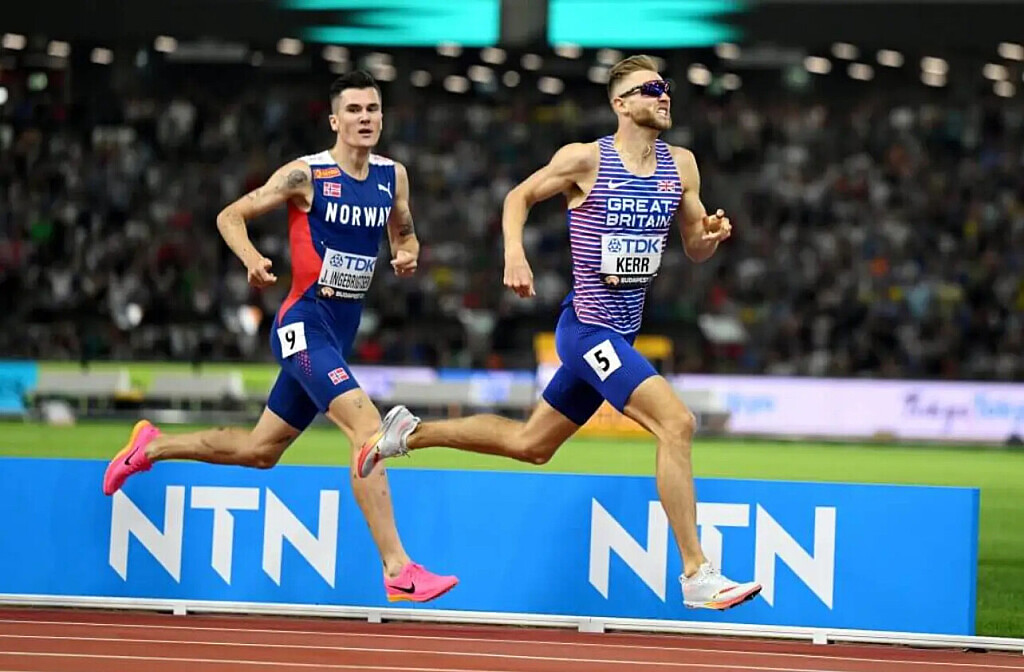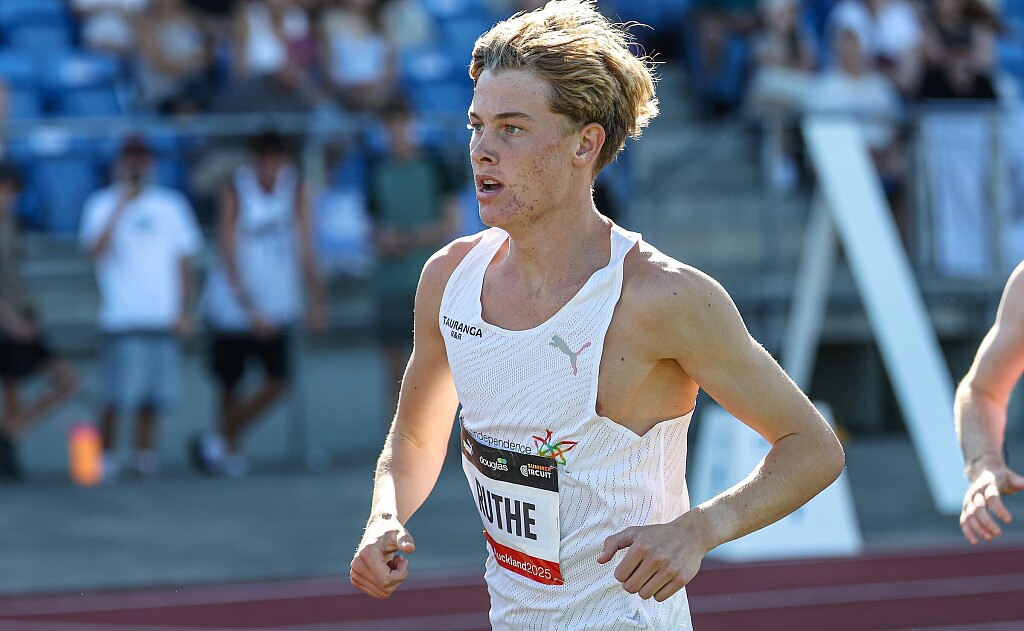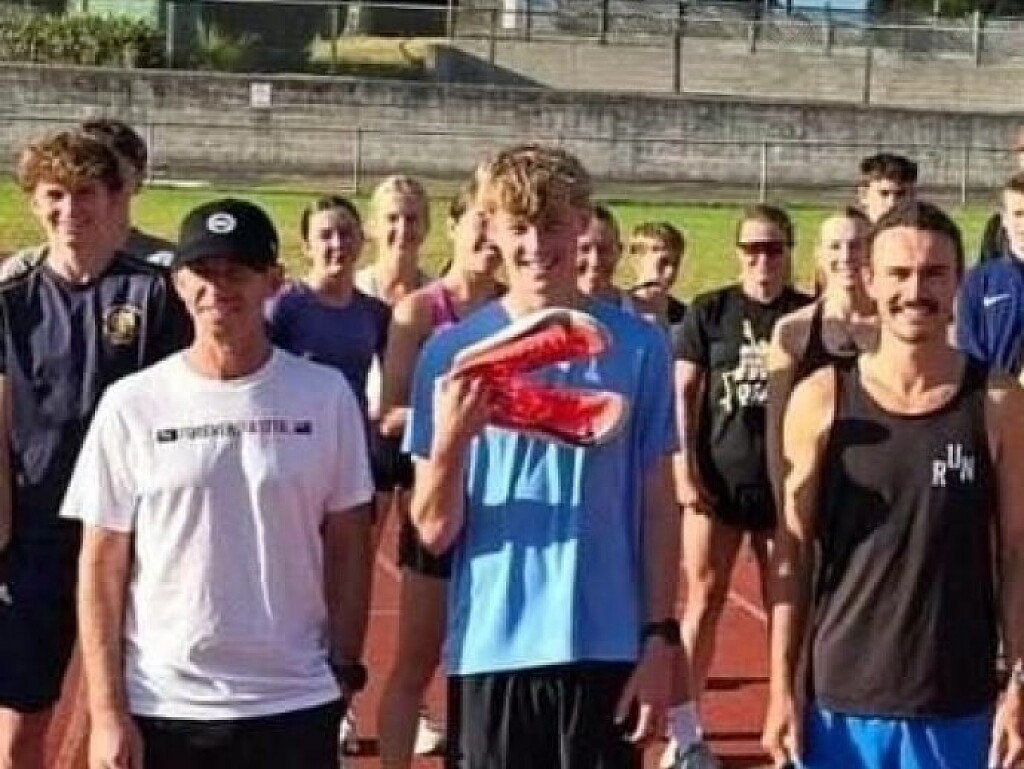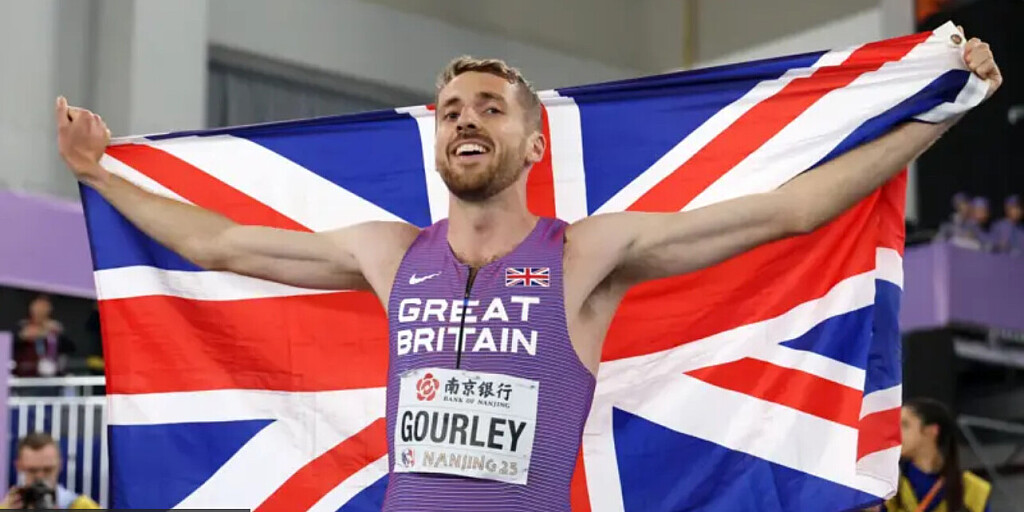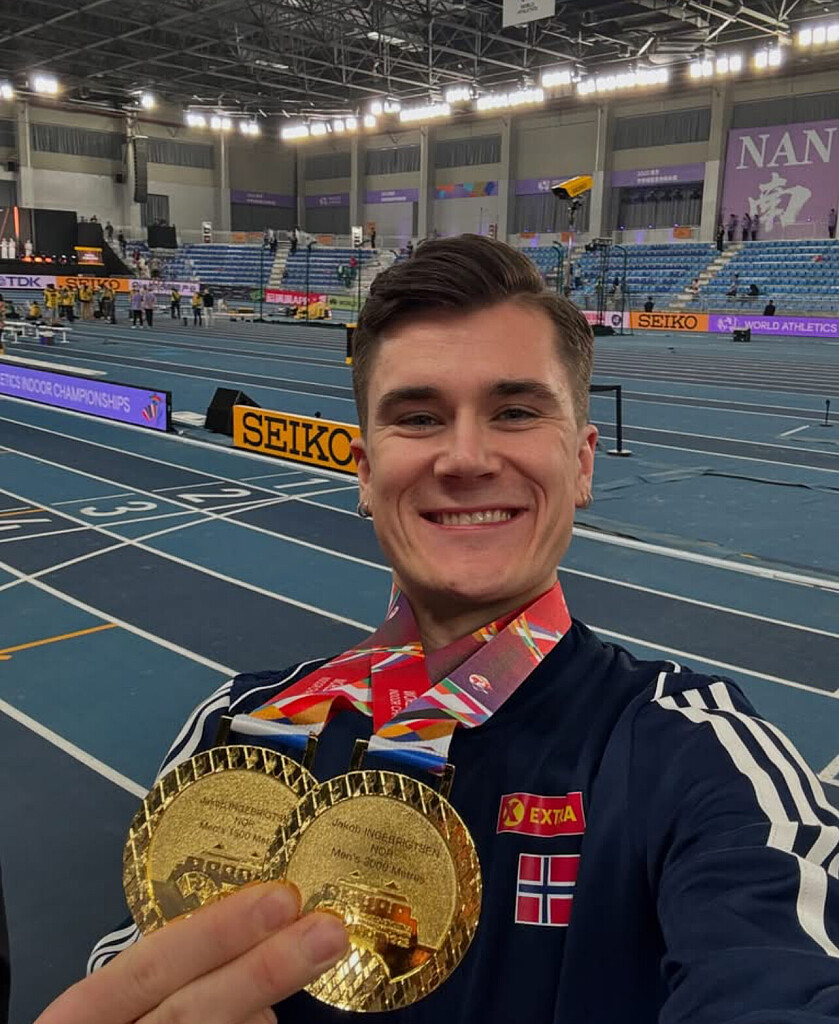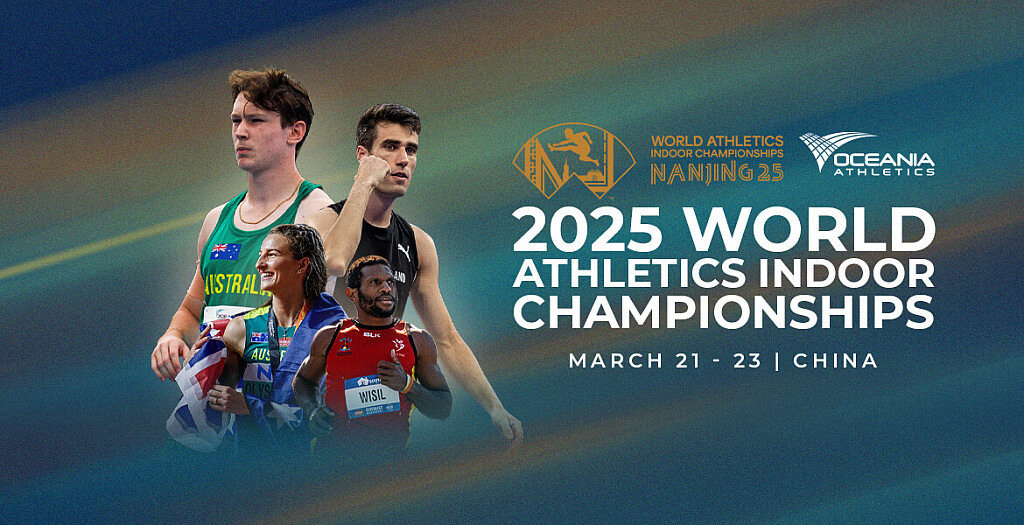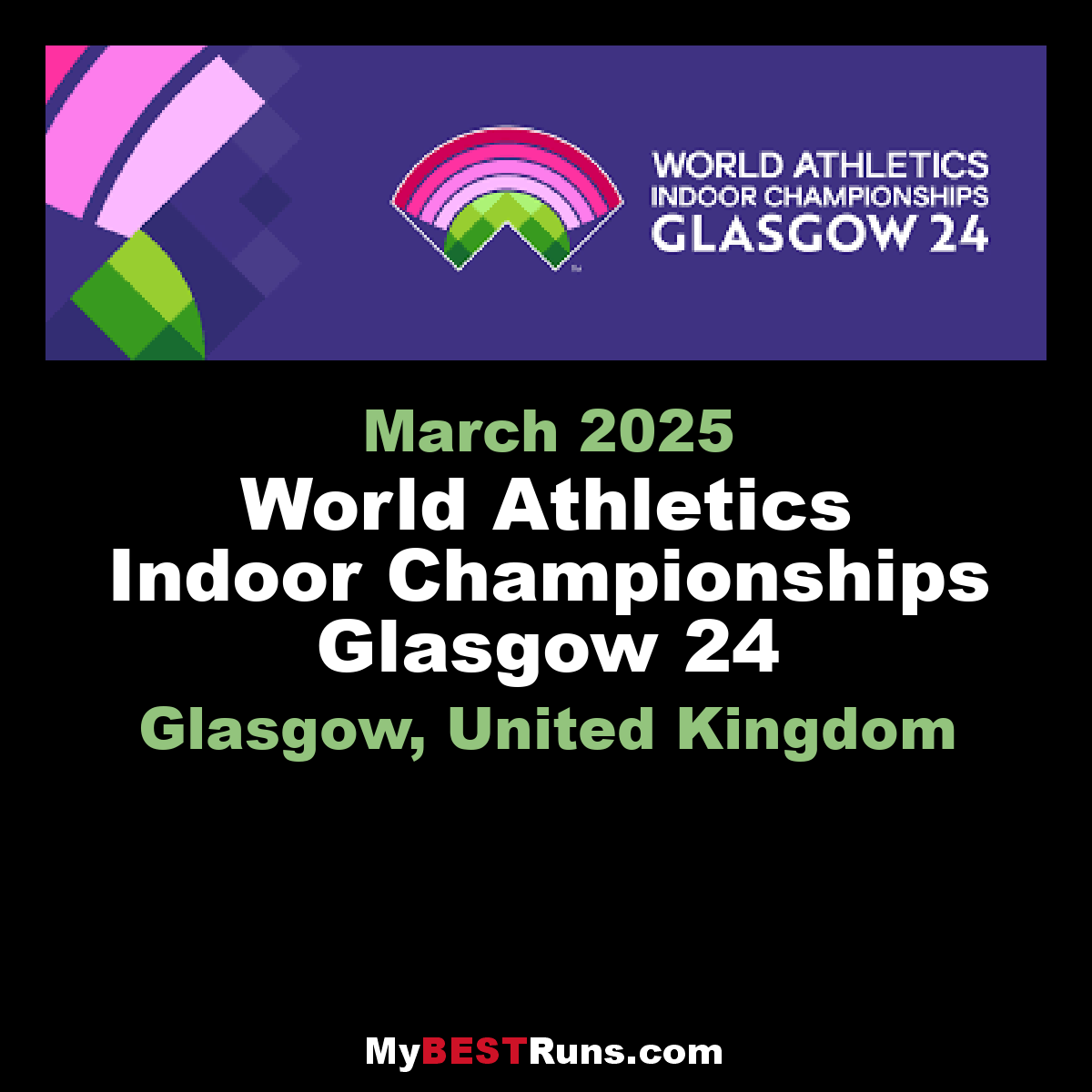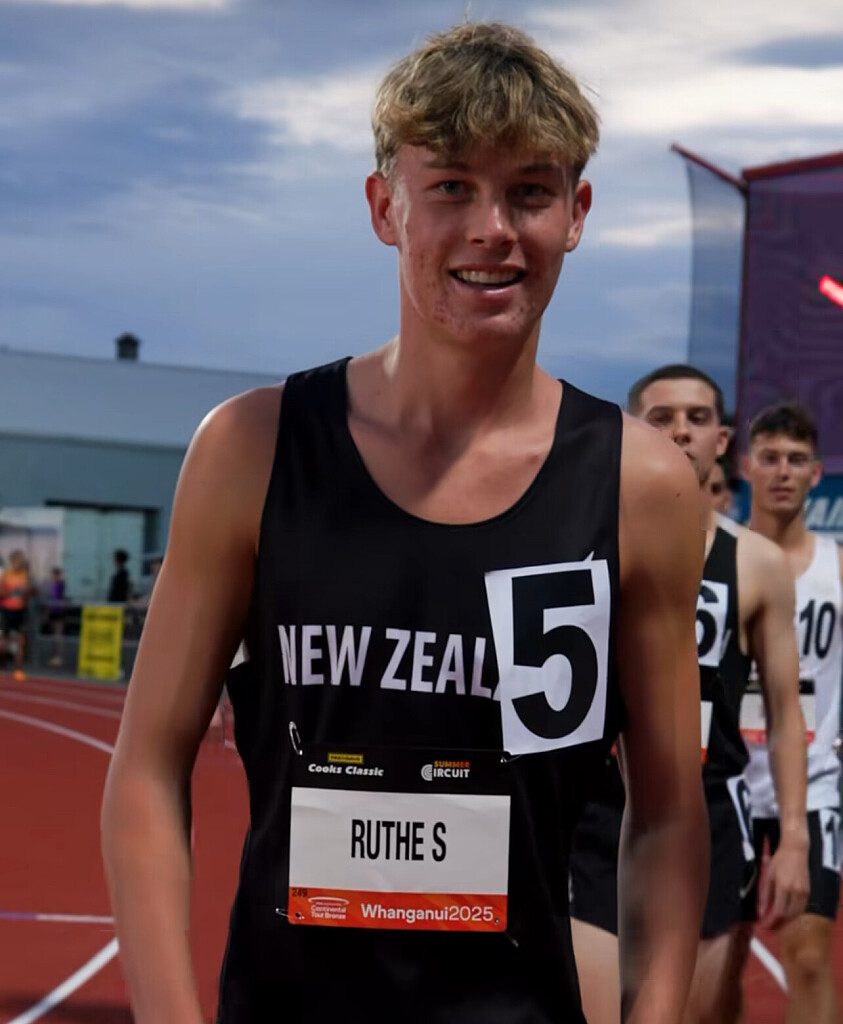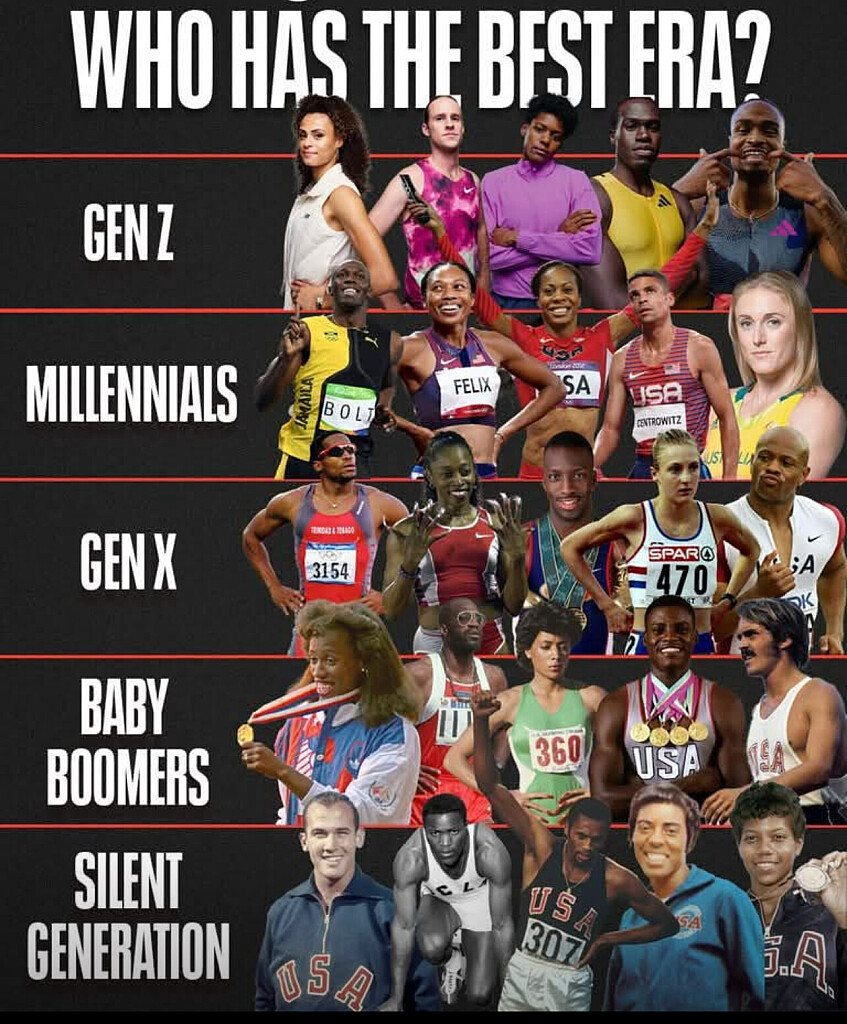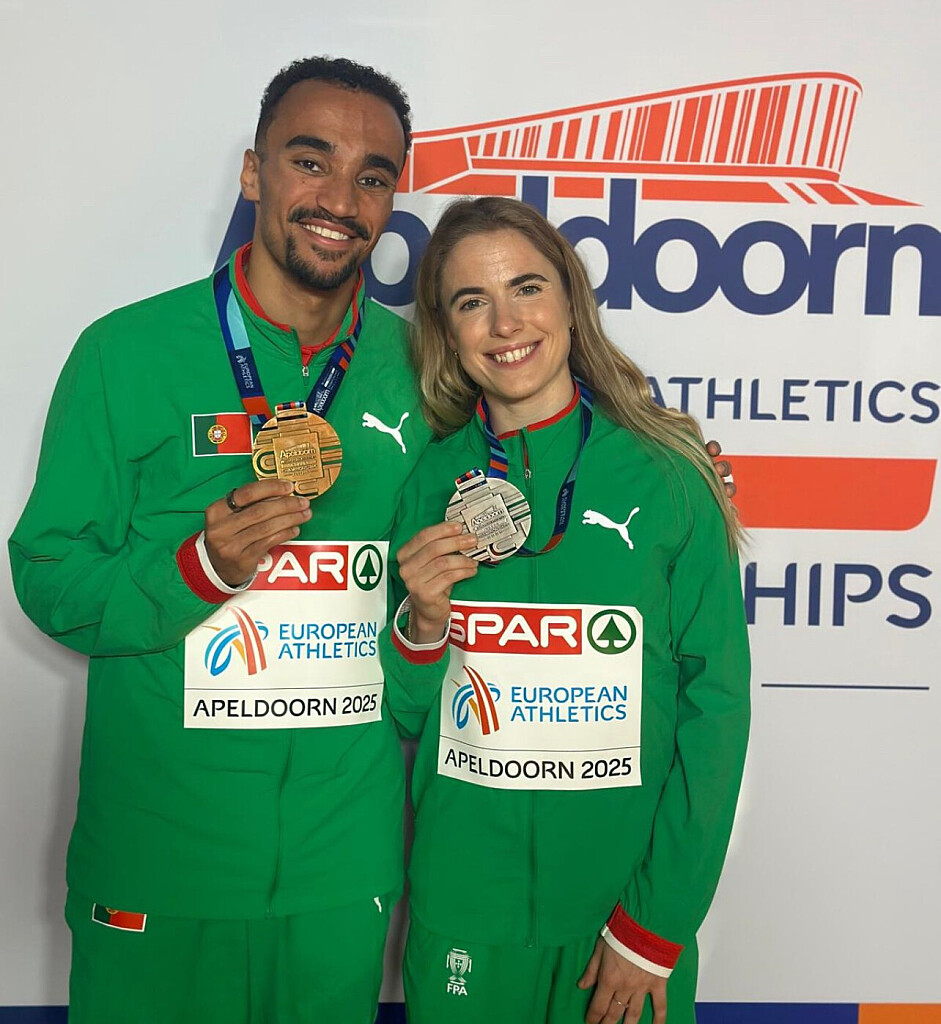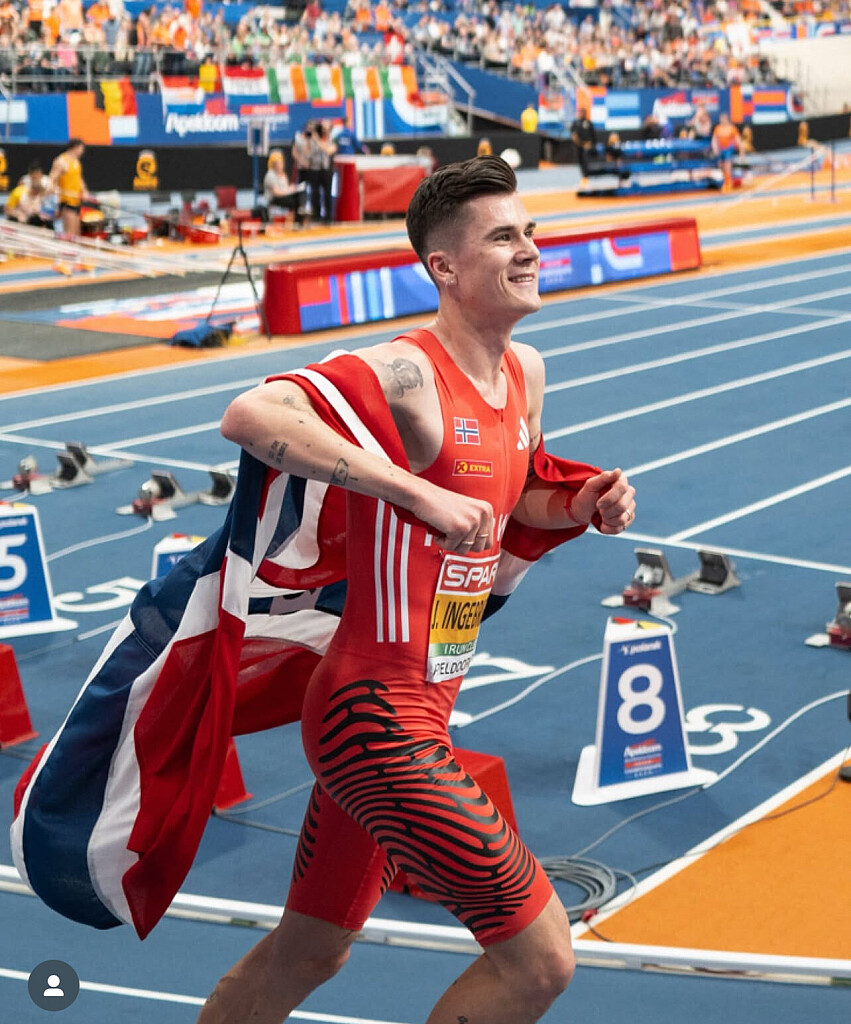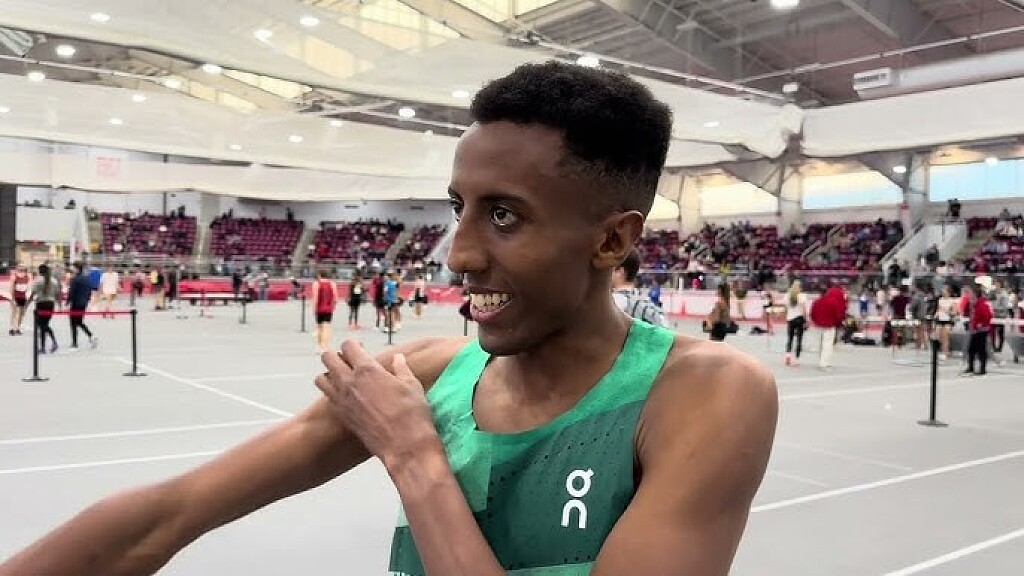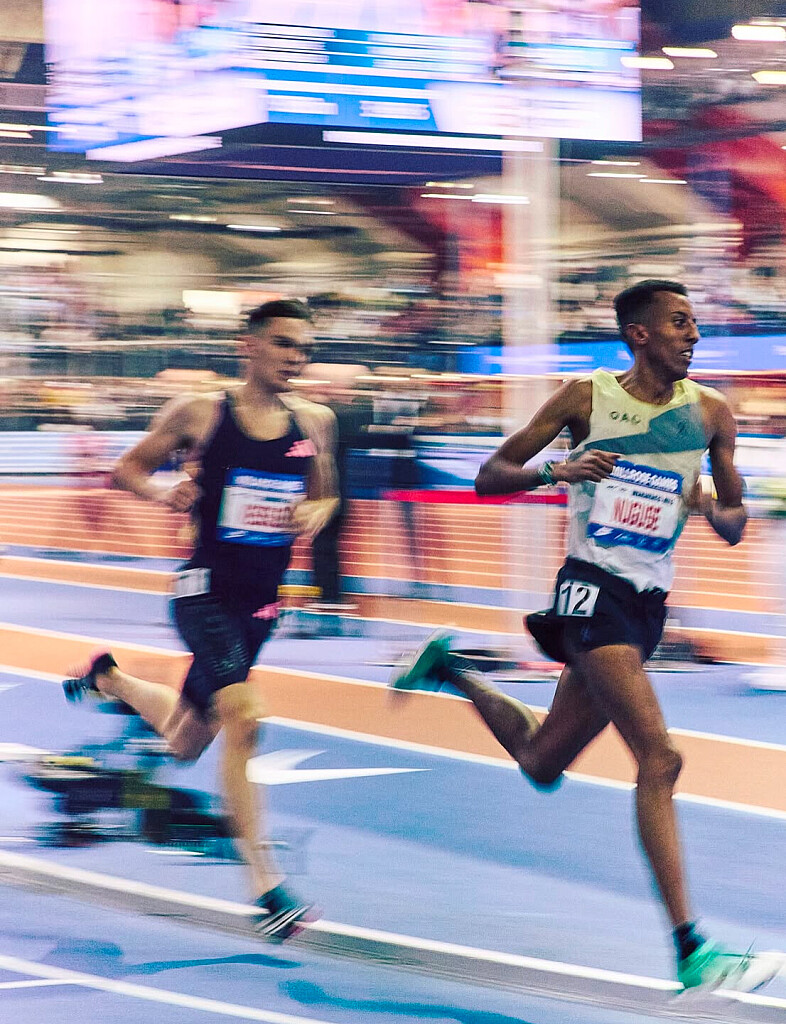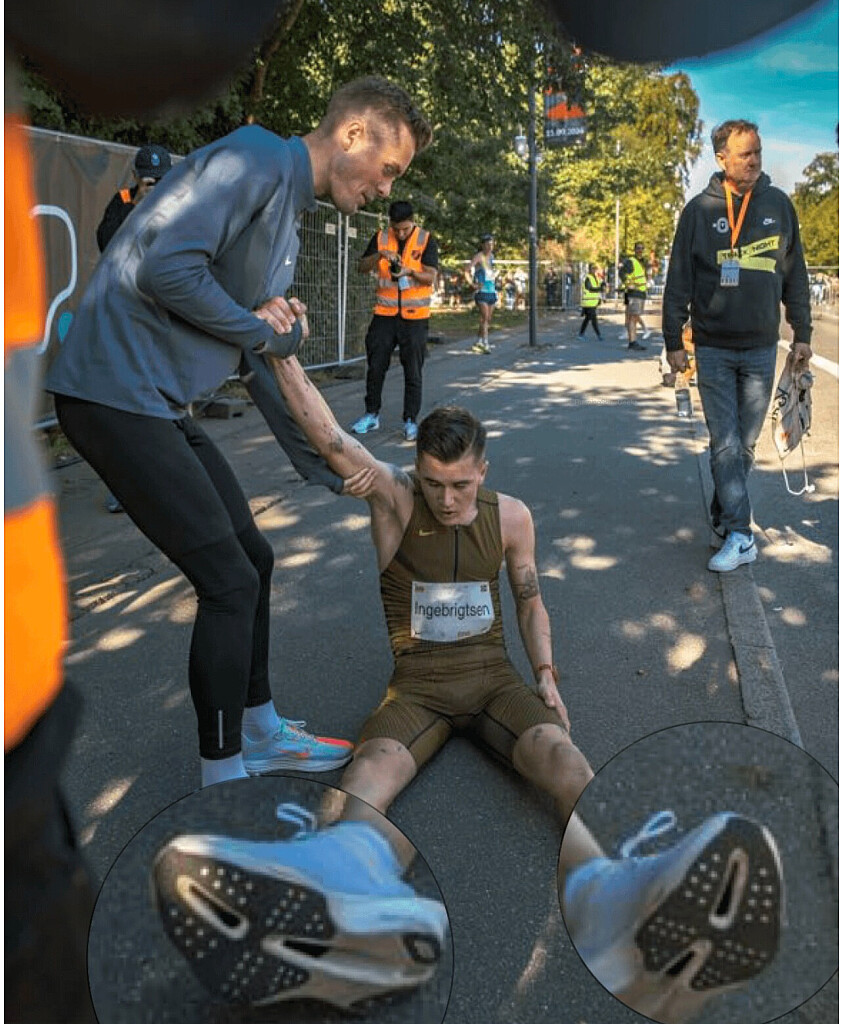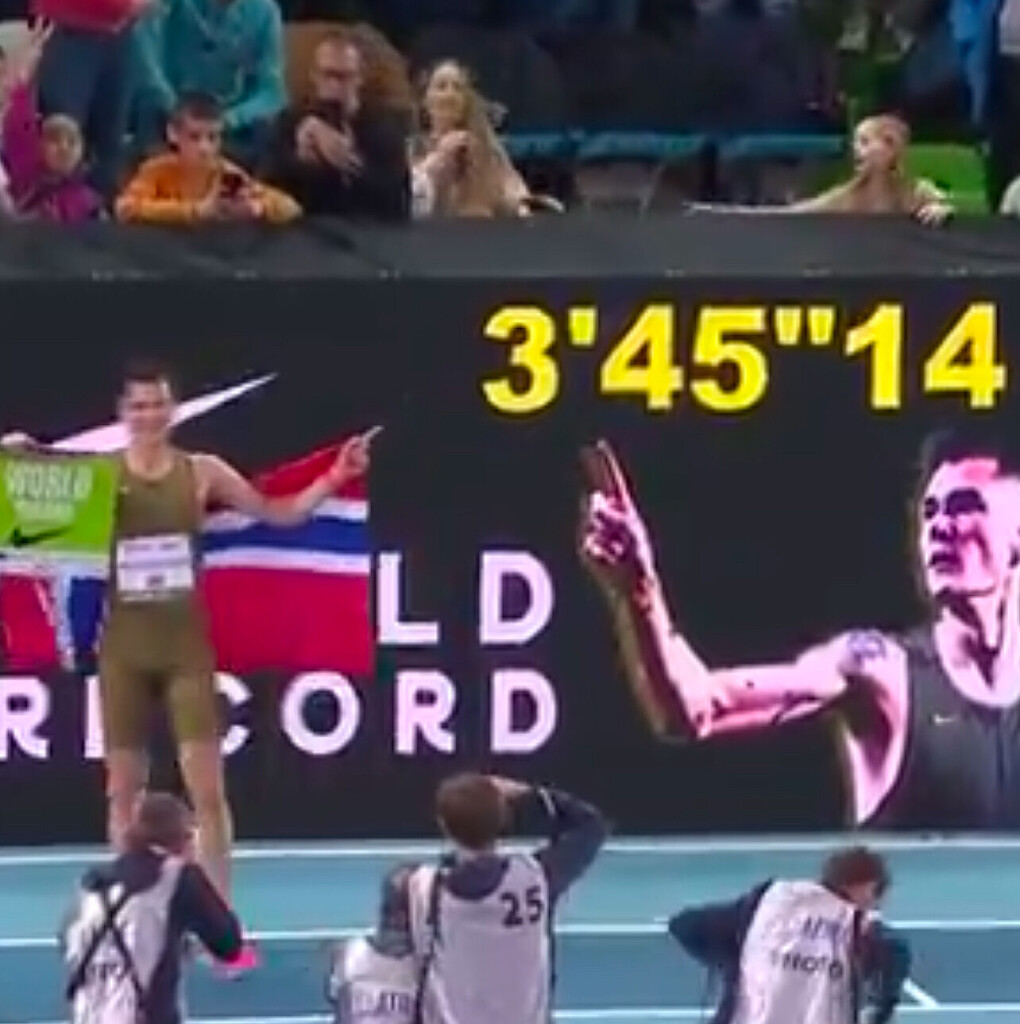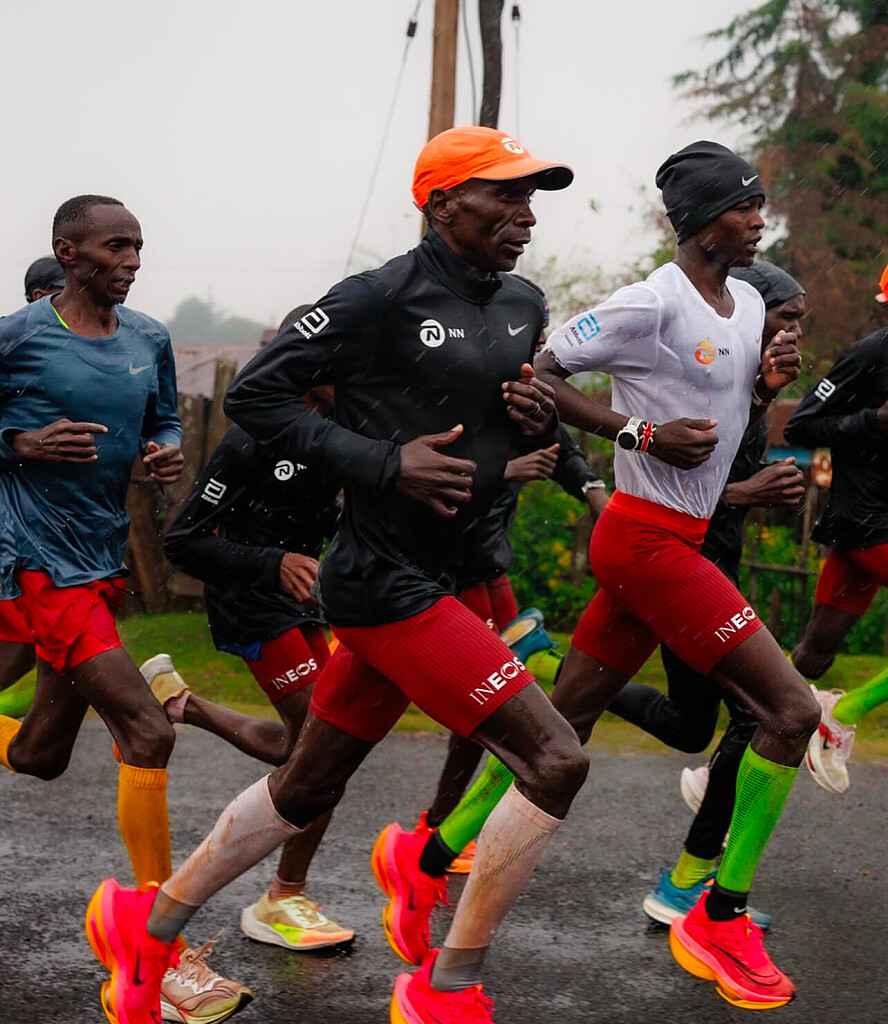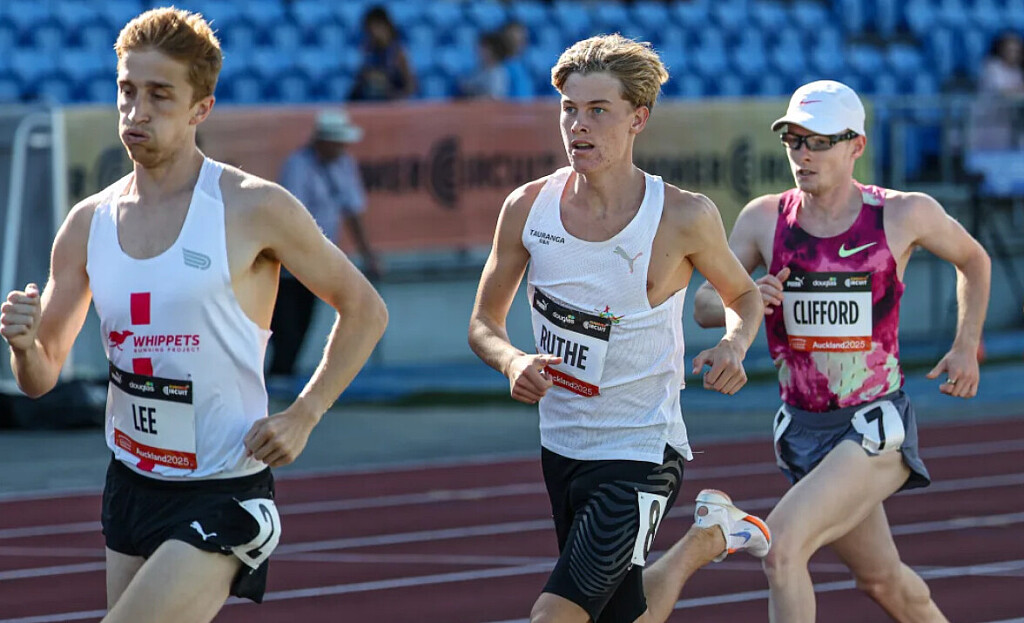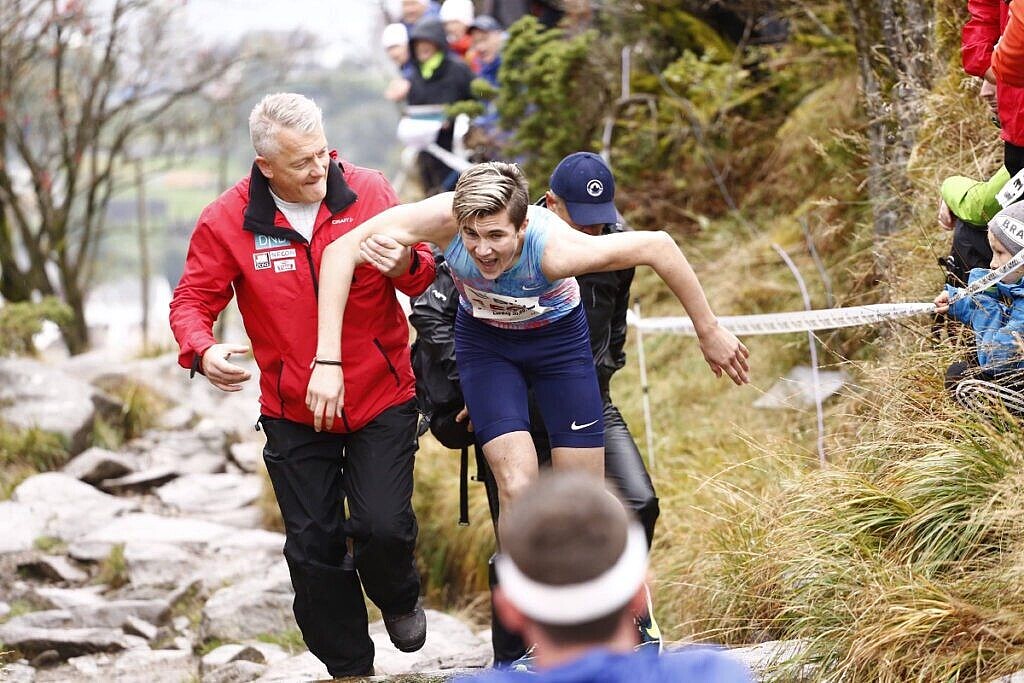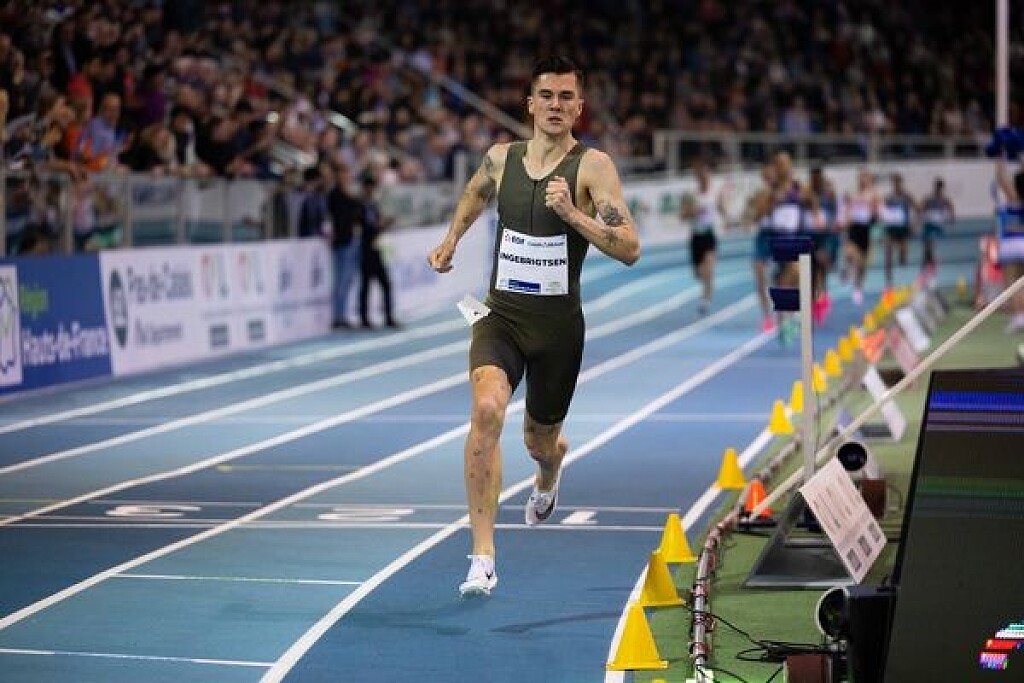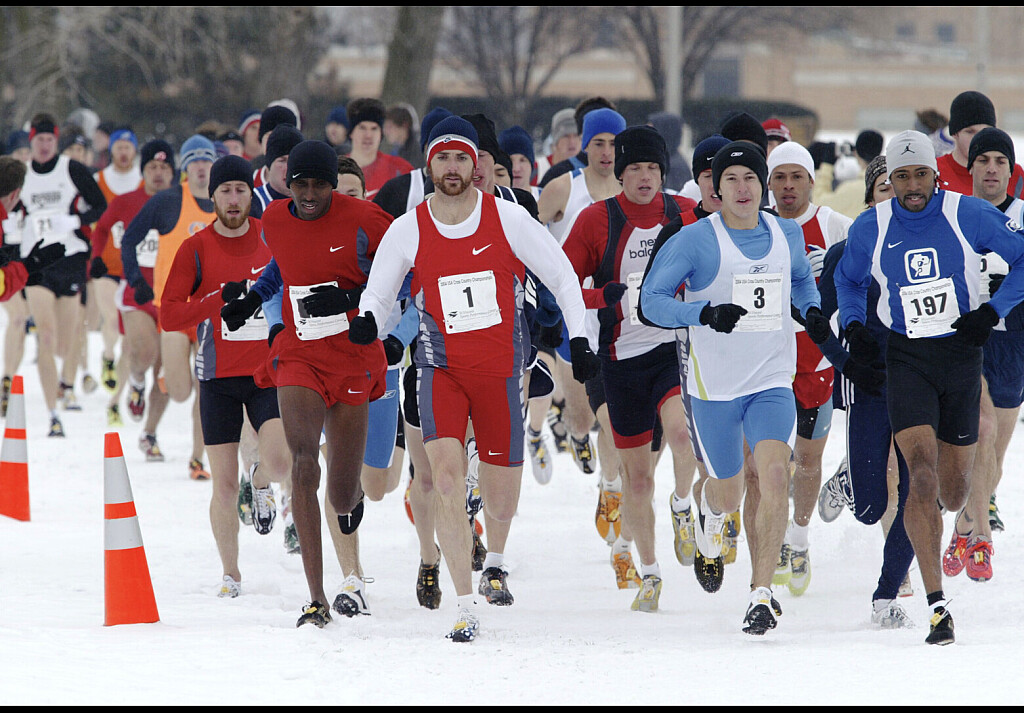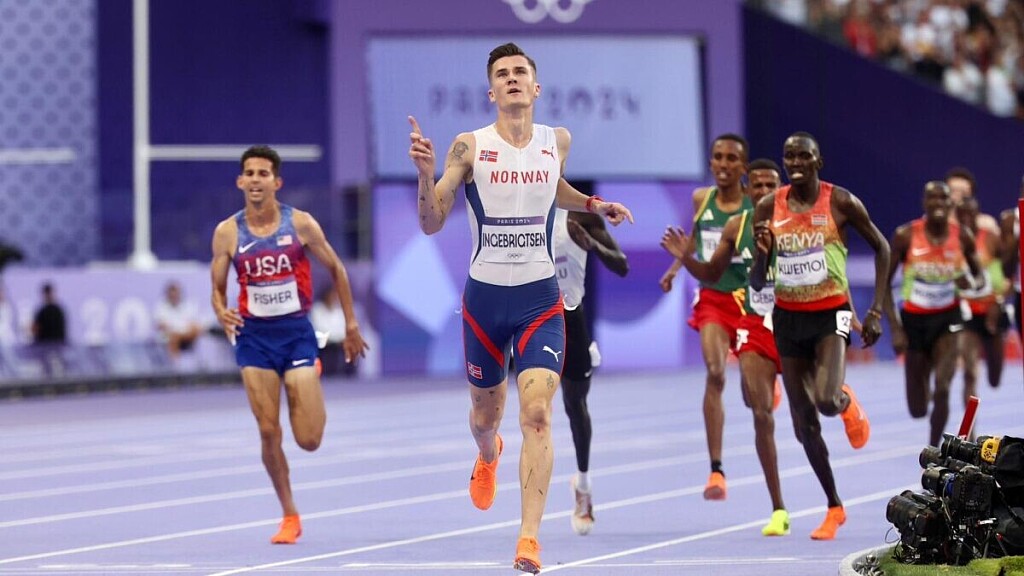Running News Daily
Running News Daily is edited by Bob Anderson. Send your news items to bob@mybestruns.com Advertising opportunities available. Train the Kenyan Way at KATA Kenya and Portugal owned and operated by Bob Anderson. Be sure to catch our movie A Long Run the movie KATA Running Camps and KATA Potato Farms - 31 now open in Kenya! https://kata.ke/
Index to Daily Posts · Sign Up For Updates · Run The World Feed
Articles tagged #Jakob Ingebrigtsen
Today's Running News
Jakob Ingebrigtsen Has His Eyes on Three World Records in 2026
Norwegian superstar Jakob Ingebrigtsen is already looking ahead to 2026 with one of the boldest ambitions in track and field — to break world records in the 1500 meters, the mile, and the 5000 meters.
In an interview shared by Chris Chavez on X (formerly Twitter), Ingebrigtsen revealed his mindset and meticulous approach to choosing the perfect time and place to chase history.
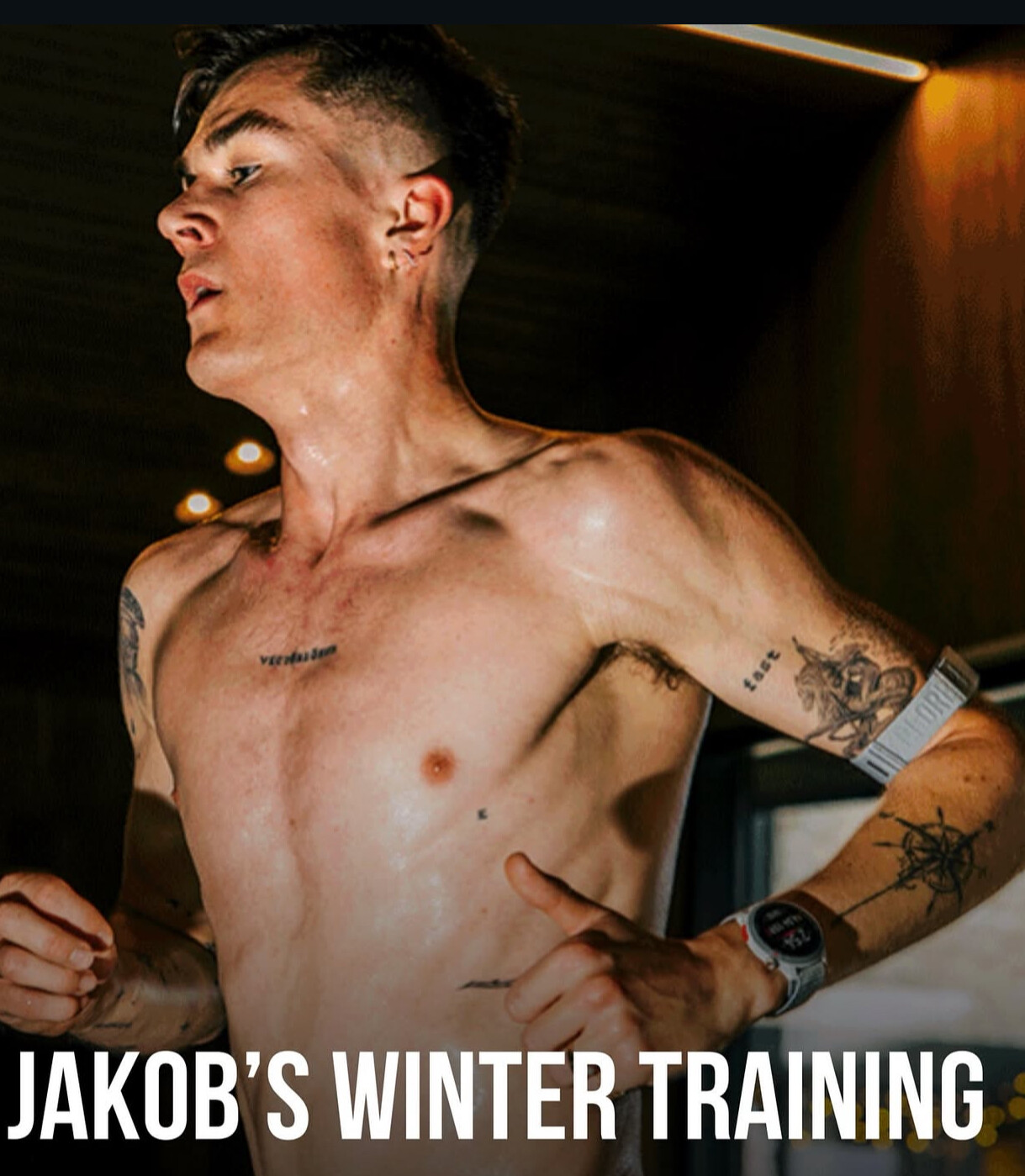
“I hope to break the world records in the 1500 meters, the mile, and the 5000 meters. If I can do that, I’ll be happy. I’ll have to pick out some meets and dates where I have the best chance to make a good attempt,” he told Norway’s VG.
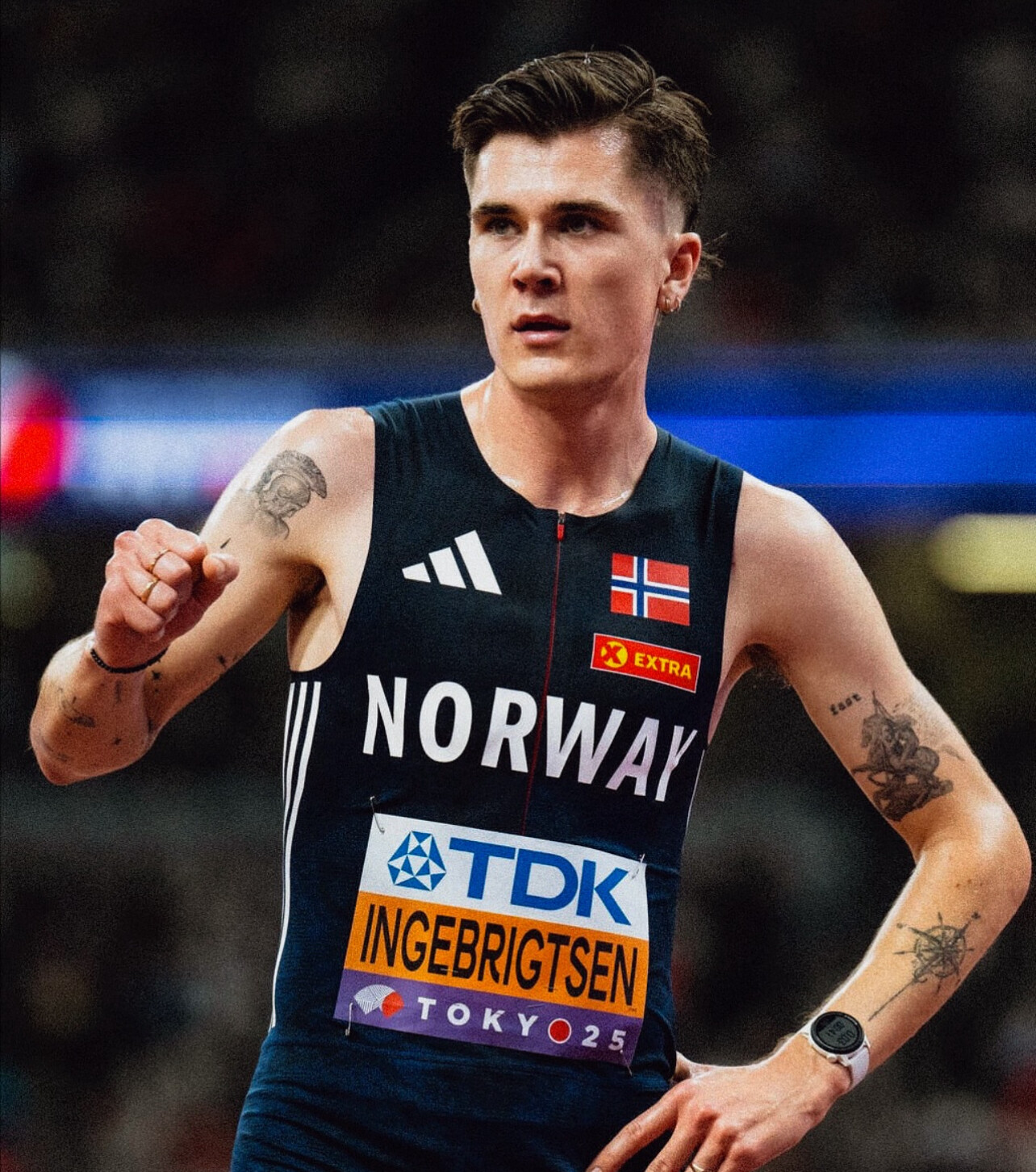
Ingebrigtsen and his wife are already mapping out potential race venues, with Monaco, Paris, Silesia, and Oslo among the leading candidates. Each of these meets has seen lightning-fast performances and could provide the ideal setting for record-breaking runs.
How he stacks up right now:
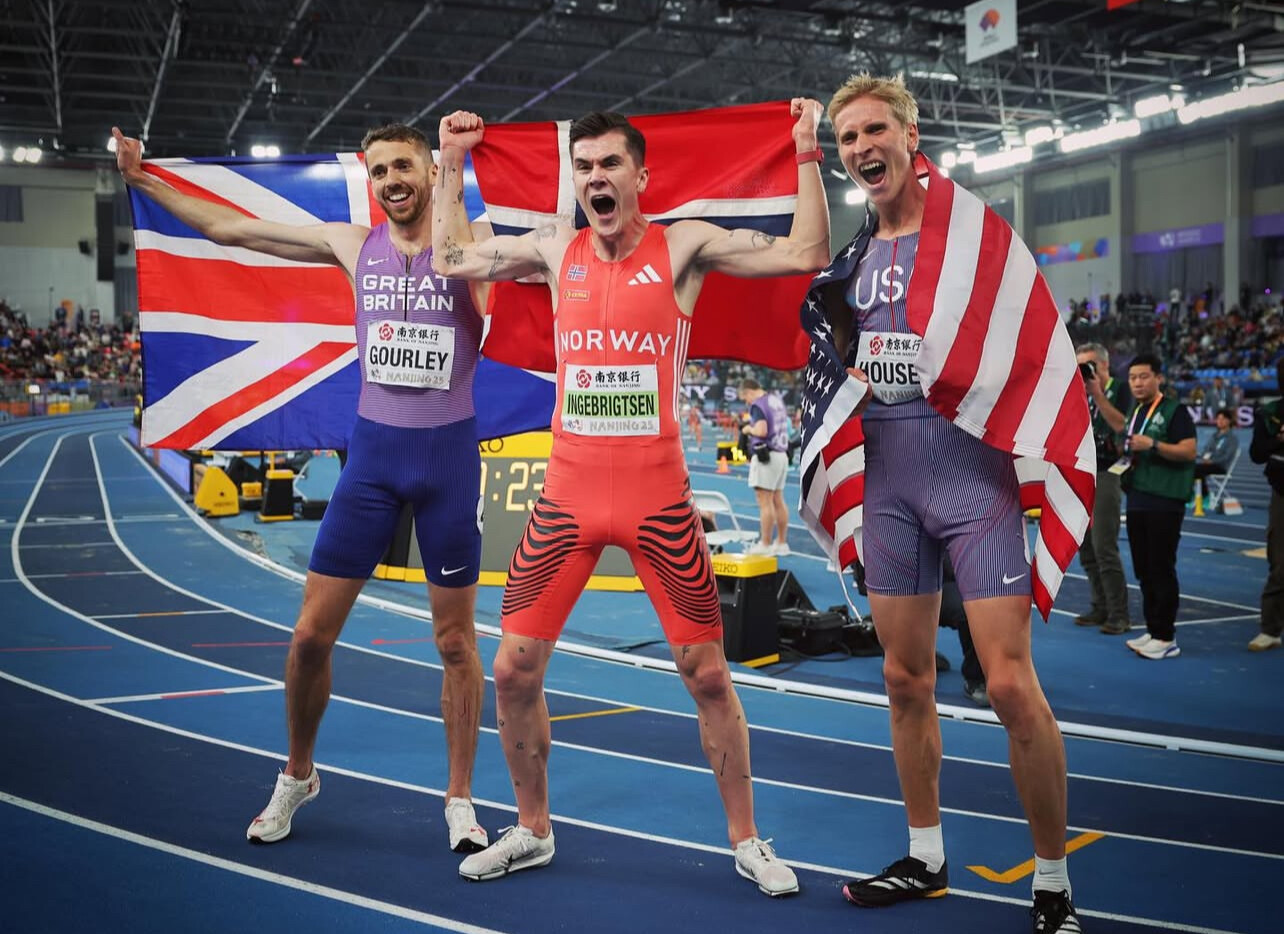
The world record for 1500 meters is 3:26.00, set by Hicham El Guerrouj in 1998. Ingebrigtsen’s personal best is 3:26.73.
The world record for the mile is 3:43.13, also held by El Guerrouj from 1999. Ingebrigtsen’s personal best is 3:43.73.
The world record for the 5000 meters is 12:35.36, set by Joshua Cheptegei in 2020. Ingebrigtsen’s personal best is 12:48.45.
While Ingebrigtsen’s personal bests are already within striking distance of both El Guerrouj’s legendary middle-distance marks and Cheptegei’s long-distance record, breaking all three in one season would be unprecedented.
A Legacy in Motion
At just 25, Ingebrigtsen has already cemented himself as one of the most dominant and versatile athletes in modern track history. From his Olympic gold to multiple World and European Championship titles, his consistency and competitiveness have made him the face of a new generation of runners.
However, much of the 2025 season was disrupted by injury. An Achilles tendon issue forced him to withdraw from major meets and limited his racing calendar. Despite the setback, his ambition remains undimmed.
A sweep of these three world records would not only elevate his legacy but also redefine the limits of what’s possible across middle and long-distance running.
As he carefully plans his record attempts, the world will be watching — because when Jakob Ingebrigtsen sets his mind on something, history often follows.
by Boris Baron
Login to leave a comment
RUNFEST 2026: Jakob Ingebrigtsen’s Hometown to Host Global Running Celebration
A brand-new running festival is set to light up the streets of Sandnes, Norway — the hometown of Olympic champion Jakob Ingebrigtsen — next September. RUNFEST 2026, scheduled for September 24–26, 2026, promises to unite the world’s best middle-distance stars with recreational runners of all ages and abilities.
With the slogan “Let’s run and have fun – together,” the event will feature races over 1500m, 5km, 10km, and 21km, offering something for everyone from speed specialists to long-distance road warriors.
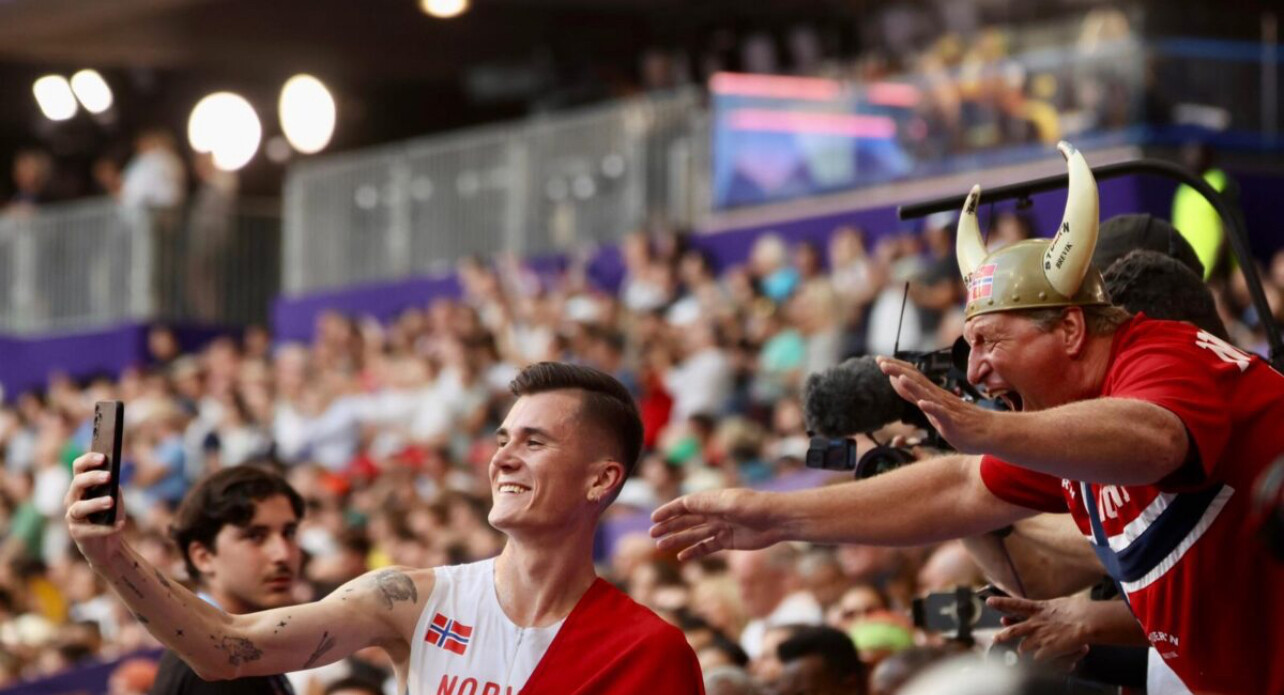
“This is a dream that my brothers and I have had for a long time,” Ingebrigtsen shared. “Runfest should be a celebration of the joy of running, both for young and old. It will be a street run festival and a community festival where the world’s best runners are part of the show, but where everyone can participate — both recreational runners and those with lots of experience.”
Sandnes, located in Norway’s scenic Rogaland County, is known for its vibrant athletics culture, and with the Ingebrigtsen family behind the event, RUNFEST 2026 is already attracting global attention. Organizers plan to create an electric atmosphere with top-tier racing, live entertainment, and community celebrations throughout the three-day festival.
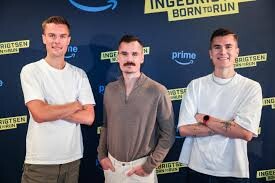
Whether you’re chasing a personal best, running your first race, or just soaking up the unique blend of elite sport and community spirit, RUNFEST 2026 aims to be an unforgettable experience — a chance to share the roads with champions while celebrating the universal joy of running.
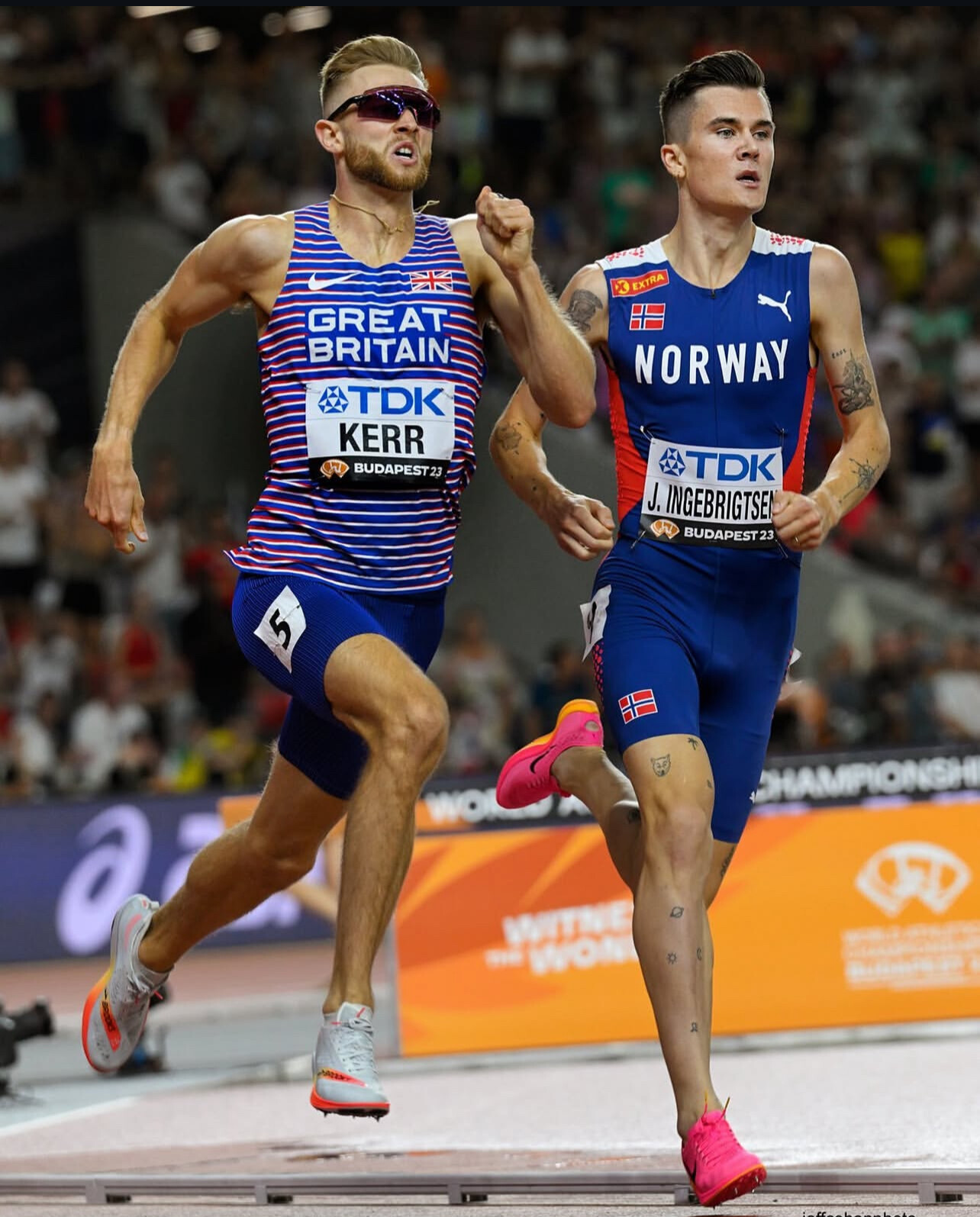
by Boris Baron
Login to leave a comment
A guide to the World Athletics Championships in Tokyo
Thousands of the world’s best athletes will head to Japan in September for the World Athletics Championships Tokyo 25.
The 20th edition of this prestigious competition will star more than 2000 athletes from some 200 countries as they compete for medals across 49 events during nine days of action from 13-21 September.
Which events are contested at the World Athletics Championships?
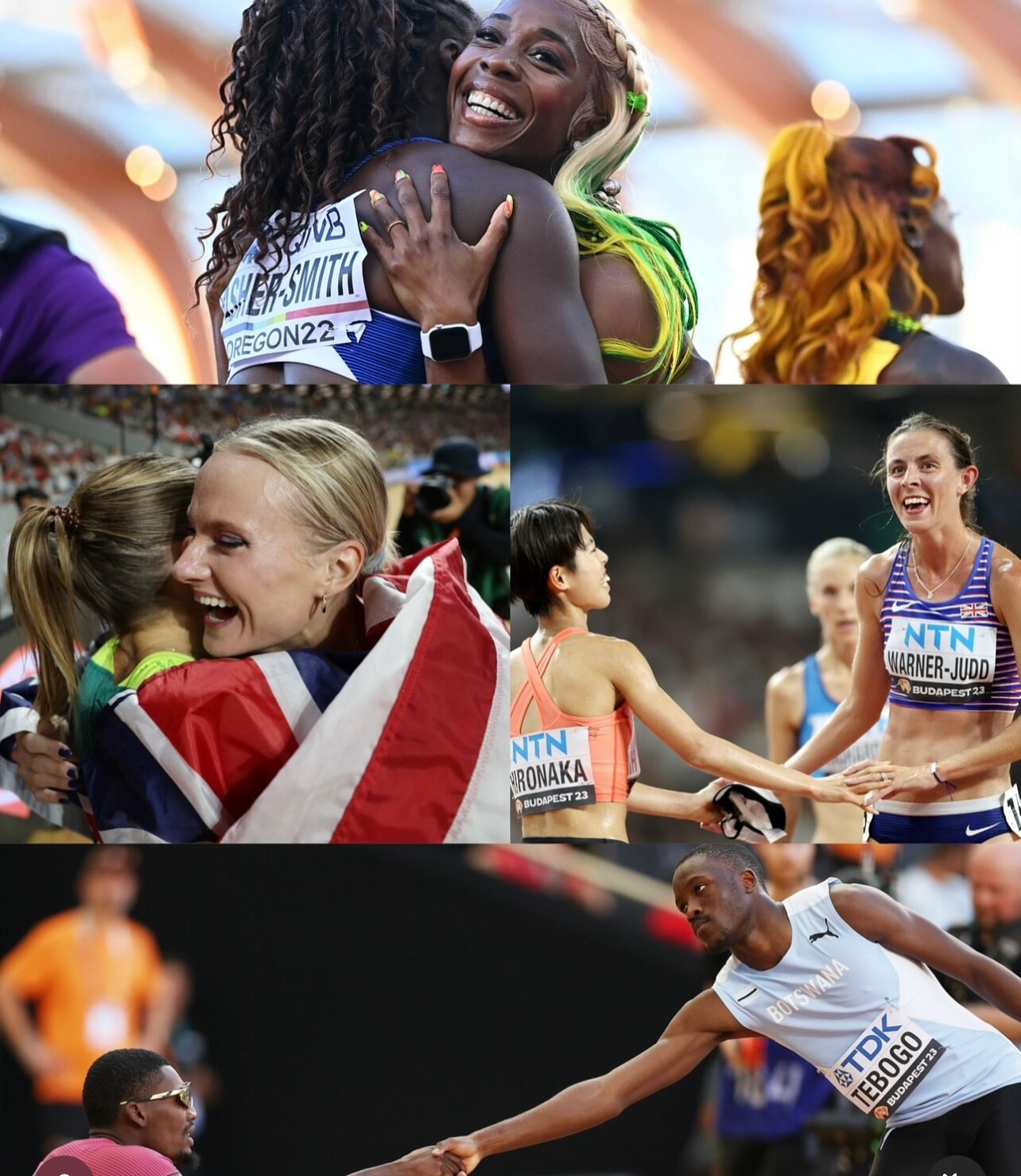
There are 49 events on the programme for the World Athletics Championships Tokyo 25, meaning 147 medals will be awarded across the nine action-packed days of competition.
There are an equal number of disciplines for women and men – 24 each and one mixed event.
The disciplines are:
• 100m – women and men• 200m – women and men• 400m – women and men• 800m – women and men• 1500m – women and men• 5000m – women and men• 10,000m – women and men• Marathon – women and men• 3000m steeplechase – women and men• 100m hurdles – women• 110m hurdles – men• 400m hurdles – women and men• heptathlon – women• decathlon – men• high jump – women and men• pole vault – women and men• long jump – women and men• triple jump – women and men• shot put – women and men• discus – women and men• hammer – women and men• javelin – women and men• 20km race walk – women and men• 35km race walk – women and men• 4x100m relay – women and men• 4x400m relay – women, men and mixed
Learn more about the various events on our dedicated disciplines page.
How do athletes qualify and gain selection for the World Athletics Championships Tokyo 25?
The qualification system is based on a combination of entry standards and world rankings. The qualifying window for the marathon was 5 November 2023 until 4 May 2025. For the 10,000m, 20km race walk, 35km race walk, combined events and relays, the window runs from 25 February 2024 to 24 August 2025. For all other events, entry standards can be achieved from 1 August 2024 to 24 August 2025.
The World Athletics Relays Guangzhou 25 was a qualifying event for the relays, with the top 14 teams in each discipline securing their place at the World Championships.
The Road to Tokyo online tool is designed to help athletes, fans and media track the qualification process. Searchable by event, country and qualification status, the tool provides a real-time view of each event over the course of the qualification period.
The tool does not, and will not, indicate which athletes have been selected for entry by their member federation. Final entries will be published nearer to the time of the World Championships.
Will athletes win prize money?
Individual athletes and relay teams will win prize money at the World Athletics Championships Tokyo 25. There is a total prize money pot of US$8,498,000.
Individuals1st US$70,0002nd US$35,0003rd US$22,0004th US$16,0005th US$11,0006th US$70007th US$60008th US$5000
Teams1st US$80,0002nd US$40,0003rd US$20,0004th US$16,0005th US$12,0006th US$80007th US$60008th US$4000
There is also a world record bonus of US$100,000.
Which athletes will be competing?
The world’s best athletes – including global champions and world record-holders – will be competing at the World Athletics Championships Tokyo 25.
The names of the athletes who will be there will not be certain until the qualifying window closes and nations select their teams.
Champions from the last edition of the World Championships in Budapest in 2023 include:
• Sweden’s world pole vault record-holder Mondo Duplantis• Kenya’s world 1500m record-holder Faith Kipyegon• USA’s double sprint champion Noah Lyles• Ukraine’s world high jump record-holder Yaroslava Mahuchikh• USA’s world shot put record-holder Ryan Crouser• Dutch Olympic and world 400m hurdles medallist Femke Bol• India’s Tokyo Olympic javelin champion Neeraj Chopra• Venezuela’s world triple jump record-holder Yulimar Rojas• Norwegian multiple world record-holder Jakob Ingebrigtsen• Japan’s Olympic javelin champion Haruka Kitaguchi
by World Athletics
Login to leave a comment
Is the King Really Back? Jakob Ingebrigtsen Sends a Silent Shockwave with One Reel
Just when the doubters were growing bold, Jakob Ingebrigtsen dropped a bombshell—without saying a word.
After months of uncertainty, Achilles rehab, and a string of absences from marquee meets like Oslo and the Prefontaine Classic, the Olympic champion and world record holder resurfaced not with a headline but with a treadmill video on Instagram. The caption? Just five words:

“Normal service has resumed ??.”
That was it. No interview. No press release. Just a smooth stride at full clip—and it was enough to send shockwaves through the sport.

Jakob, still only 23, hasn’t raced since winning the European Cross Country Championships last December. In May, he confirmed his withdrawal from the London Diamond League on July 20 due to lingering Achilles irritation. But now, with the 2025 World Championships in Tokyo looming, fans and rivals alike are decoding every frame of that 12-second clip. Was this just training? Or a warning shot?
The Comeback Equation
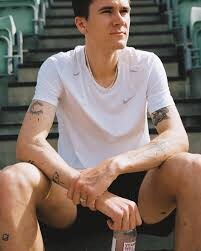
Jakob’s resume needs no embellishment:
Olympic 1500m champion (Tokyo 2021)
World 5000m champion (Paris 2023)
European record holder in the 1500m, mile, 3000m, and 5000m
World record holder in the 2000m and two miles
But since that shock defeat to Josh Kerr at the 2023 World Championships in Budapest—a tactical masterclass that broke Ingebrigtsen’s golden streak—Jakob has been unusually quiet. Injuries kept him from defending titles on the Diamond League circuit, while rivals like Kerr, Jake Wightman, and Yared Nuguse have stepped into the spotlight.
Now, that silence might be over.
Warning to Rivals?
The timing couldn’t be more dramatic. With Tokyo less than six weeks away, the treadmill reel could mark the start of Jakob’s final prep—if not for London, then for the Worlds. His message may have been short, but the implications are massive: he’s back in motion, the rhythm looks good, and if he toes the line in Tokyo, the narrative resets.
Rivals like Kerr, who’s coming off a strong win at the 2025 Bislett Games, won’t be underestimating him. Their rematch—if it happens—could be one of the defining moments of the championships.
Crown or Collision Course?
Is Jakob ready to reclaim his throne, or is he walking into the fiercest middle-distance rivalry we’ve seen in years? The answer is still unwritten—but one thing is clear:
Jakob Ingebrigtsen is not done. Not even close.
And now, the track world holds its breath.
by Boris Baron
Login to leave a comment
“I Could Have Run 3:24” — Hicham El Guerrouj Reflects on His Still-Unbroken 1500m World Record from July 14, 1998
On July 14, 1998, Moroccan middle-distance legend Hicham El Guerrouj delivered one of the most iconic performances in track and field history, running a stunning 3:26.00 in the 1500m at the Golden Gala meet in Rome—a world record that still stands 27 years later.
But according to El Guerrouj himself, that time could have been even faster with today’s advancements.

“With today’s technology—carbon-plated shoes, wavelight pacing, and modern training science—I could have run 3:24,” he recently told reporters.
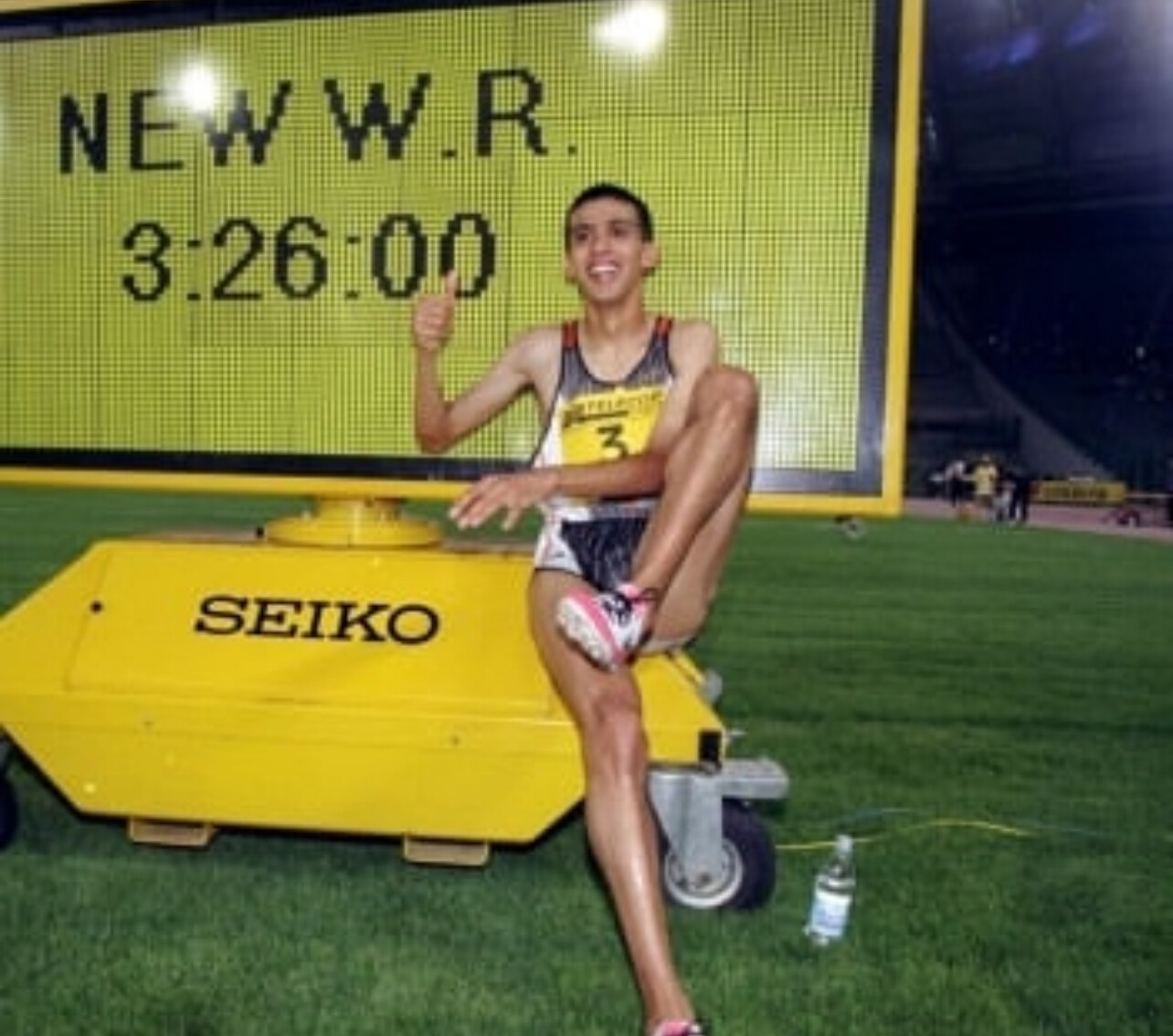
That bold claim holds weight when you look at the splits from that historic night. El Guerrouj covered the final 400m in 53.03 seconds and blazed through the last 300m in 39.66 seconds—numbers that rival top 800m finishes.
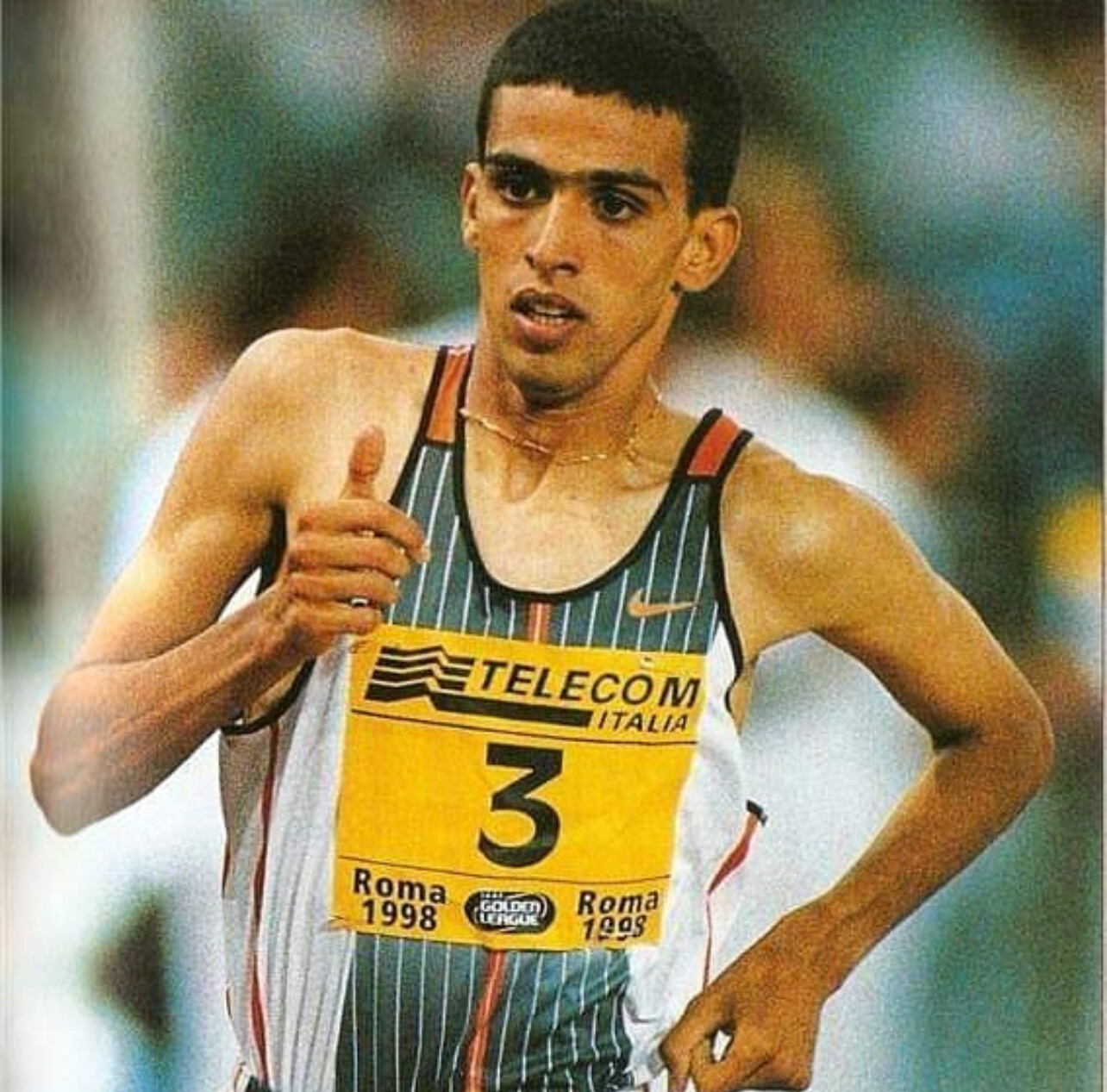
What makes this feat even more remarkable is that it was accomplished in an era before super spikes, pacer lights, and the finely tuned sports science that athletes now rely on. His performance was built on years of focused training, tactical brilliance, and unmatched closing speed.
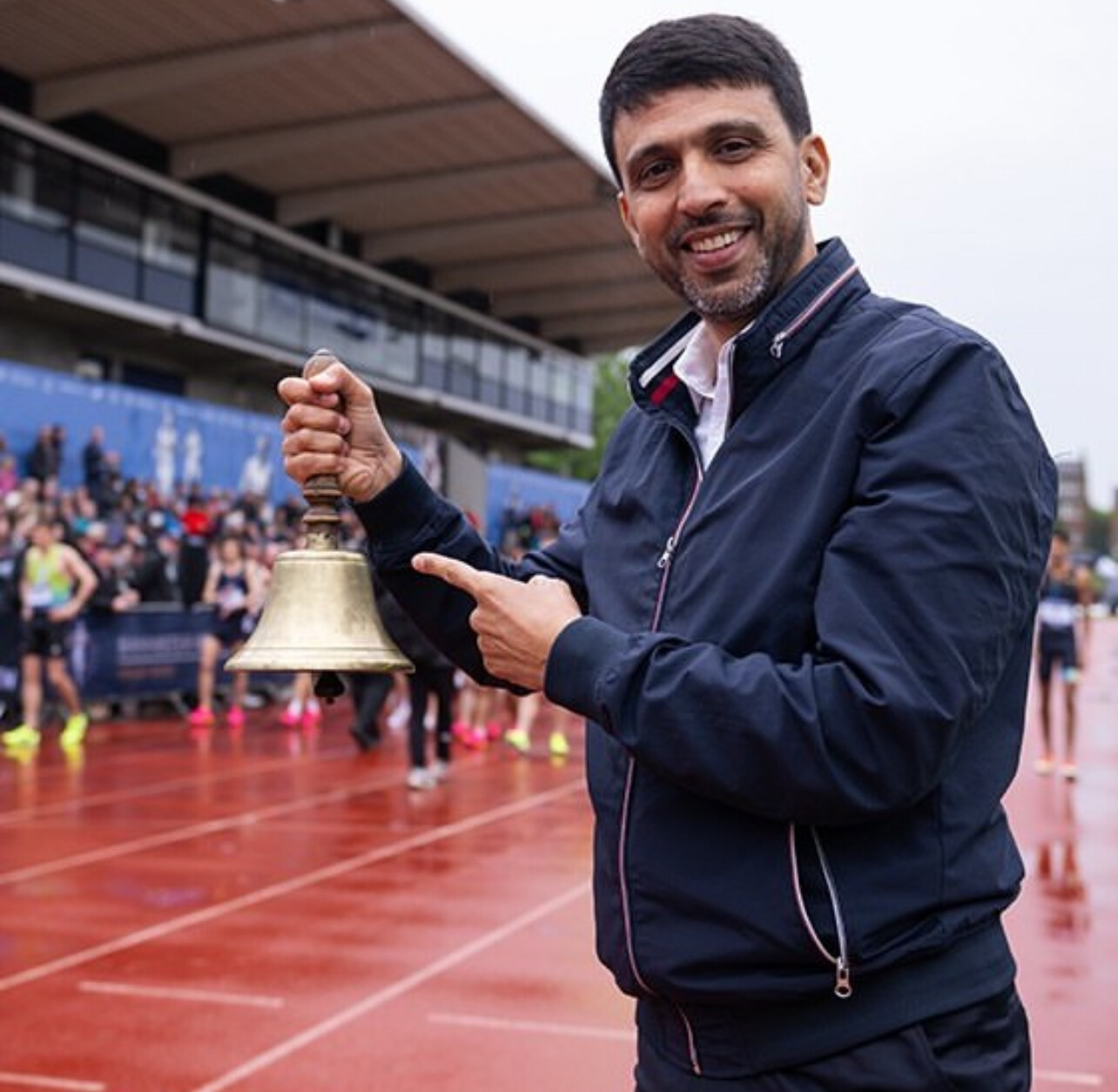
His time of 3:26.00 remains not only the fastest ever run over 1500m, but also the longest-standing men’s world record in any Olympic track distance between 800m and 10,000m.
With today’s stars like Jakob Ingebrigtsen inching closer to the mark, the debate continues: how much faster would El Guerrouj have gone in 2025 conditions?
For now, the record stands—and so does the legend of Hicham El Guerrouj.
by Boris Baron
Login to leave a comment
Jakob Ingebrigtsen Returns to Altitude Training in St. Moritz Following Injury and Personal Turmoil
Olympic champion Jakob Ingebrigtsen is heading back to the mountains of St. Moritz to resume altitude training after a difficult first half of the 2025 season marked by injury and family challenges. The 23-year-old Norwegian has been recovering from a strained Achilles tendon that derailed his early outdoor campaign and forced him to miss several key meets.
Recovery First

Ingebrigtsen initially planned to train at altitude in Sierra Nevada in the spring, but his Achilles issue required a change of course. He instead remained home to focus on recovery, missing high-profile events in Oslo, Ostrava, the Pre Classic, and the London Diamond League.
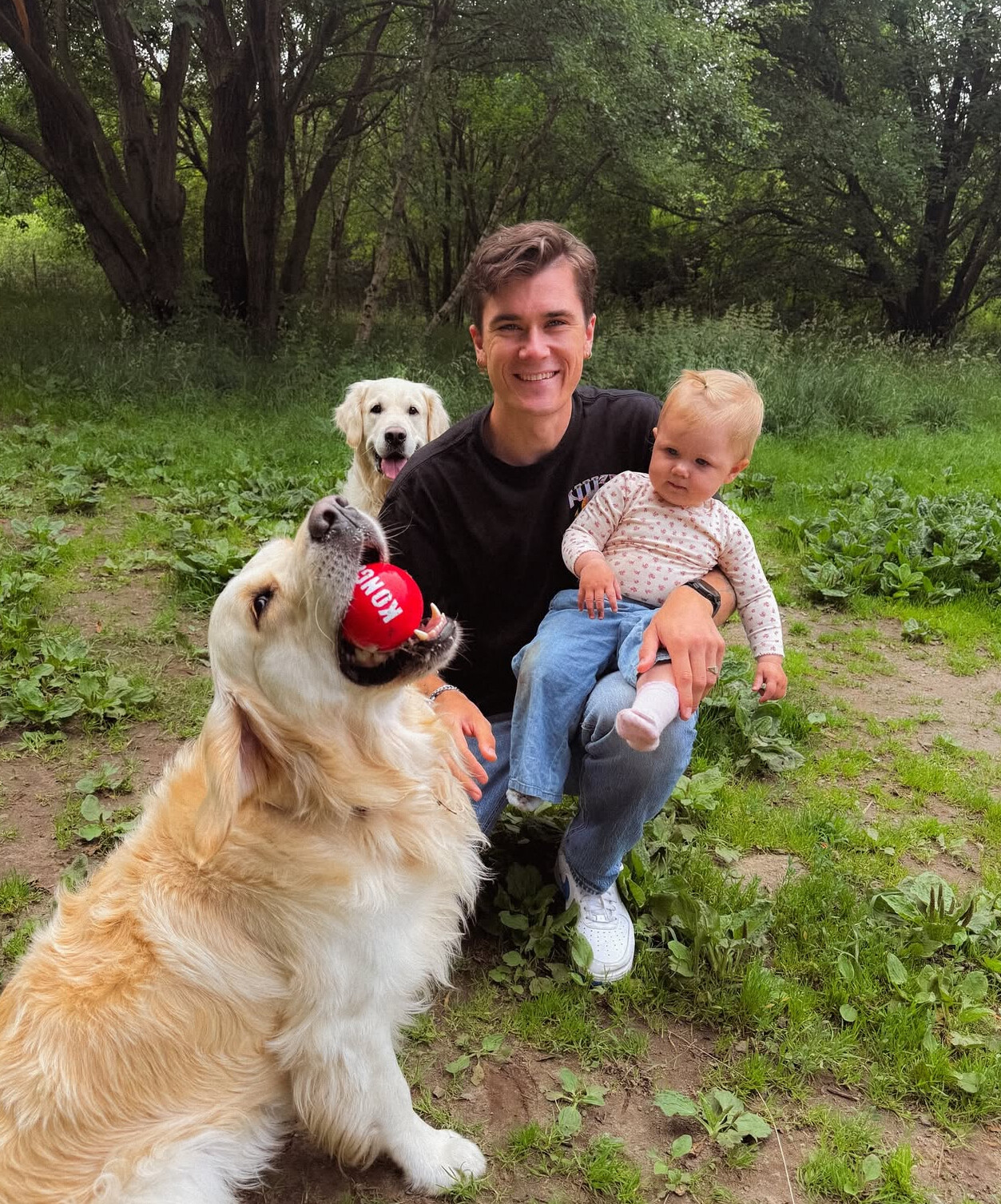
In a recent update shared on social media, Jakob acknowledged the long road back but said he was grateful for the time spent with his young daughter and dogs. “At least I had the best company,” he wrote, sharing photos from a forest outing. His message suggests a turning point in his recovery, both physically and emotionally.

Altitude Training in St. Moritz
Coach Filip Ingebrigtsen has confirmed that Jakob will now join Norway’s altitude group in St. Moritz for a three- to four-week training block. The plan is to carefully build back fitness without rushing into competition. If all goes well, Jakob could return to racing in mid-August, with the Silesia Diamond League meeting in Poland emerging as a likely target.

While his return has been delayed, confidence remains high. Ingebrigtsen’s indoor season earlier this year was exceptional—he broke the world indoor records for both the 1500m and mile. In June, shortly before his Achilles flare-up, he set a new European 1500m record of 3:27.95 and clocked 7:54.10 in the two-mile, a world best.

Personal Challenges and Legal Closure
In the midst of his recovery, Ingebrigtsen also had to navigate a difficult legal chapter. On June 23, his father, Gjert Ingebrigtsen, was convicted of minor assault against Jakob’s younger sister, Ingrid, for an incident involving a wet towel. Gjert received a 15-day suspended sentence and was ordered to pay damages. He was acquitted of similar charges involving Jakob due to lack of evidence.
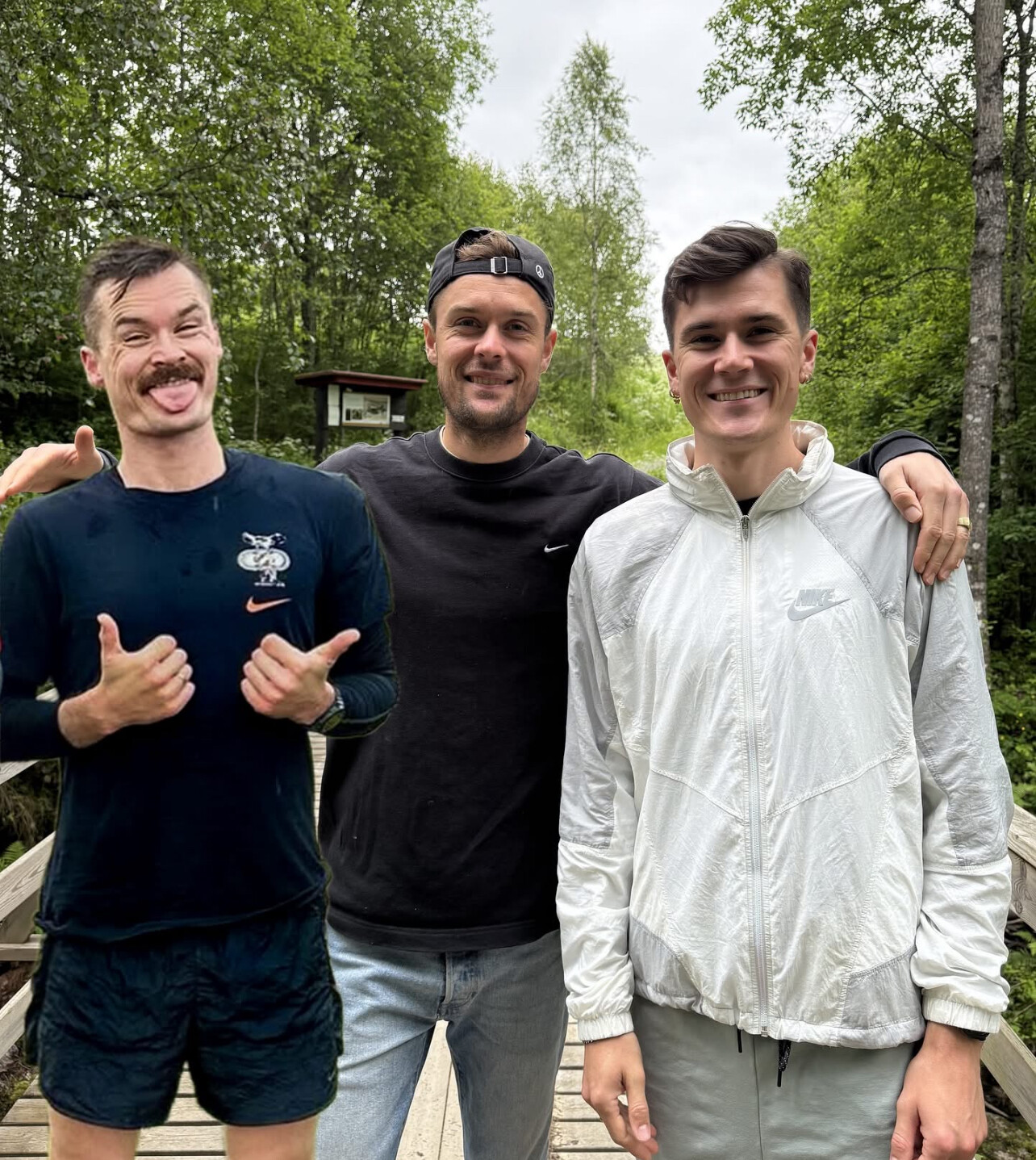
The verdict marks a formal conclusion to a painful and public family dispute that first came to light in late 2023. With this chapter behind him, Jakob appears ready to shift focus fully back to his training and racing.
Looking Ahead
Jakob Ingebrigtsen’s approach to 2025 has been cautious but strategic. Rather than forcing an early comeback, he’s prioritized recovery, stability, and preparation. If his return to St. Moritz goes as planned, fans can expect to see him back on the track in top form later this summer—potentially just in time to contend for another global title.

by Boris Baron
Login to leave a comment
Father of Olympic Champion Jakob Ingebrigtsen Convicted of Assaulting Daughter Ingrid
Gjert Ingebrigtsen, father of Olympic gold medalist Jakob Ingebrigtsen, has been convicted of assaulting his daughter Ingrid, following a high-profile trial in Norway. He received a suspended 15-day prison sentence and was ordered to pay NOK 10,000 (about $1,000) in compensation.
The conviction stems from a 2022 incident in which Ingrid, then a teenager, testified that her father struck her across the cheek with a wet towel. Although she later received a text from him, she said he apologized only for raising his voice—not for the physical act itself.
Gjert had also been accused of long-term physical and psychological abuse toward Jakob and Ingrid. However, the South Rogaland District Court found insufficient evidence to support those broader claims and acquitted him on all other counts. His legal team emphasized that several close family members and external witnesses testified they had not witnessed abuse.
Ingrid trained as a competitive runner in her youth, following in the footsteps of her accomplished siblings, but stepped away from competition around the age of 15.
Jakob’s legal representative expressed disappointment with the verdict, stating, “You describe violence, you’re believed, and yet he isn’t convicted.” She added that both Jakob and Ingrid are now focused on moving forward.
Prosecutors have 14 days from the June 16 ruling to consider an appeal.
by Boris Baron
Login to leave a comment
Sleep Like a Champion: Why Rest May Be Your Most Powerful Running Tool
Most runners focus on mileage, splits, and fueling—but there’s one key performance enhancer that’s often overlooked: sleep. Elite athletes and sports scientists increasingly agree that rest isn’t just recovery—it’s training.
Sleep and Performance: What Science Says

During deep sleep, the body releases human growth hormone (HGH), which repairs muscles, rebuilds tissues, and restores energy. Your immune system strengthens, the brain consolidates motor memory (important for running form), and muscles rebuild stronger.
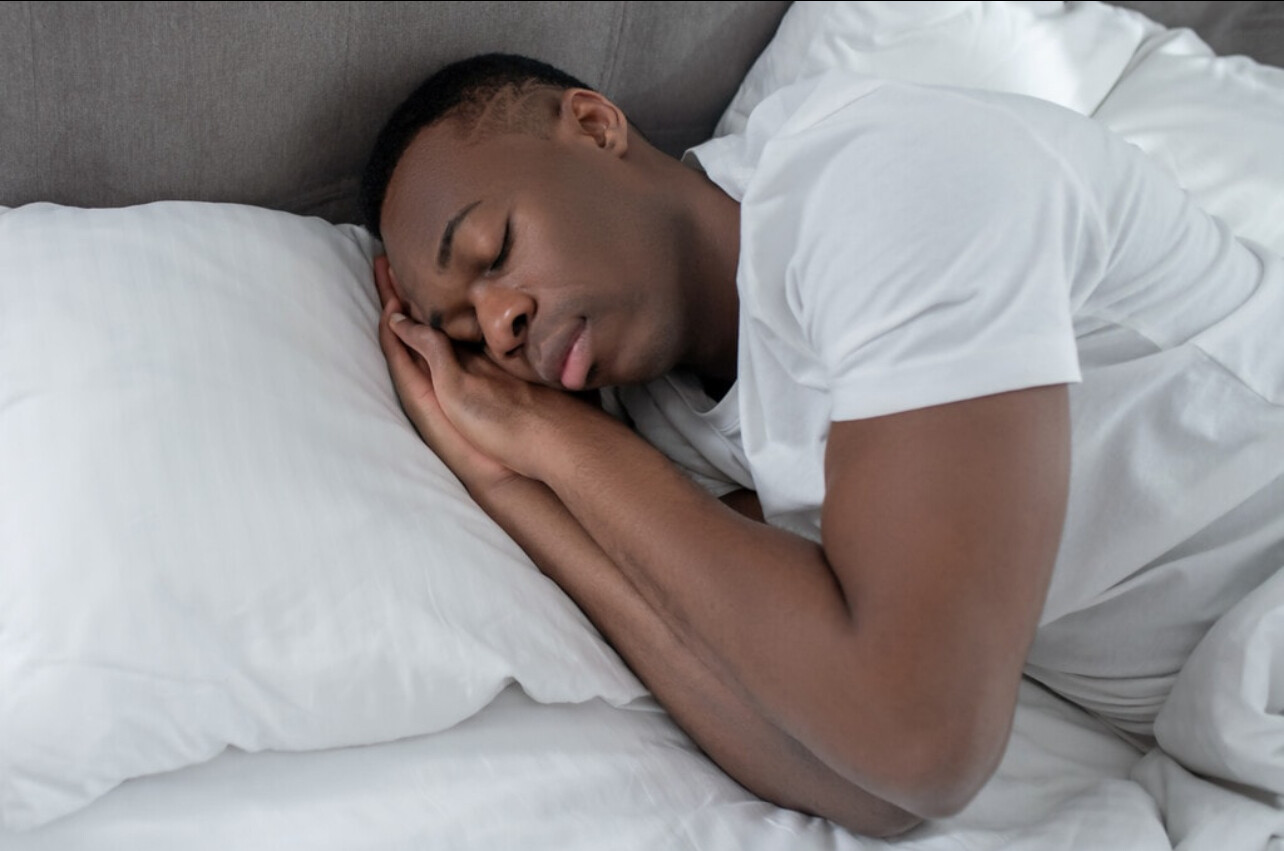
Sleep deprivation can lead to:
• Slower reaction times and decision-making
• Increased injury risk
• Poor glycogen storage
• Reduced endurance and mental focus
Simply put: if you’re not sleeping well, your training gains are compromised
What Elite Runners Are Doing
Top runners are making sleep a priority—right alongside workouts and recovery days.
• Eliud Kipchoge sleeps 9+ hours per night and takes a daily nap to support his high-volume training.
• Molly Seidel calls sleep her “number one recovery tool.”
• Jakob Ingebrigtsen is known for dialing back screen time and evening stress to protect sleep quality.
Coaches across the globe now structure training schedules to ensure athletes can rest, especially before and after intense sessions.
Sleep Tech: Measuring What Matters
Devices like the Whoop Strap, Oura Ring, and Garmin sleep trackers are giving runners new insight into recovery. These tools track heart rate variability (HRV), sleep stages, and readiness scores, helping athletes fine-tune their training and rest cycles.
How to Optimize Your Sleep for Better Running
1. Stick to a sleep schedule – go to bed and wake up at the same time daily.
2. Create a wind-down routine – limit screens, caffeine, and stress before bed.
3. Keep your bedroom cool and dark – around 65°F (18°C) is ideal.
4. Avoid late-night workouts – they can spike adrenaline and delay sleep.
5. Prioritize naps if nighttime sleep falls short – even 20 minutes helps.
Your next personal best might not come from a new training block or pair of shoes—it might come from simply getting more sleep. If you’re serious about performance, sleep is non-negotiable.
Train hard. Sleep smarter. Recover stronger.
by Boris Baron
Login to leave a comment
Jakob Ingebrigtsen’s Need for Speed Extends Beyond the Track
Jakob Ingebrigtsen isn’t just one of the greatest middle-distance runners of this generation—he’s also a serious car enthusiast. While he’s best known for his Olympic gold and sub-3:30 1500m times, off the track Ingebrigtsen has a growing passion for high-performance vehicles.
His three most talked-about cars reveal a lot about his taste for speed and engineering excellence:
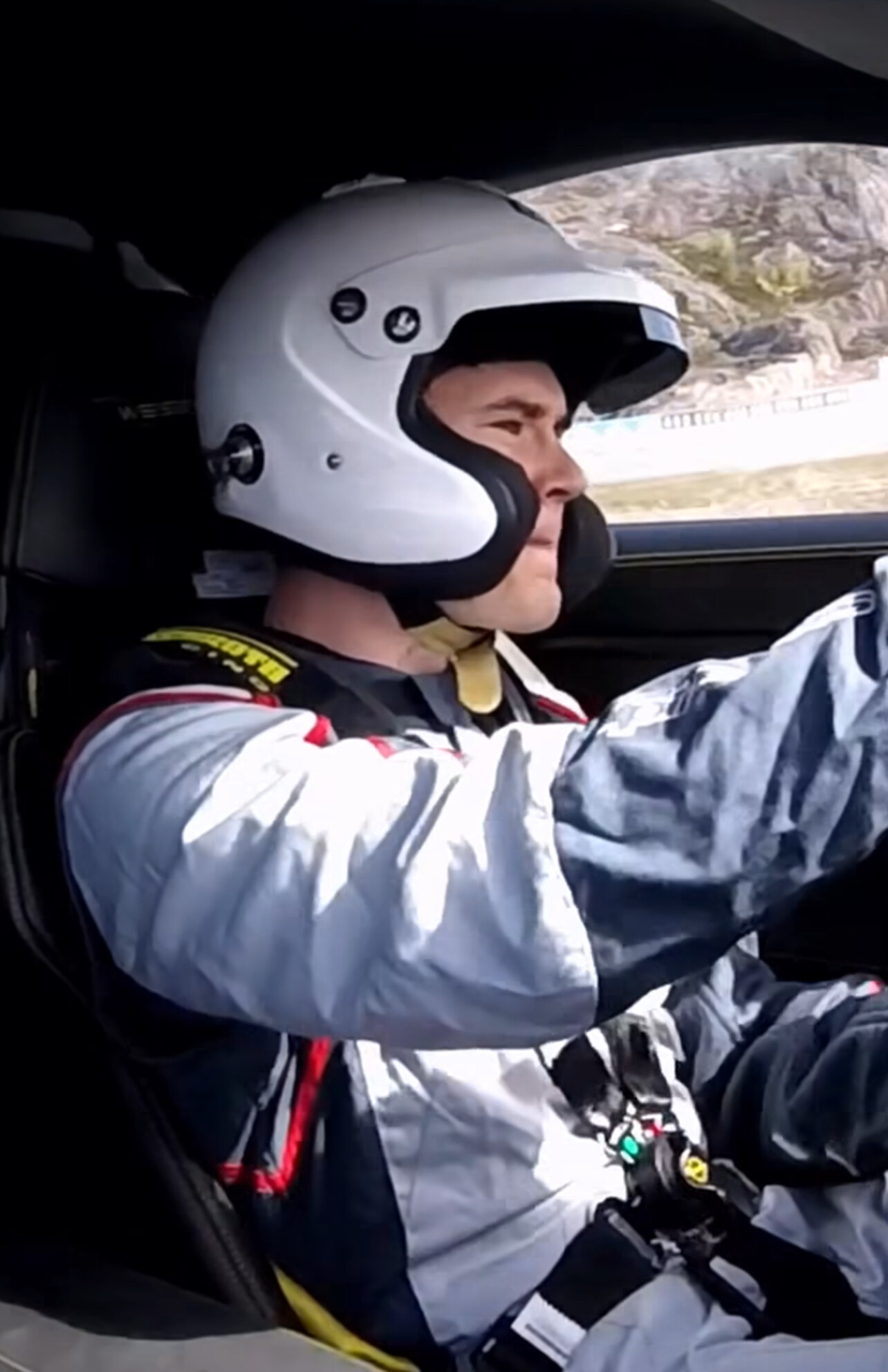
1. 1989 Ferrari 348 GTB

A true classic among car collectors, Ingebrigtsen has personally modified this model with a front lip, spoiler, half cage, and bucket seats. This car reflects his appreciation for vintage craftsmanship with a modern edge.
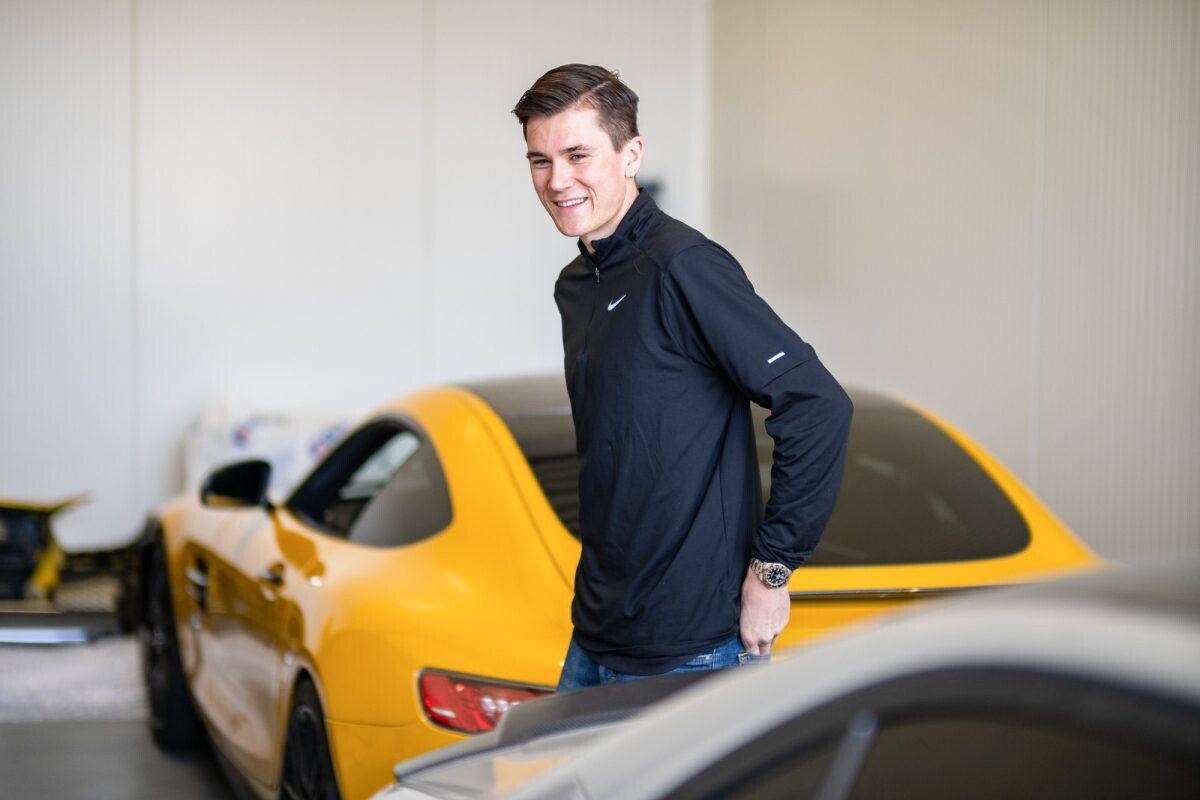
• Estimated value: $70,000–$95,000 (depending on upgrades and condition)
2. Porsche 911 GT3 RS
Built for the track, the GT3 RS is one of Porsche’s most revered models. Jakob has been spotted racing it, showing that his love for competition isn’t limited to running.
• Estimated value: $180,000–$220,000
3. Mercedes-Benz AMG E63 (Sold)
Before selling it, Ingebrigtsen owned a high-powered AMG E63—an elegant yet aggressive vehicle known for both speed and comfort.
• Estimated past value: $100,000
Combined, these three cars bring the estimated total to over $350,000—a clear sign that Jakob invests in quality and performance in every aspect of life.
As he continues to chase records on the track, it’s clear Ingebrigtsen also enjoys the thrill of speed behind the wheel. His social media occasionally features glimpses of his cars, making it evident that his interest in motorsport is more than just a side hobby—it’s a passion.
by Boris Baron
Login to leave a comment
Jakob Ingebrigtsen Provides Injury Update, Postpones Outdoor Season Start
Jakob Ingebrigtsen, Norway’s Olympic champion and one of the most dominant middle-distance runners in the world, has confirmed that he will delay the start of his 2025 outdoor season due to a recurrence of an Achilles tendon issue.
The 24-year-old experienced discomfort in his Achilles while training at high altitude in Sierra Nevada, Spain—an injury reminiscent of a previous setback that sidelined him during part of the 2023–2024 season. Ingebrigtsen has since returned to Norway to undergo treatment and has transitioned to cross-training activities including aqua jogging and elliptical work to maintain fitness while reducing impact.

“I’ve been feeling irritation again in my Achilles,” Jakob shared in a video update on his official YouTube channel. “It’s frustrating, but I’ve learned from past mistakes. I want to give myself the best chance to recover fully and be ready for the biggest challenges later this season.”
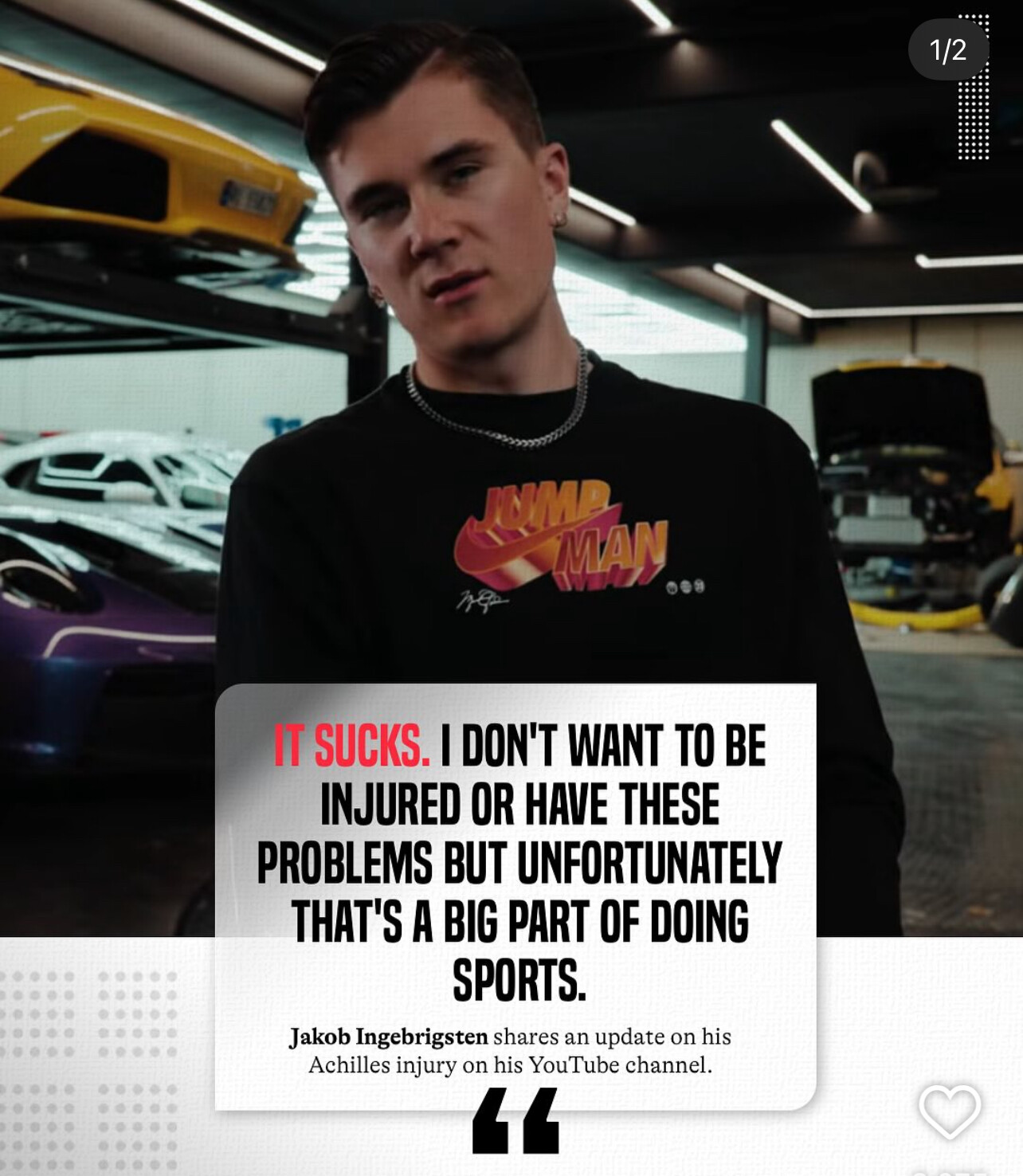
As a result, Ingebrigtsen is expected to miss the Bislett Games in Oslo, scheduled for June 12, and his participation in the London Diamond League in July remains uncertain. However, he remains focused on regaining top form in time for the World Championships in Tokyo later this year.
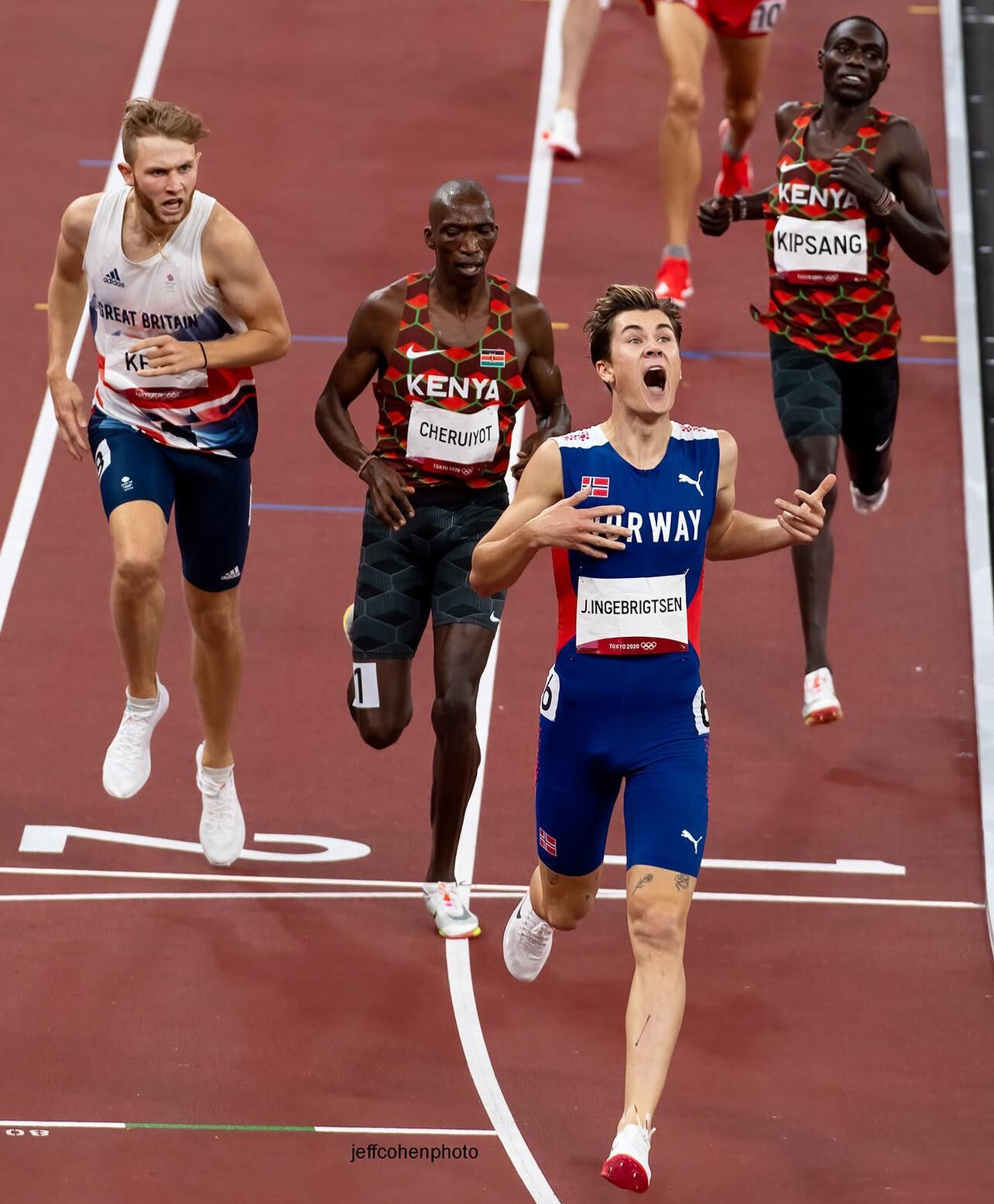
Despite this recent setback, Ingebrigtsen had an extraordinary indoor season earlier in 2025. He shattered two world records—running 3:45.14 in the indoor mile and 3:29.63 in the 1500m—both at the Meeting Hauts-de-France Pas-de-Calais in Liévin. He also claimed gold in both the 1500m and 3000m at the European Athletics Indoor Championships in Apeldoorn and the World Indoor Championships in Nanjing.
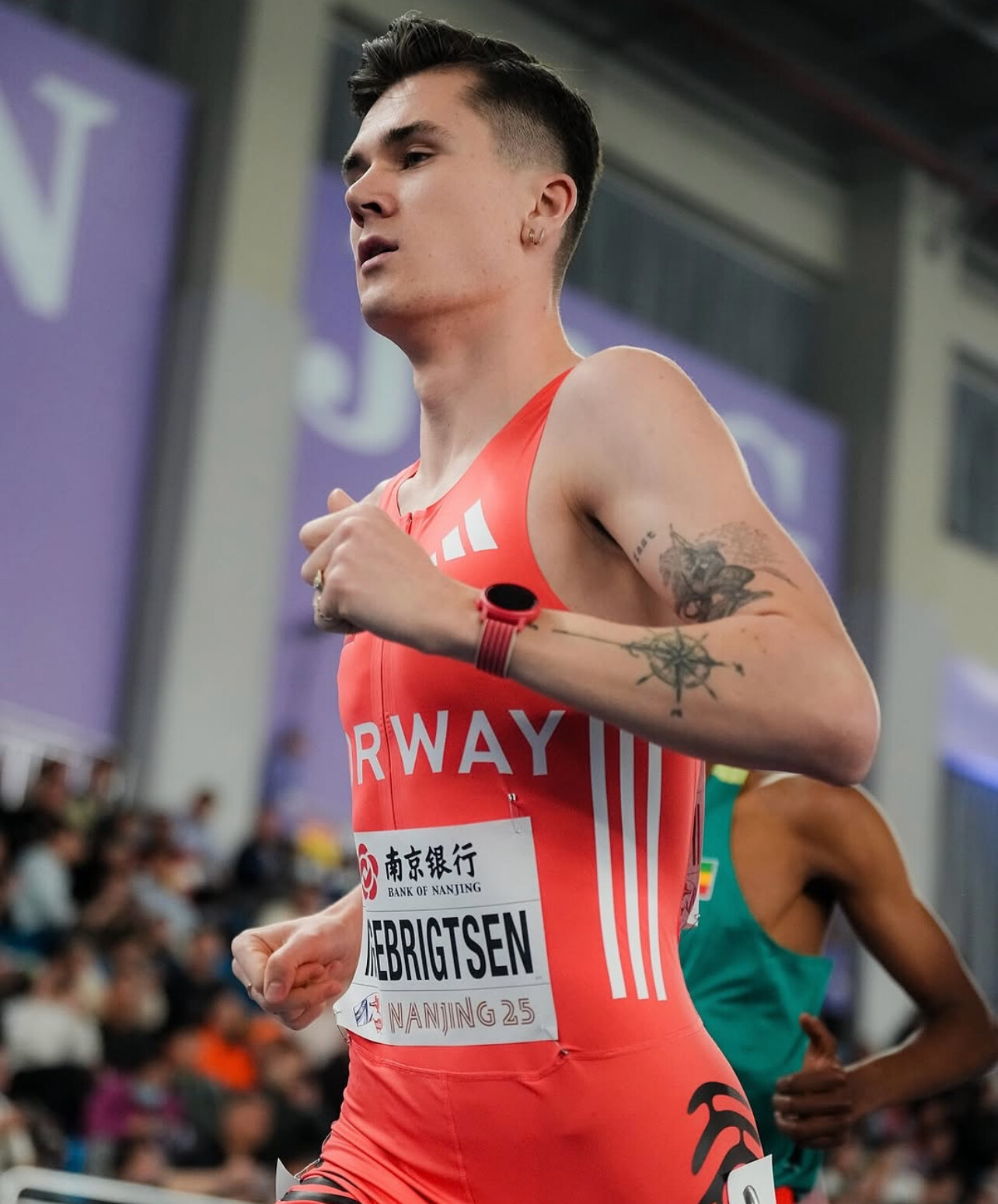
Jakob’s cautious approach underscores his long-term focus. “I’m not rushing this. I know what I’m capable of when I’m healthy,” he added. “The goal is to compete at my best when it matters most.”
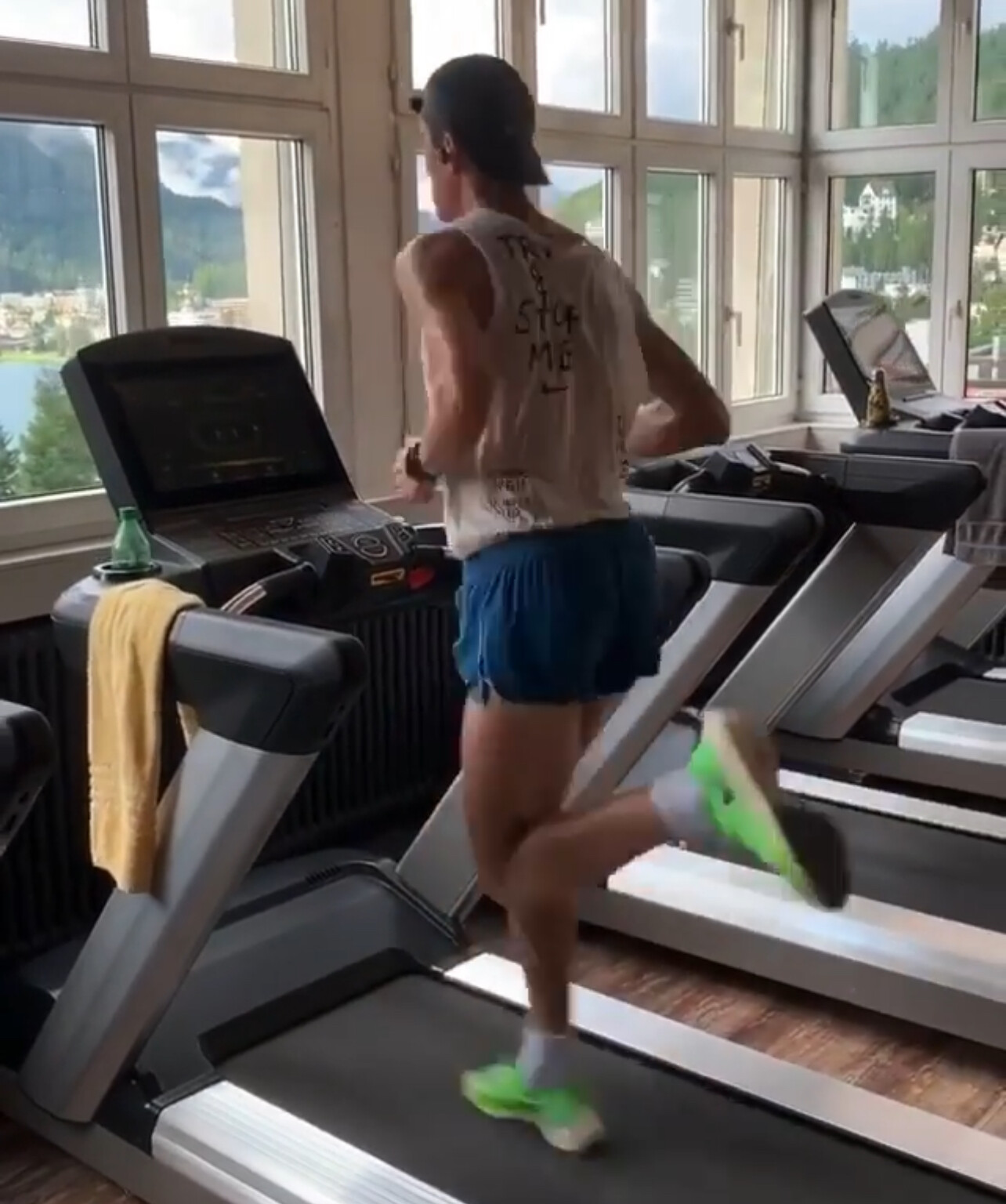
by Boris Baron
Login to leave a comment
Achilles Injury Forces Ingebrigtsen to Delay Season Start
Fresh off one of the most dominant years of his career, Norwegian middle-distance star Jakob Ingebrigtsen has hit an unexpected roadblock. The reigning Olympic champion and recent world record holder has postponed the start of his 2025 outdoor season due to a minor Achilles tendon injury.
According to Norwegian media, Ingebrigtsen experienced a slight strain during training and has since delayed a scheduled altitude camp. The injury has forced him to withdraw from the upcoming Bislett Games, his highly anticipated home Diamond League meet in Oslo.
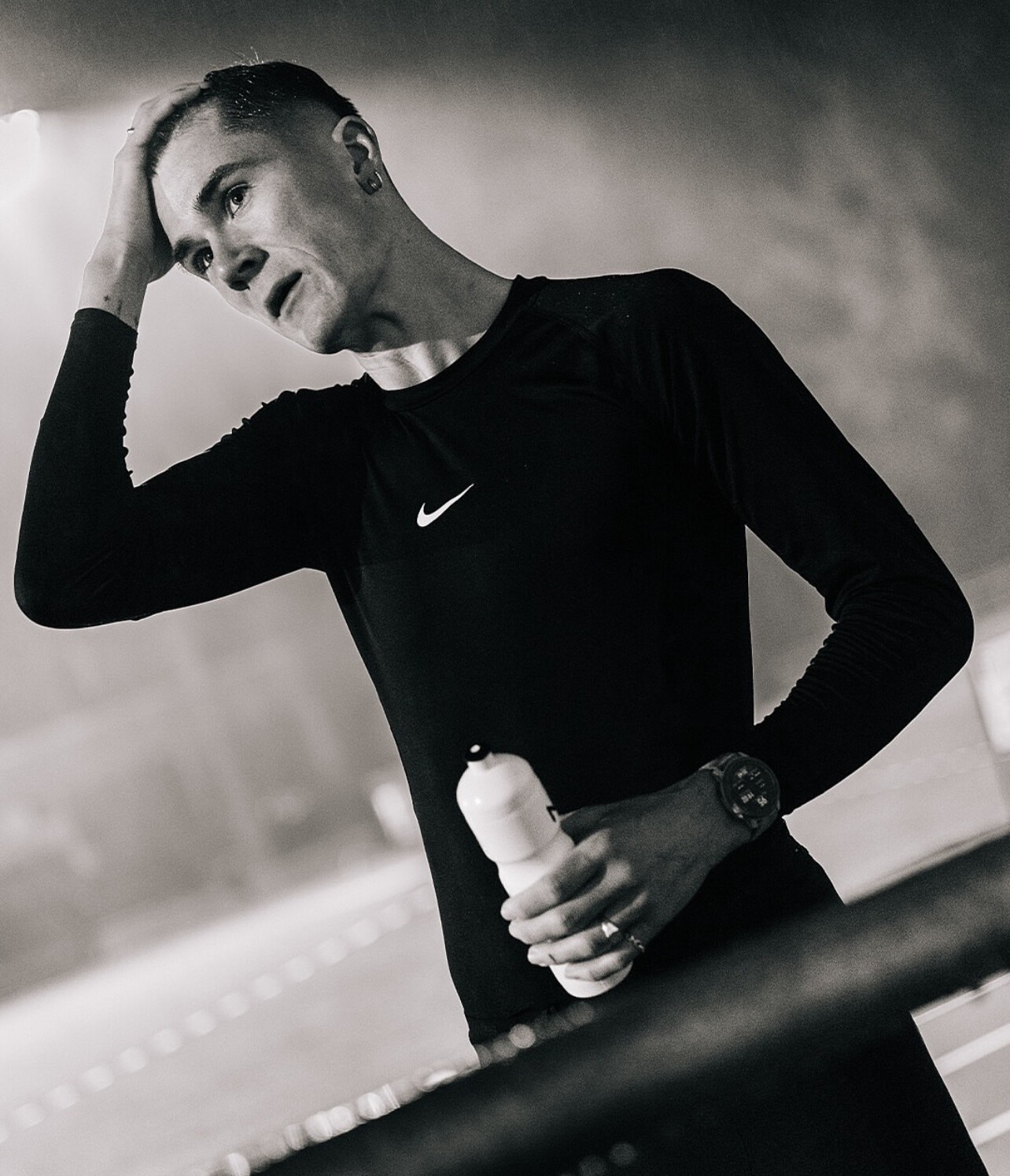
“Jakob felt some discomfort in his Achilles, and we’re taking every precaution,” his spokesperson Espen Skoland told Norwegian broadcaster NRK. “It’s not serious, but it’s enough to warrant rest and adjustment.”
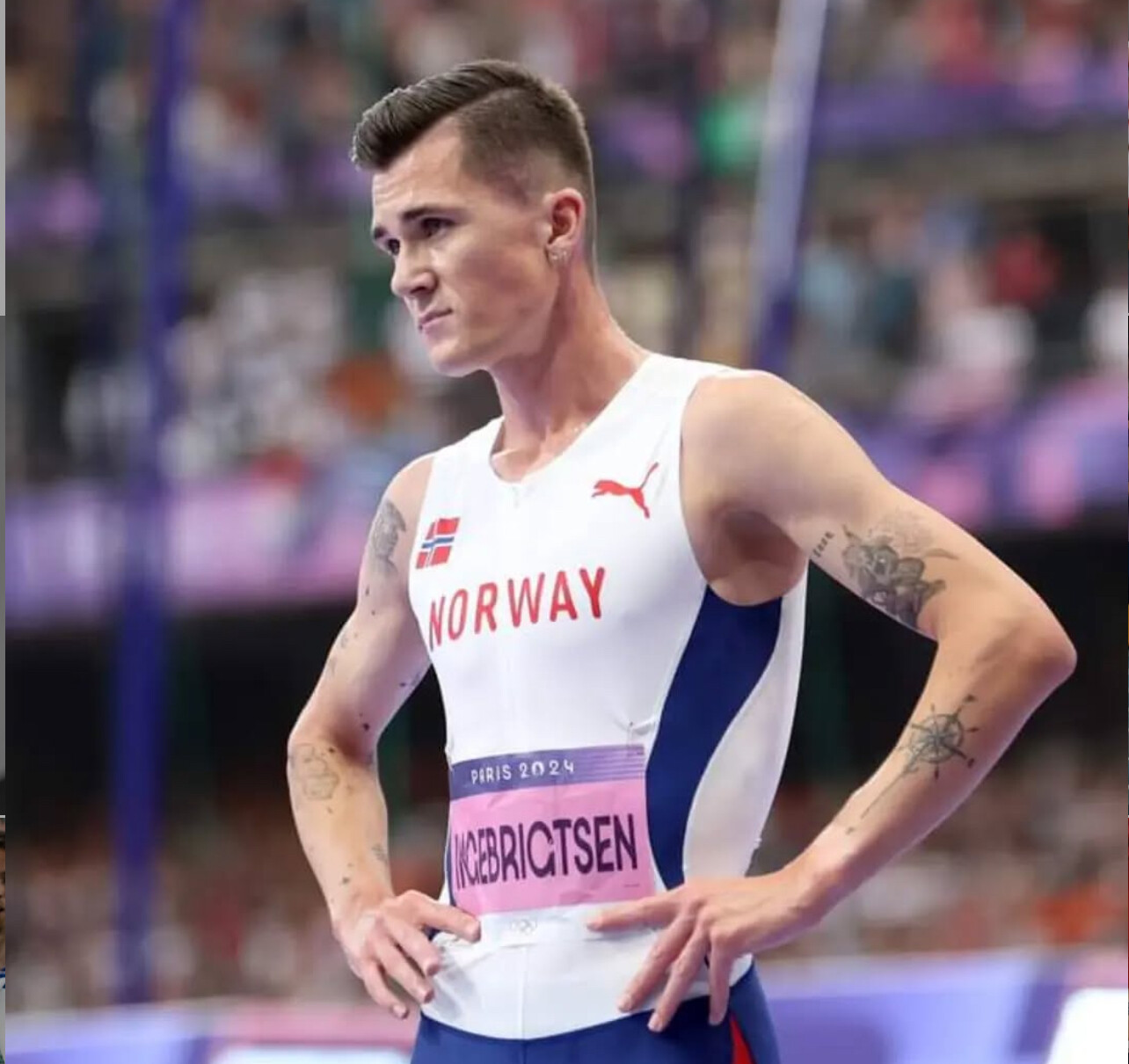
The news comes as a surprise to fans after Ingebrigtsen’s stellar 2024 season, which included Olympic gold in the 5000m, a European record in the 1500m, and a series of record-breaking performances that reaffirmed his place as one of the most dominant forces in middle-distance running.
Known for his fierce racing schedule and unmatched consistency, Ingebrigtsen has rarely been sidelined. While the injury is not expected to derail his entire season, it’s a rare pause for the Norwegian powerhouse who seemed poised to continue his momentum into 2025.
As he recovers, fans and competitors alike will be watching closely to see when and where he returns—and whether he can pick up right where he left off.
by Boris Baron
Login to leave a comment
Big fan. I hope he recovers fully soon but as we know Achilles situations are not good! - Bob Anderson 5/13 6:22 pm |
Faith Kipyegon and Jakob Ingebrigtsen Headline Historic 2025 Pre Classic
The 50th edition of the Prefontaine Classic, set for July 5 at Hayward Field in Eugene, Oregon, promises to be one of the most exciting track meets of the year. Headlining the event is three-time Olympic gold medalist Faith Kipyegon, who returns to the Pre Classic in search of her seventh career victory in the women’s 1500m.
Kipyegon, the world record holder in both the 1500m (3:49.04) and the mile (4:07.64), shattered the 1500m mark in Paris on July 7, 2024. Now, nearly a year later, she’ll look to reassert her dominance in front of a packed crowd at one of the sport’s most prestigious meets.
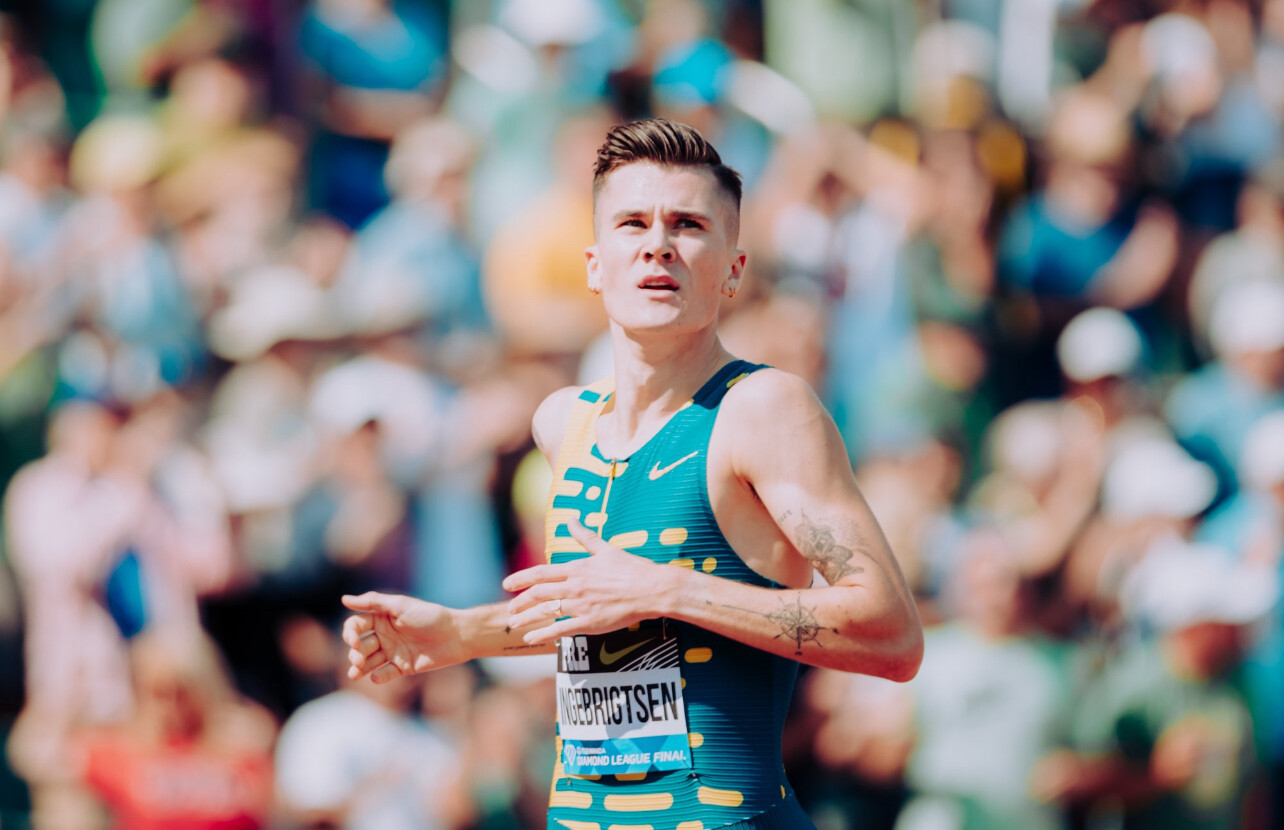
Joining Kipyegon in the 1500m are her fellow 2024 Olympic medalists—silver medalist Jessica Hull of Australia and bronze medalist Georgia Bell of Great Britain. Hull, a former University of Oregon standout, also holds the current world record in the 2000m.

But Kipyegon isn’t the only big name set to thrill fans in Eugene. The men’s Bowerman Mile will feature a stacked lineup that includes:
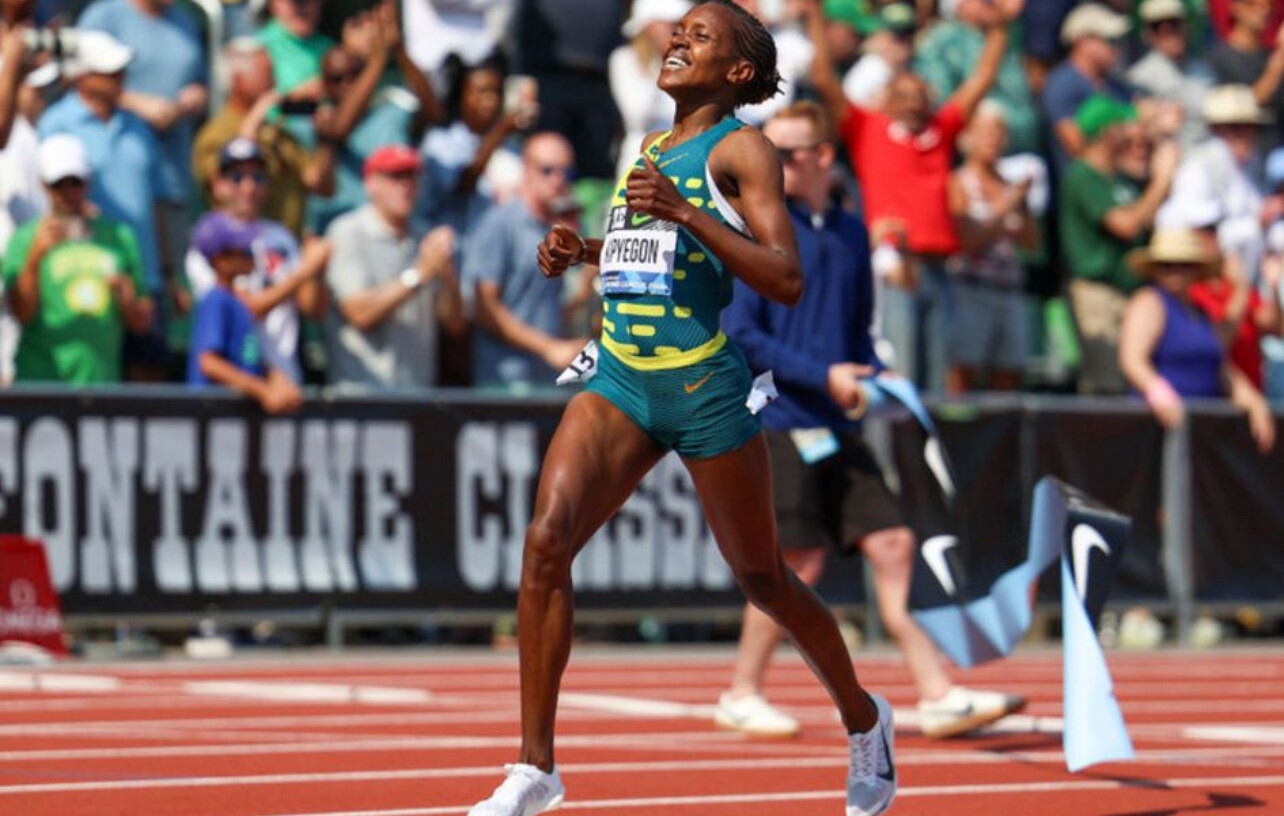
• Jakob Ingebrigtsen (Norway) – Olympic gold medalist and multiple-time Bowerman Mile champion
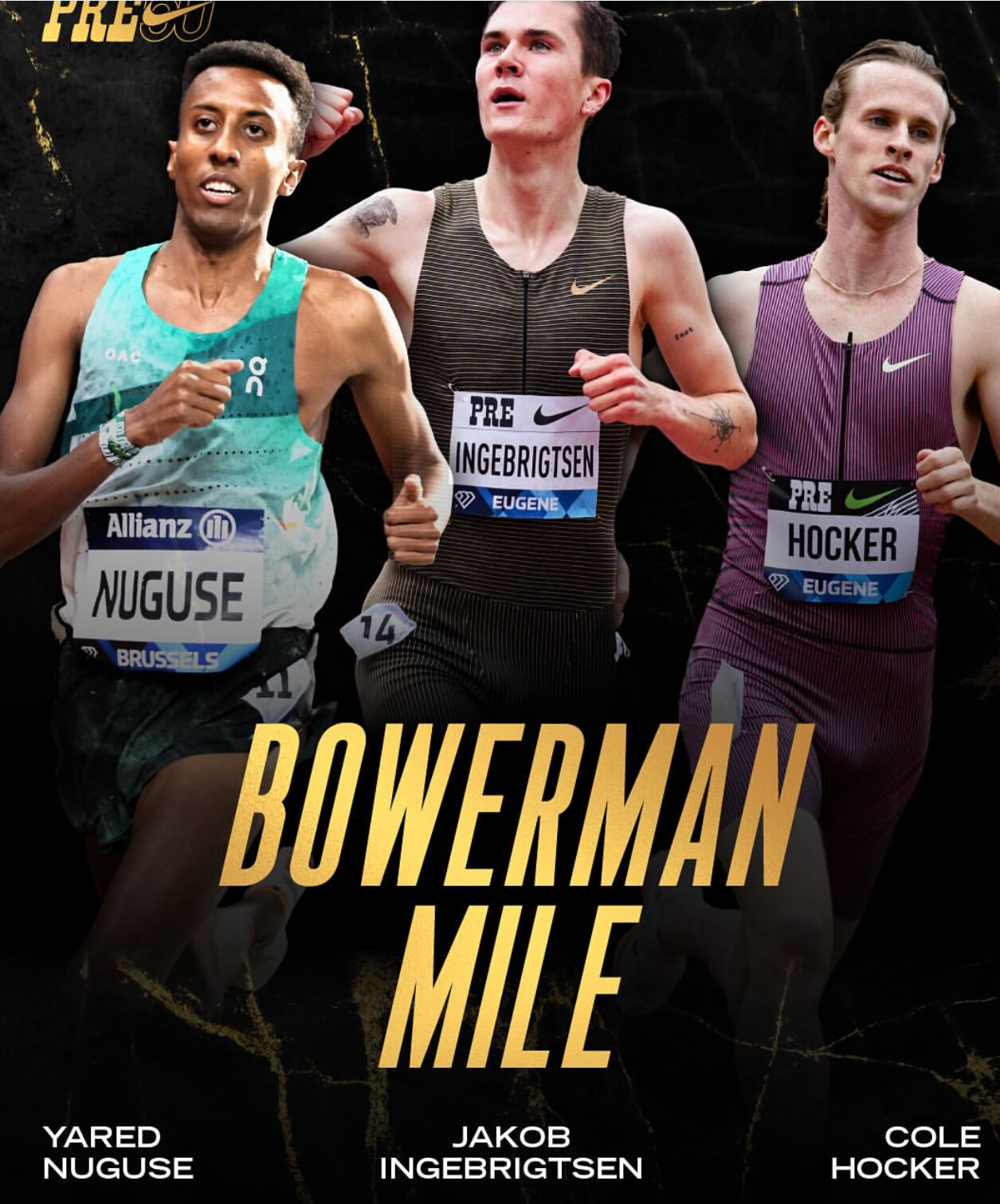
• Cole Hocker (USA) – 2024 Olympic 1500m champion
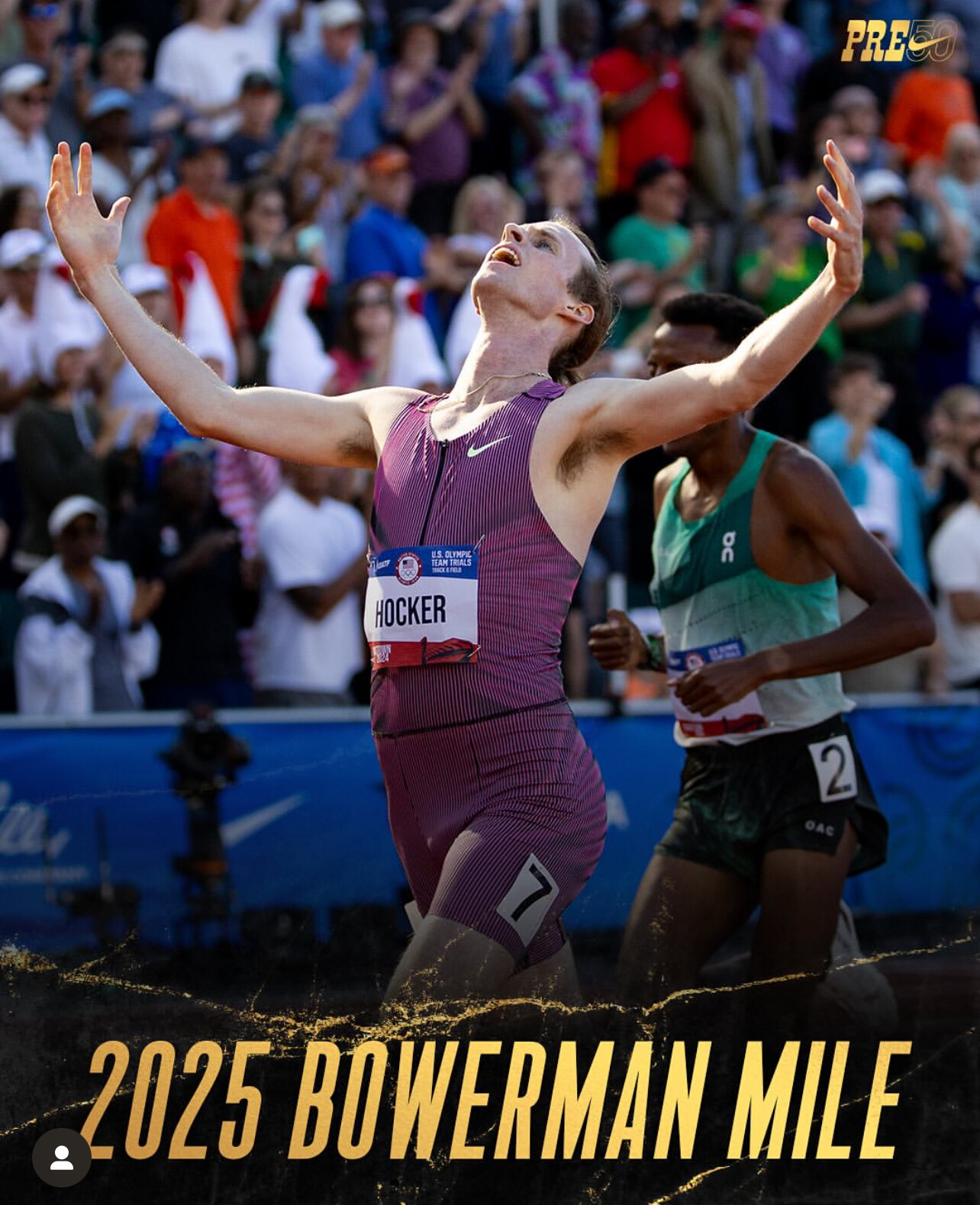
• Yared Nuguse (USA) – Olympic bronze medalist and former indoor mile world record holder
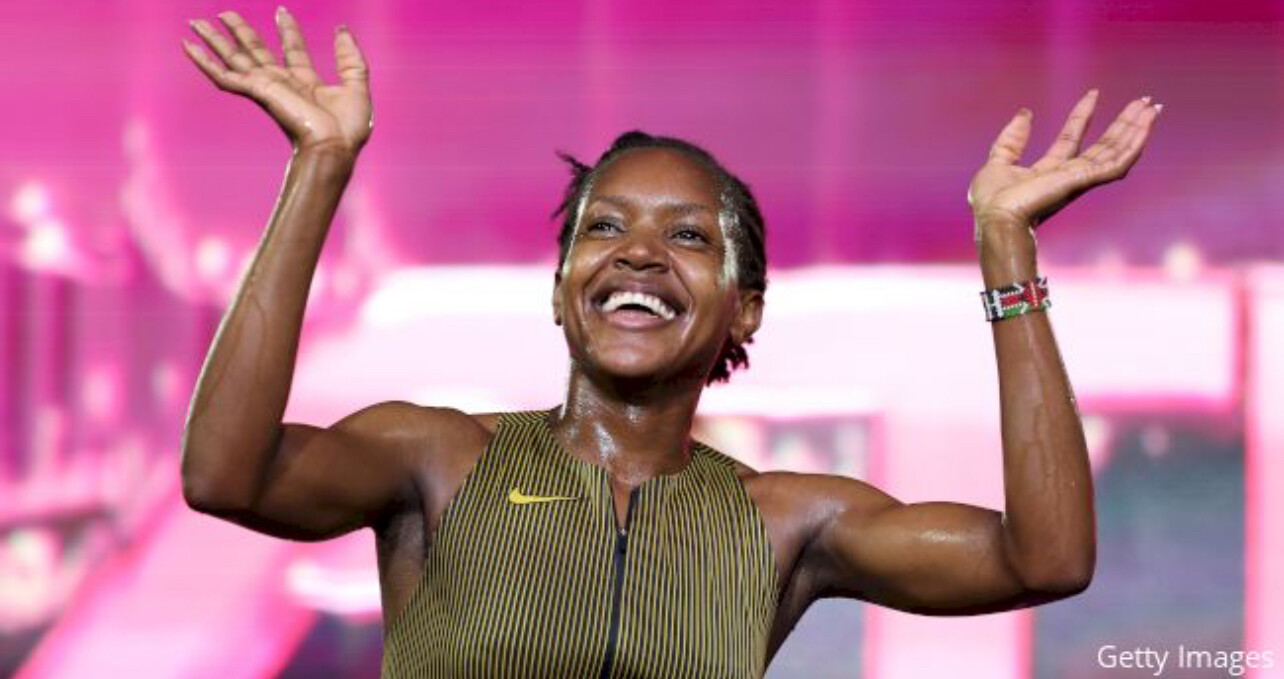
• Timothy Cheruiyot (Li Kenya) – Former world champion
• Jake Wightman (Great Britain) – 2022 world champion
• Grant Fisher (USA) – Olympic bronze medalist in both the 5000m and 10,000m
• Plus rising stars including Oliver Hoare, Neil Gourley, Azeddine Habz, Hobbs Kessler, Niels Laros, Cameron Myers, Stefan Nillessen, and Reynold Cheruiyot
In the men’s 400m hurdles, Olympic silver medalist Rai Benjamin will headline a competitive field that also includes CJ Allen, Trevor Bassitt, Clement Ducos, Malik James-King, Abderrahman Samba, and Assinie Wilson.
The 2025 Prefontaine Classic will feature 14 Diamond League disciplines, including the women’s 800m, 5000m, and 3000m steeplechase—each with world-class fields expected to be announced soon.
As the sport celebrates this milestone edition of the Pre Classic, the meet is shaping up to be not just a tune-up for global championships, but a showcase of track and field at its absolute best.
by Boris Baron
Login to leave a comment
Grand Slam Track Bold Start Amidst Challenges
The inaugural Grand Slam Track event, held from April 4–6, 2025, at Jamaica’s National Stadium in Kingston, marked a transformative moment in professional track and field. Spearheaded by Olympic legend Michael Johnson, the series aims to revitalize the sport by offering substantial prize money and a unique competition format.
Innovative Competition Format
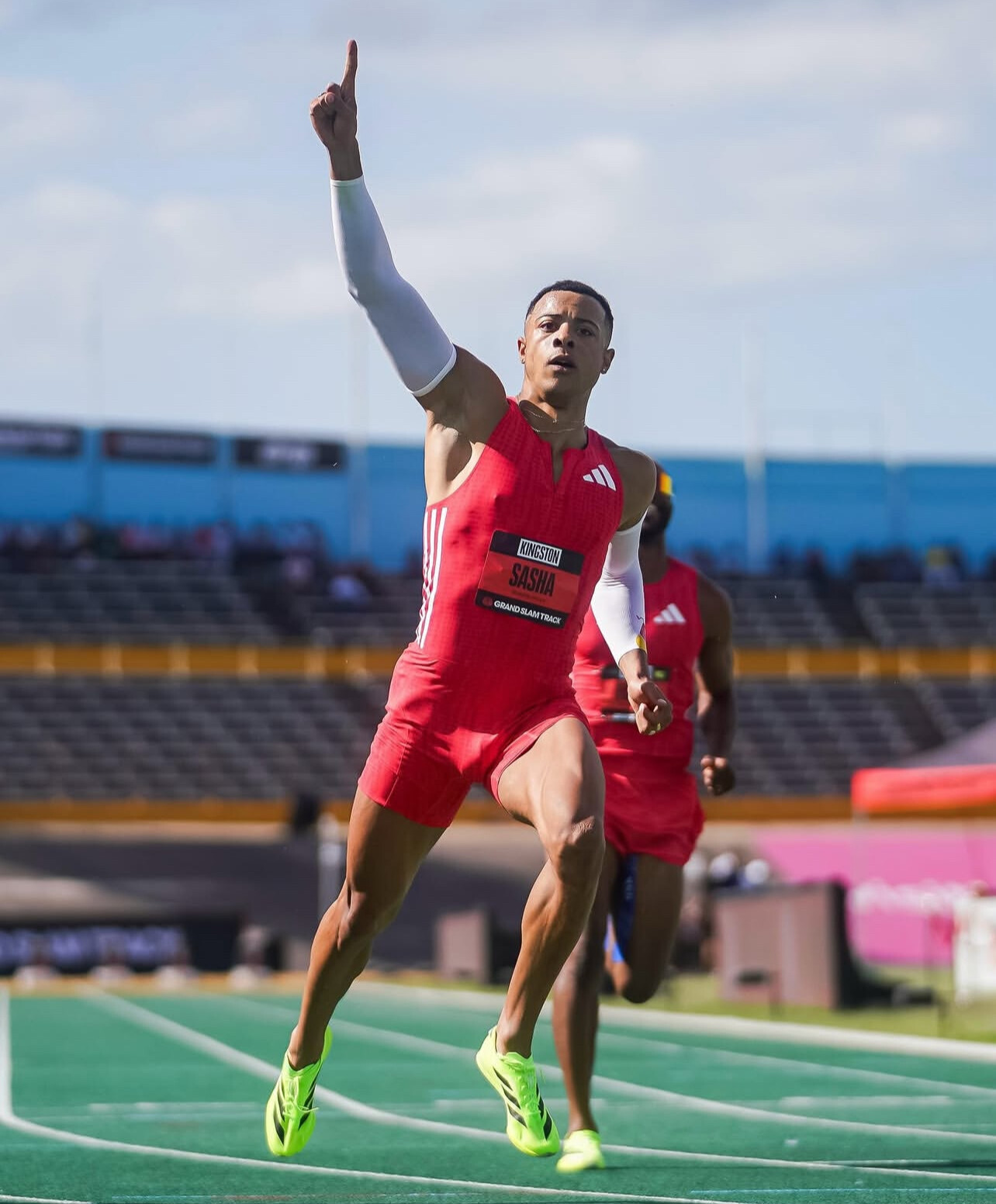
Grand Slam Track introduces a fresh approach to track and field competitions. Athletes are divided into 12 event groups—six for men and six for women—each comprising two disciplines:
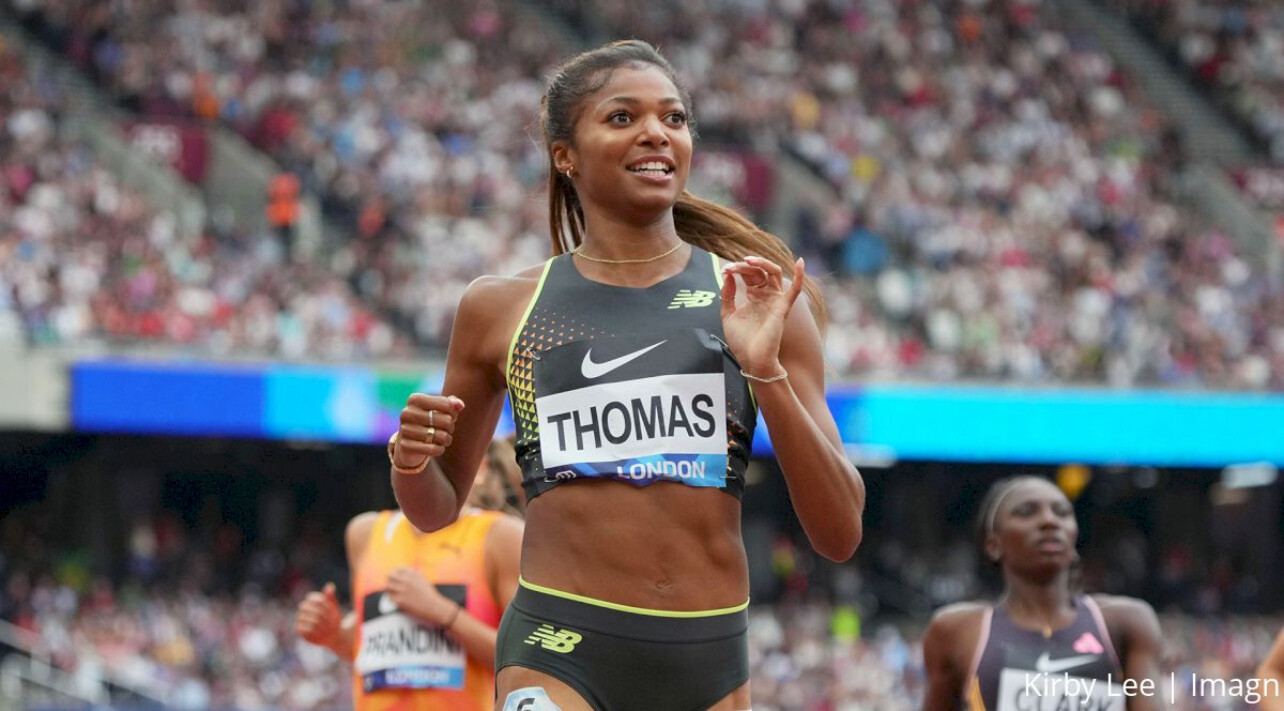
• Short Sprints: 100m and 200m
• Long Sprints: 200m and 400m
• Short Hurdles: 100m hurdles (women), 110m hurdles (men)
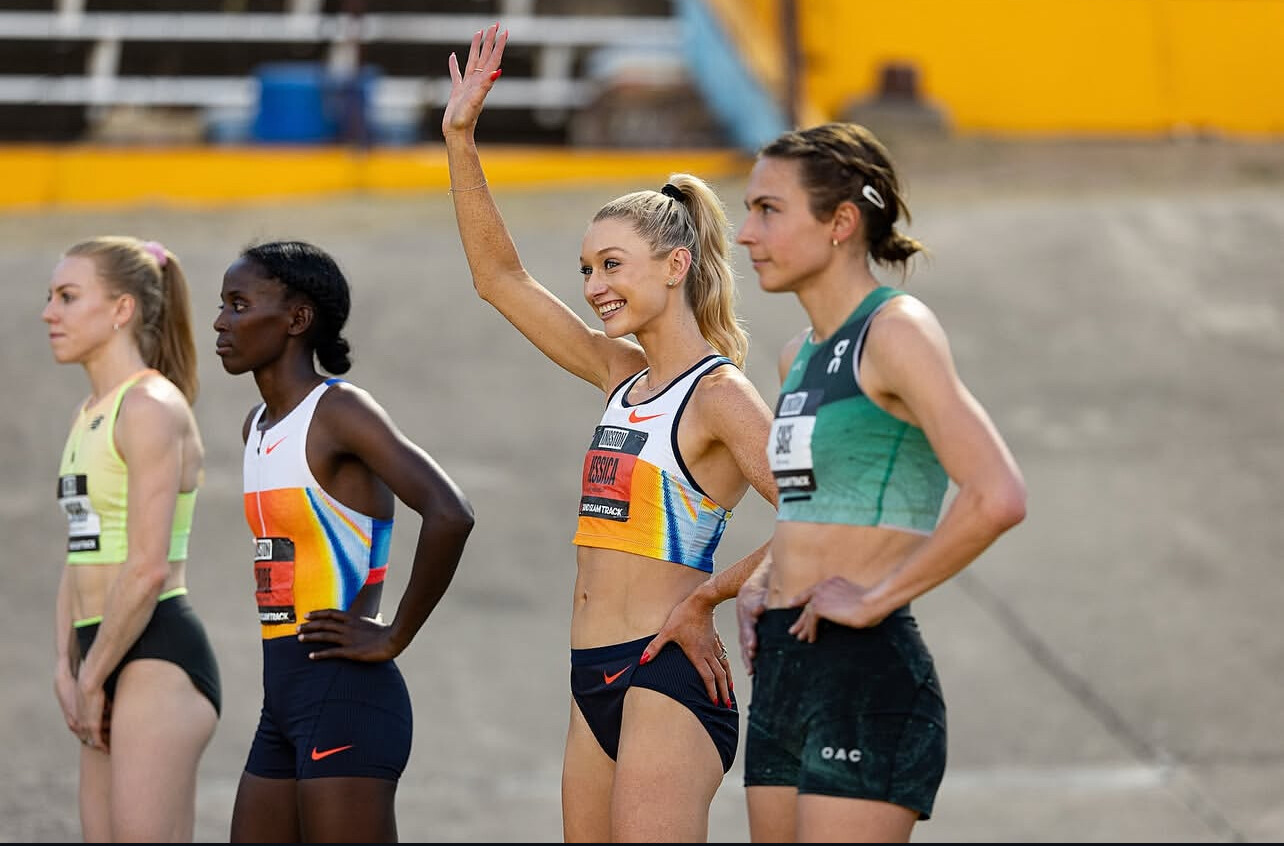
• Long Hurdles: 400m hurdles and 400m
• Short Distance: 800m and 1500m
• Long Distance: 3000m and 5000m
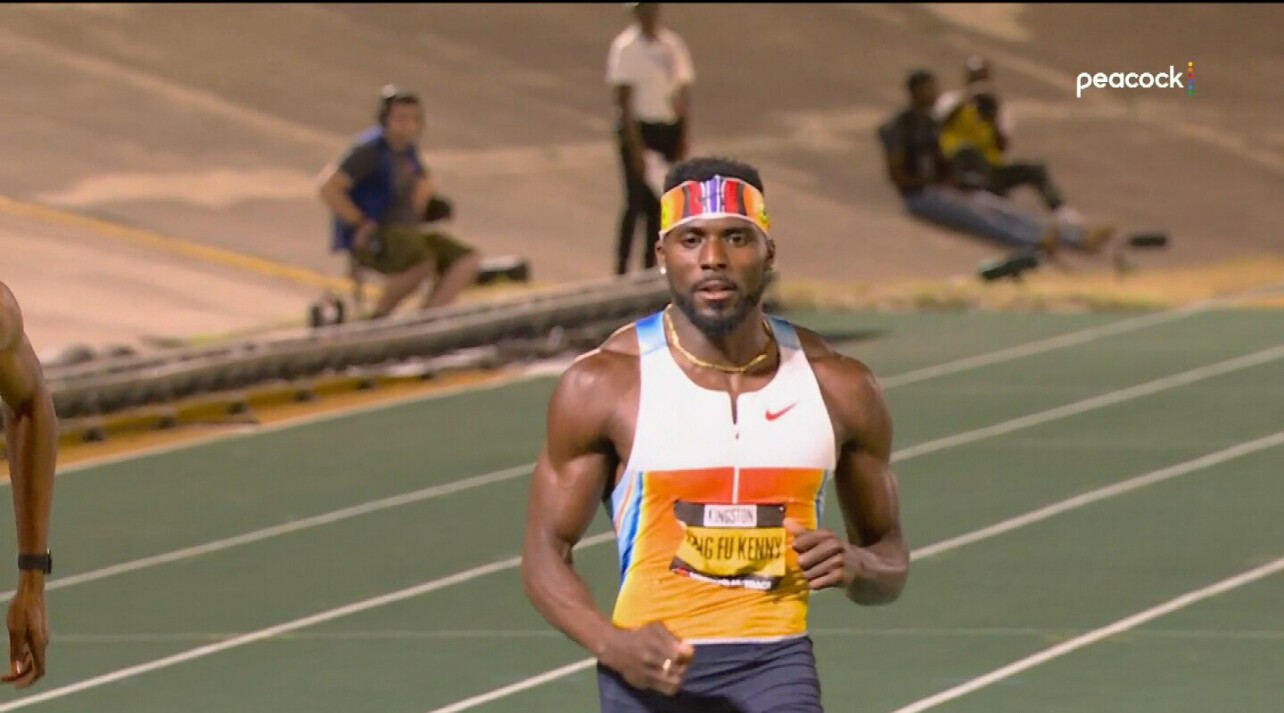
Over three days, competitors face off in both events within their group, earning points based on their performances. Points are awarded as follows:
• 1st place: 12 points
• 2nd place: 8 points
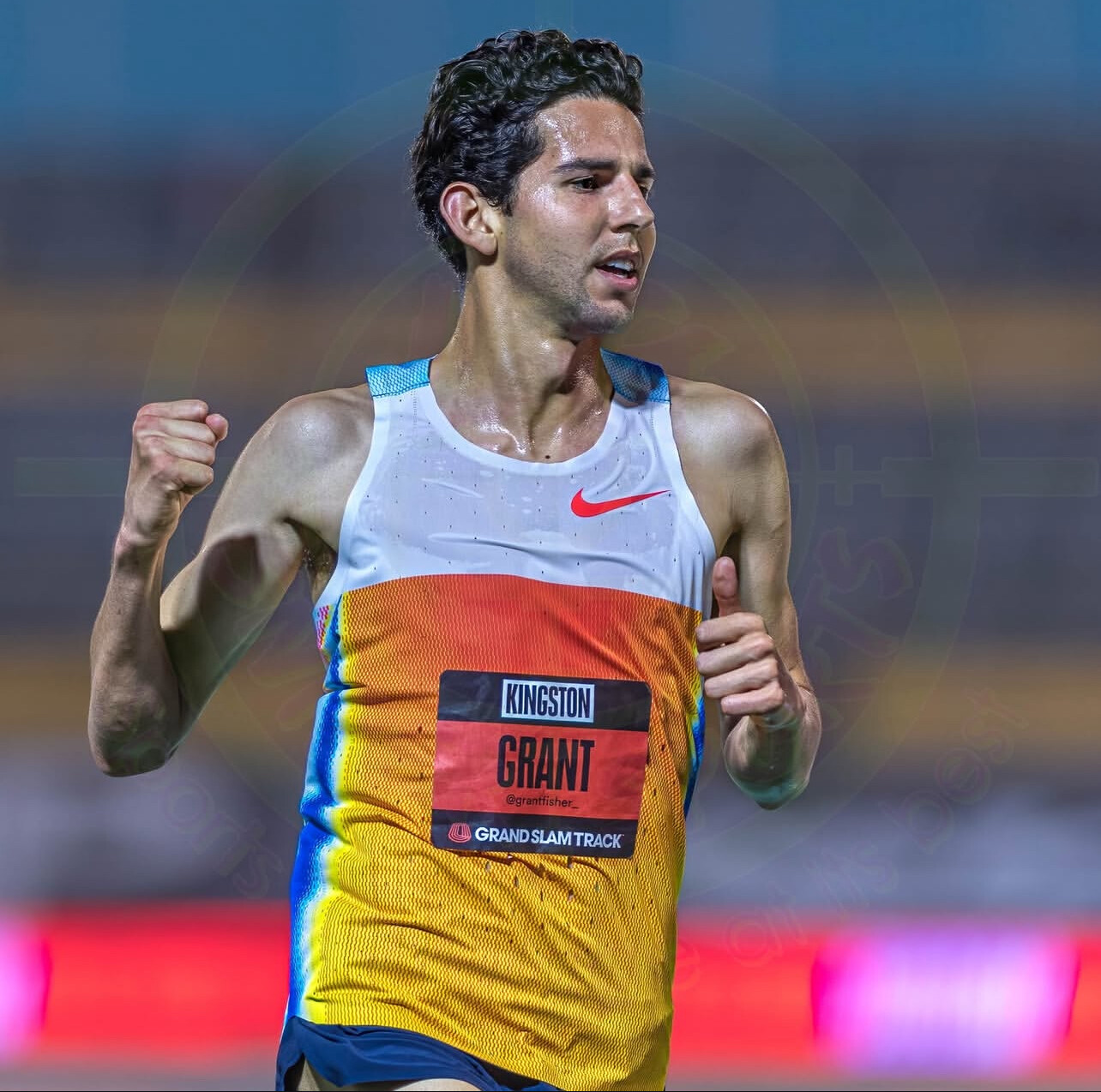
• 3rd place: 6 points
• 4th place: 5 points
• 5th place: 4 points
• 6th place: 3 points
• 7th place: 2 points
• 8th place: 1 point
The athlete with the highest combined score in each group is crowned the “Slam Champion” and awarded a $100,000 prize. In total, $1.2 million was distributed among the 12 group winners in Kingston, contributing to the event’s overall prize pool of $3.15 million.
Standout Performances
• Grant Fisher: The American distance runner secured the men’s long-distance Slam Champion title. Fisher won the 5000m in 14:39.14 and placed third in the 3000m with a time of 8:03.85, accumulating the highest points in his group and earning $100,000.
• Kenny Bednarek: Bednarek dominated the men’s short sprints, winning both the 100m in 10.07 seconds and 200m in 20.07 seconds. His flawless performance earned him the maximum 24 points and the $100,000 prize.
• Gabby Thomas: Thomas showcased her versatility by winning the women’s 200m in 22.62 seconds and finishing second in the 400m with a personal best of 49.14 seconds. Her combined results secured her the women’s long sprints title and a $100,000 award.
Challenges in Attracting Top Talent
Despite the substantial prize money and innovative format, the Grand Slam Track series has faced challenges in attracting some of the sport’s top athletes. Notably absent from the Kingston event were Olympic 100m champion Noah Lyles and double Olympic champion Jakob Ingebrigtsen. Lyles had previously indicated he would only participate if the league secured a broadcast partner, which it now has with deals on The CW and Peacock. However, he has yet to join the roster. Ingebrigtsen, on the other hand, reportedly declined participation due to the format requiring athletes to compete in two corresponding disciplines within an event category, which may not align with his specialization.
Financial and Attendance Concerns
The Kingston event, while successful in terms of athlete performances, struggled with low attendance. Reports indicate that the main grandstands never reached 50% capacity on any of the three days, with other sections remaining largely empty. Limited on-site parking and inadequate local marketing were cited as contributing factors to the sparse turnout. Financially, while the league has secured over $30 million in commitments from investors and strategic partners, the inaugural event’s low attendance and high operational costs suggest that it may have operated at a loss. However, organizers view this as a long-term investment in the sport’s revitalization.
Historical Context
Grand Slam Track is not the first attempt to establish a professional track and field league. The International Track Association (ITA), which operated from 1972 to 1976, initially attracted many top athletes but ultimately folded due to a lack of television revenue and difficulties in sustaining athlete participation. Similarly, the American Track League, founded more recently, has struggled to gain significant traction. These historical precedents highlight the challenges inherent in creating a sustainable professional track and field league.
Looking Ahead
The Grand Slam Track series continues with upcoming events in Miami (May 2–4), Philadelphia (May 30–June 1), and Los Angeles (June 20–22). Each meet follows the same format, offering athletes the opportunity to compete for significant prize money and fans the chance to witness high-stakes, head-to-head competition.
by Boris Baron
Login to leave a comment
Four World Records Ratified by World Athletics
World Athletics has officially ratified four remarkable world records set by Beatrice Chebet, Mondo Duplantis, Jakob Ingebrigtsen, and Toshikazu Yamanishi, underscoring a period of exceptional performances in track and field.
Beatrice Chebet: First Woman Under 14 Minutes for 5km
On December 31, 2024, Kenya’s Beatrice Chebet made history at the Cursa dels Nassos in Barcelona by completing the 5km road race in 13:54. This performance shattered the previous world record by 19 seconds, making her the first woman to break the 14-minute barrier for the distance on any surface.
Mondo Duplantis: Elevating the Pole Vault Record
Sweden’s Mondo Duplantis continued his dominance in pole vaulting by clearing 6.26 meters at the Wanda Diamond League meeting in Chorzów, Poland. This achievement added another centimeter to his own world record, marking his 11th career world record and solidifying his status as the greatest pole vaulter in history.
Jakob Ingebrigtsen: Breaking a Long-Standing 3000m Record
Norway’s Jakob Ingebrigtsen set a new world record in the 3000m with a time of 7:17.55 at the Wanda Diamond League meeting in Silesia. This performance broke the previous record of 7:20.67 set by Kenya’s Daniel Komen in 1996, ending a 28-year reign.
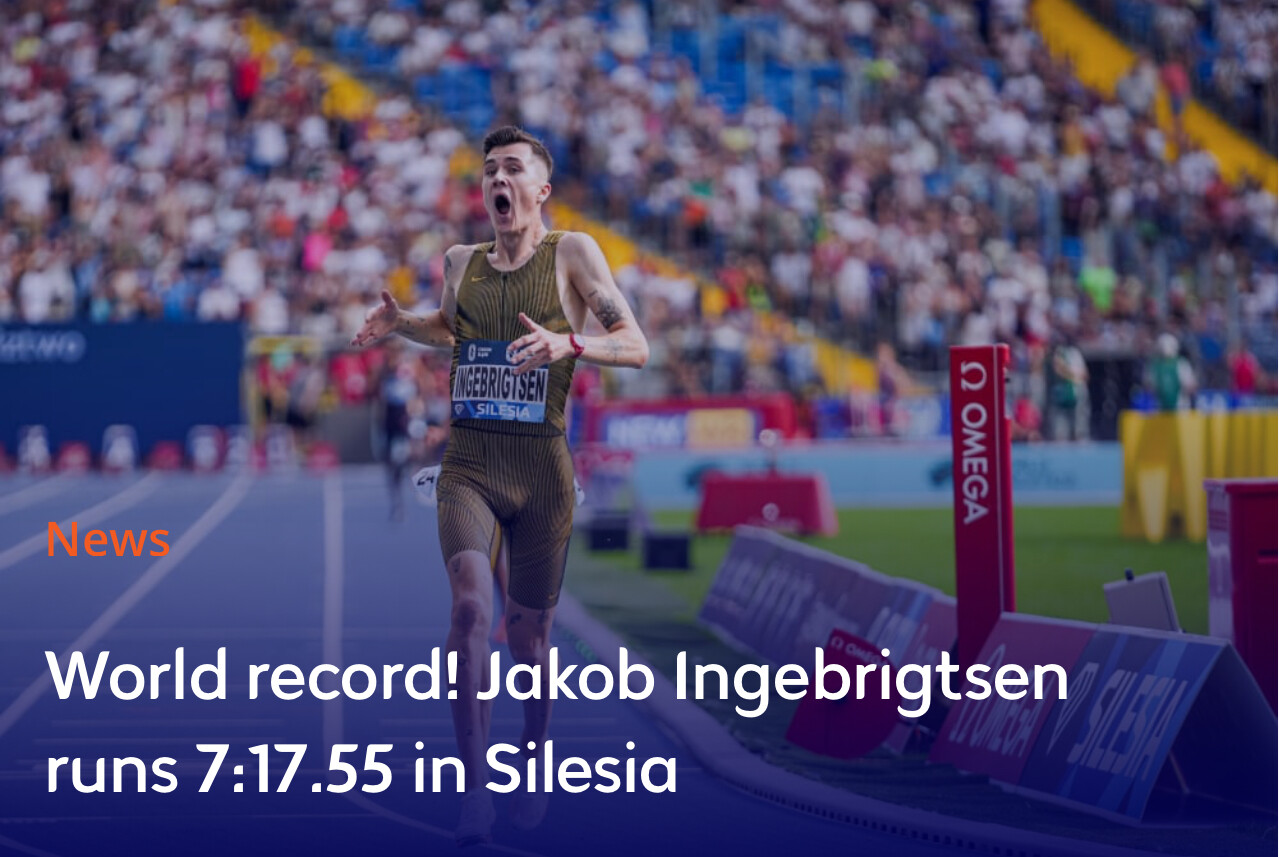
Toshikazu Yamanishi: Setting a New Standard in Race Walking
Japan’s Toshikazu Yamanishi established a new world record in the 20km race walk by finishing in 1:16:10 at the Japanese 20km Race Walking Championships in Kobe. This time surpassed the previous record of 1:16:36 set by fellow Japanese athlete Yusuke Suzuki in 2015.
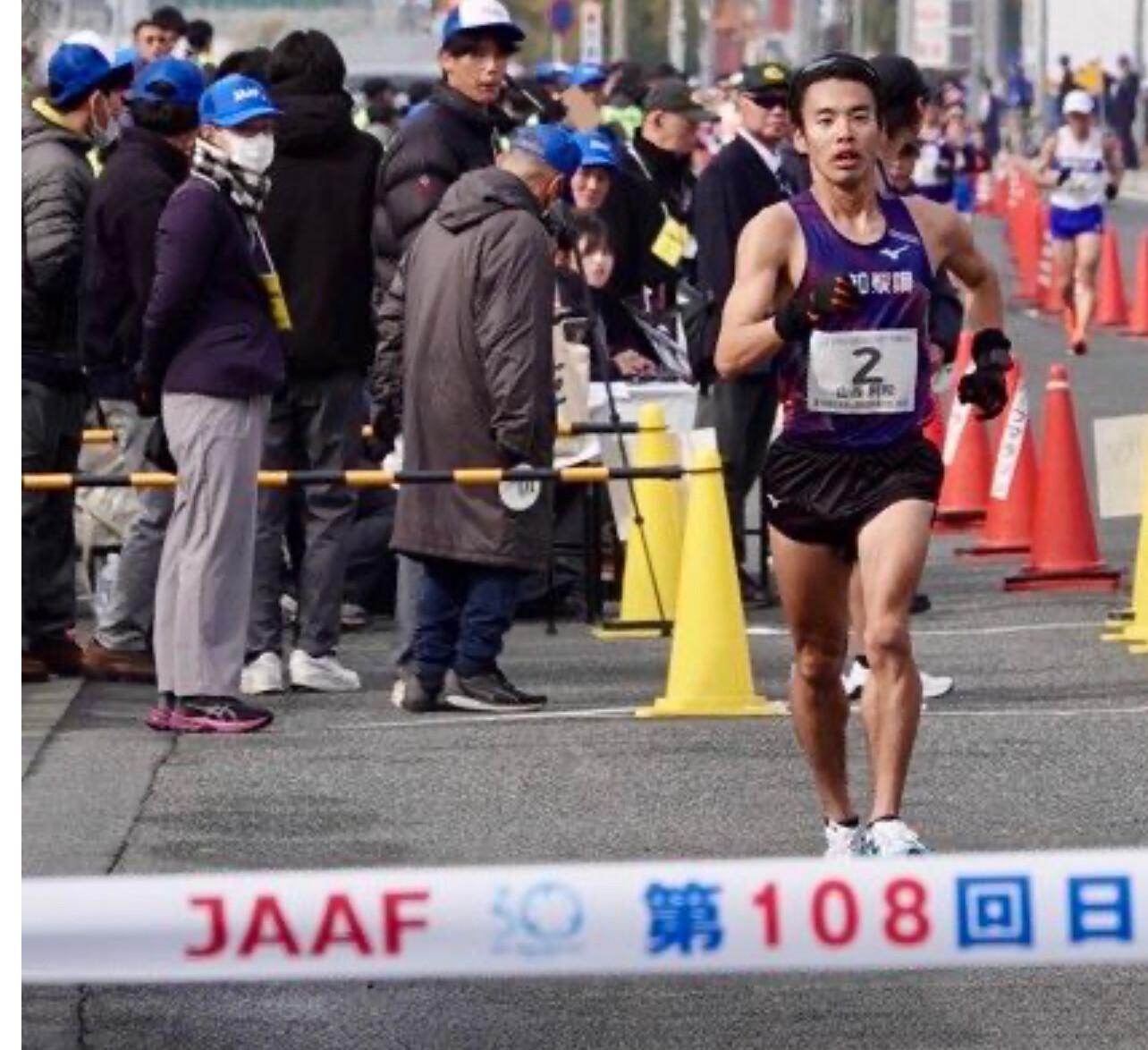
by Boris Baron
Login to leave a comment
Showdowns Set to Define 2025 Diamond League Season with over 9 million in prize money
With the season opener just days away, rivalries from 800m to 10,000m are heating up on the Road to Zurich
The 2025 Wanda Diamond League kicks off on April 26 in Xiamen, China, launching a new season of high-stakes track and field action. For the world’s best middle- and long-distance runners, this marks the beginning of the Road to the Final—a journey that will culminate in Zurich on August 27–28.

And if the early headlines are any indication, the upcoming season will be nothing short of electric.
Ingebrigtsen vs. Kerr: A Rivalry Rekindled
One of the fiercest rivalries in the sport will light up the men’s 1500m once again as Jakob Ingebrigtsen and Josh Kerr go head-to-head at the London Diamond League on July 19.
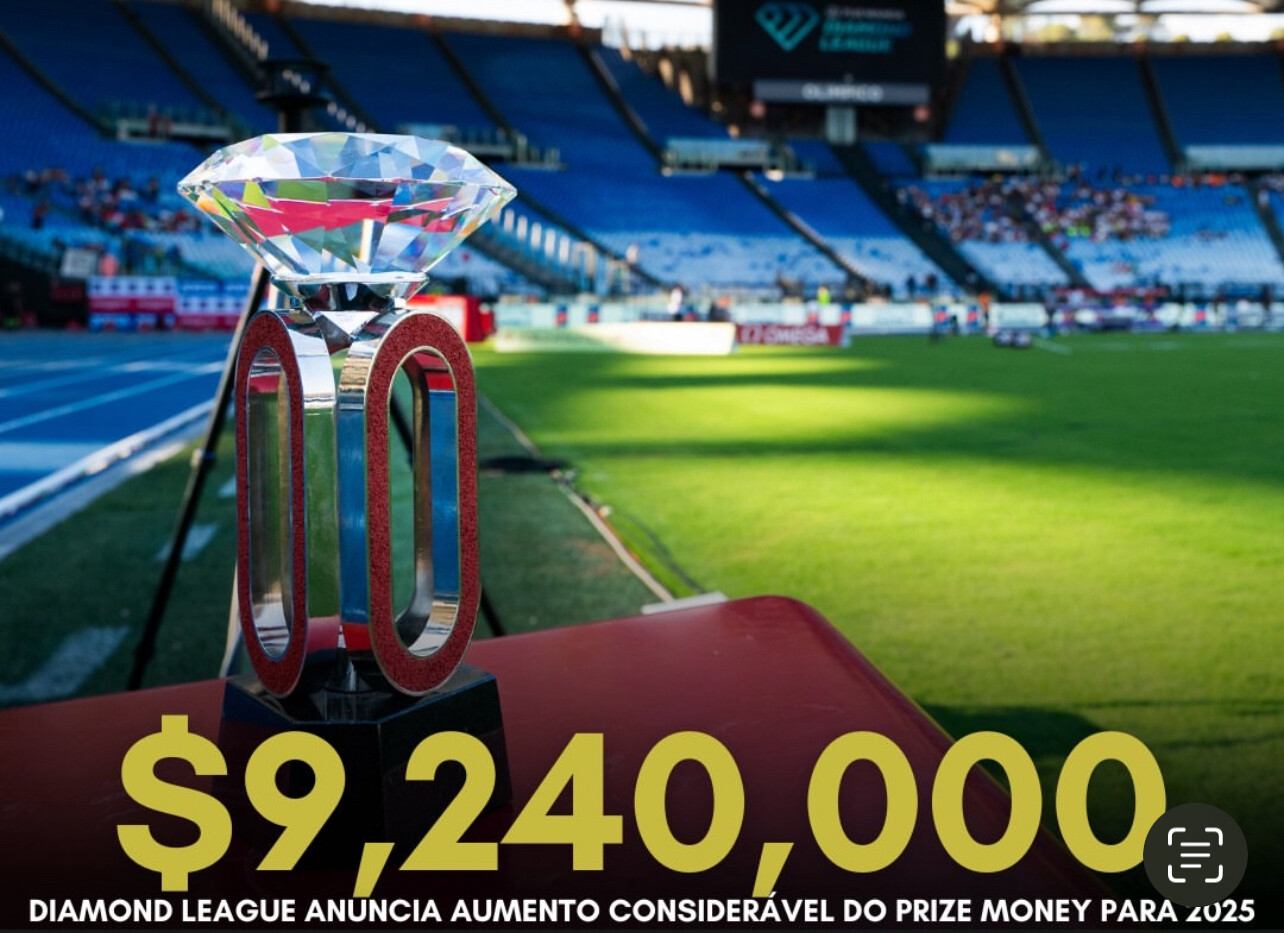
Their tension has been simmering since Kerr stunned Ingebrigtsen to win the world title in Budapest in 2023. The Norwegian responded with a strong victory in Zurich, but the scoreboard is far from settled.
Ingebrigtsen, now chasing his fifth career Diamond League title, will also line up against Olympic medalists Yared Nuguse and Cole Hocker in the Bowerman Mile at the Prefontaine Classic in Eugene on July 5, setting up another world-class clash.
Doha’s Steeplechase Rematch
The women’s 3000m steeplechase promises a rematch of Olympic proportions in Doha, where Winfred Yavi will face off against fellow medalists Peruth Chemutai and Faith Cherotich.
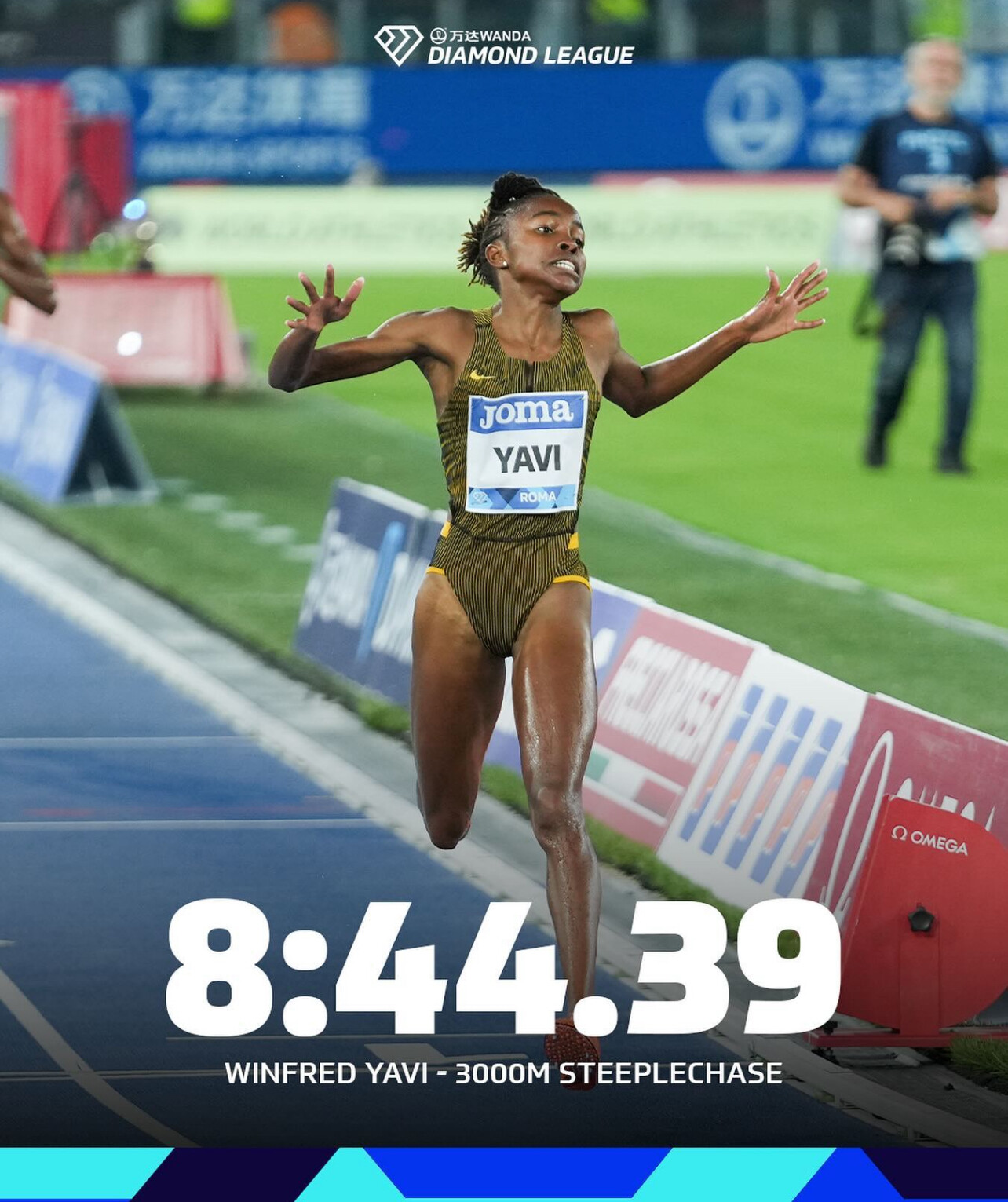
Yavi, the reigning Olympic champion, came within a whisker of the world record in Rome last season, while Cherotich enters 2025 as the Diamond League titleholder. Their early-season clash in Qatar could set the tone for one of the most compelling storylines in women’s distance running.
Eyes on Rome: A Distance-Lover’s Dream
The Pietro Mennea Golden Gala in Rome on June 6 is already shaping up to be one of the key middle- and long-distance showpieces of the year.
While final entries are still being confirmed, the women’s 800m is expected to feature a powerhouse lineup, potentially including Keely Hodgkinson, Athing Mu, and Mary Moraa. On the men’s side, stars like Emmanuel Wanyonyi, Marco Arop, and Djamel Sedjati are expected to battle for points in a crowded field of Olympic contenders.
Rome, known for producing fast times and historic finishes, could once again deliver career-defining performances.
2025: A Season Built for Distance Drama
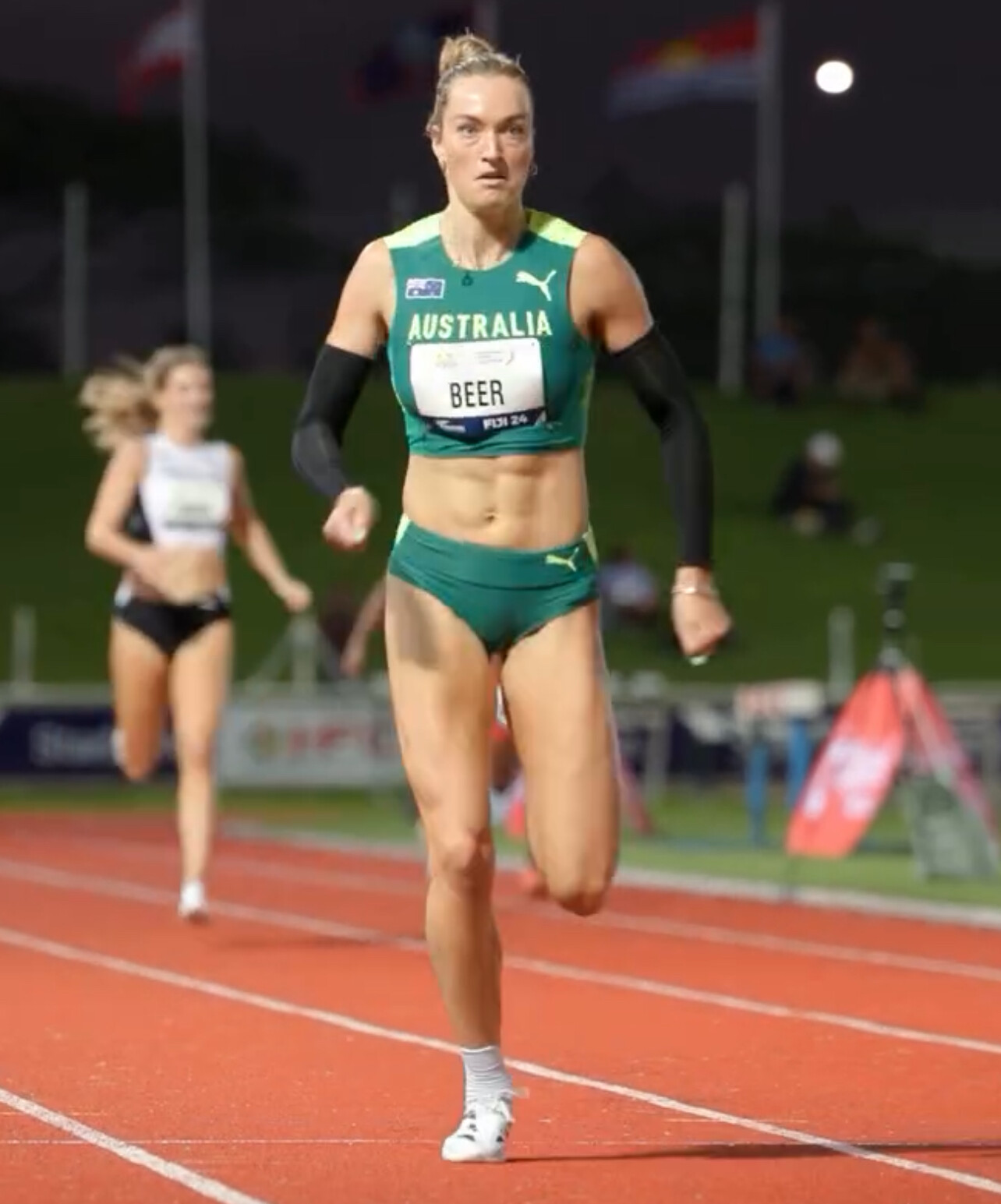
The Wanda Diamond League includes 14 series meets across four continents, leading to the two-day Final in Zurich, where only the top point-earners will compete for the Diamond Trophy. With increased prize money—ranging from $30,000 to $50,000 per discipline at series meetings and $60,000 to $100,000 at the Final—and millions watching worldwide, every race matters.
2025 is already shaping up to be a banner year for middle- and long-distance running. With fierce rivalries, Olympic-level fields, and rising stars chasing career breakthroughs in the 800m, 1500m, mile, steeplechase, 5000m, and 10,000m, the stage is set for one of the most thrilling Diamond League seasons yet.
by Boris Baron
Login to leave a comment
Cole Hocker Is Just Getting Started
Cole Hocker’s rise from NCAA standout to Olympic champion has been anything but conventional. After winning gold in the 1500 meters at the 2024 Paris Olympics with a stunning 3:27.65—an Olympic record—Hocker has emerged as one of the most formidable middle-distance runners in the world.
Training in the Shadows
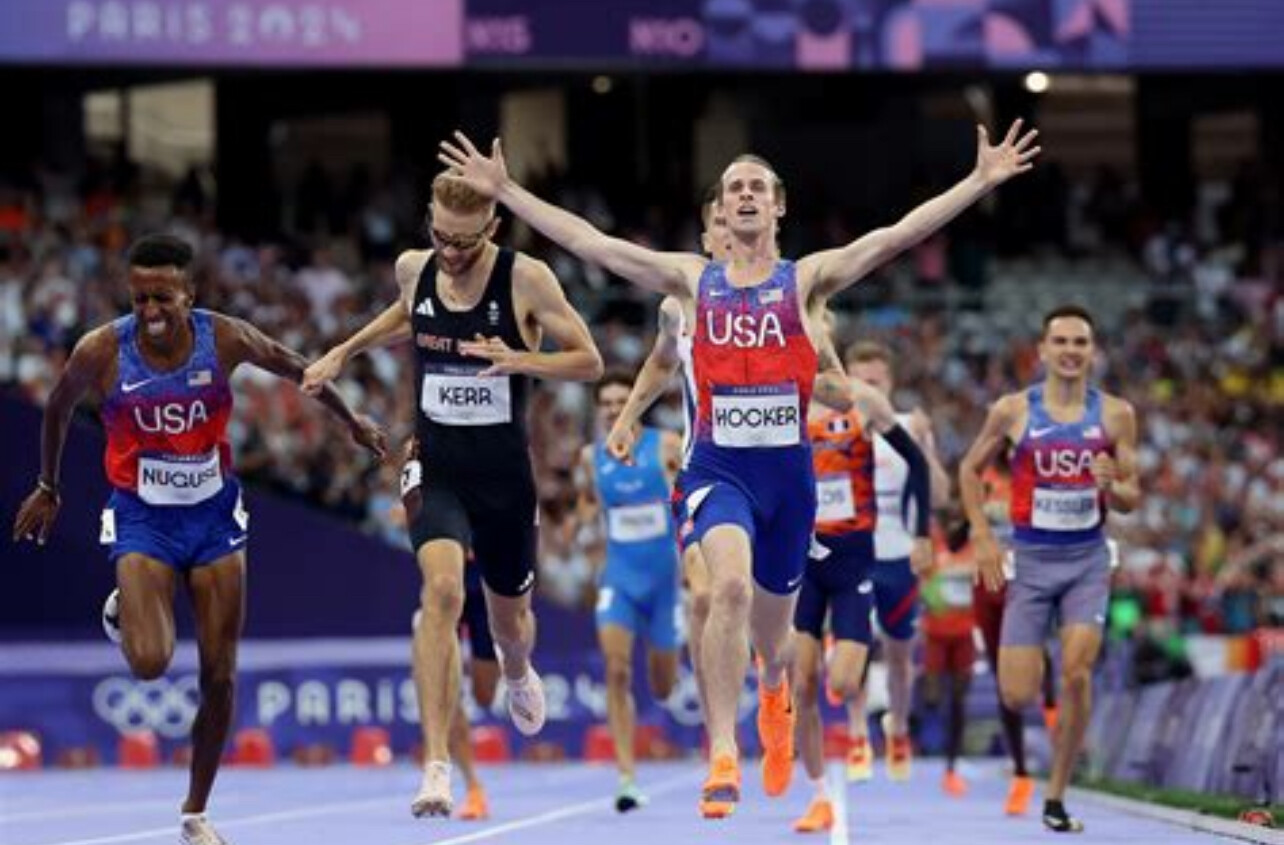
While many elite runners chase the spotlight, Hocker has chosen a different path. He trains in the quiet town of Blacksburg, Virginia, under the guidance of longtime coach Ben Thomas. Alongside training partner Cooper Teare, Hocker focuses on a regimen that emphasizes quality over quantity, rarely exceeding 80 miles per week. Their workouts often include hill repeats, pace variability, and strategic rest days, fostering both physical endurance and mental resilience.
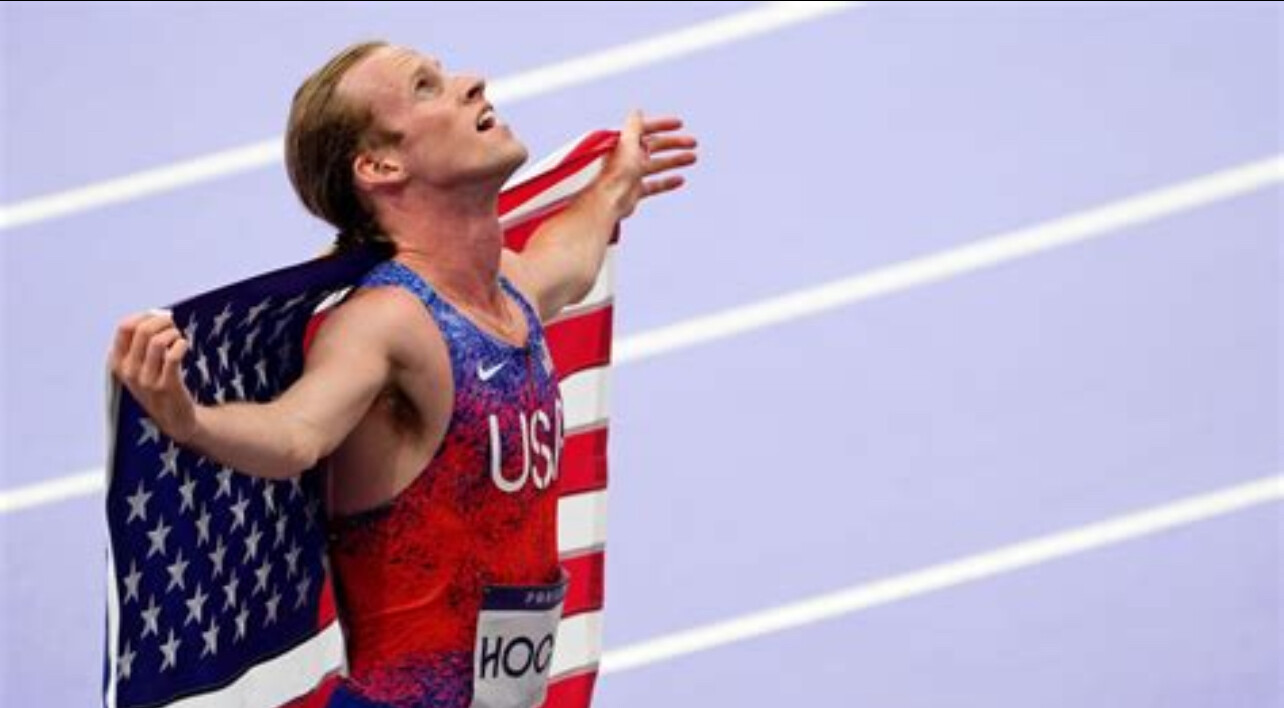
Expanding His Range
Hocker isn’t content with dominating just the 1500 meters. In 2025, he has set his sights on longer distances, competing in the 3000 meters at the Millrose Games and clocking a personal best of 7:23.14, making him the second-fastest American ever at that distance. He also achieved a 5000-meter personal best of 12:57.82 at the BU Terrier DMR Challenge, securing the world standard for the upcoming World Championships.
Upcoming Showdowns
Hocker’s competitive spirit will be on full display at the 2025 Prefontaine Classic’s Bowerman Mile, where he will face off against rivals Jakob Ingebrigtsen and Yared Nuguse. This race promises to be a thrilling encounter among some of the world’s best middle-distance runners.
A Relentless Competitor
What sets Hocker apart isn’t just his physical prowess but his mental tenacity. Despite setbacks and fierce competition, he maintains an unwavering belief in his abilities. As he continues to push the boundaries of his sport, Hocker remains a testament to the power of determination and strategic training.
by Boris Baron
Login to leave a comment
Ingebrigtsen Ready to Battle Hocker and Kerr on Their Home Turf—All Roads Lead to Tokyo
Jakob Ingebrigtsen is preparing for two of the most anticipated races of the 2025 Diamond League season—each taking place on the home turf of his fiercest rivals.
The double world indoor champion is set to headline the Bowerman Mile at the Prefontaine Classic in Eugene on July 5, where he’ll take on U.S. Olympic gold medalist Cole Hocker and American 1500m record-holder Yared Nuguse. Then, on July 19, he travels to London for a highly anticipated 1500m duel against Great Britain’s world champion Josh Kerr—who will be racing in front of a home crowd.
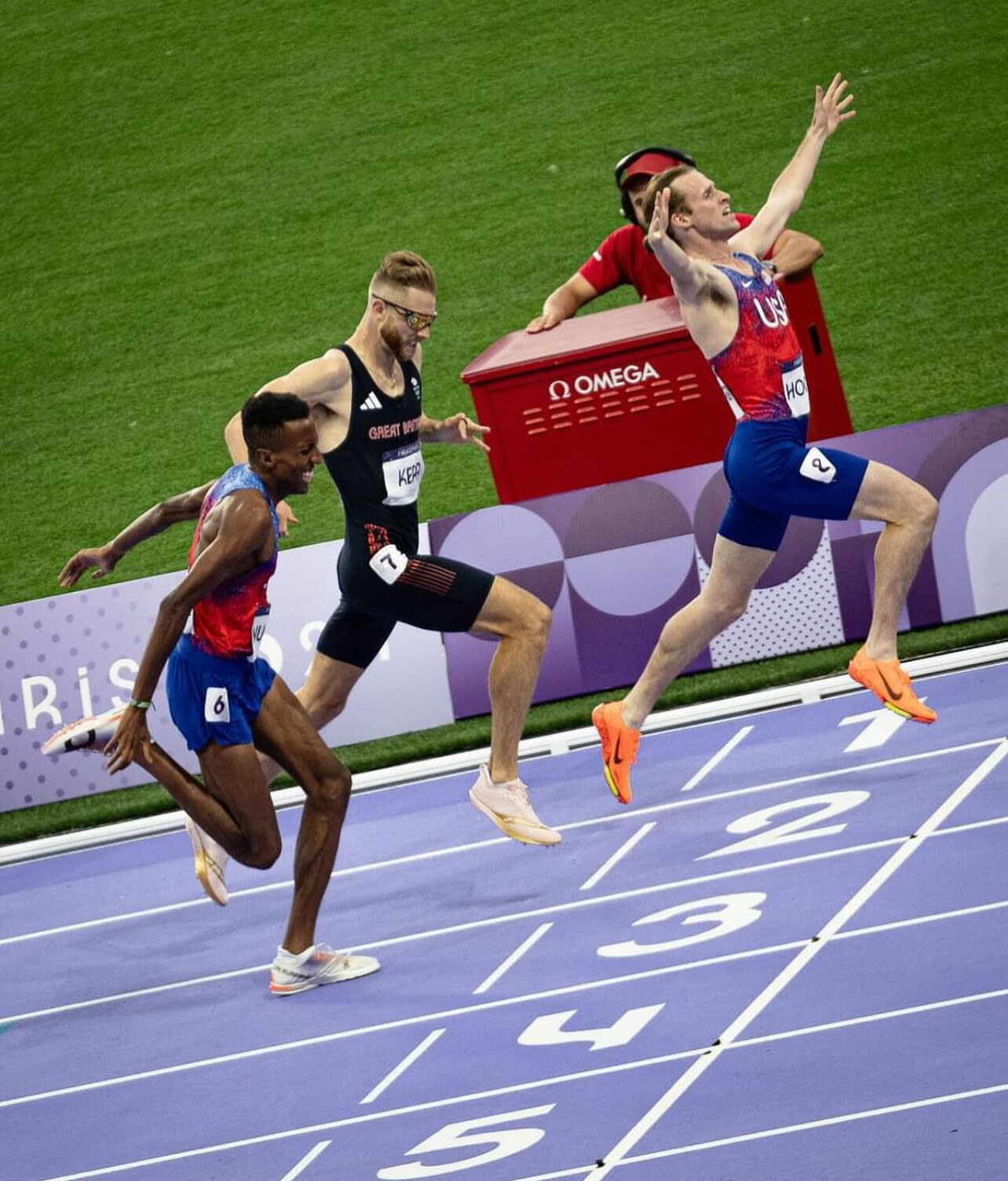
Ingebrigtsen, last season’s Diamond League overall champion, is no stranger to success at Hayward Field. At the 2023 Diamond League Final, he delivered a blazing 3:43.73 in the Bowerman Mile—setting both a European and Diamond League record. But this year, the challenge is steeper. Both Hocker and Nuguse outkicked him in the 1500m final at the 2024 Paris Olympics, and they’ll be looking to repeat that feat on home soil.
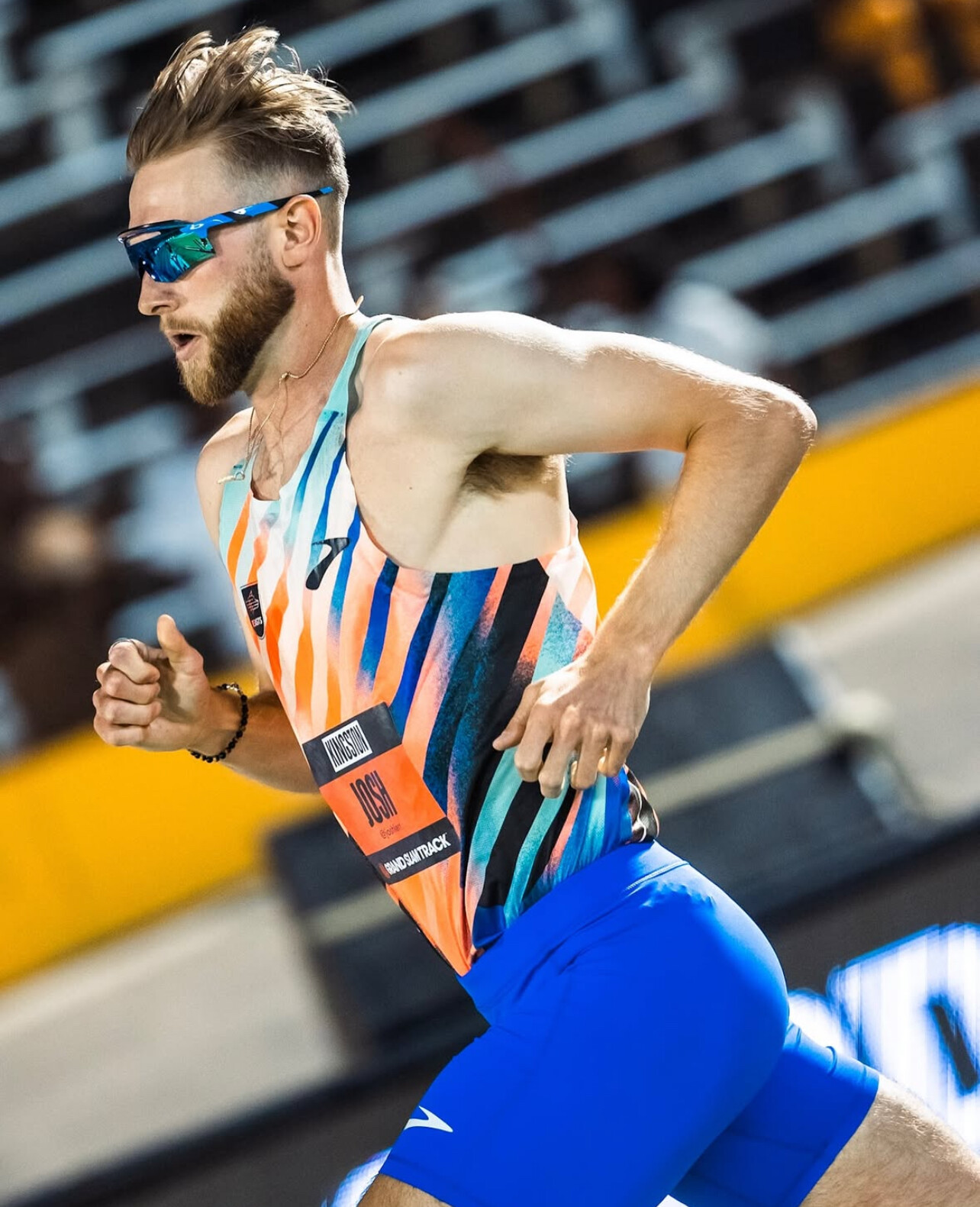
And in London, the rivalry with Kerr will reignite. The Brit also finished ahead of Ingebrigtsen in Paris, and the 1500m clash in front of a UK crowd will be packed with tension and stakes.
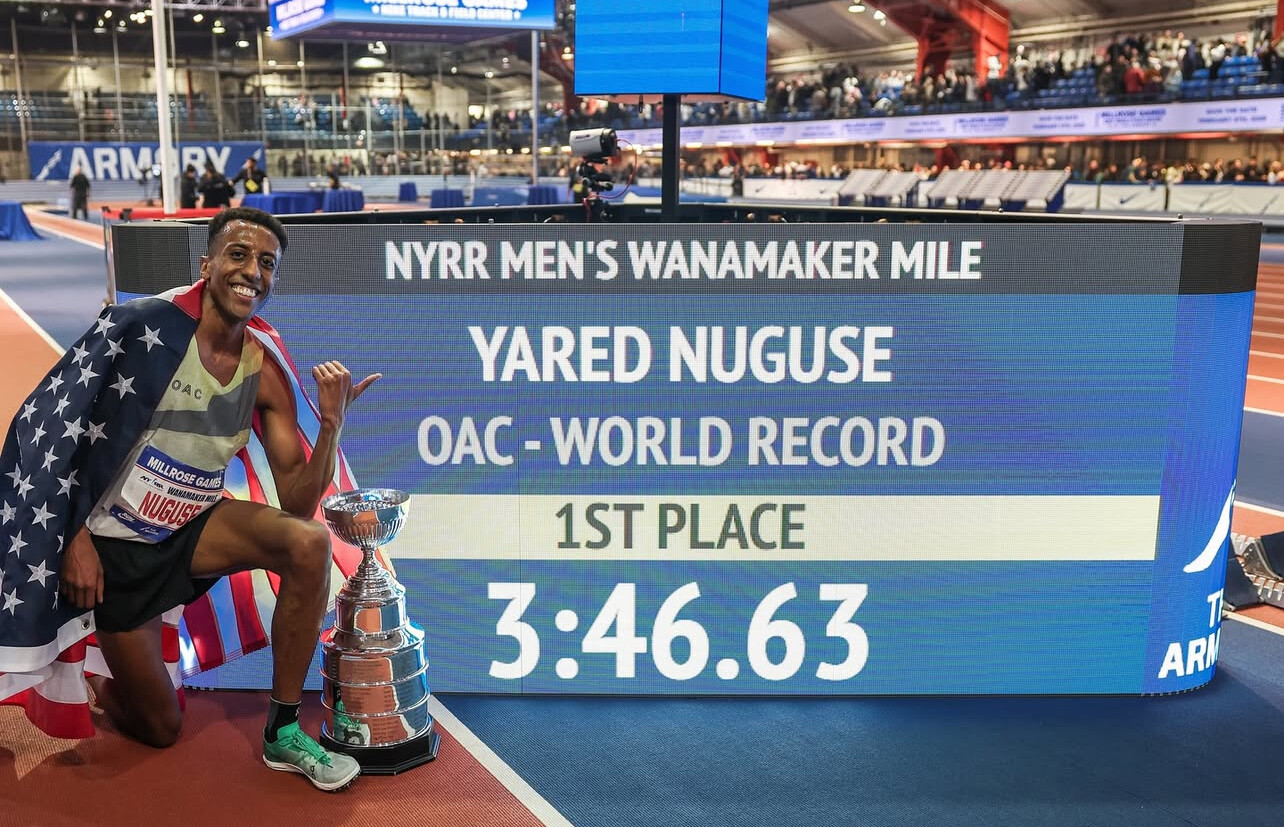
“I’ve recovered well from the indoors and training is going well,” said Ingebrigtsen, who claimed double gold in the 1500m and 3000m at both the World and European Indoor Championships this spring. Earlier this season, he also broke the world indoor records for the mile and 1500m in Lievin.
“I’ve never been afraid to show up, and it felt good to come away from indoors with four gold medals. My focus now is on the summer—and on returning to Tokyo, where I won Olympic gold in 2021, to win another global title.”
That return to Tokyo refers to the 2025 World Athletics Championships, where Ingebrigtsen hopes to reaffirm his dominance on the global stage after back-to-back Olympic defeats.
My Best Runs founder and lifetime runner Bob Anderson shared his thoughts on the coming matchups.
“I’m so impressed by the spirit Jakob Ingebrigtsen brings to our sport,” Anderson said. “His confidence is electric—he’s a showman, and often has most of the field beaten at the starting line. But Josh Kerr and Cole Hocker aren’t backing down. They have their own vision of who will cross the line first. That’s what makes these showdowns so compelling.”
by Boris Baron
Login to leave a comment
Ingebrigtsen and Kerr Set to Renew Rivalry at London Athletics Meet
The middle-distance running world is abuzz as Norway’s Jakob Ingebrigtsen and Great Britain’s Josh Kerr prepare to face off in the 1500m at the London Athletics Meet on July 19, 2025. This highly anticipated race marks their first encounter on British soil, adding another chapter to their compelling rivalry.
A Rivalry Rekindled
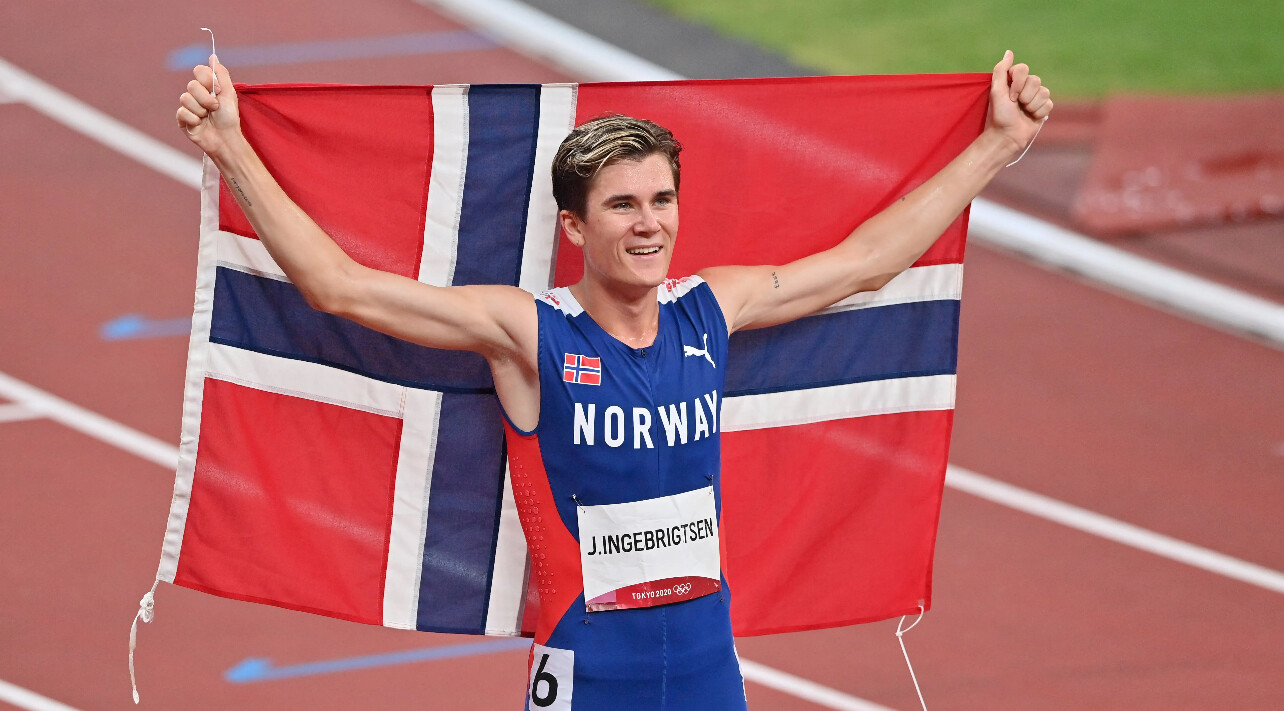
Ingebrigtsen, the Olympic 1500m champion from Tokyo 2021, has an impressive track record, including multiple European titles and world records in various indoor distances. Despite finishing fourth in the 1500m at the Paris 2024 Olympics, he clinched gold in the 5000m shortly after. Kerr, on the other hand, secured the 1500m world title in Budapest 2023 and followed up with a silver medal at the Paris Olympics, setting a British record of 3:27.79. Their on-track battles have been complemented by off-track exchanges, heightening the intrigue surrounding their matchups.

London Showdown
The upcoming race at the London Stadium is more than just a competition; it’s a strategic stepping stone for both athletes as they gear up for the World Championships in Tokyo later this year. Ingebrigtsen emphasized the significance of this meet, stating, “Competing in London is a crucial part of my build-up, and I know the atmosphere will be incredible.” Kerr echoed this sentiment, highlighting his ambition to defend his world title and the importance of the London race in his preparations.
Event Significance
The London Athletics Meet is a premier fixture in the 2025 Wanda Diamond League, renowned for attracting top-tier talent and delivering memorable performances. With over 50,000 tickets already sold, the event underscores the UK’s passion for athletics and promises an electrifying atmosphere for this marquee matchup.
As the date approaches, fans and analysts alike are eager to witness whether Kerr can leverage his home advantage or if Ingebrigtsen will reaffirm his dominance. One thing is certain: the London Athletics Meet will be a pivotal moment in the 2025 athletics calendar.

Stay tuned to My Best Runs for comprehensive coverage of the London Athletics Meet and insights into the evolving landscape of elite middle-distance running.
by Boris Baron
Login to leave a comment
Cameron Myers - Australia’s Middle-Distance Prodigy Breaking Records
Cameron Myers, an 18-year-old Australian middle-distance runner from Canberra, has rapidly ascended in the athletics world, setting multiple records and showcasing exceptional talent on the international stage.
Early Life and Training
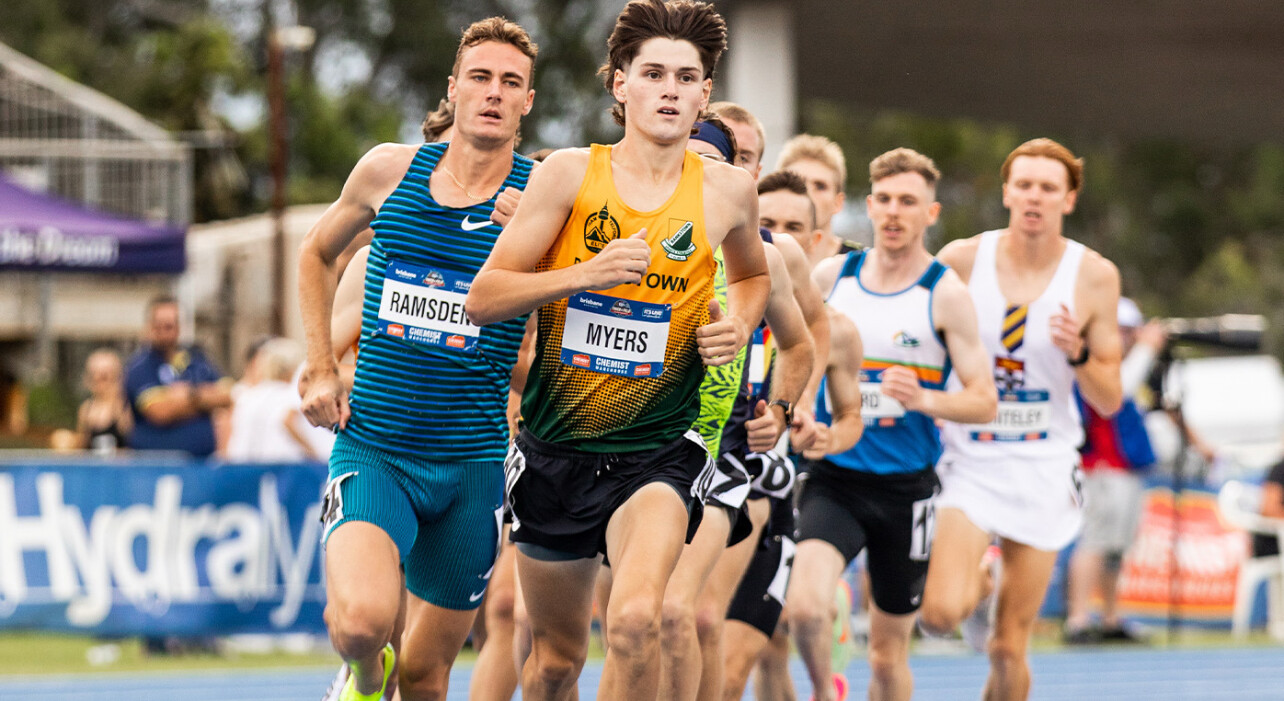
Myers began his athletic journey at the age of 10 under the guidance of coach Lee Bobbin. By 14, he transitioned to training with renowned coach Dick Telford, integrating into a group that included Olympian Jye Edwards. This foundational period was crucial in developing the skills that would later define his career.

Record-Breaking Performances
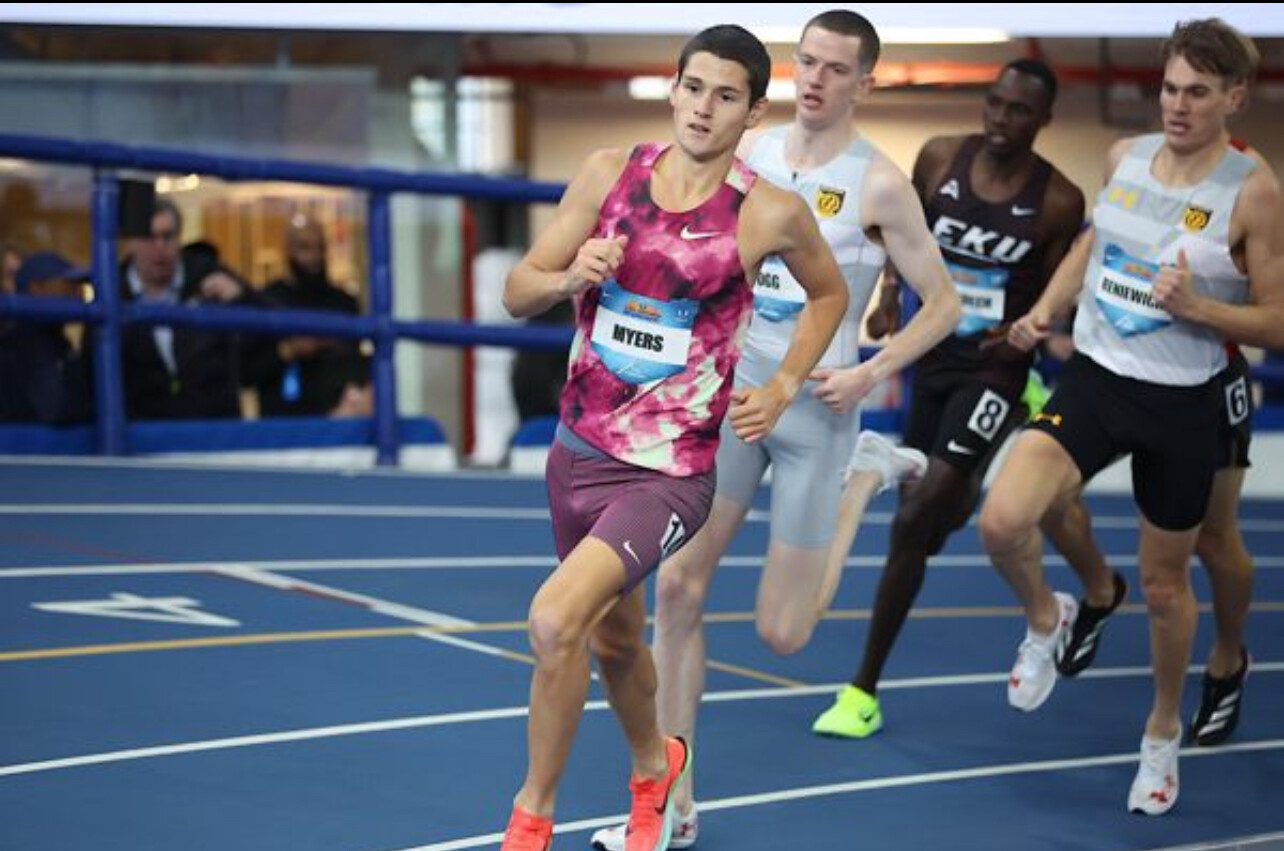
In February 2023, at just 16 years and 259 days old, Myers became the second-youngest person ever to run a sub-four-minute mile, clocking 3:55.44 at the Maurie Plant Meet in Melbourne. This performance surpassed Jakob Ingebrigtsen’s age-group record by over two seconds. Later that year, he set a world U18 best in the 1500m with a time of 3:33.26 at the Diamond League event in Chorzów, Poland.
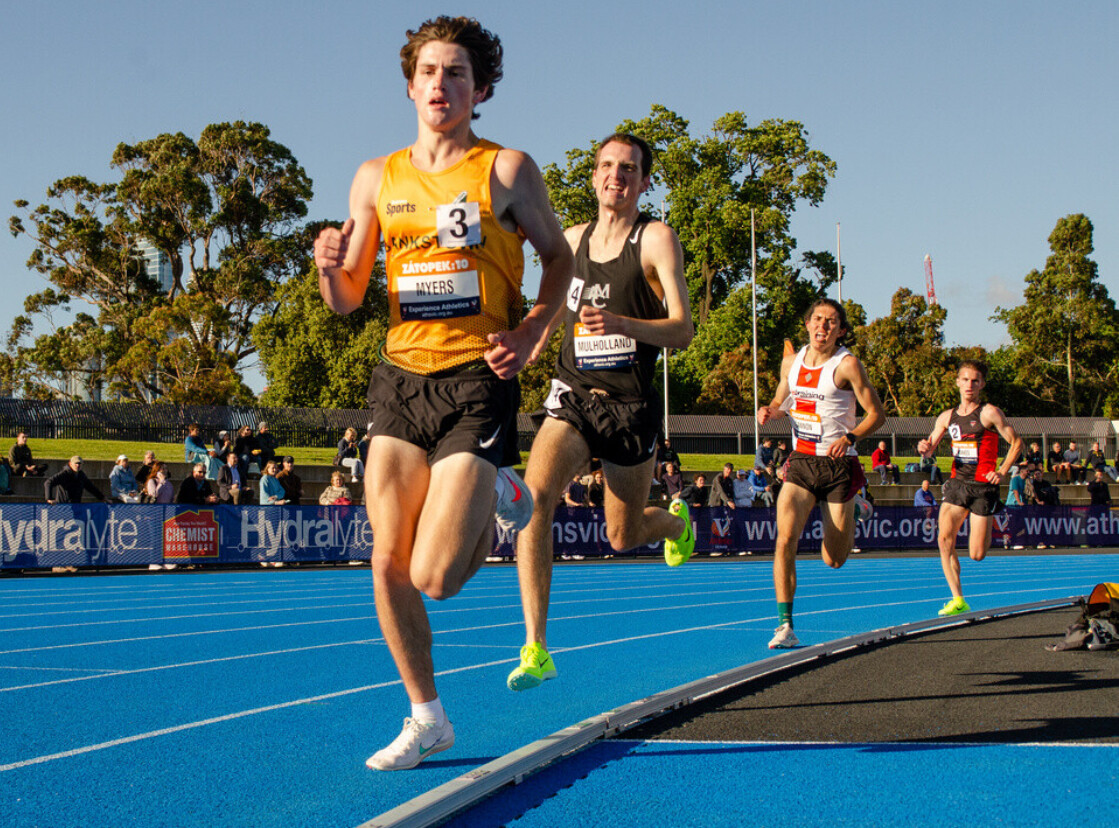
Continuing his upward trajectory, Myers began 2025 with a series of remarkable achievements. On January 25, he shattered the world U20 indoor mile record at the Dr. Sander Invitational in New York, posting a time of 3:53.12. This feat eclipsed the previous record held since 2009. A week later, at the New Balance Indoor Grand Prix in Boston, he set a national record in the 3000m, finishing in 7:33.12.
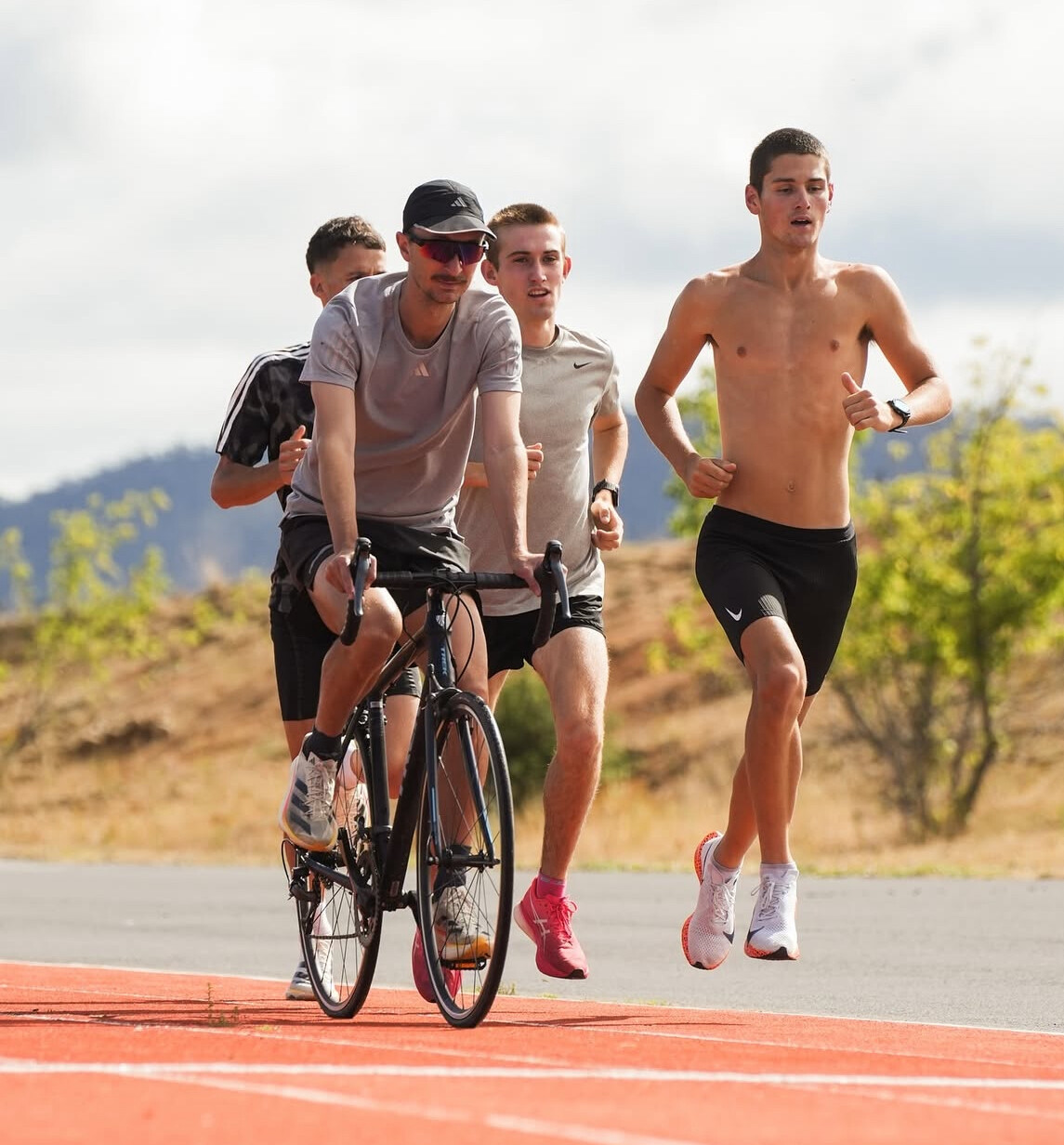
Recent Competitions
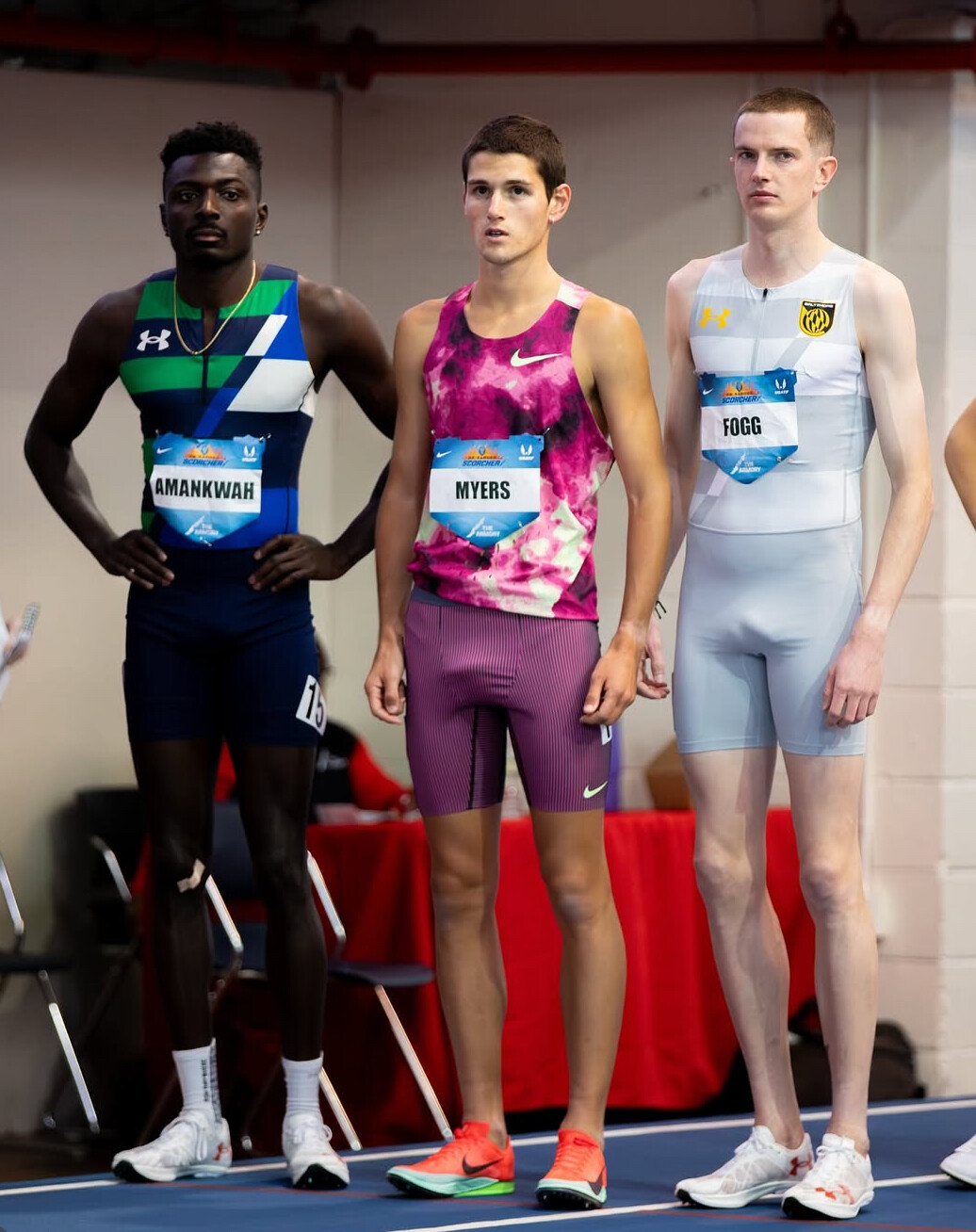
In February 2025, Myers competed in the prestigious Wanamaker Mile at the Millrose Games in New York. Facing a field that included Olympic medalists, he secured third place with a time of 3:47.48, breaking his own world U20 mile record and equaling the Australian national record set by Oliver Hoare in 2022. This performance also marked the first time an under-20 athlete ran the mile in under 3:48.
Most recently, on March 29, 2025, Myers led the 1500m from start to finish at the Maurie Plant Meet in Melbourne, winning with a time of 3:34.98. His commanding performance against a competitive field further solidified his status as a rising star in middle-distance running.
Training and Future Aspirations
Under Telford’s mentorship, Myers has intensified his training regimen, incorporating strength training, altitude sessions, and rigorous threshold workouts to address areas of improvement. Despite narrowly missing qualification for the Paris Olympics, these experiences have fueled his determination to excel in future competitions. With his current trajectory, Myers is poised to make significant contributions to Australian athletics on the global stage.
by Boris Baron
Login to leave a comment
Sam Ruthe to Compete in 3200-Meter Race at Arcadia Invitational on His 16th Birthday
On April 12, 2025, the day he turns 16, New Zealand’s rising distance running star Sam Ruthe will compete in the 3200-meter race at the prestigious Arcadia Invitational in California. This event, renowned as the “Home of National Records,” is considered the most competitive high school track and field meet in the United States. It is held annually at Arcadia High School in Arcadia, California.
Sam’s participation follows a series of remarkable achievements. On March 19, at just 15, he became the youngest person ever to run a sub-four-minute mile, clocking 3:58.35 at Auckland’s Go Media Stadium. This feat surpassed the previous record held by Norway’s Jakob Ingebrigtsen, who ran a sub-four-minute mile at 16 years and 250 days. Continuing his impressive form, Sam set a new world age-15 best in the 1500 meters with a time of 3:40.12 at the Maurie Plant Meet in Melbourne on March 29.
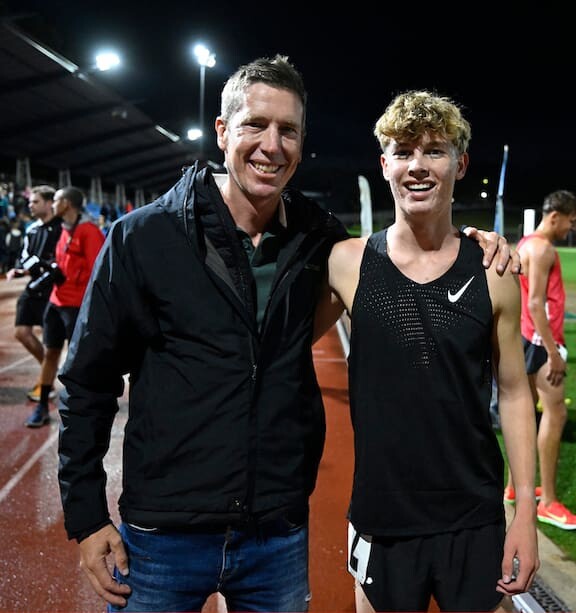
The Arcadia Invitational’s 3200-meter race has been a platform for outstanding performances. In April 2023, Simeon Birnbaum set a meet record with a time of 8:34.10. The following year, 37 boys achieved sub-9-minute times in the 3200 meters, highlighting the event’s competitive depth.
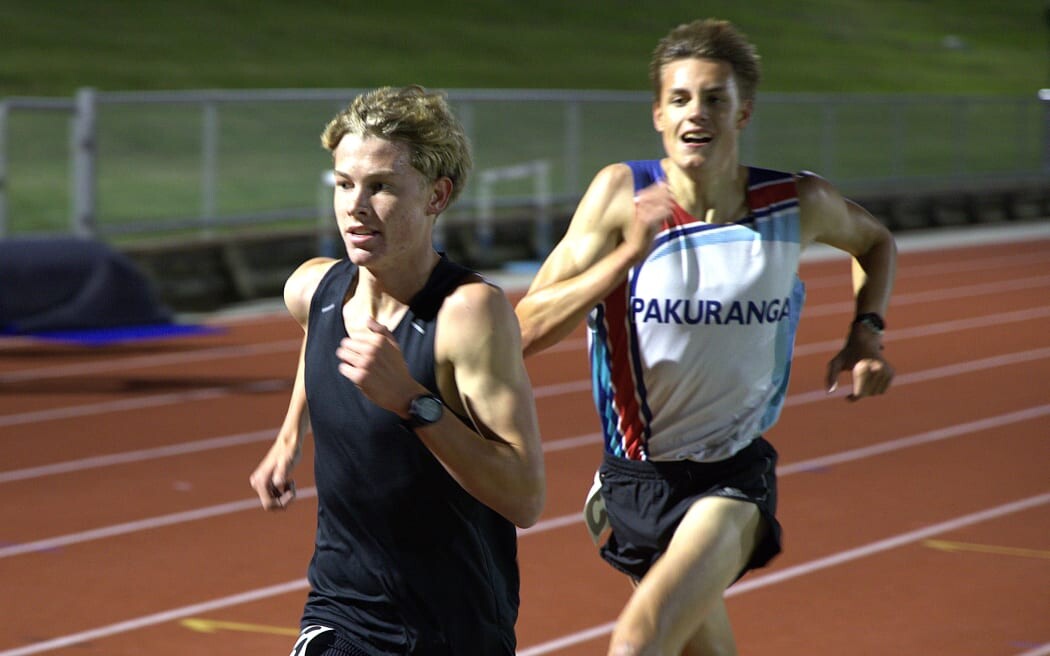
As Sam prepares to compete against top high school athletes in this challenging race, his recent accomplishments suggest he is poised to make a significant impact. Whether aiming for a personal best or seeking to challenge meet records, Sam’s 16th birthday race at Arcadia promises to be a memorable milestone in his burgeoning.
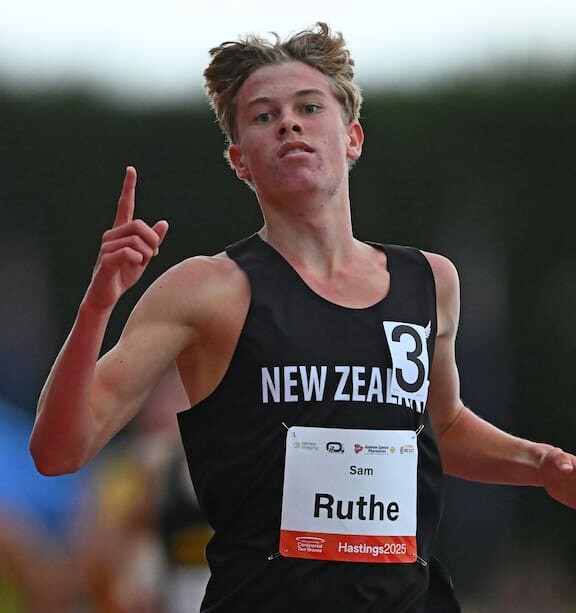
by Boris Baron
Login to leave a comment
Sam Ruthe runs a sub four minute mile and sells his spikes for $7643US and then donated the funds to his coach and team
At just 15 years old, Sam Ruthe has captivated the athletics world with his extraordinary performances and commendable generosity.
Historic Sub-Four-Minute Mile
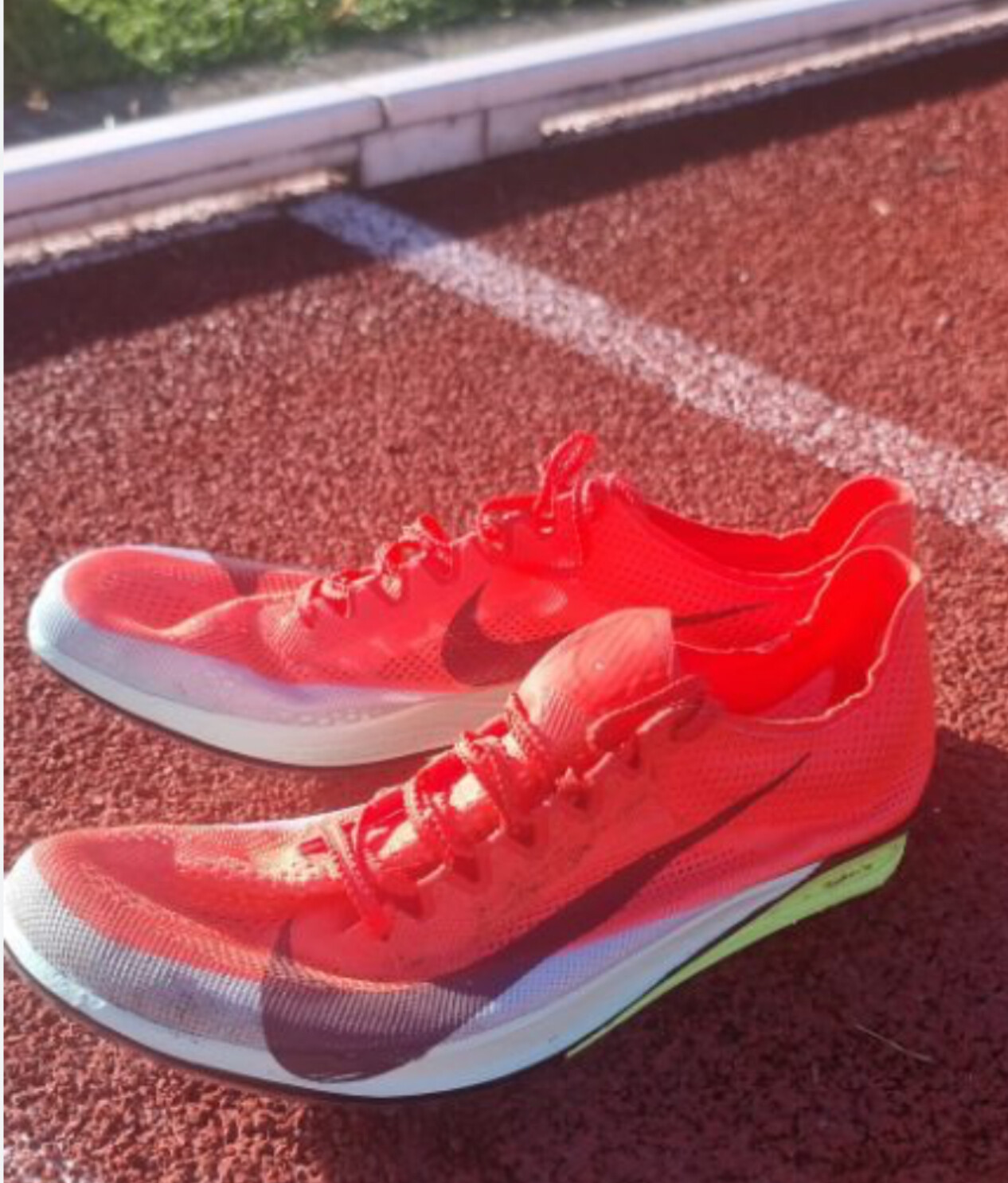
On March 19, 2025, at Auckland’s Mt Smart Stadium, Ruthe made history by becoming the youngest person ever to run a mile in under four minutes. Clocking a remarkable 3:58.35, he surpassed the previous age record held by Norway’s Jakob Ingebrigtsen, who ran 3:58.07 at 16. This achievement places Ruthe among an elite group of middle-distance runners and underscores his immense potential.
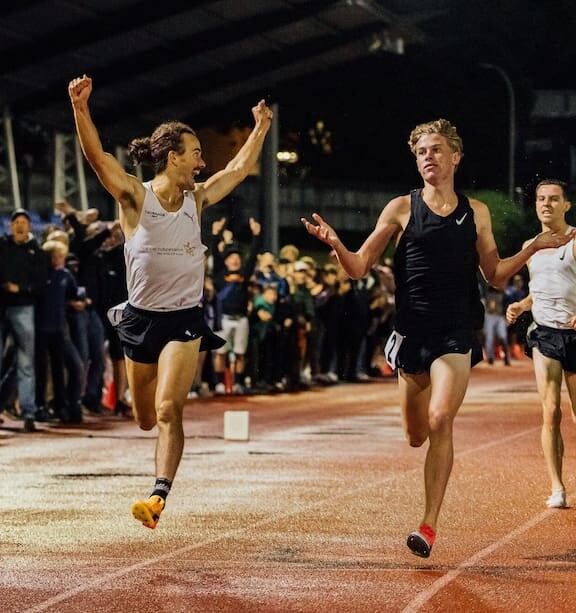
Auctioning Historic Spikes for Team Support
Following this milestone, Ruthe chose to auction the Nike Dragonfly 2 Elite spikes he wore during the race to support his training group. The TradeMe auction concluded on March 29, 2025, raising $11,408.35 NZD (approximately $7,643.59 USD). The size 10.5 US spikes attracted 151 bids and over 50,000 views, making it the most viewed auction on the platform this year. Ruthe’s coach, Craig Kirkwood, expressed gratitude, noting that the funds will benefit the training group in ways previously unattainable.
Continued Excellence on the Track
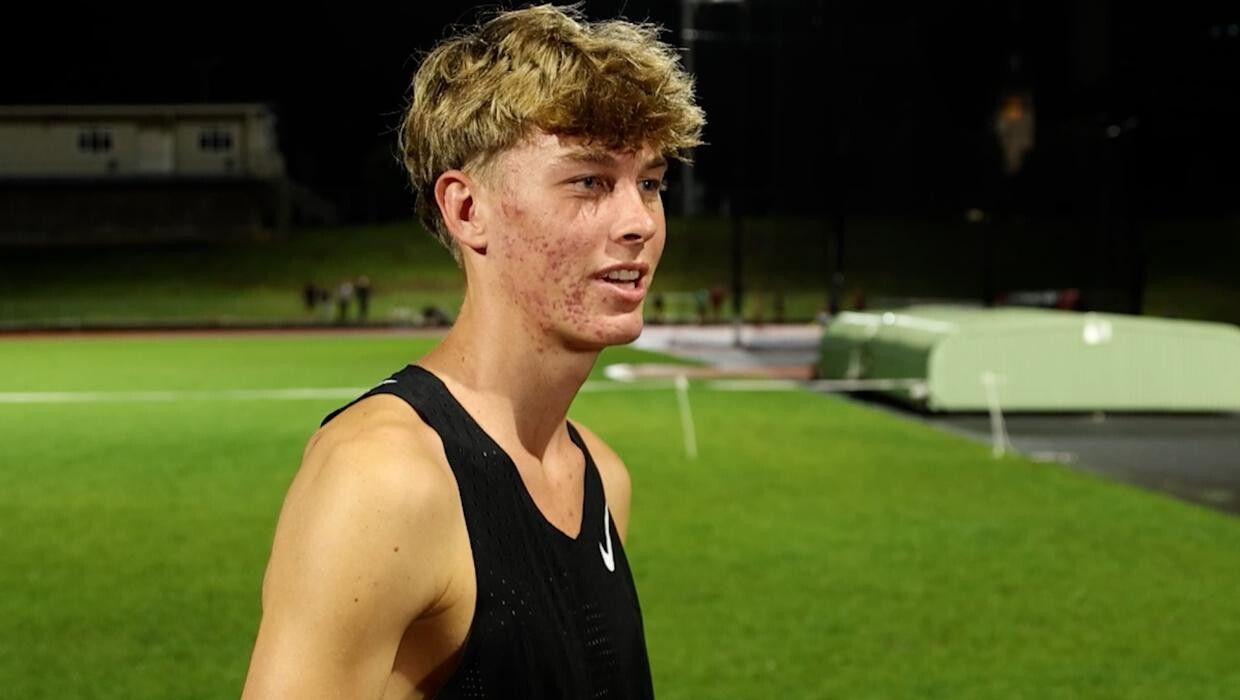
Ruthe’s success extends beyond the mile. In February 2025, he set a world age-best time over 1500 meters, and in March 2025, he became the youngest man to win a senior national title in the 3000 meters at Hastings. He then shared the 1500 meters title with training partner Sam Tanner at the national championships in Dunedin.
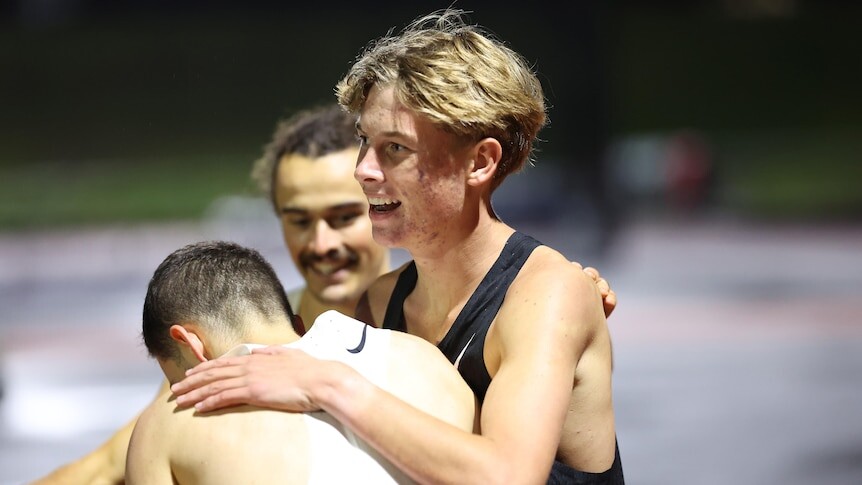
Looking Ahead

He concluded his southern hemisphere racing schedule on March 29, 2025, at the Maurie Plant Meet in Melbourne. Competing against a strong field, he finished seventh in the 1500 meters, recording a personal best of 3:40.12, further lowering his world age-best mark.
Sam Ruthe’s blend of athletic excellence and altruism not only highlights his dedication to his sport but also his commitment to uplifting those around him. As he continues to break records and support his peers, the running community eagerly anticipates his future endeavors.
"Sam is a class act," says Bob Anderson "we need more runners like Sam in our sport."
by Boris Baron
Login to leave a comment
Neil Gourley Sets Sights on 1500m World Title: “It’s My Turn at the Top of the Podium”
After clinching his first global medal at the World Athletics Indoor Championships in Nanjing, you is setting his sights on something even bigger: gold in the 1500m at this year’s World Championships in Tokyo.
The Scottish middle-distance star delivered a commanding performance indoors, earning silver behind Norway’s Jakob Ingebrigtsen. But for Gourley, it wasn’t just about the medal—it was about momentum. And belief.
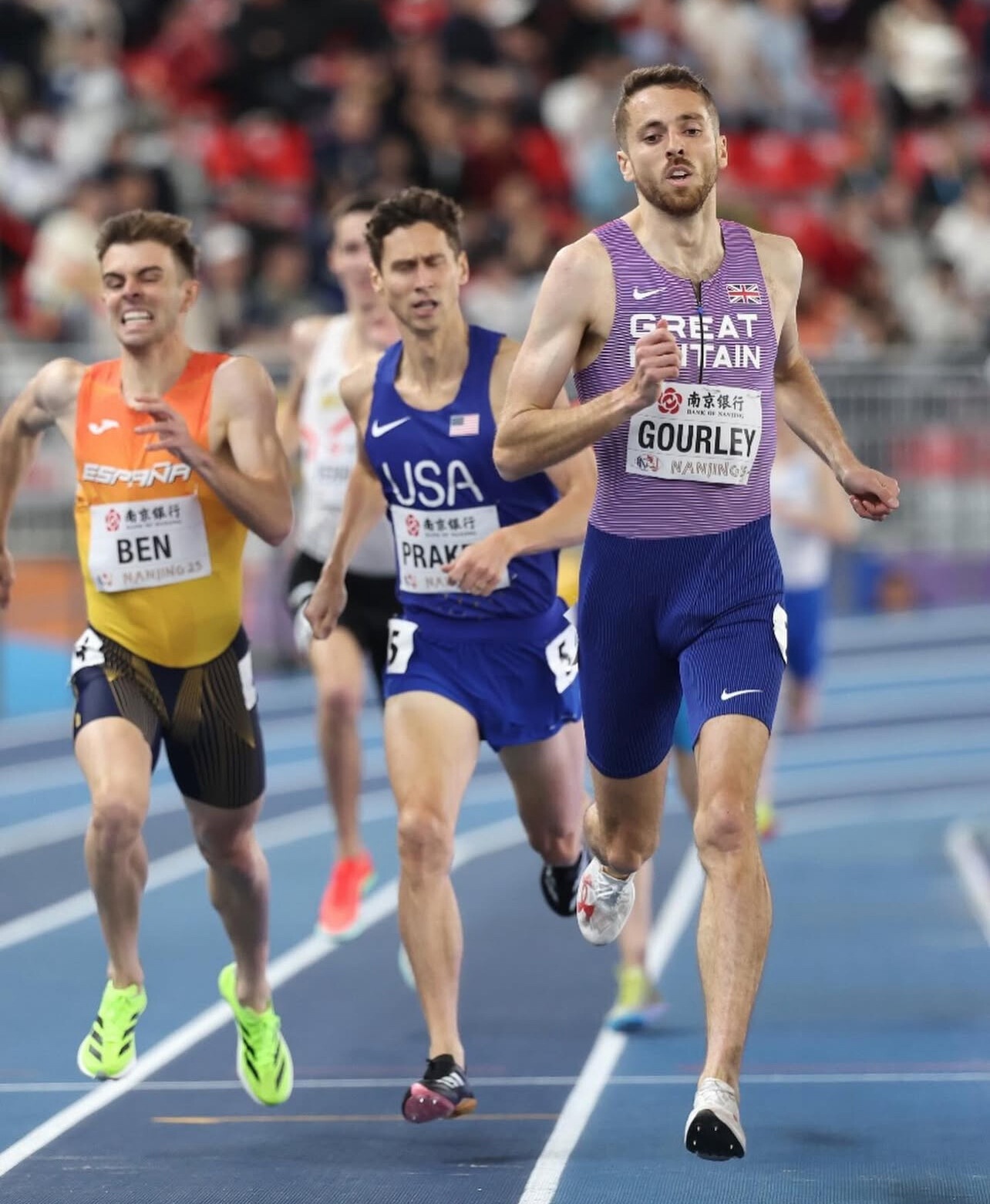
Earlier that weekend, Gourley served as captain of the British team, delivering an inspiring speech to his teammates, urging them to “leave room for the extraordinary.” Then he went out and embodied those very words.
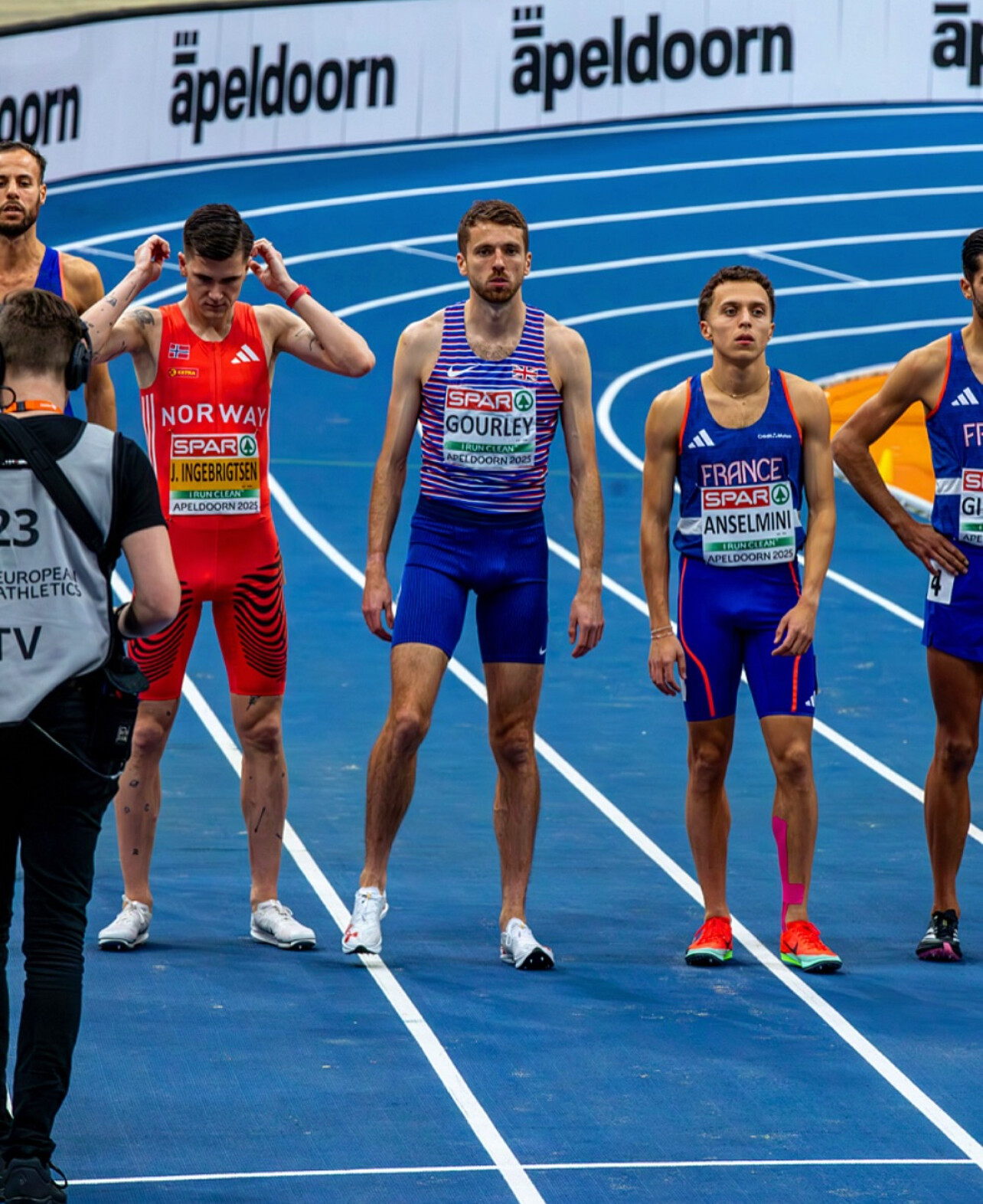
“It was an emotional weekend,” Gourley reflected. “To lead the team and then come away with a medal—it meant a lot. But I’m not satisfied yet. I’ve seen what Jake and Josh have done. I want that gold. It’s my turn now.”
He’s referring to fellow Scots Jake Wightman and Josh Kerr, who both made headlines by defeating Ingebrigtsen to win 1500m gold at the last two World Championships. Wightman shocked the field in Eugene in 2022, while Kerr executed a masterclass in race tactics in Budapest in 2023.
Now, Gourley wants to be the next name in that elite lineage.
“There’s something special happening in Scottish middle-distance running,” he said. “We’re not just showing up—we’re winning. I want to be part of that legacy.”
Gourley’s trajectory has been steadily rising. With a background in the NCAA system, British titles to his name, and a reputation for tactical intelligence and fierce finishing speed, he has quietly become one of the most dangerous men in the event.
But this September in Tokyo, he doesn’t want to fly under the radar. He wants the spotlight.
“The standard has been set, and I’m ready to meet it,” Gourley said. “I’ve visualized this. I’ve trained for this. I’ve seen what’s possible. Now I want to do it myself.”
As preparations begin for the outdoor season, Gourley will focus on sharpening his race craft, dialing in his training, and building toward the moment he’s dreamed about—standing on top of the podium in one of the sport’s most iconic events.
“I’m coming for it,” he said. “Tokyo is where I want to make it happen.”
With Wightman and Kerr already enshrined in British running history, Neil Gourley is ready to write his own chapter—and keep the golden streak of Scottish milers alive.
by Boris Baron
Login to leave a comment
Jakob Ingebrigtsen Wins Double Gold at World Indoors Leading Norway to Historic Medal Haul
Jakob Ingebrigtsen proved once again why he’s one of the most dominant middle-distance runners of his generation, capturing double gold at the 2025 World Athletics Indoor Championships in Nanjing, China. In what was his first time winning a World Indoor title, the 24-year-old Norwegian made it two-for-two, taking the top spot in both the 1500m and 3000m finals.
“What’s better than winning your first World Indoor title? Winning two,” Jakob posted on Facebook.
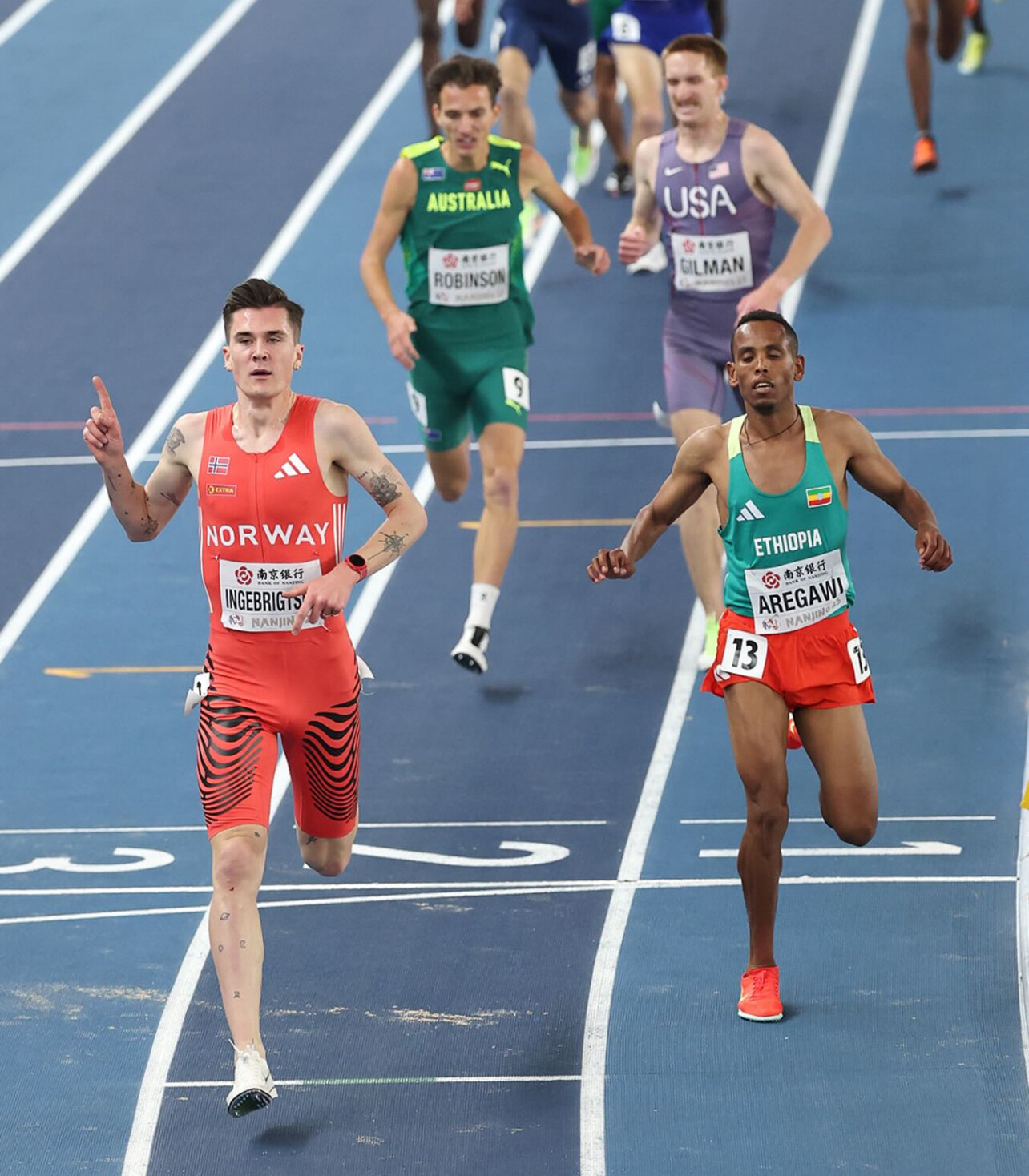
“And four medals in total for Norway! Proud to be part of this historical team.”
1500m: Controlled from Start to Finish
Ingebrigtsen opened his championships campaign with a smooth and commanding victory in the men’s 1500 meters, running 3:38.79. He stayed near the front for most of the race before pulling away in the final laps.
• Gold: Jakob Ingebrigtsen (Norway) – 3:38.79
• Silver: Neil Gourley (Great Britain) – 3:39.07
• Bronze: Luke Houser (USA) – 3:39.17
3000m: A Tactical Masterclass
Just days later, Ingebrigtsen returned to the track for the 3000 meters, where he again showcased patience and tactical brilliance. Holding back early, he made his move with a lap to go and surged ahead to win in 7:46.09, just ahead of Ethiopia’s Berihu Aregawi, who finished in 7:46.25.
• Gold: Jakob Ingebrigtsen (Norway) – 7:46.09
• Silver: Berihu Aregawi (Ethiopia) – 7:46.25
• Bronze: Selemon Barega (Ethiopia) – 7:46.62
In doing so, Ingebrigtsen became one of the rare athletes to win both the 1500m and 3000m titles at a single World Indoor Championships, placing him in elite historical company.
A Historic Championship for Norway
With Ingebrigtsen’s double gold, Team Norway earned four total medals in Nanjing — their best-ever performance at a World Indoor Championships. The team’s success further underscores the country’s rising status in global athletics.
Ingebrigtsen doesn’t just win races — he defines eras. And in Nanjing, he made it clear that the era is still very much his.
by Boris Baron
Login to leave a comment
I really like what Jakob brings to our sport. How about you? - Bob Anderson 3/23 10:24 pm |
Distance Running Takes the Spotlight at the World Indoor Championships in China
After years of delays and anticipation, the 2025 World Athletics Indoor Championships will finally unfold in Nanjing, China, from March 21 to 23. While sprints and field events always generate buzz, this edition promises to be a landmark for distance running—with some of the world’s best athletes converging to test themselves against the clock, the field, and history.
At the center of it all is Jakob Ingebrigtsen, Norway’s Olympic gold medalist and world champion, who will attempt an ambitious and rare double in the 1500 meters and 3000 meters. If successful, he will join Ethiopian legend Haile Gebrselassie, who last accomplished the feat in 1999. Ingebrigtsen’s smooth stride, iron pacing, and fierce final kick have made him one of the most dominant middle-distance runners of the past decade. But with Ethiopian and Kenyan contenders lining up with fast times and bold strategies, neither race will be a solo effort.
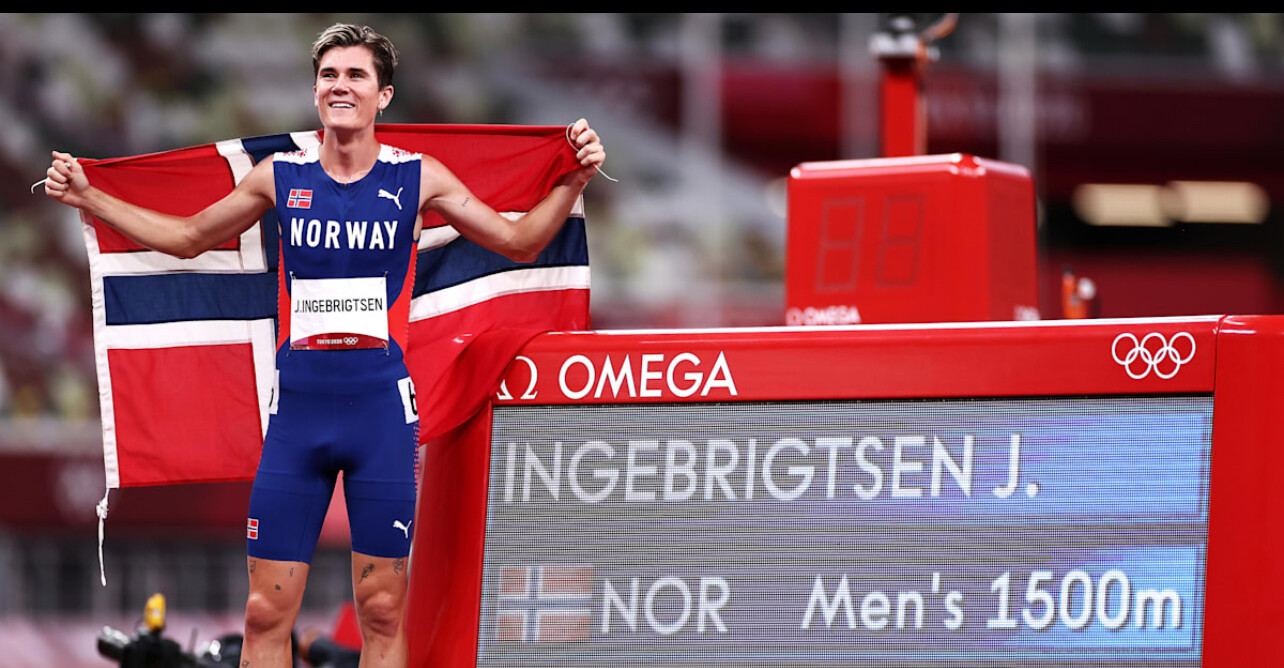
The 3000 meters is shaping up as one of the most exciting events of the meet. Alongside Ingebrigtsen, Ethiopia’s Selemon Barega—Olympic 10,000m champion—and Kenya’s Jacob Kropbring serious range and championship pedigree. With indoor tracks amplifying the tactical element and crowd energy, fans can expect a thrilling mix of surges, positioning, and all-out finishing kicks in the final laps.
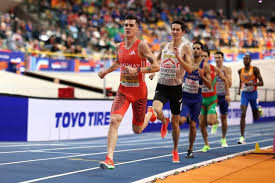
In the 800 meters, the men’s race is wide open. With no clear dominant figure, the door is open for rising stars from Spain, Algeria, and the United States to make a breakthrough. Indoors, the 800 is a physical, high-stakes affair, with tight turns and strategic jostling—where positioning is just as important as speed. The women’s 800 features a mix of veterans and rising talent, with sub-2:00 runners all seeking to time their peak perfectly for Nanjing.
The women’s 1500 meters could become a showcase for a new era of stars. While no single name stands above the rest going in, there are multiple women capable of taking the crown, including contenders from Great Britain, Ethiopia, and Australia. As with the men’s race, the tight indoor track places a premium on tactical patience and decisive moves.
Also featured is the distance medley relay, a relatively new but fan-favorite event that brings a unique blend of speed and endurance. Countries with depth across the 400, 800, 1200, and 1600-meter legs will have the advantage, and the energy in the building is expected to be electric when teams hand off for the final mile leg.
Nanjing’s fast indoor surface and tightly packed arena create the perfect environment for records, surprises, and heroic runs. After years of waiting, the distance events at these World Indoor Championships promise to be the heart of the competition—where strategy, stamina, and raw speed will collide on the world stage.
by Boris Baron
Login to leave a comment
World Athletics Indoor Championships
World-Class Competition Lands in China: 2025 World Athletics Championships The global spotlight shines on China as it hosts the 2025 World Athletics Championships, bringing together the planet’s most elite runners, jumpers, and throwers. This prestigious event, organized by World Athletics, represents the pinnacle of track and field competition—where national pride, personal records, and world titles are on the line. ...
more...Sam Ruthe Breaks Barriers as 15-Year-Old Runs Historic Sub-4-Minute Mile
On March 19, 2025, 15-year-old New Zealand runner Sam Ruthe stunned the athletics world by running a 3:58.35 mile in Auckland, making him the youngest person ever to break the elusive four-minute barrier. The achievement cements Ruthe as one of the most promising young talents in distance running and places him in elite company among middle-distance legends.
A Legacy of Speed – Ruthe’s Background and Development
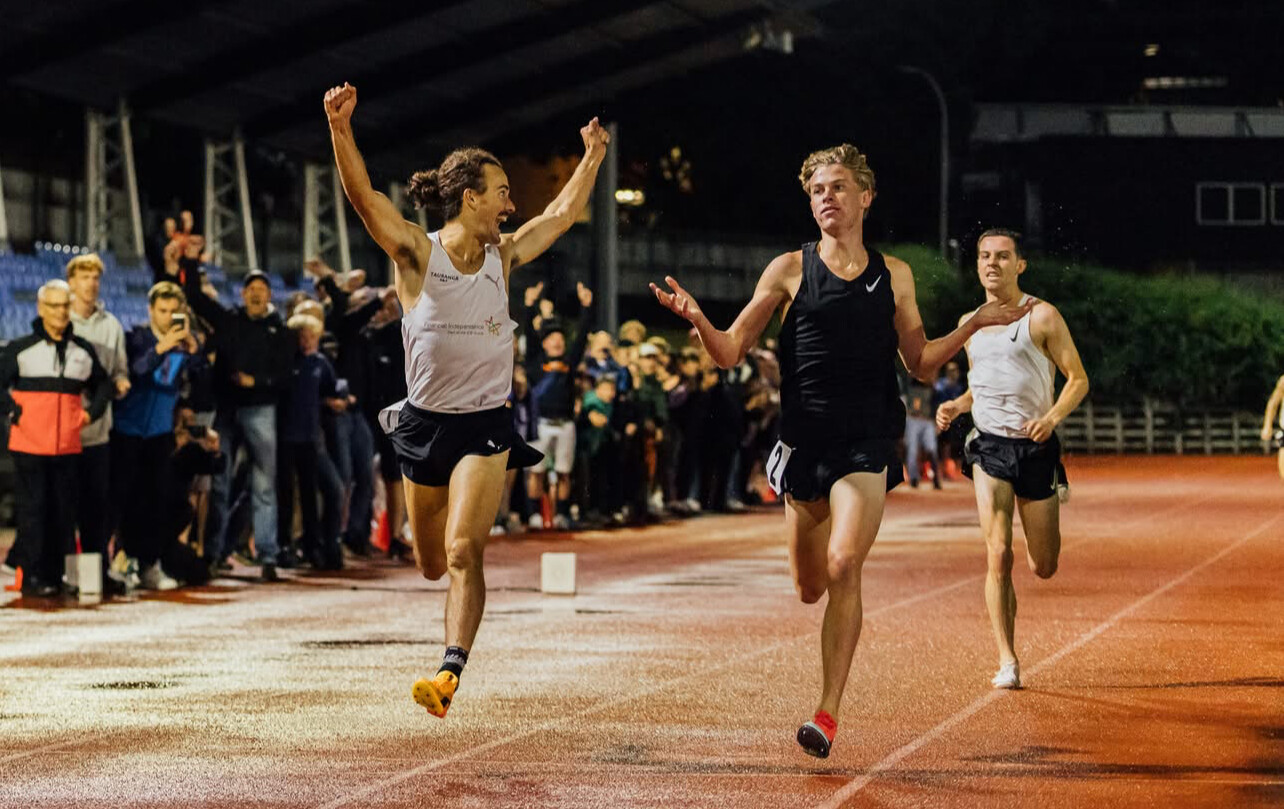
Ruthe’s meteoric rise in athletics comes as no surprise, given his deep-running pedigree. His parents, Ben and Jess Ruthe, are both accomplished New Zealand distance runners, and his grandparents, Trevor and Rosemary Wright, also left their mark on the sport—Rosemary Wright won Commonwealth Games gold in the 800 meters in 1970.
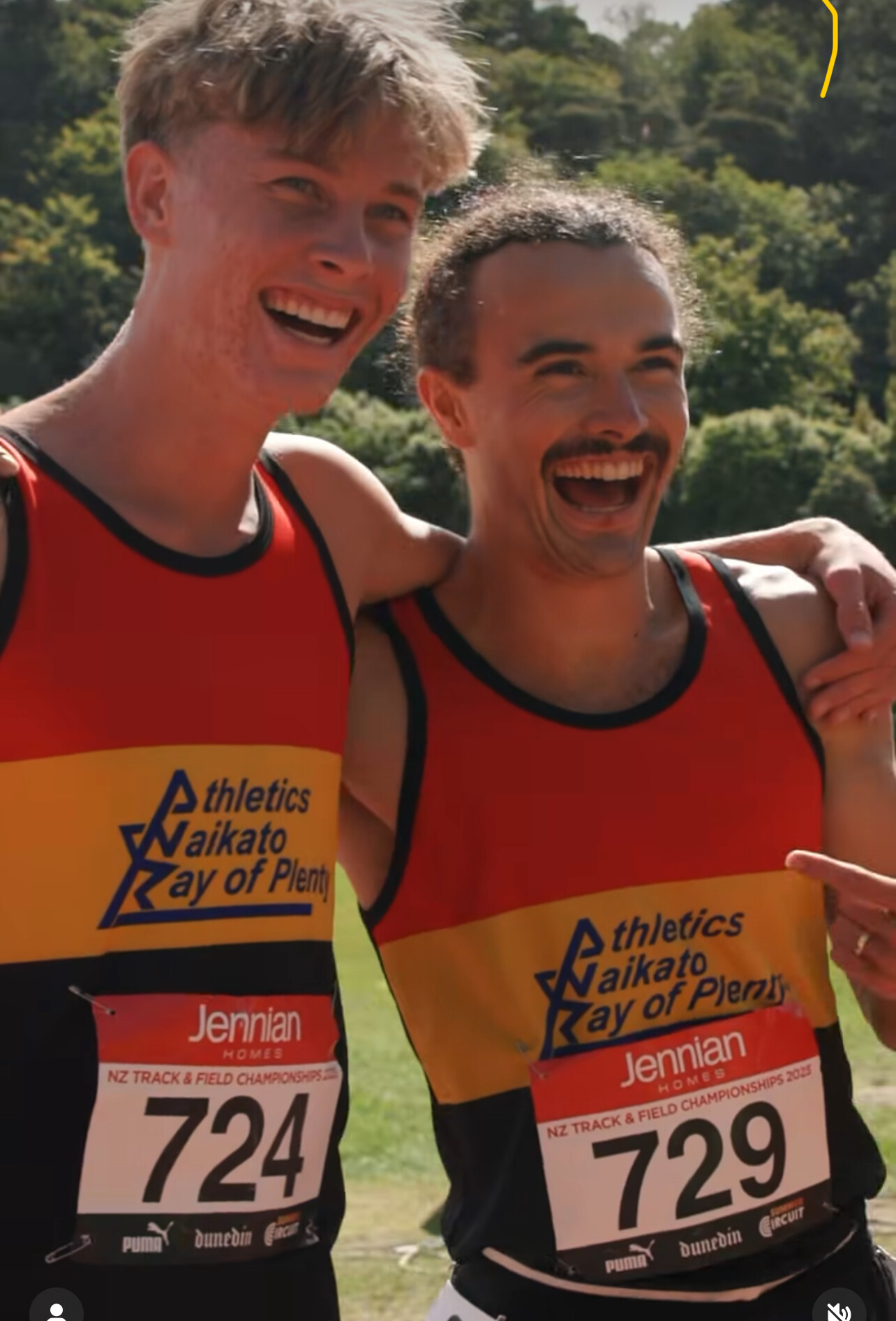
Guided by coach Craig Kirkwood, Ruthe has demonstrated extraordinary potential. In November 2024, he shattered the New Zealand under-17 and under-18 3000m records, clocking 8:09.68—the fastest time ever recorded by a 15-year-old for that distance. That performance hinted at something special, but few could have predicted his historic mile breakthrough just months later.
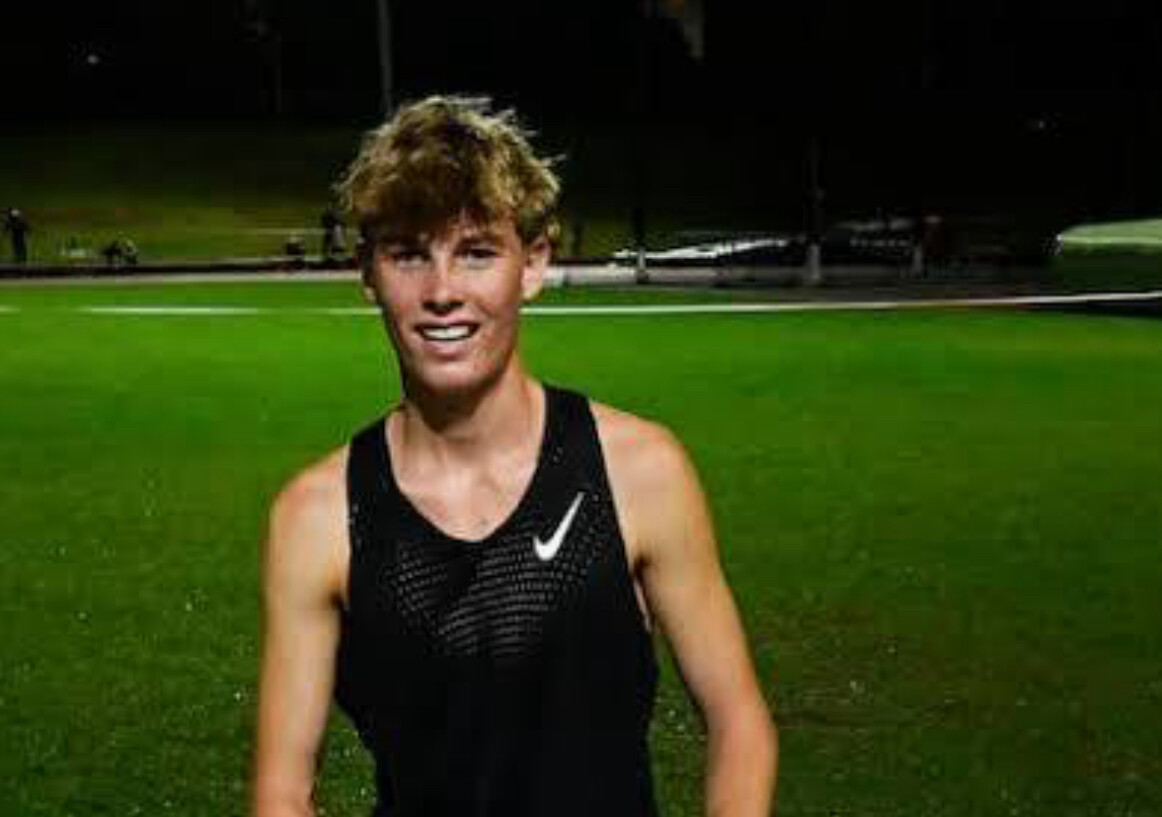
Breaking the Barrier – The 3:58.35 Mile
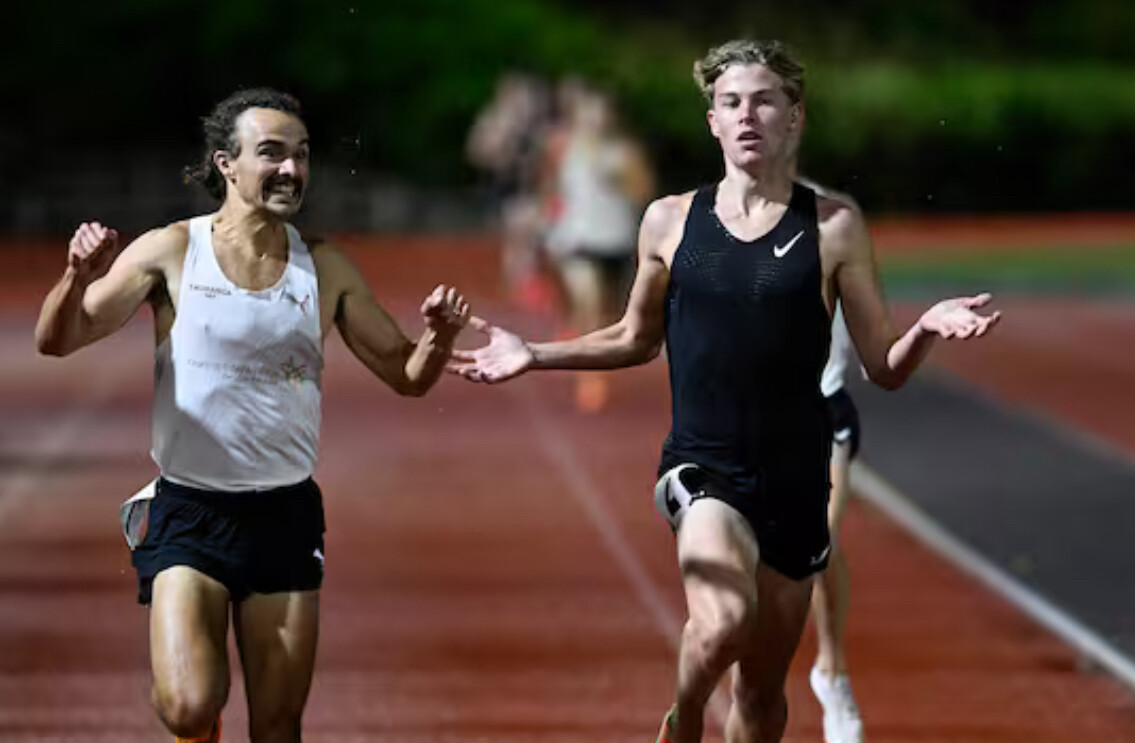
The sub-four-minute mile remains one of the most revered milestones in track and field, a mark that has defined greatness since Roger Bannister first achieved it in 1954. Until now, Norway’s Jakob Ingebrigtsen had been the youngest to break four minutes, running 3:58.07 at age 16 in 2017. Ruthe, at just 15, has rewritten history.
The race itself was a masterclass in pacing and composure. Running on Auckland’s Millennium Stadium track, Ruthe stayed patient through the opening laps before unleashing a devastating final kick. As he crossed the finish line in 3:58.35, the crowd erupted, realizing they had just witnessed a moment that would be talked about for years to come.
The Future of a Rising Star
With world-class endurance, speed, and a seemingly limitless ceiling, Ruthe’s career is just beginning. His ability to set records at such a young age raises intriguing questions about how fast he can go and what he can achieve on the global stage.
As he continues to develop under expert guidance, the world will be watching. Could he be New Zealand’s next Olympic great? If his recent performances are any indication, this is only the beginning.
Login to leave a comment
Who Had the Best Era in Track & Field? A Generational Showdown
Track and field has long been the stage for some of the most electrifying athletic performances in history. Each generation has produced legends who have redefined what is possible in sprinting, distance running, and field events. But which era stands above the rest?
From the Silent Generation pioneers to the Gen Z record-breakers, every period has contributed to the evolution of the sport. Let’s break down each era’s greatest stars and their lasting impact on track and field.
Gen Z (Born 1997 - 2012): The Future of Track & Field
The newest generation of elite athletes is already making waves on the world stage. With the benefit of cutting-edge training, nutrition, and recovery techniques, these young stars are smashing records at a rapid pace.
Notable Sprinters & Field Athletes:
• Sydney McLaughlin-Levrone (USA) – 400m hurdles world record holder and Olympic champion
• Mondo Duplantis (Sweden) – Pole vault world record holder
• Erriyon Knighton (USA) – One of the fastest teenagers ever in the 200m
Notable Distance Runners:
• Jakob Ingebrigtsen (Norway) – Olympic 1500m champion, European mile record holder
• Joshua Cheptegei (Uganda) – 5000m and 10,000m world record holder
• Jacob Kiplimo (Uganda) – Half marathon world record holder (57:31)
• Gudaf Tsegay (Ethiopia) – World champion in the 1500m, dominant in middle distances
Gen Z athletes are not only breaking records but also shaping the future of the sport through their influence on social media and global visibility. With their combination of speed, endurance, and access to modern sports science, they may soon surpass all who came before them.
Defining Traits: Explosive, record-breaking, tech-savvy
Millennials (Born 1981 - 1996): The Superstars of the Modern Era
No discussion of dominant track and field generations is complete without mentioning Usain Bolt. The Jamaican sprinting legend captured the world’s attention with his charisma and untouchable world records.
Notable Sprinters:
• Usain Bolt (Jamaica) – Fastest man in history (100m: 9.58, 200m: 19.19)
• Allyson Felix (USA) – Most decorated female Olympian in track history
• Shelly-Ann Fraser-Pryce (Jamaica) – One of the most dominant sprinters of all time
Notable Distance Runners:
• Eliud Kipchoge (Kenya) – The greatest marathoner of all time, first to break two hours in a marathon
• Mo Farah (UK) – Dominated the 5000m and 10,000m at two Olympic Games
• Genzebe Dibaba (Ethiopia) – 1500m world record holder
• Ruth Chepngetich (Kenya) – First woman to break the 2:10 barrier in the marathon, setting a world record of 2:09:56 at the 2024 Chicago Marathon
Millennials excelled across all track and field disciplines. They ushered in an era of professional distance running dominance, with African runners setting standards in middle and long distances. Meanwhile, Kipchoge’s sub-2-hour marathon attempt was a historic milestone in human endurance.
Defining Traits: Charismatic, dominant, endurance revolutionaries
Gen X (Born 1965 - 1980): The Tough and Versatile Competitors
Gen X athletes were the bridge between the amateur days of track and the fully professional era. They pushed the sport forward with fierce rivalries and new records, while also seeing the globalization of track and field.
Notable Sprinters:
• Maurice Greene (USA) – Former world record holder in the 100m (9.79)
• Marion Jones (USA) – One of the most dominant sprinters of the late ‘90s
Notable Distance Runners:
• Haile Gebrselassie (Ethiopia) – Olympic and world champion, former marathon world record holder
• Paul Tergat (Kenya) – Pioneered marathon running dominance for Kenya
• Tegla Loroupe (Kenya) – First African woman to hold the marathon world record
This era marked a golden age for distance running, with Gebrselassie and Tergat setting the stage for the marathon revolution that would come in the next generation. With increased sponsorships, the road racing circuit became more competitive, and Kenyan and Ethiopian dominance solidified.
Defining Traits: Tough, globalized, long-distance pioneers
Baby Boomers (Born 1946 - 1964): The Golden Age of Track & Field
The Baby Boomers took track and field into the modern Olympic era, producing some of the most iconic figures in the sport’s history.
Notable Sprinters:
• Carl Lewis (USA) – Nine-time Olympic gold medalist across sprints and long jump
• Florence Griffith-Joyner (USA) – 100m (10.49) and 200m (21.34) world record holder
Notable Distance Runners:
• Sebastian Coe (UK) – 800m and 1500m Olympic champion, middle-distance legend
• Steve Prefontaine (USA) – One of the most influential distance runners in history
• Miruts Yifter (Ethiopia) – 5000m and 10,000m Olympic champion
This era brought middle and long-distance running into the mainstream, with rivalries like Coe vs. Ovett and Prefontaine vs. the world captivating fans. The Baby Boomers were the first generation of professional-level training and saw athletes truly dedicated to their craft year-round.
Defining Traits: Bold, revolutionary, multi-talented
Silent Generation (Born 1928 - 1945): The Pioneers of Kenya’s Dominance
This generation laid the foundation for modern track and field, producing legends whose influence still resonates today.
Notable Distance Runners:
• Kip Keino (Kenya) – The pioneer of Kenya’s dominance in distance running, winning Olympic gold in the 1500m (1968) and 3000m steeplechase (1972)
• Emil Zátopek (Czechoslovakia) – Triple gold in 5000m, 10,000m, and marathon at the 1952 Helsinki Olympics
• Paavo Nurmi (Finland) – Nine-time Olympic gold medalist in long-distance events
Kip Keino’s triumph over Jim Ryun in the 1500m final at the 1968 Mexico City Olympics is considered one of the greatest upsets in Olympic history. Competing at high altitude, Keino used a fast early pace to break Ryun, ushering in an era of Kenyan middle-distance dominance that continues today.
Defining Traits: Groundbreaking, resilient, visionary
Which Generation Had the Greatest Impact?
Each generation of track and field athletes has contributed to the sport’s evolution in unique ways:
• Millennials brought global superstardom (Bolt, Felix, Fraser-Pryce, Kipchoge, Chepngetich)
• Gen X athletes were fierce competitors in a rapidly changing sport (Greene, Gebrselassie, Tergat)
• The Baby Boomers set records that still stand today (Carl Lewis, Flo Jo, Coe, Prefontaine)
• The Silent Generation laid the foundation for modern track and field (Owens, Zátopek, Kip Keino)
• Gen Z is already breaking records and shaping the future of the sport (McLaughlin-Levrone, Ingebrigtsen, Cheptegei)
While it’s hard to declare one era the best, one thing is certain: the sport of track and field continues to evolve, with each generation pushing the limits of human performance.
Which generation do you think is the greatest? Let us know in the comments!
by Boris Baron
Login to leave a comment
Portugal Makes History at European Indoor Championships with Record Medal Haul
Portugal achieved a historic milestone at the 2025 European Athletics Indoor Championships in Apeldoorn, Netherlands, delivering its best-ever performance with a four-medal haul—one silver and three bronze—along with its highest points tally in history. This result secured ninth place overall, marking a significant achievement for the country’s athletics program.
Meet Portugal’s Medalists

Salomé Afonso – Silver in the 1,500m, Bronze in the 3,000m
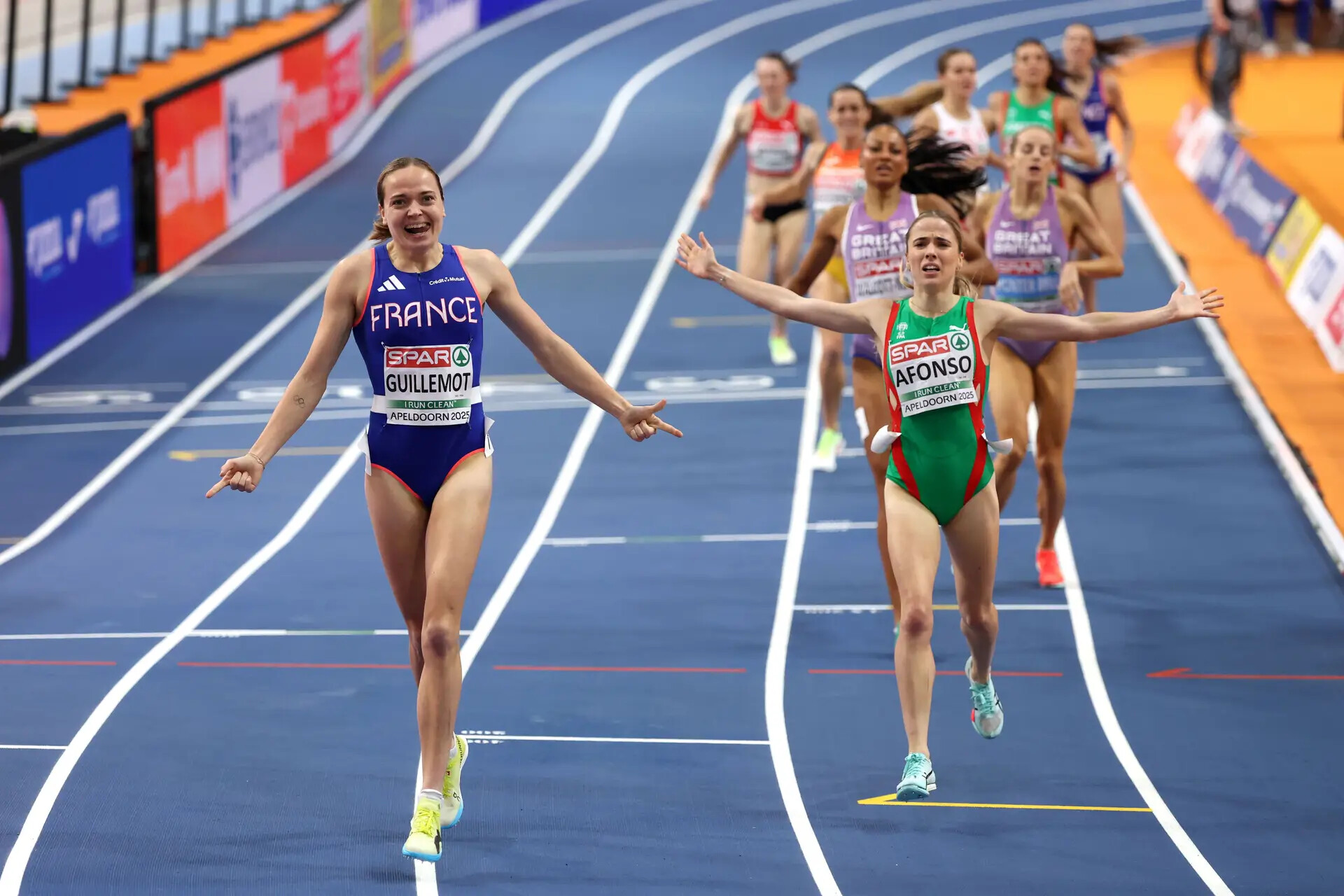
Salomé Afonso led Portugal’s medal charge with a silver medal in the 1,500 meters, clocking 4:07.66 in a thrilling final. She also secured bronze in the 3,000 meters, finishing in 8:53.42, proving her strength across multiple distances.
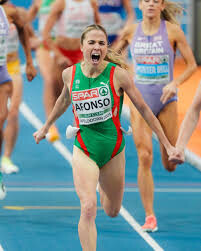
Afonso has established herself as a dominant force in Portuguese middle-distance running. Known for her smooth racing strategy and powerful finishing kick, she has continued to elevate her performances on the European stage, and her double-medal success in Apeldoorn further cements her reputation as one of Portugal’s most promising athletes.

Isaac Nader – Bronze in the 1,500m
Isaac Nader battled against Europe’s finest middle-distance runners to claim bronze in the 1,500 meters, finishing with a time of 3:37.10. He placed behind Norway’s Jakob Ingebrigtsen and France’s Azeddine Habz, showing once again that he belongs among the continent’s best.
Nader has been on an impressive trajectory, gaining recognition for his sharp tactical racing and strong finishing ability. His bronze medal in Apeldoorn adds to his growing list of international achievements.
Auriol Dongmo – Bronze in the Shot Put
Portuguese shot put star Auriol Dongmo continued her dominance in the event, securing bronze with a season-best throw of 19.26 meters.
Dongmo, originally from Cameroon, has represented Portugal since 2017 and is a former European Indoor Champion. She has consistently ranked among the best shot putters in the world, and her latest podium finish further underscores her status as a leading force in European athletics.
Portugal’s Best-Ever European Indoor Championships
Portugal’s performance in Apeldoorn 2025 surpasses its previous best medal hauls of three medalsin Valencia (1998), Torun (2021), and Istanbul (2023), making it the country’s most successful European Indoor Championships to date.
In recognition of this historic achievement, President Marcelo Rebelo de Sousa congratulated the athletes, coaches, technical teams, and the Portuguese Athletics Federation, stating that their results reflect the “high level of national athletics” and serve as a source of pride for the entire nation.
A Bright Future for Portuguese Athletics
With this record-breaking performance, Portugal continues to establish itself as a rising force in European athletics. The blend of seasoned champions like Dongmo and emerging talents like Afonso and Nader highlights the depth of talent within the national team.
This success in Apeldoorn sets a strong foundation for Portugal’s future in international athletics, and all eyes will now turn to upcoming global competitions, where these athletes are expected to make an even greater impact.
by Boris Baron
Login to leave a comment
Memorable Moments from the 2025 European Athletics Indoor Championships
The 38th European Athletics Indoor Championships, held from March 6 to 9, 2025, at the Omnisport Apeldoorn arena in Apeldoorn, Netherlands, showcased a series of remarkable performances and dramatic events. This edition marked the third time the Netherlands hosted the championships, following previous editions in 1973 and 1989.
Notable Performances:
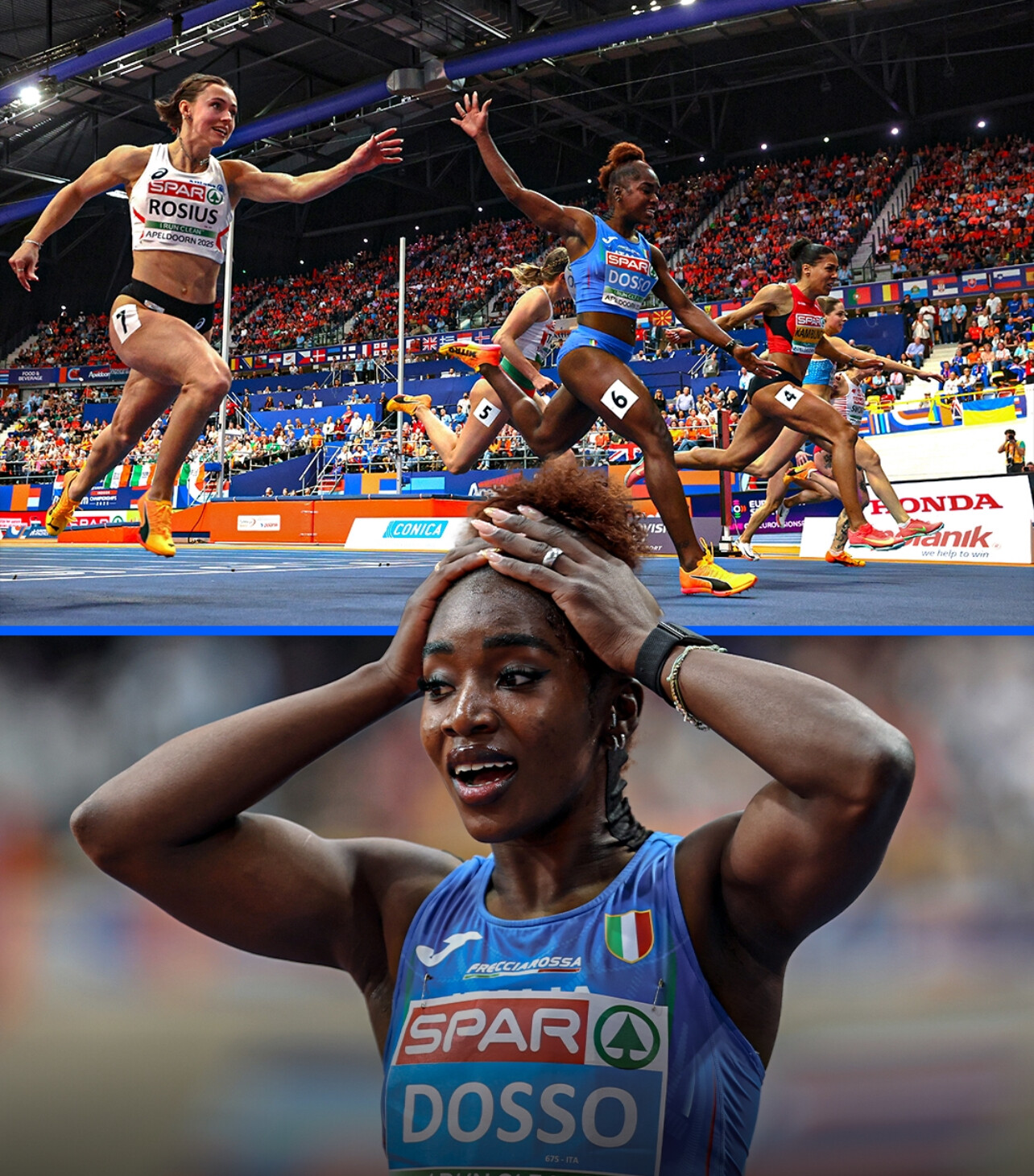
• Women’s 60 Meters: Italy’s Zaynab Dosso delivered a sensational performance, claiming the gold medal with a world-leading time of 7.01 seconds.
• Men’s 1,500 and 3,000 Meters: Norwegian standout Jakob Ingebrigtsen showcased his dominance by winning both the 1,500m and 3,000m events. In the 3,000m, he secured gold with a time of 7:48.37, marking his seventh European Indoor title at the age of 24. Britain’s George Mills earned silver, finishing just over a second behind Ingebrigtsen.
• Women’s 3,000 Meters: The final was marked by a dramatic incident involving Dutch athlete Maureen Koster, who fell and was rendered unconscious early in the race. Despite the unsettling event, Ireland’s Sarah Healy claimed gold with a time of 8:52.86, narrowly defeating Britain’s Melissa Courtney-Bryant, who secured silver. Koster was later reported to be conscious and responsive.
• Men’s 800 Meters: Irish middle-distance runner Mark English clinched the bronze medal, marking his third European indoor medal and fifth overall. He finished with a time of 1:45.46, showcasing a strong final lap.
• Women’s Triple Jump: Spain’s Ana Peleteiro secured the gold medal with a jump of 14.37 meters, her best mark of the year and the third-best worldwide. This victory adds to her impressive tally of eight international medals, including an Olympic bronze in Tokyo 2021.
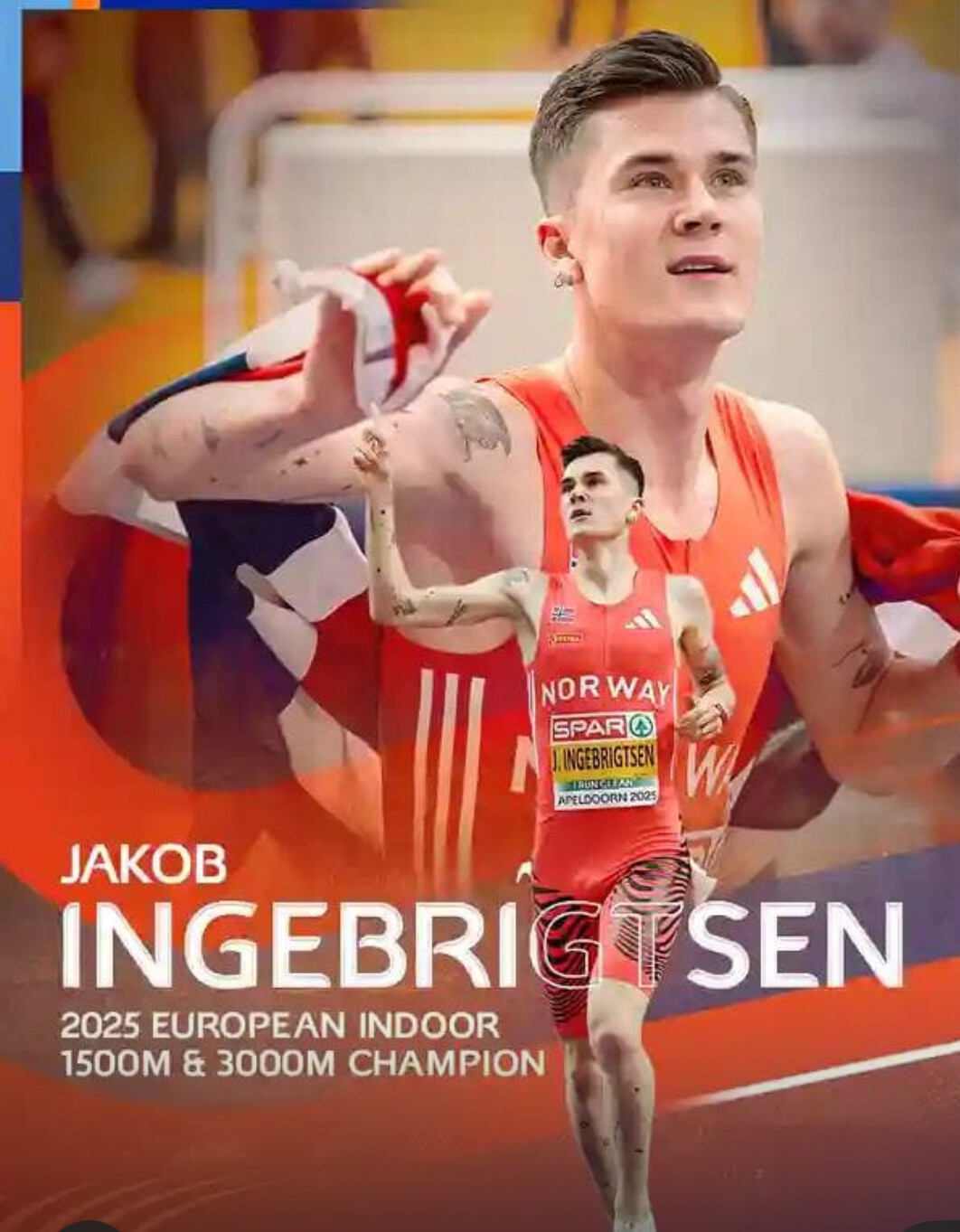
• Mixed 4x400 Meters Relay: In the inaugural mixed relay event at the European Indoors, the Dutch team, anchored by Femke Bol, clinched gold with a time of 3:15.63, setting a championship record. Belgium and Great Britain secured silver and bronze, respectively.
Controversies and Challenges:
• Women’s 4x400 Meters Relay: The British team initially appeared set for gold; however, a controversial reinstatement of the Dutch team, following a disqualification for obstruction during the final takeover, led to Britain settling for silver. The Dutch team set a European Indoor record with a time of 3:24.34.
• Women’s 1,500 Meters: Georgia Hunter Bell, a favorite for gold, was hampered by an ear infection. Leading with 100 meters to go, she struggled in the final stretch, finishing off the podium as France’s Agathe Guillemot took gold.
The host nation, the Netherlands, showcased a strong performance, particularly in relay events and individual disciplines like the triple jump. Norway’s Jakob Ingebrigtsen’s continued excellence solidified their standing in middle-distance events. Ireland’s emergence, highlighted by Sarah Healy’s gold in the 3,000 meters and Mark English’s bronze in the 800 meters, marked a significant achievement for the nation.
Overall, the championships highlighted both seasoned athletes defending their titles and emerging talents making their mark on the European stage.
by Boris Baron
Login to leave a comment
Yared Nuguse Runs 3:47.22 in Mile Record Attempt, Falls Just Short of World Mark
Yared Nuguse delivered a thrilling performance in his highly anticipated mile world record attempt but came up short of Jakob Ingebrigtsen’s indoor world record of 3:45.14. Running at the Last Chance Indoor Qualifier, Nuguse clocked an impressive 3:47.22, securing victory and the fifth-fastest indoor mile time in history.
The American middle-distance star, who previously held the indoor mile world record before Ingebrigtsen broke it earlier this season, showed incredible form but wasn’t quite able to lower the global mark. Despite falling short of his ultimate goal, Nuguse’s time was another testament to his world-class ability and puts him firmly in the conversation for future record-breaking attempts.
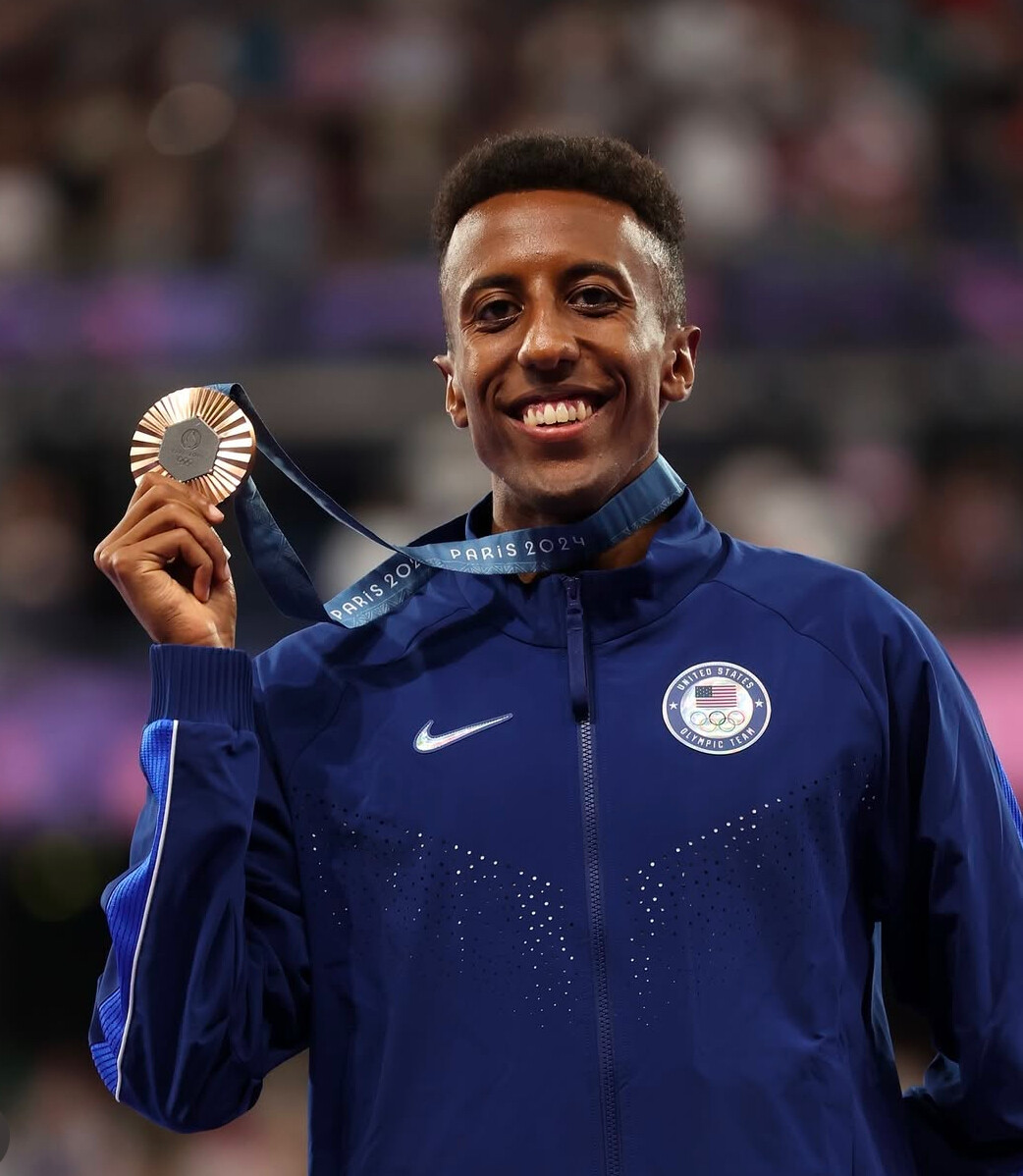
Nuguse took control of the race early, using pacers and the assistance of pacing lights to stay on world record pace through the early stages. However, as the laps progressed, he slightly faded, missing the target time but still producing a historically significant performance.
Behind him, Oliver Hoare finished second in 3:50.77, with Luke Houser rounding out the podium in 3:51.14. The depth of the field showed the growing strength of American and international milers, with several runners posting strong sub-3:53 times.
While the world record remains intact, Nuguse’s performance reinforces his status as one of the top milers globally. With outdoor season approaching and the Paris Olympics on the horizon, the American standout remains a strong contender for further history-making performances.
Login to leave a comment
Vared Nuguse Aims to Reclaim Indoor Mile World Record in Boston
Yared Nuguse is taking another shot at history. This Sunday at Boston University’s Last Chance National Qualifier, the American middle-distance star will attempt to break Jakob Ingebrigtsen’s indoor mile world record of 3:45.14. He’ll have help in the form of pacers and pacing lights, but it’ll still take an all-out effort to bring the record back to U.S. soil.
Nuguse first set the record at the Millrose Games on February 8, running 3:46.63 to surpass Yomif Kejelcha’s 3:47.01 mark from 2019. But just five days later, Ingebrigtsen took the record down in Liévin, clocking 3:45.14 and putting himself in a league of his own. Now, Nuguse is back on the track, looking to erase the Norwegian’s name from the books.
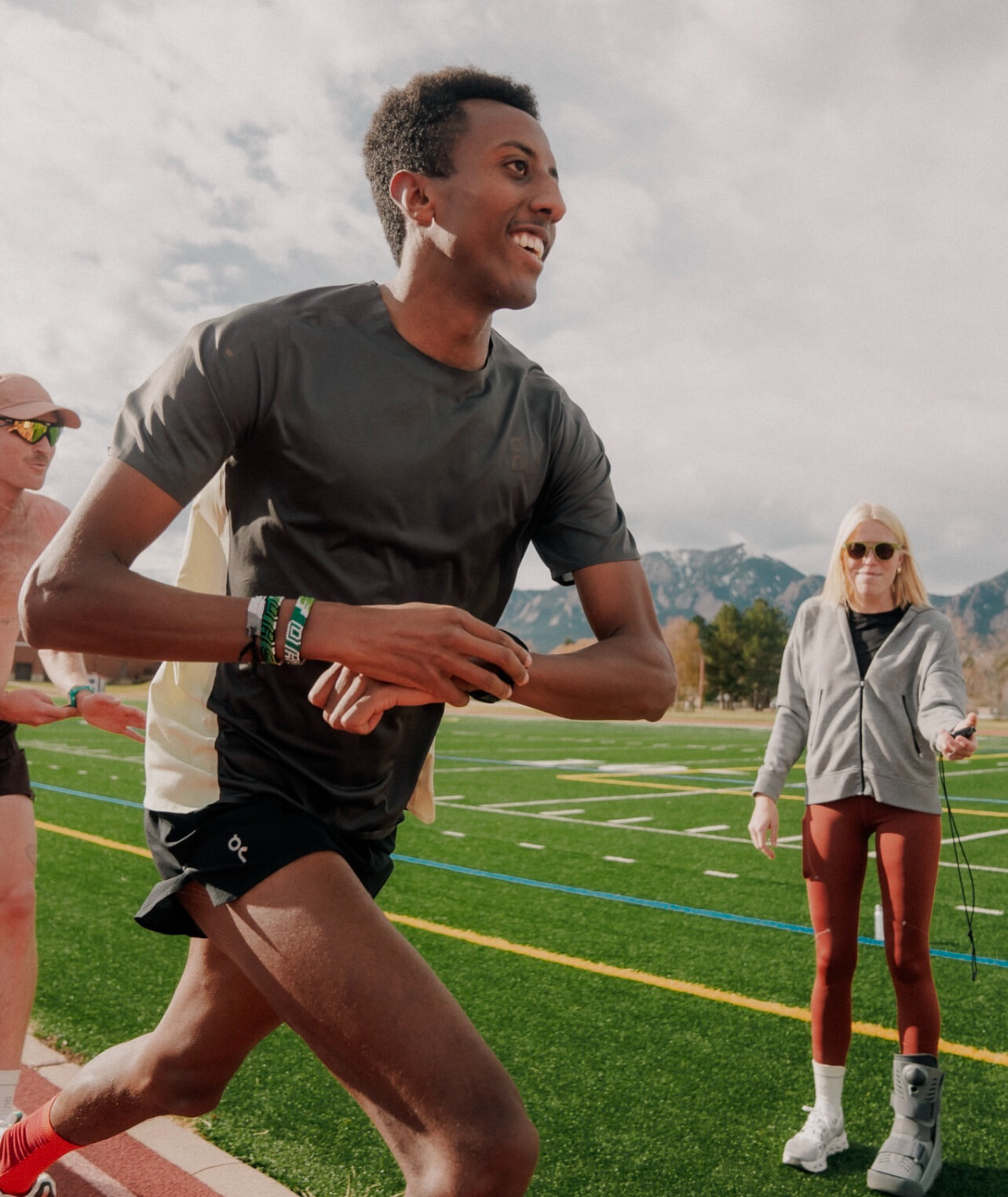
The setting for this attempt couldn’t be better. Boston University’s track is known for producing fast times, and with a carefully planned race setup, Nuguse has a real shot at reclaiming the record. His training and recent performances suggest he’s in shape to run faster than he did at Millrose, but shaving off nearly 1.5 seconds to surpass Ingebrigtsen is a daunting challenge.
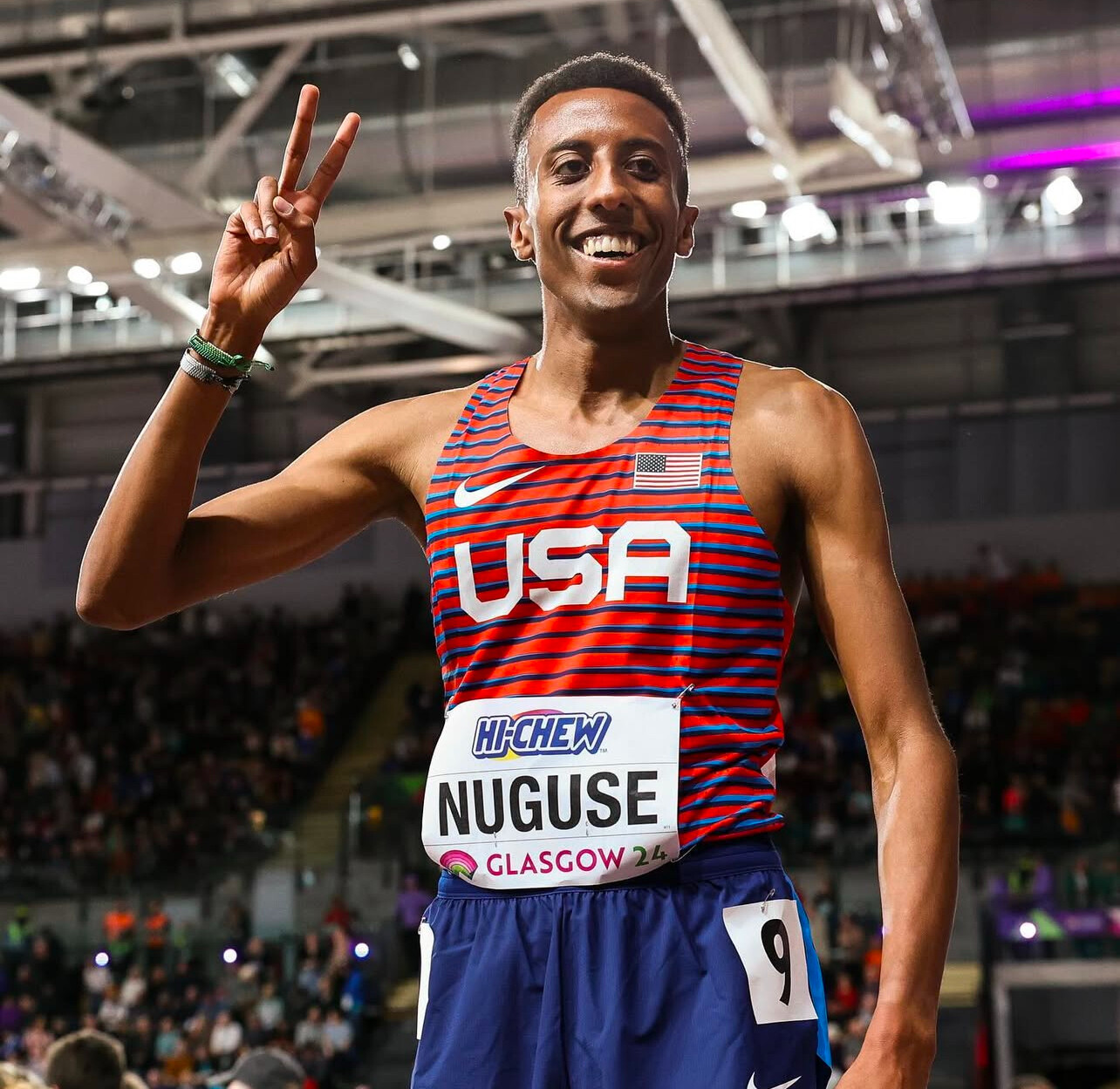
Whether he gets the record or not, this is a big moment in the ongoing battle for dominance in middle-distance running. Nuguse has proven he can rise to the occasion, and with the right execution, Sunday could be another milestone in his growing legacy.
by Boris Baron
Login to leave a comment
Is It the Shoes? 9 Days, 5 Men, 7 World Records
Over nine days, five men shattered seven world records, leaving me, like many others in the running world, asking one question: Is it the shoes? Or are we witnessing a new era of human performance, fueled by relentless training, cutting-edge technology, and perfect conditions?
It all started on February 8 at the Millrose Games. Grant Fisher kicked things off with an incredible 7:22.91 in the men's indoor 3000m, smashing the previous world record. His smooth stride and smart pacing made it look almost easy. I couldn't help but wonder if this was just the beginning. Sure enough, Yared Nuguse followed with a stunning 3:46.63 in the men's indoor mile.
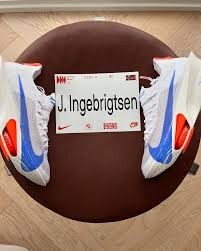
Five days later, Jakob Ingebrigtsen took things to another level in Liévin, France. He ran the mile in 3:45.14, breaking Nuguse’s fresh record. What really blew my mind was his 1500m split—3:29.63, another world record on the way to the mile finish. I’ve watched Jakob race for years, but this performance had me thinking: Are we witnessing the best miler of all time in his prime?
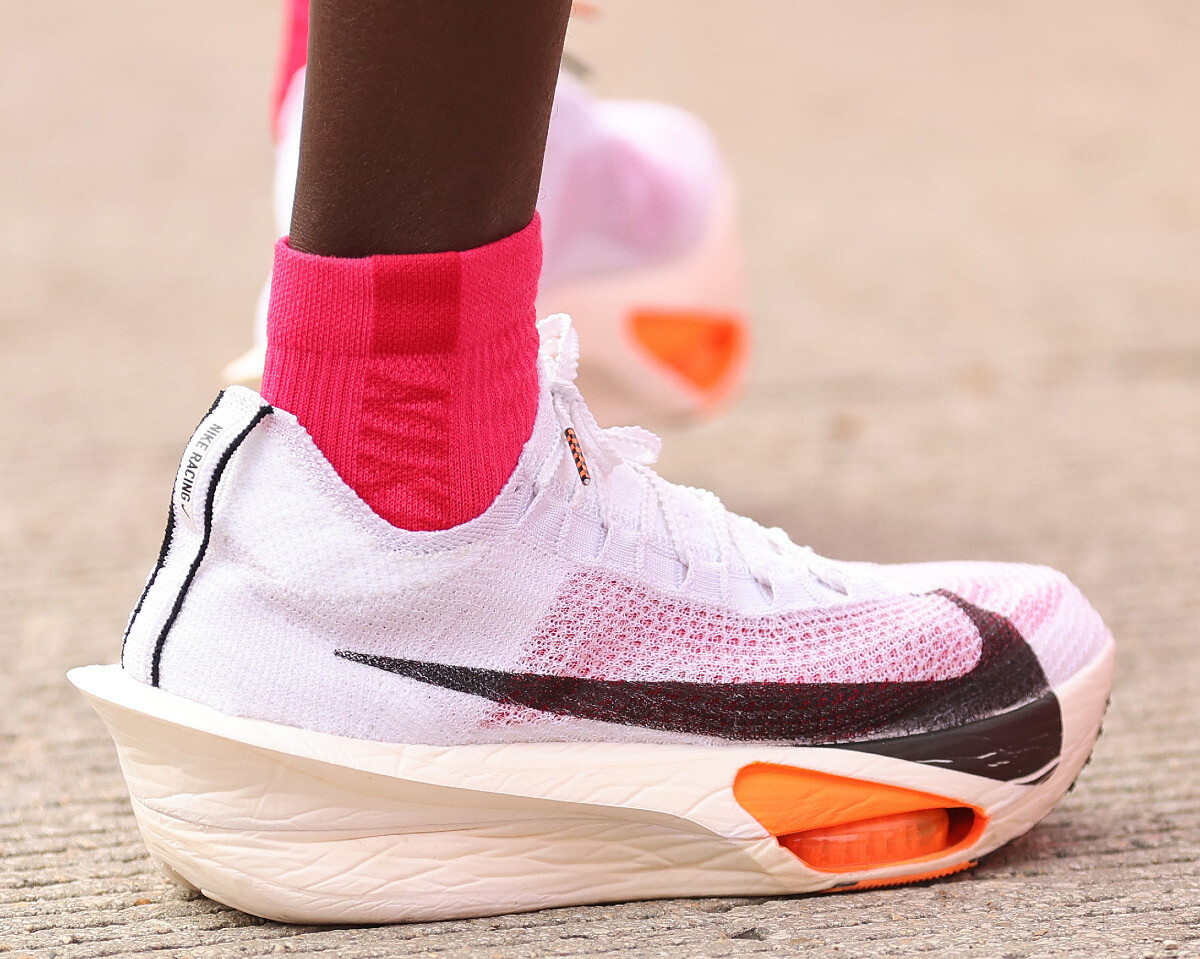
Then came Valentine's Day, and Grant Fisher was back at it. This time, he broke the men's indoor 5000m record in Boston, clocking an astonishing 12:44.09. Sub-60-second laps, one after another.
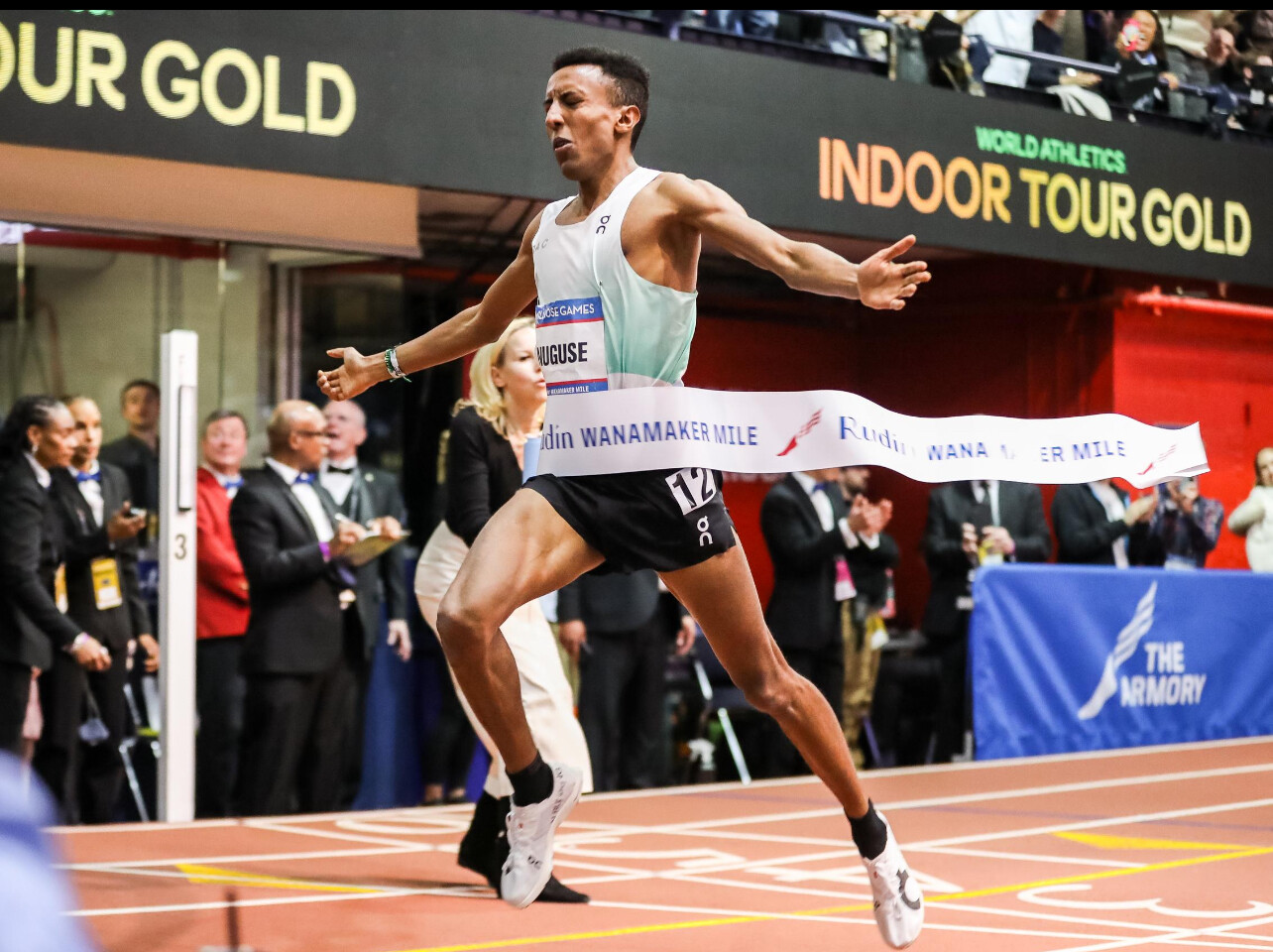
Just when I thought the wave of records might slow down, February 16 brought two more amazing performances. In Kobe, Japan, Toshikazu Yamanishi stormed to a 1:16:10 finish in the men's 20km race walk. Meanwhile, in Barcelona, Jacob Kiplimo made history in the half marathon, blazing to a 56:42 finish. I've followed Kiplimo's career closely, but this performance truly cemented his status as one of the greatest distance runners ever.
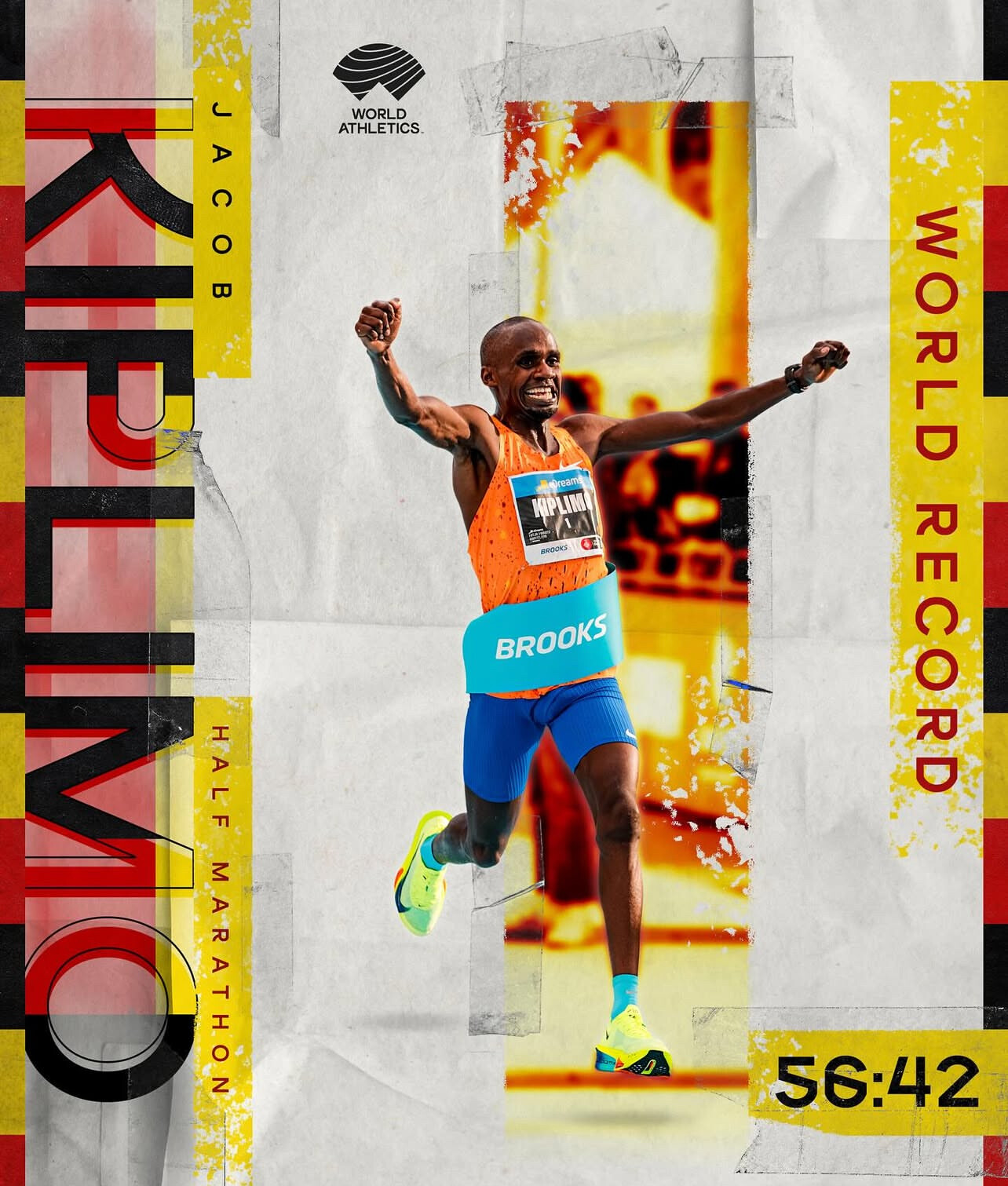
Naturally, everyone started talking about the shoes. Were they the secret behind these incredible performances? I looked into what each athlete was wearing. Grant Fisher and Yared Nuguse were both racing in the Nike Dragonfly spikes, known for their Pebax plate and ZoomX foam, delivering maximum energy return for middle and long distances. Jakob Ingebrigtsen was laced up in the Nike Air Zoom Victory, a lightweight spike built for efficiency. Yamanishi likely wore ASICS race walking shoes, designed for stability and flexibility. And Kiplimo? He was flying in the Nike Vaporfly Next% 3, the go-to choice for elite road runners chasing fast times.
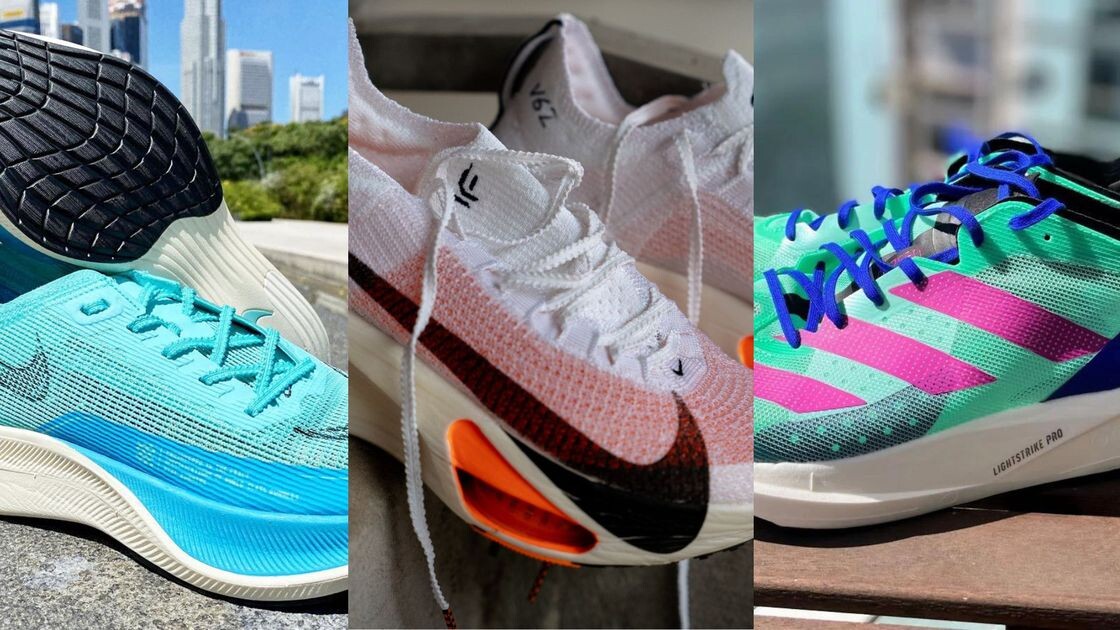
So, is it the shoes? All have been approved by World Athletics. It’s tempting to think so, but I believe the reality is more complex. Yes, today's super shoes, with their carbon plates, advanced foams, and featherlight builds, undoubtedly contribute. But I've been around this sport long enough to know that technology alone doesn’t break records. The foundation is still the same—grueling training, meticulous race preparation, and sheer determination.
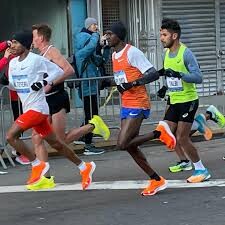
Nine days. Five men. Seven world records. Whether it’s the shoes, the training, or a perfect storm of conditions, one thing is clear: the boundaries of human performance continue to be pushed. As someone who’s watched this sport evolve for decades, I can’t help but feel fortunate to witness history in the making.
A friend, Gary Rush summed it up so well, "I grew up in the early eighties of running, and my guess is with all of the GPS watches, gels, nutrition drinks, scientific training, analysis, Max VO2 tests, and likely more frequent training and recovery because of the Super Shoes, will give us insane results day by day...But, that 2:09 for a women's marathon must be even better historically than the first 4 minute mile,"
by Bob Anderson
Login to leave a comment
Jakob Ingebrigtsen Smashes Mile World Record at World Athletics Indoor Tour
Norwegian middle-distance runner Jakob Ingebrigtsen has set a new world record in the indoor mile, clocking an impressive 3:45.14 at the World Athletics Indoor Tour Gold meeting in Liévin, France, on February 13, 2025. This remarkable feat surpasses the previous record of 3:46.63, established by American Yared Nuguse just five days earlier at the Millrose Games in New York.
Ingebrigtsen’s performance was historic not only for breaking the mile record but also for setting a new world indoor 1,500 meters record. He passed the 1,500-meter mark in 3:29.63, shaving nearly a second off his own previous record of 3:30.60, which he set on the same track in 2022.
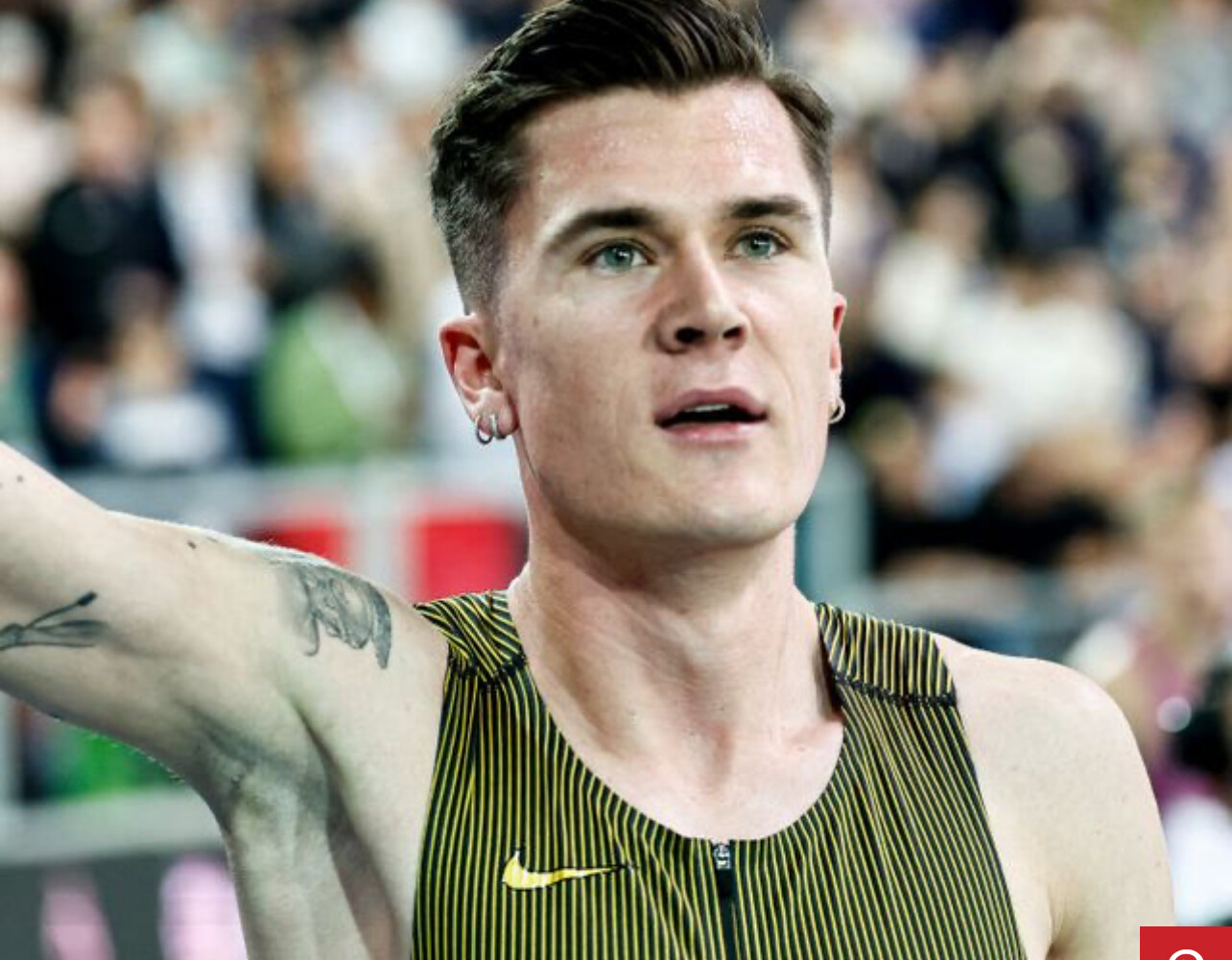
After the race, the 24-year-old expressed his elation, stating, “It feels amazing. This is what happens in Liévin. I’m a very happy man. You have to be focused for the whole race. It’s tough, but it’s worth it.”

Ingebrigtsen’s achievement underscores his dominance in middle-distance running and sets a high standard for competitors in the upcoming season.
by Boris Baron
Login to leave a comment
Running Outside Your Comfort Zone: How to Push Your Limits and Achieve More
Running outside your comfort zone is about pushing past your usual limits, stepping into a place of discomfort, and embracing the challenge that leads to improvement. It’s the difference between running at a comfortable, familiar pace and pushing yourself to a point where your body and mind are tested.
For an elite athlete, this means running at world-class paces that demand peak physical and mental effort. For an average runner, it means running faster, longer, or with greater intensity than they are used to—whether that’s shaving seconds off a 5K time, running a new distance, or finishing a tough interval workout.

This powerful image captures Jakob Ingebrigtsen at the absolute limits of his endurance, a moment that epitomizes what it means to push beyond the comfort zone in elite racing. Ingebrigtsen, one of the most dominant middle-distance runners in the world, is seen completely spent, collapsed on the ground, relying on assistance just to get up. His quote, "I felt like I was about to die," is not just dramatic-it's a reflection of what it takes to compete at the highest level, where the margins between victory and defeat are razor-thin.
For elite athletes like Ingebrigtsen, racing is about embracing suffering rather than avoiding it. He has trained his body and mind to withstand extreme discomfort, knowing that to achieve greatness, he must run through the pain, not away from it. This image serves as a powerful reminder that whether you're an Olympic champion or an everyday runner chasing a personal best, the only way to truly improve is to push beyond what feels comfortable and into that space where breakthroughs happen.
The key to improving as a runner is learning how to handle discomfort without giving in to it. The body adapts when it’s challenged, but only if you consistently step beyond your comfort zone.
How the Average Runner Can Learn to Push Their Limits
Many runners stay at the same pace for years because they never challenge themselves beyond their current ability. Here’s how an average runner can start running outside their comfort zone.
Run at a Pace That Feels Uncomfortable
Most runners settle into a pace that feels sustainable and manageable. To break through plateaus, introduce faster running into your routine.
Progression runs: Start slow and gradually increase your pace so that the final third of the run is at a challenging but controlled effort.
Threshold runs: Run 10-15 minutes at a comfortably hard pace, where you’re breathing heavily but still in control.
Strides and surges: Add 20–30 second accelerations at the end of easy runs to build speed without fatigue.
Train with Purposeful Discomfort
Pushing beyond your limits doesn’t mean running recklessly—it means training your body to handle discomfort efficiently.
Intervals: Short, fast efforts (e.g., 6 x 400m at 5K pace) followed by short rest periods train your body to sustain effort even when tired.
Hill repeats: Running uphill improves strength and stamina, forcing you to push through discomfort.
Long runs with fast finishes: Ending long runs at a faster pace teaches your body to keep going when tired.
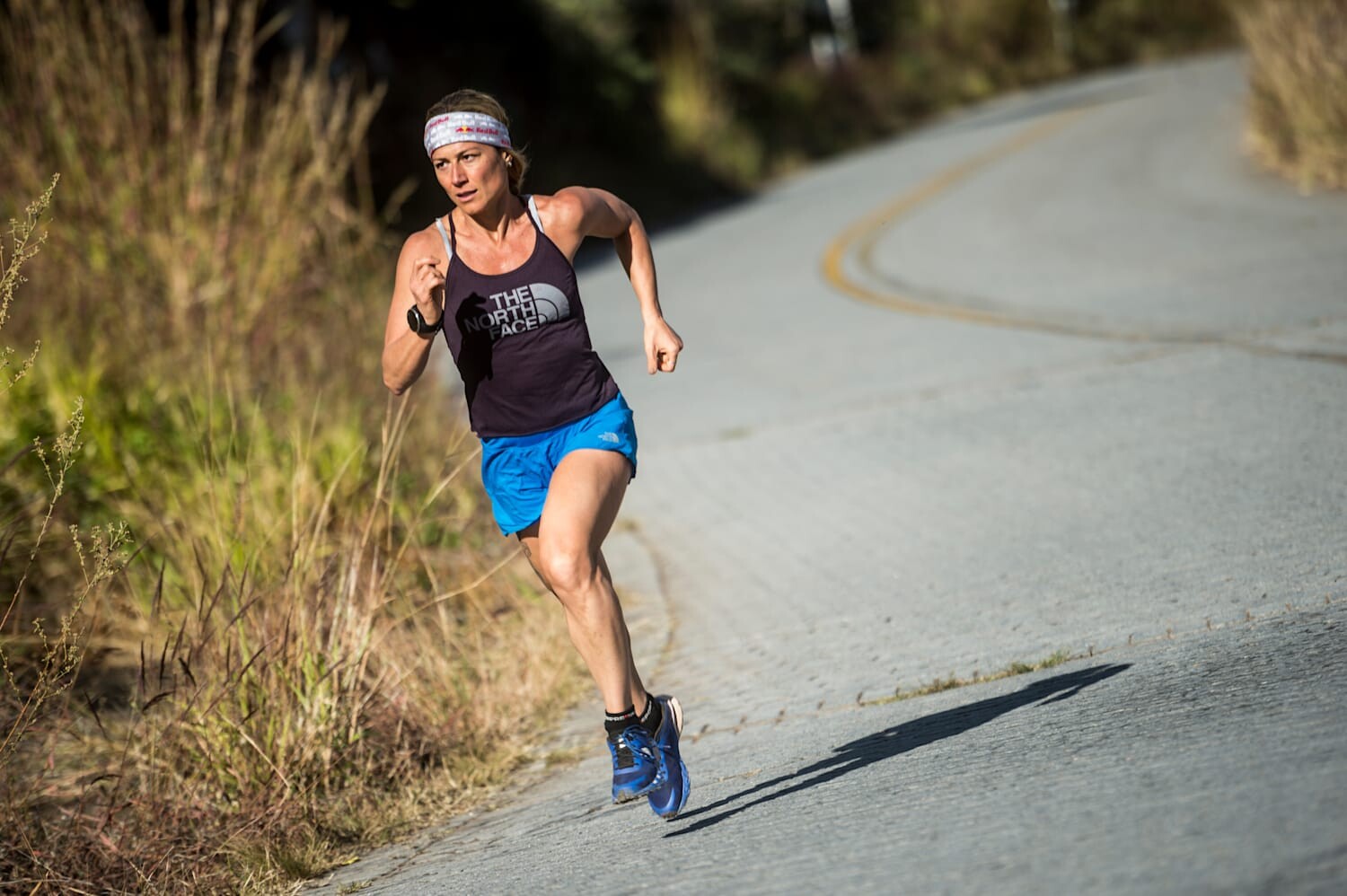
Improve Mental Toughness
Running outside your comfort zone isn’t just physical—it’s mental. When your legs get tired and your breathing gets heavy, your mind will tell you to slow down. Learning to override that voice is crucial.
Mantras: Repeating phrases like “strong and steady” or “I can do this” can help override negative thoughts.
Controlled discomfort: Remind yourself that pain in running isn’t the same as injury—it’s a sign of growth.
Visualization: Picture yourself finishing strong before your run starts. Your body follows what your mind believes.
Race More Often
The best way to step out of your comfort zone is to race regularly. In a race setting, you’re more likely to push yourself harder than you would in training. Even if you’re not at peak fitness, toeing the start line forces you to test your limits.
How Elite Athletes Push Their Limits at World-Class Pacing
When watching professional runners race, it’s easy to think they make it look effortless. The truth is, they are almost always on the edge of discomfort, running at a pace that would break most runners within minutes.
World-Class Pacing and the Pain Zone
Elite runners train to be comfortable with discomfort. Whether it’s a marathoner running under five-minute miles for 26.2 miles or a sprinter giving 100% effort for just 10 seconds, they are conditioned to hold their effort at a threshold most people can’t sustain.
Marathoners like Eliud Kipchoge spend years training their bodies to maintain high speeds without breaking down. His sub-2-hour marathon (averaging 4:34 per mile) was only possible because of relentless training outside his comfort zone.
Middle-distance runners like Jakob Ingebrigtsen in the 1500m race push through extreme fatigue in the final lap, training their bodies to hold off the competition while running at speeds most runners can’t even sprint.
Mental Fortitude at the Elite Level
At the world-class level, running outside the comfort zone is as much mental as it is physical. Elite runners:
Train to tolerate pain – They expect discomfort and use it as a signal to push harder, not slow down.
Use tactical thinking – Instead of panicking when they feel tired, they focus on form, breathing, and staying in the race mentally.
Embrace suffering – They view discomfort as part of the journey, knowing that real improvement only happens when they challenge their limits.
Gene Dykes and Rosa Mota: Masters of Pushing the Limits
Some of the best examples of runners stepping outside their comfort zones come from masters athletes.
At age 70, Gene Dykes ran a marathon in 2:54:23 at the Jacksonville Marathon. His ability to continue running world-class times at an age when most runners have slowed dramatically is a testament to smart training, mental fortitude, and a willingness to embrace discomfort.
Rosa Mota, the 1988 Olympic marathon champion, continues to redefine what’s possible for older runners. In December 2024, at age 66, she ran a 10K in 38:23 at the San Silvestre Vallecana, setting a new world record for the W65 category. Even decades after her Olympic victory, she remains a fierce competitor, proving that world-class pacing and a commitment to pushing limits don’t have an expiration date.
Why Running Outside Your Comfort Zone Matters
If you want to improve as a runner—whether you're chasing a faster 5K, your first marathon, or simply becoming stronger—you have to train beyond what feels easy.
Running outside your comfort zone doesn’t mean reckless overtraining, but it does mean challenging your limits in a controlled, smart way. Whether it’s picking up the pace, racing more often, or simply not backing down when things get tough, stepping beyond what feels comfortable is where real growth happens.
Elite athletes live in this zone during competition. The average runner can train to experience it too—and that’s how true breakthroughs happen.
by Boris Baron
Login to leave a comment
Teen Phenom Sam Ruthe Shatters Age-Group 1500m Record at Sir Graeme Douglas International
New Zealand's rising middle-distance star, Sam Ruthe, has added yet another milestone to his stunning season, breaking a world best for 1500 meters previously held by two-time Olympic champion Jakob Ingebrigtsen of Norway.
Competing at the Sir Graeme Douglas International in Auckland on February 9, 2025, the 15-year-old sensation clocked an incredible 3:41.25, finishing second behind Japan’s Ryoji Tatezawa (3:40.20). Along the way, Ruthe obliterated New Zealand's U17 and U18 records in yet another remarkable display of his talent.
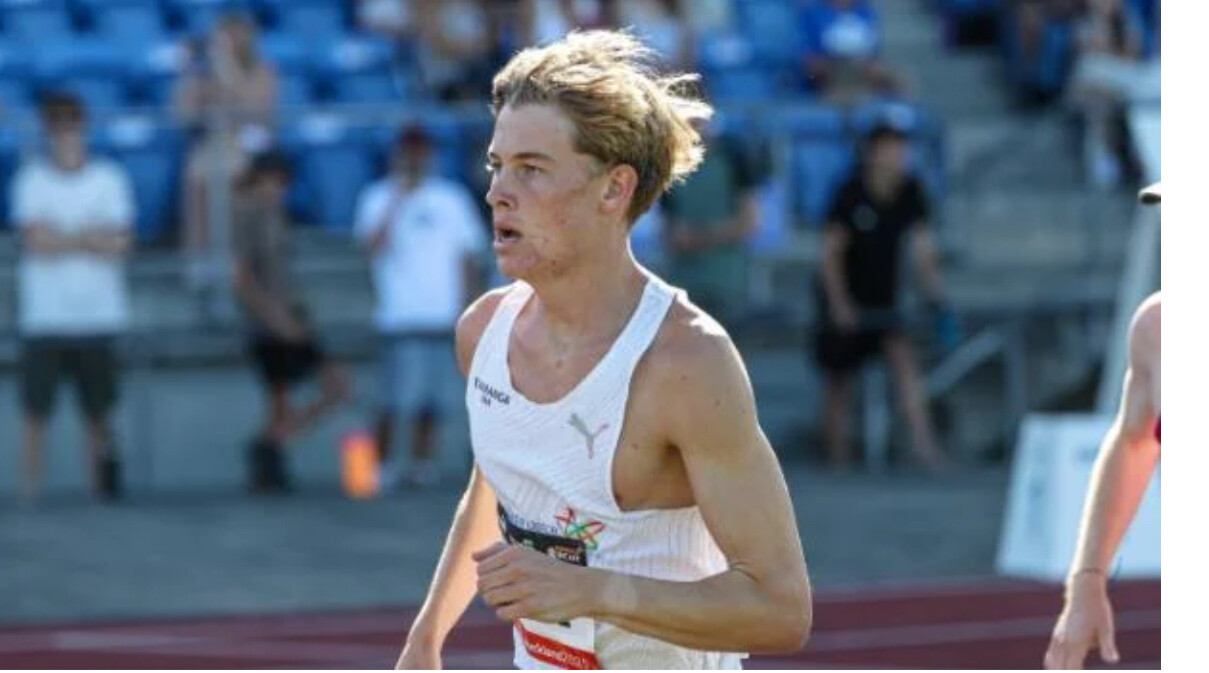
His latest feat continues a historic two-week streak that has seen him produce jaw-dropping times across multiple distances:
4:01.72 for the mile
1:50.57 for 800m
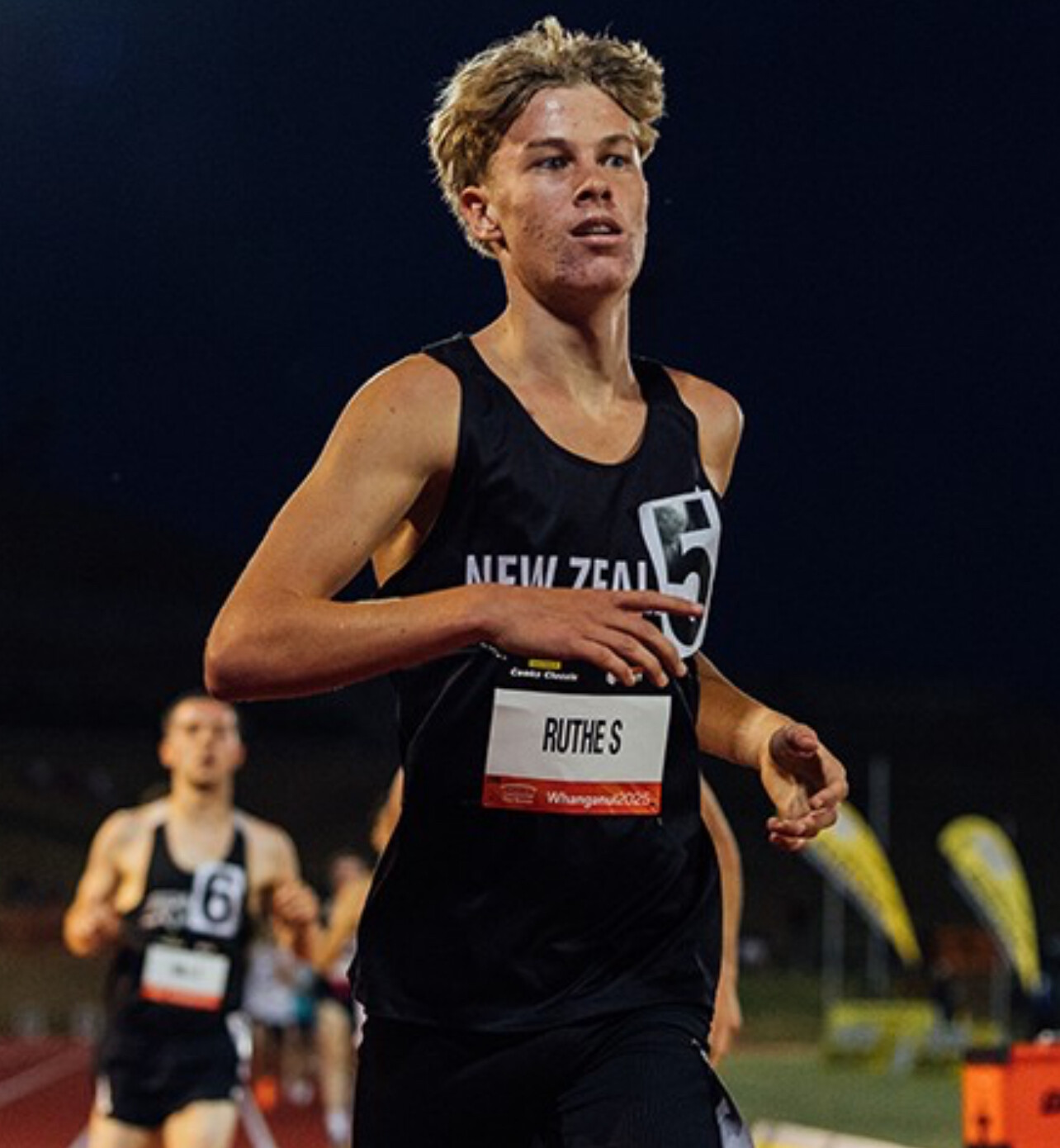
7:56.18 for 3000m
Ruthe also recently became the youngest athlete to ever win a senior men’s national title in New Zealand.
While thrilled with his performance, Ruthe admitted that surpassing Ingebrigtsen’s age-group mark wasn’t his primary focus going into the race.
"I wasn't exactly targeting that record," he said. "I just went into the race hoping to do the best I could in terms of placing, and it was a bonus to get his record. I definitely had it in the back of my mind."
His time shaved over five seconds off his previous best, set en route to his mile record two weeks ago in Whanganui.
As in his 3000m national title race a week earlier, Ruthe executed a patient and tactical race, staying with the lead pack while others faded. Entering the final 100 meters in fourth, he unleashed a devastating kick, overtaking Australians Will Lewis and Matt Hussey to secure second place.
"I was actually quite lucky they both moved out quite wide, so I could find the gap," Ruthe explained. "It felt real, real nice having that gap open up. I go into these races, parking in behind the other people and hoping they pull me through—and this race did exactly that."
With every performance, Ruthe inches closer to an even bigger goal—becoming the youngest athlete to break four minutes for the mile, a feat also accomplished by Ingebrigtsen at 16 years old. His latest 1500m time suggests he’s within striking distance.
His next opportunity to chase history? The Maurie Plant Meet in Melbourne next month, where his performance in Auckland should secure him a spot in the elite mile field.
Ruthe's 3:41.25 brings him agonizingly close to another milestone—his father’s best time. Former New Zealand 1500m champion Ben Ruthe still holds the household record by just three-hundredths of a second.
"That's alright," the younger Ruthe said with a grin. "I don't think he'll have it for long, so he should enjoy it while it lasts."
With his meteoric rise, it’s only a matter of time before Sam Ruthe rewrites not just family records—but history itself.
by Boris Baron
Login to leave a comment
Gjert Ingebrigtsen’s Controversial Coaching Legacy and Its Impact on His Sons’ Success
The story of Jakob, Henrik, and Filip Ingebrigtsen is one of extraordinary athletic success, but it is also deeply intertwined with the intense and often controversial coaching methods of their father, Gjert Ingebrigtsen.
As the driving force behind their rise to middle-distance running dominance, Gjert’s methods pushed his sons to achieve Olympic golds, world records, and international acclaim. However, recent revelations about the emotional and physical toll of his coaching style have added complexity to this narrative of triumph.
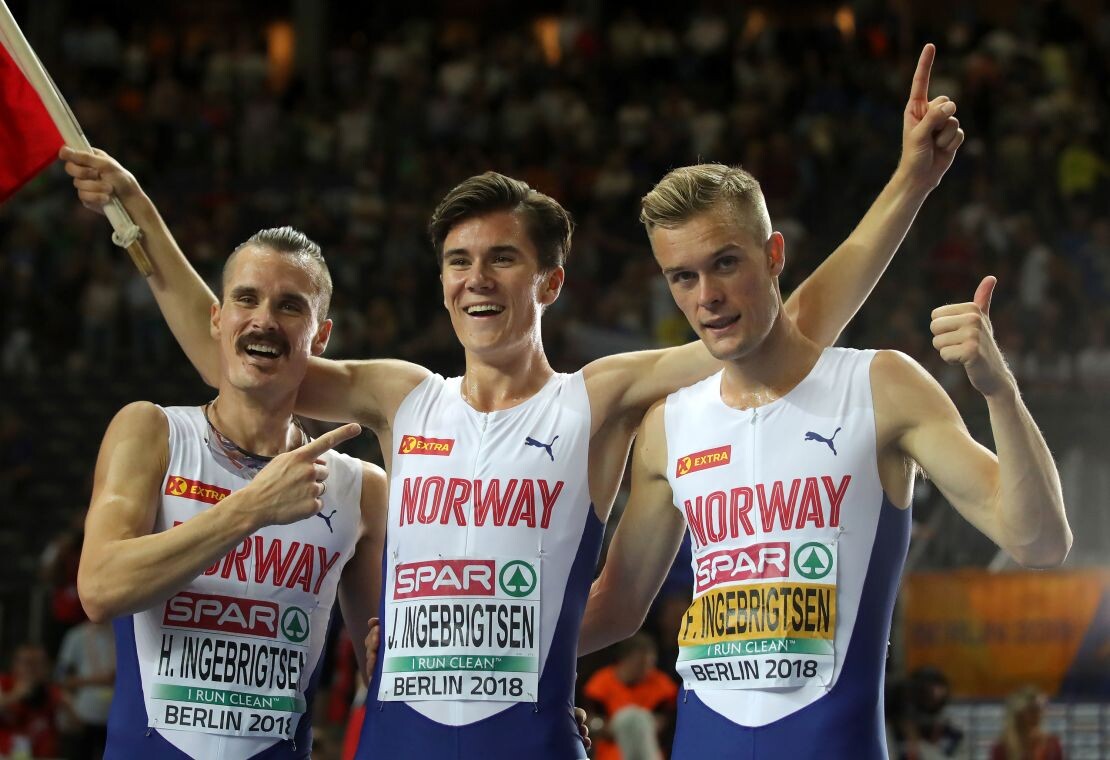
The Making of Champions
Gjert Ingebrigtsen approached coaching with a scientific precision, designing rigorous training plans that tested the physical and mental boundaries of his sons. From a young age, Jakob, Henrik, and Filip were subjected to high-pressure environments that demanded discipline and focus far beyond what most young athletes experience. This relentless drive for perfection produced remarkable results:
Jakob Ingebrigtsen, the youngest of the brothers, is the reigning Olympic champion in the 1500m (2020 Tokyo) and the 5000m (2024 Paris). He also holds world records in events ranging from the 2000m to the two-mile distance.
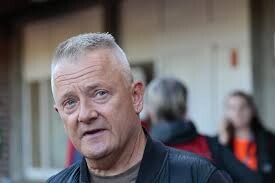
Henrik and Filip have also claimed European titles and made their mark in global competitions, showcasing the strength of Gjert’s training philosophy.
Central to Gjert’s success was his ability to push his sons far outside their comfort zones, a critical skill in elite racing where discomfort is inevitable. Jakob’s fearless racing style, where he often dictates the pace from the front, exemplifies the mental toughness forged under his father’s guidance.
The Cost of Greatness
While Gjert’s methods undeniably built champions, they also came at a significant emotional cost. In October 2023, the brothers publicly accused their father of aggression, control, and physical violence during their upbringing and training. Gjert has denied these allegations, but the legal case and its impact on the family dynamic have cast a shadow over their achievements.
Jakob and his brothers have spoken about the challenges of growing up in a high-pressure environment. The emotional strain, coupled with Gjert’s demanding expectations, led to a complex relationship between father and sons. While the discipline and mental resilience instilled by Gjert have undoubtedly contributed to their success, the allegations highlight the fine line between rigorous coaching and harmful behavior.
Jakob’s Success Amid Adversity
Despite the personal challenges, Jakob continues to dominate the global stage. In 2024, he won his second Olympic gold in the 5000m at the Paris Games, further cementing his legacy as one of the greatest distance runners of all time. His ability to consistently perform under pressure reflects not only his physical talent but also the mental toughness cultivated during his father’s intensive coaching.
Jakob’s racing style—marked by a willingness to embrace discomfort and push beyond limits—bears the hallmark of Gjert’s philosophy. However, as he and his brothers navigate their careers independently, they are forging their own paths while acknowledging the dual impact of their father’s legacy.
A Complicated Legacy
Gjert Ingebrigtsen’s role in his sons’ success cannot be overstated. His unrelenting pursuit of excellence shaped them into some of the most formidable athletes in the history of middle-distance running. Yet, the recent revelations remind us that behind every champion is a story of sacrifice, struggle, and, sometimes, pain.
The Ingebrigtsen family’s journey raises important questions about the balance between ambition and well-being. While Gjert’s methods produced results that few could argue with, they also left scars that the brothers are now working to heal. Their story serves as both an inspiration and a cautionary tale about the cost of greatness.
As Jakob continues to inspire the running world with his performances, the legacy of Gjert’s coaching will remain a defining, if complicated, part of the Ingebrigtsen story.
by Boris Baron
Login to leave a comment
Ingebrigtsen to Make Indoor Mile Debut at Lievin Meeting
Norwegian middle-distance sensation Jakob Ingebrigtsen is set to make his indoor mile debut at the Meeting Hauts-de-France Pas-de-Calais Trophee EDF in Lievin on February 13. The 24-year-old will return to the venue where he set his world indoor 1500m record of 3:30.60 during the World Athletics Indoor Tour Gold meeting in 2022.
Since that record-breaking performance, Ingebrigtsen has continued to dominate, setting outdoor world records in the 2000m and 3000m, as well as achieving a world best for two miles. The reigning world and Olympic 5000m champion also holds a European record for the mile with a blistering time of 3:43.73, placing him third on the world all-time list.
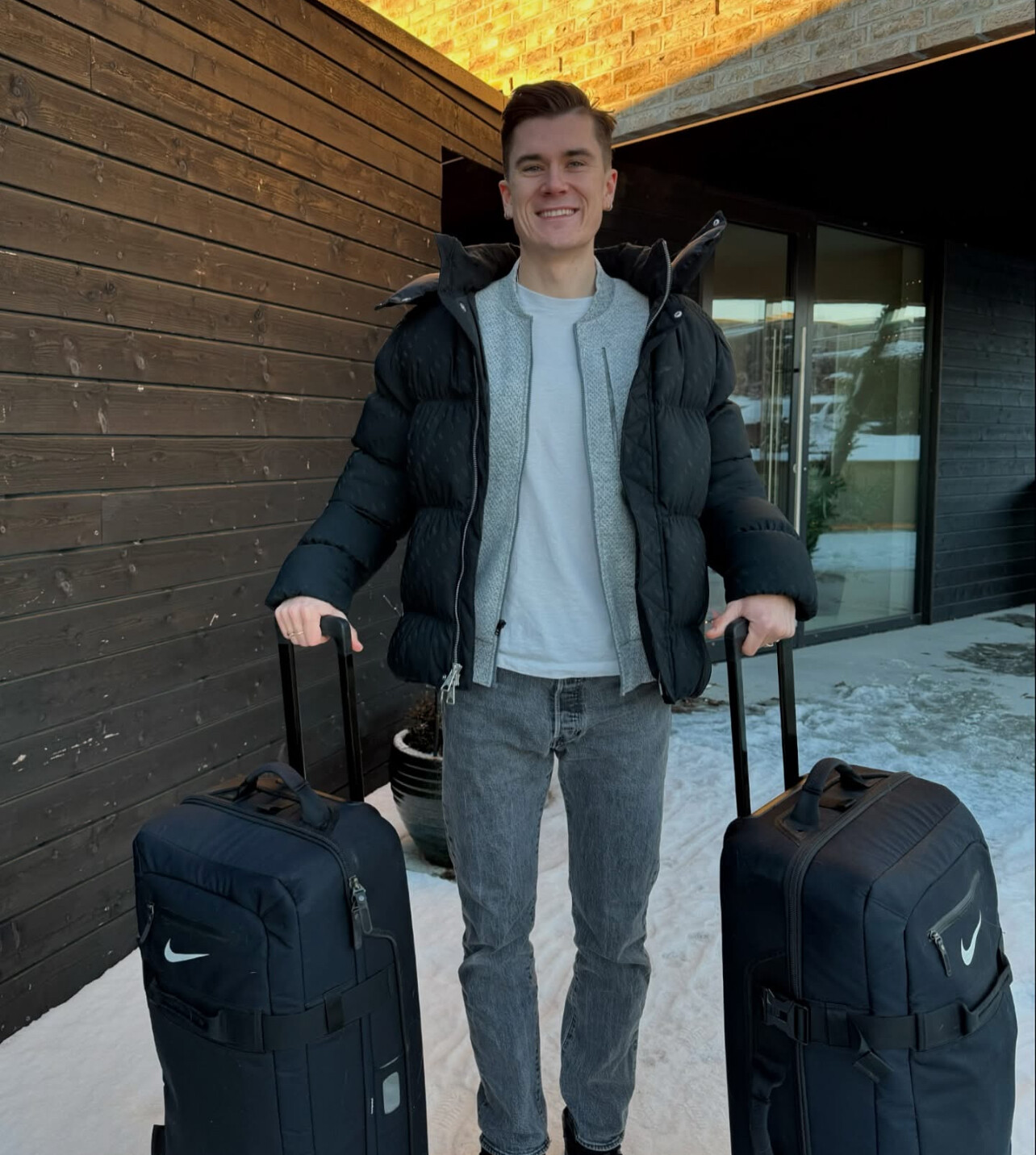
A three-time winner in Lievin, Ingebrigtsen claimed victories in the 1500m in 2021 and 2023, alongside his record-setting performance in 2022. His debut in the indoor mile is expected to be one of the season’s most anticipated events.
Login to leave a comment
You Should Stop Showering Between Runs—and My 7 Other Running Rules for 2025
If you’ve been on social media lately, you might have seen your friends making in-and-out lists. It’s been a thing for a few years—maybe less-so now—but the idea is to come up with some trends that you think will be popular and unpopular.
The best ones are fun and off the top of the head. Some of the thought-out ones about culture are kind of annoying. (Yeah, everyone agrees that “being mean” is out in 2025.)
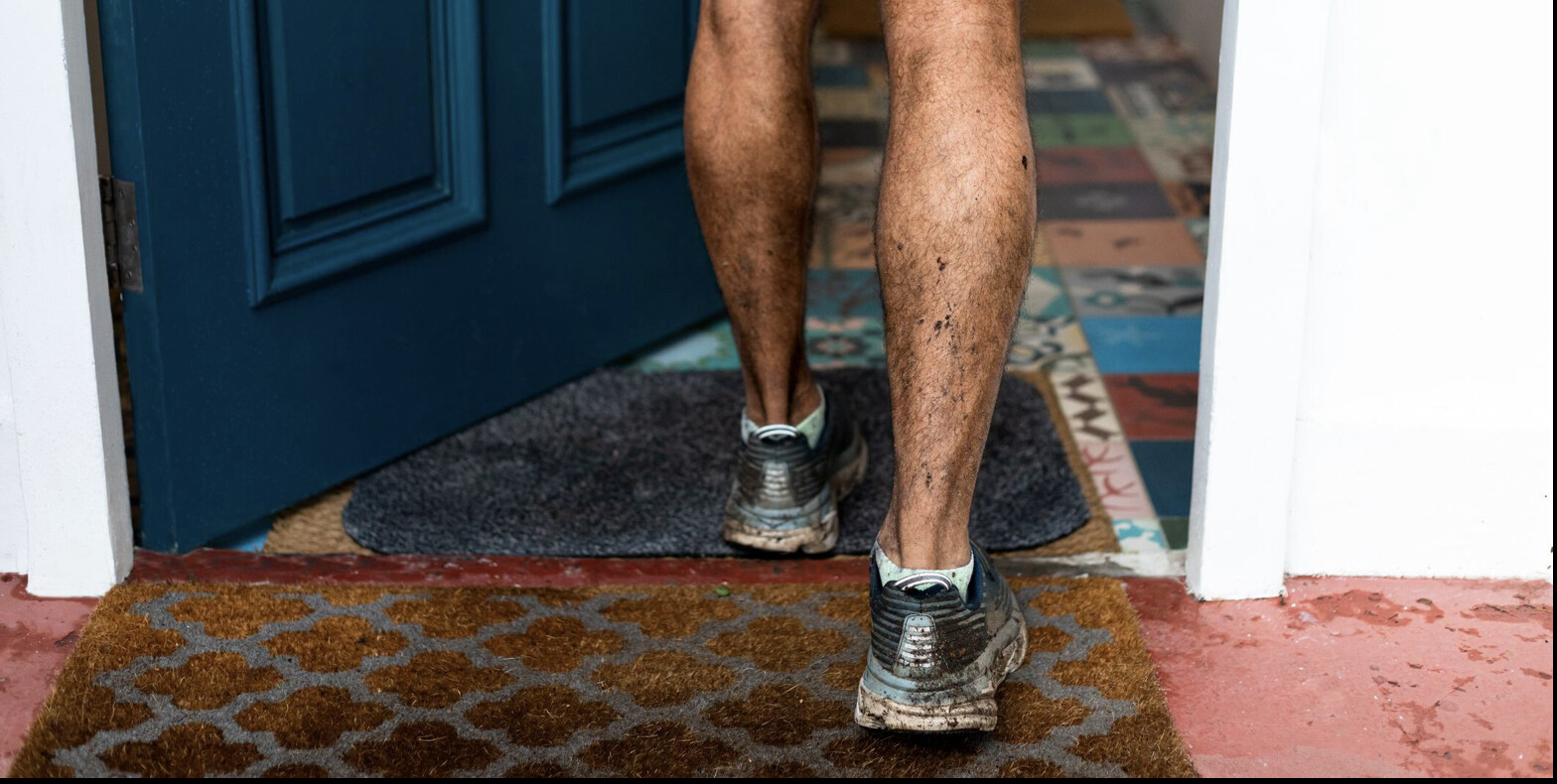
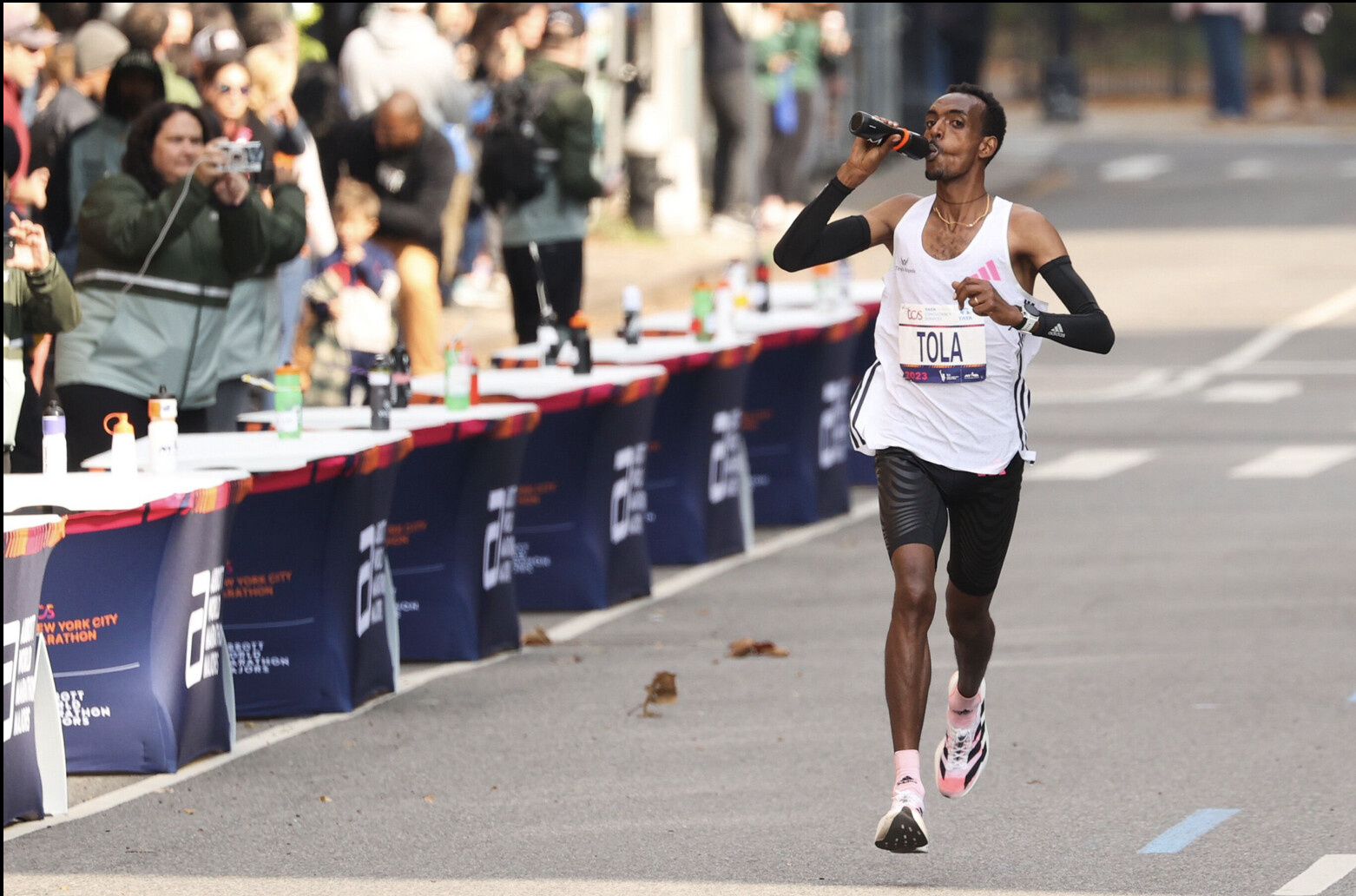
So I took the idea and applied it to my own running. Remember, these are specific to my experience. They’re not mandates or absolutes or even advice.
And at the end of the year, feel free to call me out if I was wrong. I probably was.
Out: Showering between runs
In a normal training week, I run twice a day on Wednesday and Thursday. Those are my recovery days, and I use them as a chance to get ahead on my weekly mileage. Usually, I run between 60 and 85 miles a week during marathon training, so to break it up, I’ll run once before work and then again during lunch or after work. Also known as “doubling.”
But that laundry piles up fast.
So on days when I work from home, sometimes I’ll put off my shower and stay in my workout clothes until my next run or weightlifting session. I live alone, so there’s no one to complain about my odor. (If you live with a roommate, partner, or family, use this strategy at your own risk.)
In: Wearing ugly race T-shirts
Remember the race T-shirts of the 2000s? The ones that looked like they were designed by a middle schooler and had no fewer than 1,000 ads on the back? I’ve gotten so many over the years, and most have gone straight to Goodwill or I’ve used them for yard work. But this year, I’d like to use my race T-shirts for their purpose—and run in them. There’s something fun about wearing an ill-fitting cotton tee with an ad for Jimbo’s Ford Dealership on the back.
Some races are pivoting away from shirts in favor of more environmentally friendly alternatives, but don’t expect them to completely disappear. According to Running USA, 58 percent of participants who took the 2024 Global Running Survey said that commemorative T-shirts are important to their race experience.
Out: Long runs
I’m planning on running Grandma’s Marathon in June, which means I’m building up my mileage now. But I’ve found that long runs are kind of overrated. Hear me out.
During my last marathon training block, I never ran more than 18 miles for my long run. Many programs call for 20 to 23-mile long runs, but my coach and I decided that 18-milers would get the job done. I’ve been running high mileage for close to a decade now, so I have a large aerobic base. The strategy worked, and I ran 2:27:07, hitting my goal of sub-2:28.
Right now, as I build, my coach and I are experimenting with the idea of downplaying the long run. Instead of using it as a key workout (for example, 10+ miles at marathon pace during the run), we’re focusing more on high-volume workouts twice a week, then using the long run just to get time on my feet. Similar to how Jakob Ingebrigtsen, who never runs more than 12.5 miles, trains.
A hard long run takes a large emotional and physical toll on my body, so I’ve found that I respond well when I keep the long run easy and focus on high-volume threshold sessions during the week. Of course, running on tired legs is key to running a good marathon. As I get closer to June, I’m sure there will be weeks where I use long runs as key workouts. But sometimes I need to remind myself that the other six days of the week are just as important.
In: Wearing a T-shirt over a long sleeve
For the past year, I’ve been mulling over buying a running vest. They look cool, but I keep telling myself that I don’t need to buy something that I’d probably only wear on a few runs each year. I live in eastern Pennsylvania, so I’m usually wearing something light in the fall or a full jacket in the winter. Enter, the working man’s vest: the T-shirt over the long sleeve shirt.
The sleeves keeps your arms warm while the T-shirt acts as a protectorate for your torso, insulating (not suffocating) you from the wind. Cooper Teare is a big fan.
Bonus points if you pair the look with an ugly race T-shirt. And double bonus points if you rock the look in a snowy race, like seemingly everyone did at the 2004 USATF Cross-Country Championships in Indianapolis.
In: Sunscreen
Man, I’m bad at this. If I’m preparing to sit out at the beach or pool, I lather up thoroughly. But if I’m heading out for a 90-minute run, I rarely put on sunscreen, justifying to myself that the route is shady or 90 minutes isn’t that long in the sun.
I’ve gotten better at sun protection—I almost always wear a hat and sunglasses year-round now—but I need to get better at lathering up on a regular basis. If you see me jogging this summer, ask me if I have sunscreen on and, if I don’t, shame me until I turn around and go home.
Out: Marathon bottle service
In my debut marathon at Indianapolis in November, I was lucky enough to qualify for the elite field, meaning I got perks like reserved restrooms, a separate warm-up area, and bottle service. For those unfamiliar, bottle service at a marathon is different from bottle service at a Las Vegas nightclub. Instead of access to marked-up Patrón, you get reserved spots on the course where you can stash your race fluid bottles.
Because there’s limited space, bottle stations are typically reserved for the fastest runners at a marathon. Instead of fumbling with the water or electrolyte-drink cups that the masses use, elites can consume whatever they trained with. In most cases, it’s some kind of carbohydrate mix.
At Indianapolis, there were three bottle stations: at miles 8, 14, and 20. I filled mine up with Maurten 160, but honestly, I didn’t feel like the perk was that necessary. I carried eight gels with me, taking them every 15 to 20 minutes, which was plenty. The bottles felt like more of a bonus or palate cleanser. They were cumbersome to hold and drink at race speed, and I found myself only taking a few sips then discarding them. Plus I had to pee the entire race, so I didn’t want to make the situation more dire.
Previously, I thought bottle service was non-negotiable to running a fast 26.2. But my mind has changed. If you envy the pros for their bottle access, don’t worry, you’re not missing out. Gels get the job done.
In: Off-distance races
I’m stealing this one from my 2024 in-and-out list. Off-distance races are events that diverge from traditional race distances (like the 5K, 10K, and marathon). Popular examples include the Bix 7 Road Race in Iowa (a 7-miler), the Boilermaker 15K in New York, and the Manchester Road Race in Connecticut (4.737 miles).
My favorite off-distance event is the Run for the Diamonds in Berwick, Pennsylvania. It’s a Thanksgiving day 9-miler that’s been going strong since 1908. The whole town comes out and cheers the runners up and down the massive hill that’s sandwiched in the middle of the route. Plus, the top seven men and women get real diamonds!
In: Short trail races
Speaking of race distances, let’s make short trail races a thing in 2025. Ultramarathons get most of the attention, but they’re not for everyone. At risk of contradicting myself against my previous “in,” there are plenty of trail options at the 5K, 10K, and half-marathon distance. Local state parks may host them, or sometimes there are running races tied in with mountain bike or cyclocross races. (Fifth Street ‘Cross in Pennsylvania does a great job of putting on both.)
I’d love to jump in a trail half marathon this summer between my two marathon training blocks. There won’t be any pressure to run a certain time, and let’s be real, running on the roads gets boring sometimes.
Login to leave a comment
Jakob Ingebrigtsen shares tips on training indoors during winter
Olympic and world 5,000m champion Jakob Ingebrigtsen has been rewriting distance running records each year of his career. His unique and innovative training techniques, such as the double-threshold method and the strategic avoidance of long runs, have become pivotal components of his regimen. Surprisingly, another key element of his training is the treadmill. In a recent interview with Coros, Ingebrigtsen shared insights on how he maximizes indoor training during the winter.
For Ingebrigtsen, the treadmill isn’t just a winter fallback plan for when it’s too icy or snowy in his home of Sandnes, Norway—it’s a crucial training tool. The 24-year-old says he uses the treadmill extensively for his double threshold sessions, often completing the first workout of his day indoors.
“What I like about the treadmill is that it is far more controlled versus being outdoors,” Ingebrigtsen explains. “I can set a pace and forget it, without dealing with wind, corners, or other outdoor obstacles.”
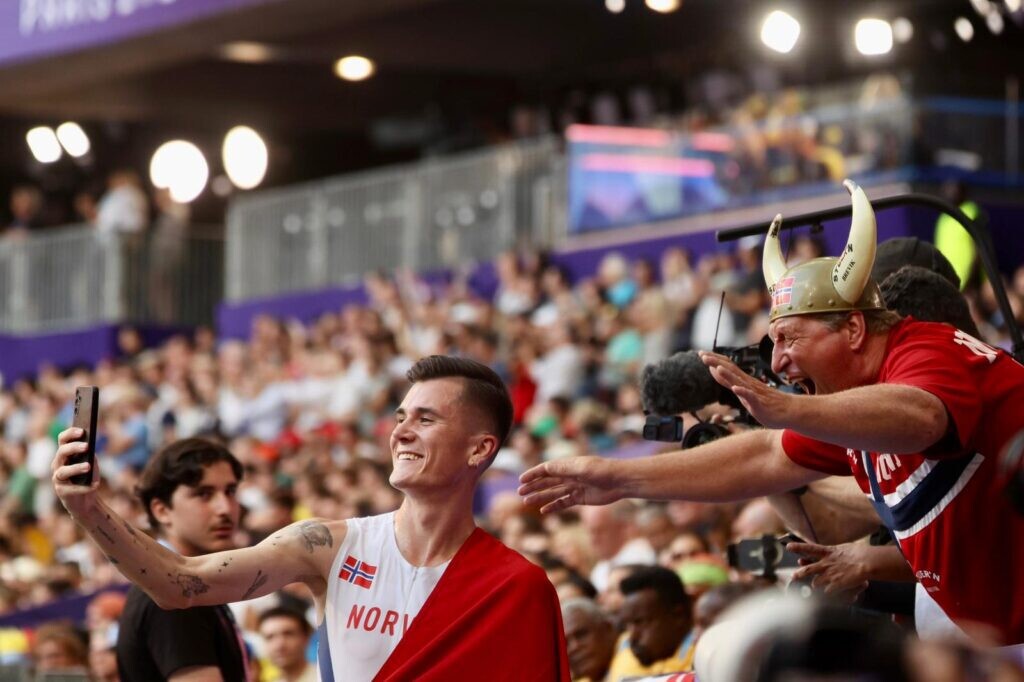
Precision is key for the two-time Olympic champion, who uses the treadmill to hit specific efforts or paces for each of his runs. “On the treadmill, I can closely monitor my heart rate, lactate levels and pace,” he says. “Those three factors, combined with how I feel, guide me to ensure a successful session.”
How he stays motivated
Many runners, including myself, dread the monotony of treadmill training, but Ingebrigtsen finds motivation by approaching each treadmill run with a competitive mindset. “I look at each run as a competition, challenging myself to hit the splits and complete the workout within the parameters,” Ingebrigtsen says.
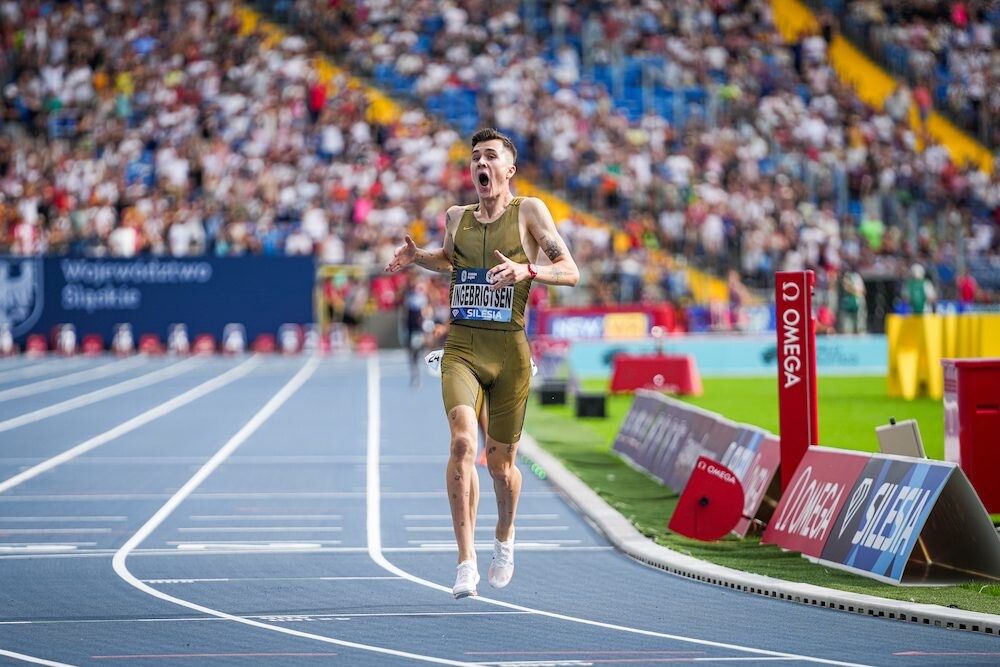
The Norwegian told Coros that his training schedule is planned “well in advance” to give him a clear idea of the work ahead: “I do everything the session requires, because I understand its importance in the long run,” he says. “Motivation isn’t an issue for me—I know it’s not supposed to be fun; it’s supposed to be productive.”
What treadmill training is perfect for
Winter in Norway can be unforgiving, much like in Canada, forcing many runners indoors. Ingebrigtsen says this time is perfect for building his base fitness with high-volume and threshold-focused training.
Ingebrigtsen’s meticulous indoor training allows him to measure his base-building progress precisely,” he says. “I monitor my heart rate, lactate, pace and overall feeling. These metrics let me know if my fitness is improving, and if I’m on track to meet my goals.”
After his 2023-2024 base season was disrupted by an Achilles scare, delaying his outdoor season, the Norwegian says he began his base-building (mileage) phase on the treadmill considerably later. As the weather warms up in Norway and his fitness improves, he’ll transition into his mid-season block, reducing his volume and increasing his speedwork to complement his base.
by Marley Dickinson
Login to leave a comment
Spanish Olympian given four-year ban for falsifying whereabouts documents
Spanish Olympian and two-time world championship medalist Mohamed Katir was handed a four-year ban by the Athletics Integrity Unit (AIU) on Friday for falsifying travel documents in support of his explanation for his three whereabouts failures in 2023.
Instead of accepting wrongdoing and taking on the two-year whereabouts ban, the 26-year-old middle-distance runner falsified travel documents (a travel itinerary, boarding pass and booking confirmation) in an attempt to mislead investigators as they probed the integrity of his explanation for a whereabouts failure that occurred on Feb. 28, 2023. The result was an even longer ban than what he was already facing.
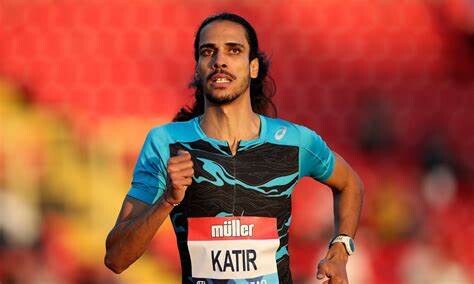
The four-year ban will run concurrently with Katir’s ongoing whereabouts sanction, extending his ban from the sport until February 2028. This means he will be forced to miss both the 2025 World Athletics Championships in Tokyo and the 2027 World Athletics Championships in Beijing.
According to the AIU, the world 5,000m silver medallist missed three tests between Feb. 28, 2023 and Oct. 10, 2023 (missing three doping tests in a 12-month window results in an anti-doping rule violation, or ADRV).
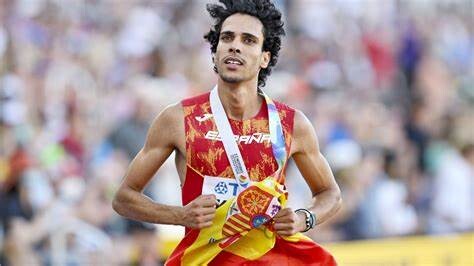
Katir’s whereabouts failures
On Feb. 28, 2023, a Doping Control Officer (DCO) went to the address in Murcia, Spain, indicated in the Athlete’s Whereabouts information; upon arrival, the DCO was told that Katir was in Lisbon and would not be returning until March 2.
Katir missed another test on April 3, when a DCO showed up at his home in Murcia again. When they arrived, Katir was training in France, and had failed to update his whereabouts. Katir told the AIU he tried to update his information, but the system was not working. He was charged with his second violation when he failed to send an email providing evidence of technical issues.
His third violation occurred on Oct. 10, when a DCO went to the specified location during a 60-minute time slot between 7:20 p.m. and 8:20 p.m. When the DCO arrived, Katir was away at training, and later insisted there was a mistake in his whereabouts, and claimed he never changed the time slot from his usual 7:00 a.m. to 8:00 a.m. window.
Katir is a two-time world championship medallist in the men’s 1,500m and 5,000m events. He won silver in the 5,000m behind Norway’s Jakob Ingebrigtsen at the 2023 World Athletics Championships in Budapest.
AIU head Brett Clothier said the ruling underscored the seriousness of tampering: “Gone are the days in athletics when explanations offered in anti-doping cases are just accepted at face value,” he stressed. “The vast majority of our elite athletes respect the strict rules and processes of the sport and they should take heart at the action being taken to ensure a level playing field.”
by Marley Dickinson
Login to leave a comment
Olympic 800m champion refuses to sign with Grand Slam Track
Olympic 800m champion Keely Hodgkinson has expressed her lack of interest in signing with Grand Slam Track (GST), the new, lucrative rival to the Diamond League, according to The Standard. The British athlete plans to focus on running fast times and winning medals in 2025, choosing to forgo the chance to compete for the enormous US$400,000 prize purse awarded for winning all four GST meetings.
Hodgkinson still hopes to participate in the circuit as one of the four Challengers invited to compete. (Signed athletes are referred to as Racers). Michael Johnson, the creator of GST, plans to select these athletes based on their speed and popularity, while aiming to fuel existing rivalries. Challengers have one shot at the US$100,000 prize offered at each Slam, whereas Racers, who are already guaranteed base compensation upon signing, compete for the generous purse four times.
“I think it’s great what [Johnson’s] doing, I just don’t feel like it’s for me next year,” Hodgkinson said. “I guess we’ll see where the league goes after that. But I look forward to hopefully doing one.”

Hodgkinson would be slated to race against her frequent rival, 2023 world champion and 600m world record holder Mary Moraa. She would also face Olympic 1,500m silver medalist Jessica Hull and American mile record holder Nikki Hiltz, who round out the short-distance event roster.
Required to (almost) double her distance
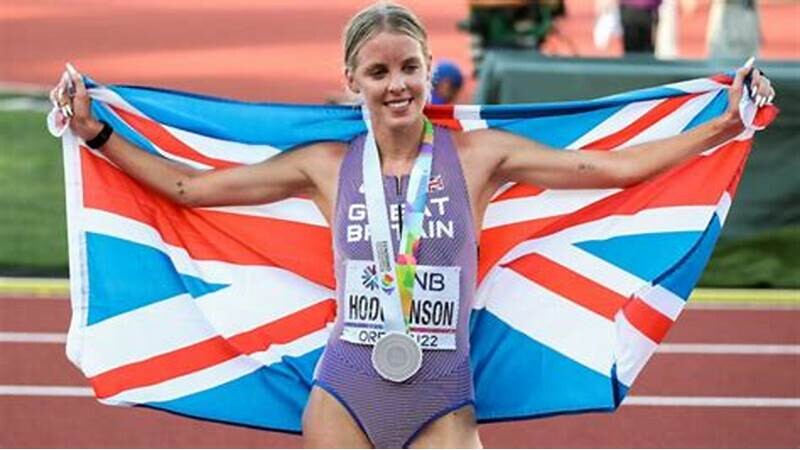
The league requires each athlete to participate in two events at each Slam; falling into the short distance category, Hodgkinson would race the 800m and 1,500m. While the Brit is less familiar with the latter, she would need to race the three-and-three-quarter-lap event four times during GST’s inaugural season.
An obligation to race eight times over four weekends and splitting her focus between two events doesn’t line up with Hodgkinson’s stated 2025 season goals. Although she called her season early due to an injury after winning gold in Paris, Hodgkinson already has her eyes on beating her personal best and earning more gold hardware from next year’s indoor European championships, and indoor and outdoor world championships
“It takes a special race”
“I do think the 1:53 is possible,” Hodgkinson, who holds a personal best of 1:54.61, told The Standard. “I think we’re so close to getting down there, but obviously it takes a special race. You’ve got to be in perfect shape, perfect conditions, the right race for all that to come together. I will definitely put myself in the best position to do so.”
Other major names missing from the GST roster include Jakob Ingebrigtsen, Noah Lyles and Sha’Carri Richardson. Currently, 43 of 48 athletes have signed with the league as Racers.
by Cameron Ormond
Login to leave a comment
Jakob Ingebrigtsen captures third Euro XC Championship title
Jakob Ingebrigtsen’s absence from the European Cross Country Championships last year only seemed to fuel his determination for a spectacular return in 2024. On Saturday, the Norwegian middle-distance superstar, who won in both 2021 and 2022, captured his seventh Euro XC title—his third as a senior—at Dokuma Park in Antalya, Türkiye.
“The course was very challenging and tactical,” Ingebrigtsen, the two-time world 5,000m champion, told media post-race. “There’s a lot of fighting and pushing, a lot of things that could happen.” The 7.8 km course featured sections of sand and mud.
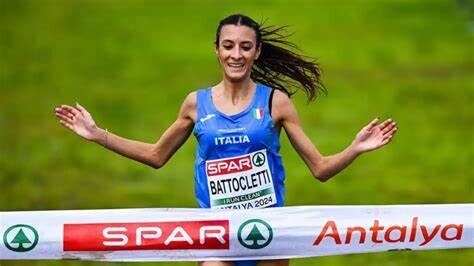
Ingebrigtsen ran comfortably in the lead pack throughout most of the race, before launching a decisive move in the final stages. He crossed the finish line in 22 minutes and 16 seconds, eight seconds ahead of Italy’s Yemaneberhan Crippa. Spain’s Thierry Ndikumwenayo took bronze in 22:31.
Women’s race

Italy’s Nadia Battocletti stole the spotlight on the women’s side, securing her third continental title in 2024. The Olympic 10,000m silver medallist from Italy captured her first senior European cross-country title, following a season that saw her clinch a 5000m/10,000m double at the Roma 2024 European Athletics Championships.
Like Ingebrigtsen, Battocletti demonstrated strategic patience, remaining close to the front pack and unleashing a powerful kick in the final kilometres. She finished in 25:43—11 seconds clear of Germany’s Konstanze Klosterhalfen, who took silver for the second year in a row, crossing the line in 25:54 and matching her finishing time in 2023. The European 10,000m champion, Yasemin Can, ran 26:01 to capture bronze in her home country.
by Keeley Milne
Login to leave a comment
Father of Ingebrigtsen brothers faces charges involving champion Jakob
The father and former coach of Jakob Ingebrigtsen will stand trial next year on charges of alleged physical abuse against the Norwegian two-time Olympic gold medalist, lawyers for Gjert Ingebrigtsen said on Friday.
Norwegian police earlier this year pressed charges against the elder Ingebrigtsen, and his lawyer said in a statement at that time that they involved only one of his children while other charges were dismissed.
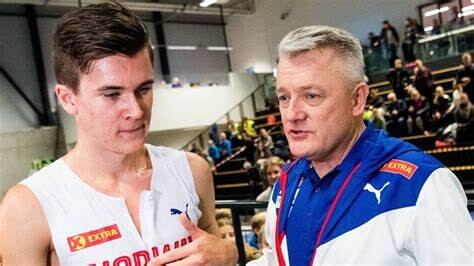
The charges will now extend to incidents involving Jakob, 24, who took the gold medal in the 5,000 meters in Paris this summer, his lawyer Mette Yvonne Larsen told Reuters.
"He is now charged with having abused two of his seven kids ... We had expected that this would happen," she said.
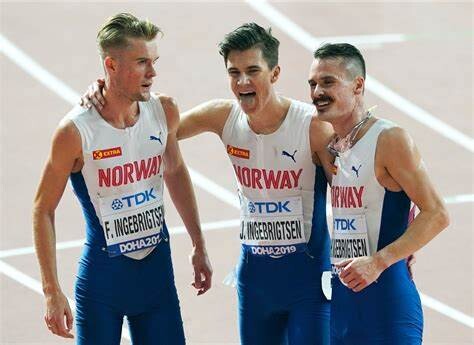
Gjert's lawyers, John Christian Elden and Heidi Reisvang, said in a statement: "Gjert Ingebrigtsen maintains what he has said all along, that he does not admit criminal guilt for the offenses he has been charged with and that he has never subjected any of his children to either physical or mental abuse."
Jakob accused his father of several incidents of abuse, according to Norwegian media, including slapping him twice in 2008 and kicking him in the stomach after he fell off a scooter in 2009.
There were also numerous incidents of verbal abuse and threats in 2015 and 2016, according to Jakob, who said in one incident that his father assaulted him for between 15 and 30 minutes.
The Times reported that, according to the indictment, Gjert allegedly threatened to beat Jakob "to death."
Jakob and his brothers, Filip and Henrik, accused their father of physical violence and abusive behavior in a Norwegian newspaper column last year. The elder Ingebrigtsen has repeatedly denied the claims.
Gjert Ingebrigtsen announced in 2022 that he was stepping down as coach not long after Jakob won gold in the 1,500 meters in Tokyo, prompting widespread speculation over their rift.
Jakob Ingebrigtsen finished third in his much-anticipated showdown with Brit Josh Kerr in the 1,500 meters in Paris this summer as American Cole Hocker took an unexpected gold medal. However, Ingebrigtsen did win gold in the 5,000 meters.
by Reuters
Login to leave a comment
Timothy Cheruiyot reveals when he plans to hang up his spikes & his post-retirement goals
Timothy Cheruiyot plans to retire from the 1500m after a final championship, transitioning to long-distance and marathon races.
Timothy Cheruiyot has expressed his intention to retire from the 1500m discipline after the 2025 World Championships in Tokyo, Japan.
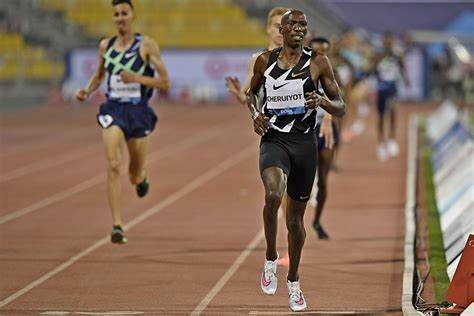
The 2020 Olympic silver medallist aims to transition to long-distance and road racing, marking a significant shift in his illustrious career.
Cheruiyot, one of the most consistent middle-distance runners over the past decade, has set his sights on concluding his 1500m journey with a strong performance in Tokyo.
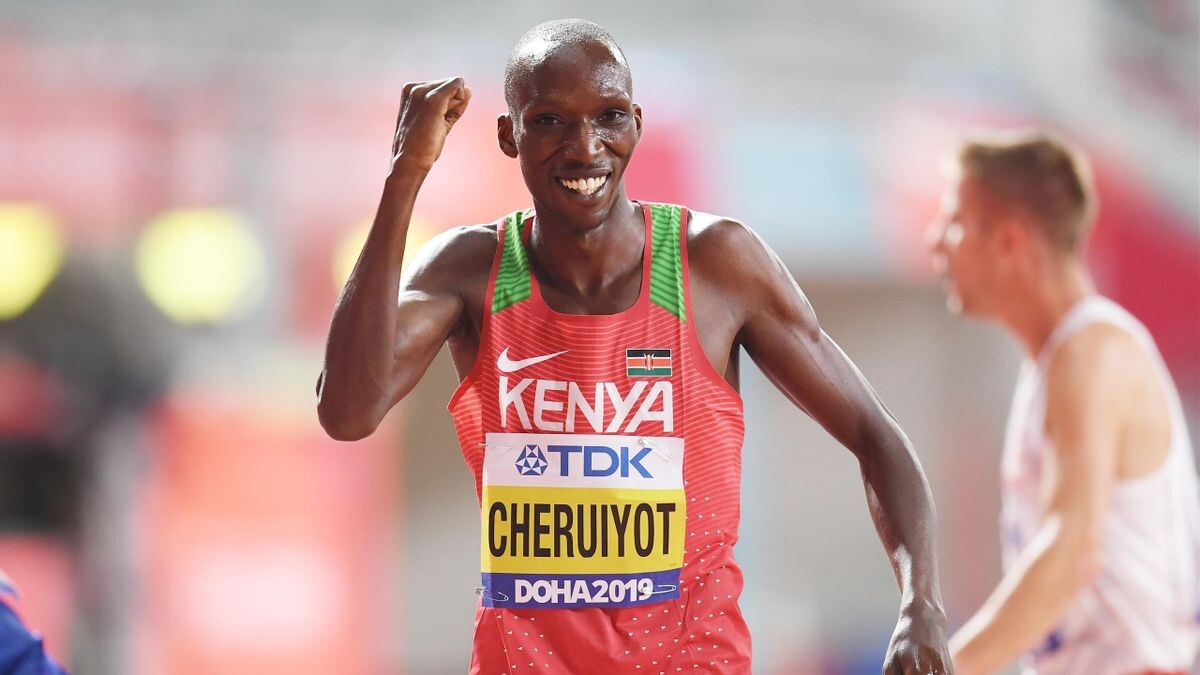
“My plan is to post good results at the 2025 World Championships. This will be my last 1500m after having done it for 10 years,” said Cheruiyot as per The Star.
“I will switch to 5000m or 10000m and then the marathon.”
The 29-year-old’s track record speaks for itself. His first major breakthrough came at the 2017 World Championships in London, where he secured a silver medal with a time of 3:33.99, finishing just behind fellow Kenyan Elijah Manang’oi.
Cheruiyot elevated his game in Doha 2019, claiming the world title in 3:29.26, solidifying his place among the sport’s elite.
Cheruiyot also earned a silver medal at the Tokyo 2020 Olympics, clocking 3:29.01 in a tightly contested race won by Norway’s Jakob Ingebrigtsen.
His dominance extended to the Diamond League, where he clinched five titles, and his medal haul includes two silvers each from the Commonwealth Games and African Championships.
However, Cheruiyot’s journey has not been without challenges. In Budapest 2023, he suffered a tendon injury that sidelined him for nine months.
Despite the setback, he returned to competitive form, surprising even himself by securing a spot at the 2024 Paris Olympics.
“This season was good for me. Despite tearing both my tendons last year, I am happy I came back strong,” he reflected.
“I started my training later than anyone. Making it to the Olympics surprised me; I did not run with confidence at the trials.”
While Paris didn’t go as planned—Cheruiyot finished 11th in a highly competitive race—he remains optimistic about his future. His focus has shifted to 2024, where he plans to participate in several 10km road races to prepare for his transition.
“I have not done any road race before, but I am hoping to test it next year before Tokyo. I will look for a 10km race to gauge my body,” he explained.
Cheruiyot emphasized the importance of strategic planning with his coach, Bernard Ouma, as he gears up for his sixth World Championships appearance.
“I need to sit down with my coach and plan well on the races I will participate in preparations for the World Championships,” he said.
Having made his global debut in 2015, Cheruiyot’s career has been a mix of highs and lows.
From a seventh-place finish in Beijing to gold in Doha and struggles in recent years, his resilience has been remarkable.
Now, as he nears the twilight of his 1500m career, Cheruiyot is determined to leave on a high note.
His ambition to tackle longer distances and eventually the marathon signals a new chapter for the Kenyan athlete, whose legacy in middle-distance running remains firmly intact.
by Festus Chuma
Login to leave a comment
Five mistakes new trail runners can avoid
New to trail running? Welcome to the wild side. But before you lace up and charge into the woods, let’s save you from a few rookie moves that could make your first trail race a comedy of errors.
Sure, you’ve got rugged shoes and maybe even a hydration vest, but the terrain demands more than just gear. Here are five unexpected (and often hilarious) mistakes new trail runners make—and how to avoid them.
1.- Don’t be the trail DJ

Picture this: you’re cruising through a peaceful forest, birds chirping, wind rustling the leaves… and suddenly, you hear someone blasting their playlist on speaker. (Which instantly kills that trail-joy vibe.) Sure, running to music can be motivating, but this isn’t a marathon on city streets (and even then, most people aren’t going to appreciate you sharing your tunes). Part of trail running is connecting with nature—and–fun fact–most people don’t want to hear your music wafting through the wilderness. If you need tunes, grab some earphones (safely) and keep the forest soundtrack serene.
2.- The jostle-sprint: you’re not at a track meet
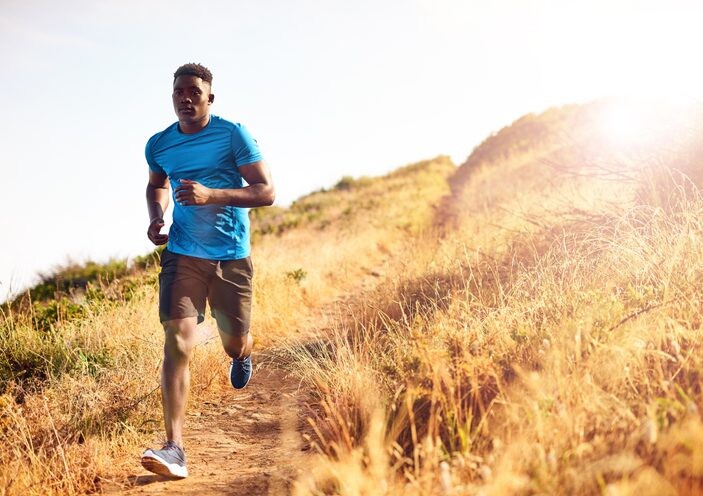
We’ve all seen them—the over-excited newbie who approaches passing another runner as if they’re sprinting for Olympic gold. Here’s the thing: you’re not Josh Kerr chasing Jakob Ingebrigtsen in the 1,500m final. It’s a trail, not a track meet—trail runners tend to be a laid-back crew, and aggressively shoving past someone while you breathe down their neck like a rhino is just poor form. Slow your roll, politely announce yourself, say excuse me and ease by. You’ll pass them soon enough without making anyone feel like prey.
3.- Downplaying the downhill
Everyone dreads the uphill grind, but let’s be honest, the downhill is where the real fun (and chaos) begins. For new trail runners, it’s either full-speed-ahead with no brakes, or they lock up tight, like every step could be their last. The sweet spot is somewhere in between—and mastering that balance can be the difference between feeling like a trail wizard and wiping out on a banana peel, cartoon-style. Yes, caution is key (no one wants a surprise somersault mid-run), but being overly timid? That’ll do your pace no favours. Loosen up, spread your arms for balance and embrace the momentum, while keeping things controlled.
4.- The classic snack underestimation
Trail running requires a little more fuel than a short jaunt on the road. Think you’re fine with just water? You’re about to face a (potentially dangerous) reckoning. That 10K trail loop can take much longer than expected, especially with some rooty, rocky climbs. Proper fuelling is as essential for trail training as it is for trail races. Bring snacks—and opt for real sustenance over gels to keep your tastebuds happy (although gels are a great option if you prefer your snacks simple and squeezable). Halfway through, that peanut butter sandwich (or whatever your chosen delight) will feel like a Michelin-star meal. Make sure you overestimate your fuelling needs when you’re hitting the singletrack, and start taking in calories early and often.
5.- Thinking you’re better than the dirt
Here’s a heads-up: you’re going to get dirty. Mud, dust and puddles are part of the package. Newbies often cling to the fantasy that they’ll stay spotless. Spoiler: they won’t. At some point, you either embrace the mess or spend your run doing awkward hopscotch like you’re dodging landmines. Own it. By the end, those mud splatters will feel like badges of honour. And look at the pros—they’re not crossing the finish line looking ready for a laundry commercial, either.
Trail running isn’t just road running with more rocks. It’s its own world, with unspoken rules and quirks that make it uniquely fun. Embrace it, laugh at your own mistakes (we’ve all been there), and for the love of all that’s sacred in the woods, leave the speaker at home.
by Keeley Milne
Login to leave a comment
How to survive the marathon taper
Sometimes running less is harder than you think.
The hardest part of marathon training is behind you. For the past 12 weeks, you’ve dedicated yourself to preparing physically for race day. Now, it’s time to focus on the mental aspect and successfully navigate the taper. On paper, tapering may seem easy—reducing your training volume and intensity to give your body the rest it needs before the big day. But after 12 weeks of hard work and increasing mileage, the taper can feel unusual and even hard.
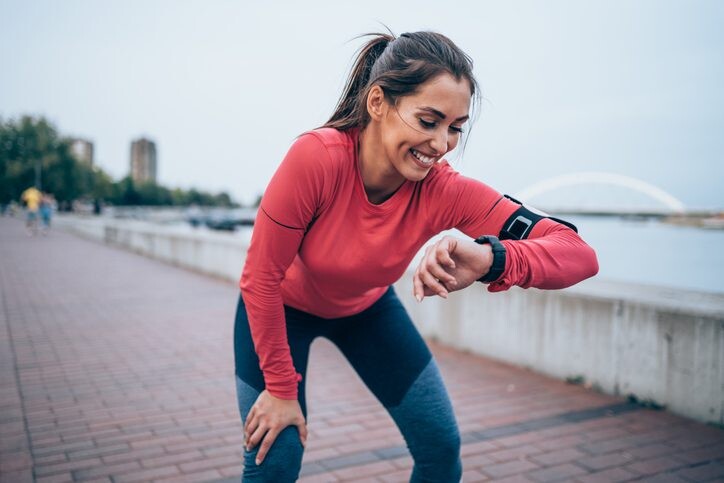
Tapering allows your muscles to repair, replenishes glycogen stores and sharpens your mental focus, enhancing your race performance and minimizing injury risk. It typically lasts one to three weeks, depending on your race distance and training plan.
Many forget that the taper is a shift in focus from mileage to recovery. It’s crucial to ensure you’re getting enough rest—whether that means going to bed earlier or adding naps to your day—and continuing to eat well. Stick to the healthy habits that have fuelled your training to keep your body primed for race day.
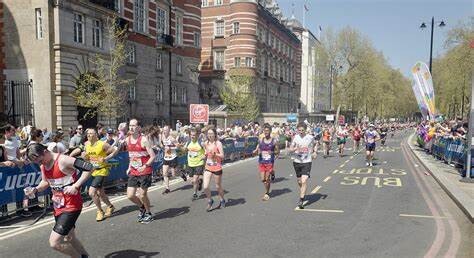
The goal of tapering is to recover from the accumulated fatigue of training while maintaining your fitness level so you can perform at your best on race day. Runners typically reduce their mileage by about 60 per cent during the taper, while still including shorter, faster workouts to stay sharp. With less running, you’ll have more free time on your hands. Use this opportunity to catch up on things you may have missed during your training—whether it’s meeting friends for a drink, attending a concert, or simply unwinding with your favourite Netflix show.
If cutting back on running feels strange, don’t worry—it’s completely normal. Just remind yourself that resting is part of the process. Trust in your training and enjoy the chance to relax; you’re on the right track!
by Marley Dickinson
Login to leave a comment
Why are track running and road running so different?
In case you missed Jakob Ingebrigtsen’s half-marathon debut at the Copenhagen Half Marathon last weekend, it didn’t quite unfold as expected. Many believed the Norwegian middle-distance star would challenge the world record of 57:30 and easily break the one-hour mark for 21.1 kilometres. However, as even the most talented runners have learned, the transition from track to road racing is far from simple. Ingebrigtsen, like so many before him, fell victim to a classic mistake—going out too fast–which led to him walking at the halfway point.
Despite this, Ingebrigtsen still finished 34th, with a time of 63:13—a strong debut, though well below expectations for the reigning Olympic 5,000m champion; his time was more than five minutes behind winner Kenya’s Sebastian Sawe, who ran a blistering 58:05.
Ingebrigtsen has been one of the most dominant middle-distance runners in the world over the past four years, racking up numerous titles and accolades between 1,500m and 5,000m. Even though his mile personal best of 3:43.73 is the second-fastest in history, the leap from track to long-distance road running, particularly the half-marathon (or marathon), requires a completely different approach. While both distances demand physical and mental strength, marathoning and long-distance events call for more patience and experience.
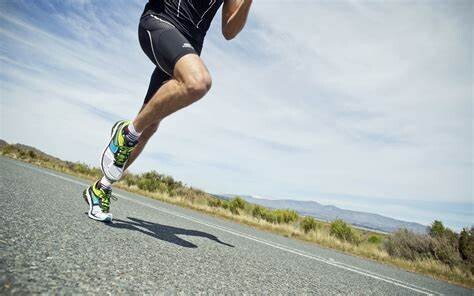
On the track, Ingebrigtsen is accustomed to controlled environments, with perfect surfaces, consistent pacing and distances that are short enough that errors can be overcome with a kick. In contrast, the half-marathon requires not just endurance, but precise pacing and energy management over a much longer period. These skills become second nature to the world’s most experienced distance runners, but for a track star dipping his foot into the world of road racing, it presents new challenges. Starting too fast, as Ingebrigtsen did (coming through 10K in 27:27) is a detriment in longer road races, where proper pacing is crucial to avoid bonking.
The 24-year-old admitted as much after the race. In an interview with Olympics.com, he confessed, “Twenty-one km is definitely too long! I’m definitely not going to try again for a couple of years. It’s fun but tough. I tried to stay with the leading group for as long as I could.”
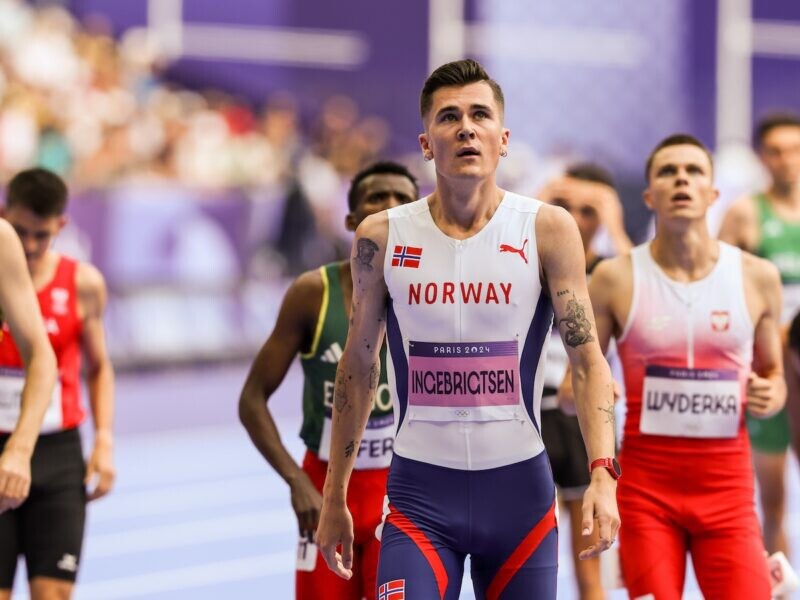
He also revealed he doesn’t ever run more than 21 km in training, and had this to say on Instagram: “My deepest respect to all you long-distance runners! Just realized the meaning of the term ‘run like hell.’ And thank you, Copenhagen Half, for the warm welcome!”
Building mileage and incorporating long runs are fundamental to half-marathon and marathon training, as they prepare both the body and mind for the prolonged strain of going the distance. Long runs are valuable practice for developing race-day strategies, establishing a rhythm and managing nutrition/fluid intake. If Ingebrigtsen wasn’t covering the distance in training, expecting a record time on race day would have been a very tall order.
His debut serves as a reminder that dominance on the track doesn’t guarantee instant success on the roads. Road racing takes time to master, and his performance in Copenhagen likely taught the 24-year-old some valuable lessons, should he choose to revisit the half-marathon distance in the future.
by Marley Dickinson
Login to leave a comment
Sawe and Kipkemboi claim Copenhagen Half Marathon crowns
Sabastian Sawe outkicked Jacob Kiplimo to win the men’s race in a world lead, while Margaret Kipkemboi solo ran her way to victory in the women’s race at the Copenhagen Half Marathon, a World Athletics Gold Label road race, on Sunday (15).
Uganda’s world record-holder Kiplimo, Kenya’s world champion Sawe and his Kenyan compatriot Isaia Lasoi were all in contention in the closing stages, but Sawe had the strongest finish. He managed to get a gap on Kiplimo with the finish line in sight and won in a PB of 58:05, four seconds ahead of Kiplimo. Lasoi was one second further back in a PB of 58:10.
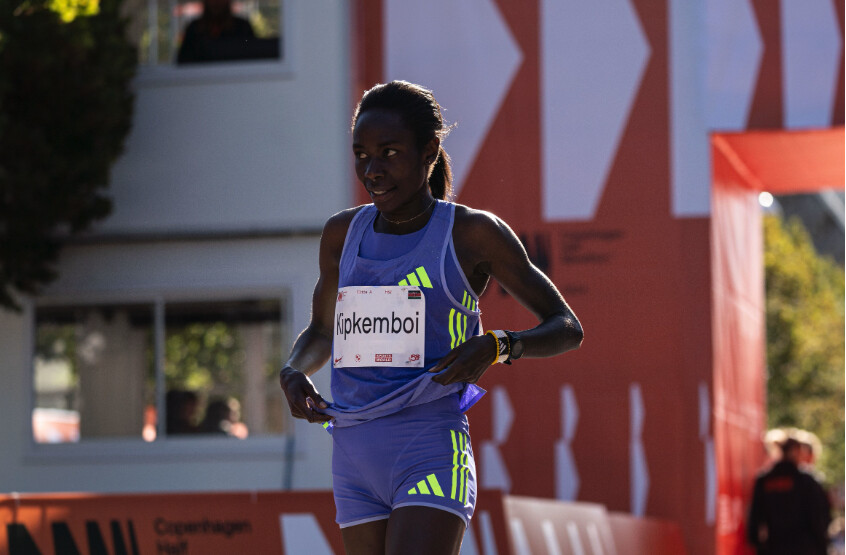
Kenya’s world half marathon silver medallist Kipkemboi was joined by her compatriots Judy Kemboi, Catherine Reline Amanang'ole and Sheila Chelangat plus Ethiopia’s Ftaw Zeray through 10km but she left her rivals behind during the second half of the race to win by more than half a minute in 1:05:11. Kemboi was second in a PB of 1:05:43 and Amanang'ole, the world half marathon bronze medallist behind Kipkemboi, was third in a PB of 1:06:09.The men’s race also featured Norway's Olympic and world 5000m champion Jakob Ingebrigtsen, making his half marathon debut just two days after winning the Diamond League 1500m title in Brussels.
He formed part of a large lead men’s group that passed 5km in 13:53, but that pack quickly whittled down to six – pacemaker Berihu Aregawi, the 5000m champion in Brussels two days ago, leading ahead of Kiplimo, Sawe, Lasoi, Amos Kurgat, Kennedy Kimutai and Ingebrigtsen.
But Ingebrigtsen couldn’t maintain that pace and he pulled up at 10km, reached in 27:27 – a national record for the Norwegian on the roads. His rivals strode ahead and although he stopped a couple more times, Ingebrigtsen did continue to the finish and clocked 1:03:13.
After letting Sawe take the lead for a spell, Kiplimo was back in front at 15km, passed in 41:17. From there it was a battle between the trio of Kiplimo, Sawe and Lasoi. They were together through 20km in 55:13, before Sawe took control in the closing stages and went on to win in a time that improves his own world lead and is just four seconds off the race record, which was a world record when it was set by Geoffrey Kamworor in 2019.
Having won his world half marathon title in Riga last year, Sawe will have the opportunity to return to Copenhagen in 2026, when the city hosts the World Athletics Road Running Championships.
Another athlete who could be there is his compatriot Kipkemboi, who secured silver in Riga. This time in Copenhagen she ran as part of a group that reached 5km in 15:22 and she had Kemboi, Amanang'ole, Chelangat and Zeray for company through 10km in 30:52. The race was down to Kipkemboi and Kemboi by 15km, which they reached in 46:14, 15 seconds ahead of Amanang'ole.
Kipkemboi then made her break and ran the final section of the race alone, getting to the 20km mark in 1:01:42 and extending her advantage to win in 1:05:11.
Login to leave a comment
Copenhagen Half Marathon
The Copenhagen Half Marathon was the first road race in Scandinavia and is one of the fastest half marathons in the world. The Copenhagen Half Marathon has been awarded with the International Association of Athletics Federation's (IAAF) most distinguished recognition - the IAAF Road Race Gold Label. Copenhagen Half Marathon was awarded the IAAF Road Race Bronze Label in January...
more...Ingebrigtsen set to make half-marathon debut two days after 1,500m win at Brussels Diamond League
Jakob Ingebrigtsen is set to make his half-marathon debut in Copenhagen on Sunday after racing to victory in the 1,500-meters event at the Brussels Diamond League final on Friday evening.
The 21-kilometer race, organized by Copenhagen Half Marathon, will conclude a brilliant season for the 23-year-old who won gold in the 5,000m at the Paris 2024 Olympics.
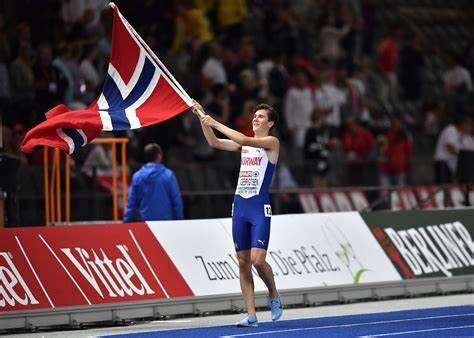
He had hinted at the news on social media two days ago, after racing to his third consecutive Diamond League final victory in the 1,500m, writing “What a great way to end the season… or?”
Ingebrigtsen will find himself in a field that includes world record-holder Jacob Kiplimo and world champion Sabastian Sawe.
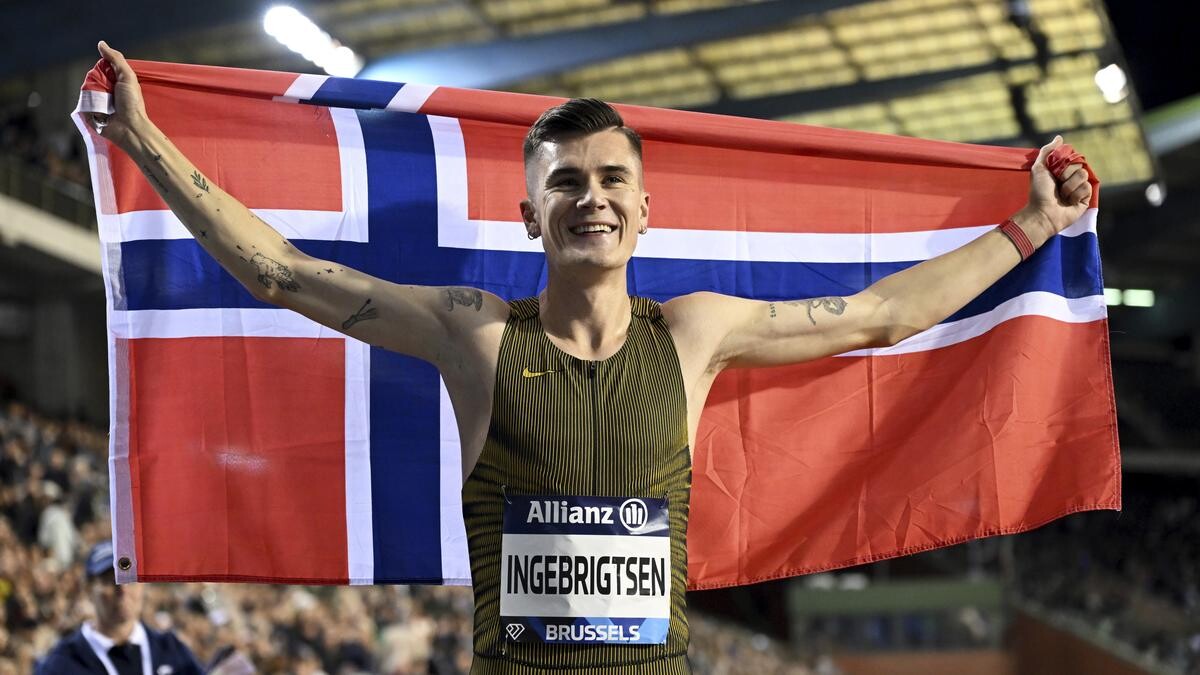
“I’m looking forward to test myself in the half marathon, for the first time, in Copenhagen,” Ingebrigtsen said on the organisers’ website.
“Normally this is a distance that would suit my training very well, but after a long season on the track working towards the 1500m, it’s exciting to see if I even can reach the finish line,” said Ingebrigtsen.
by Sportstart
Login to leave a comment
Copenhagen Half Marathon
The Copenhagen Half Marathon was the first road race in Scandinavia and is one of the fastest half marathons in the world. The Copenhagen Half Marathon has been awarded with the International Association of Athletics Federation's (IAAF) most distinguished recognition - the IAAF Road Race Gold Label. Copenhagen Half Marathon was awarded the IAAF Road Race Bronze Label in January...
more...Jakob Ingebrigtsen considering competing at Sunday’s Copenhagen Half Marathon
It’s no secret that Norwegian distance running star Jakob Ingebrigtsen is on a mission to etch his name into the history books by setting as many world records as possible in his career. On Thursday, rumours began swirling on social media that Ingebrigtsen was competing at the Copenhagen Half Marathon on Sunday, marking what would be his debut at the distance. Should he decide to race, the world record of 57 minutes and 31 seconds could be in jeopardy.
On the Copenhagen Half Marathon start list, there is an unnamed athlete with bib number #2 who is the same age as Ingebrigtsen (23).

In a press conference ahead of Friday’s Diamond League Final in Brussels, Ingebrigtsen was asked if he had plans to compete in Copenhagen. “I’m focused on tomorrow’s race first, and what happens after that, I’m not sure,” the 23-year-old Norwegian responded, keeping the speculation alive. If the rumours prove true, he could be chasing another world record.
In tomorrow’s race in Brussels, Ingebrigtsen will be vying for his third-consecutive Diamond League title while trying to inch closer to Hicham El Guerrouj’s 1,500m world record of 3:26.00. “I believe it’s possible to break any world record,” Ingebrigtsen said in Thursday’s press conference. “For me, it’s about winning. It’s always exciting to race when there’s something bigger on the line. There’s always the chance of a world record, but likely not tomorrow.”

World record watch in Brussels
Meanwhile, the Diamond League Final could witness another world record in the men’s 800m, where Canadian Olympic silver medalist Marco Arop will face off against his rival, Olympic champion Emmanuel Wanyonyi. Both are the fastest 800m runners in the world this year, and they’ll be chasing David Rudisha’s world record time of 1:40.91. Arop will arrive in Brussels in record-setting shape, fresh off setting a North American record in the 1,000m at the Boris Hanžeković Memorial in Zagreb on Sept. 8.
by Marley Dickinson
Login to leave a comment
Copenhagen Half Marathon
The Copenhagen Half Marathon was the first road race in Scandinavia and is one of the fastest half marathons in the world. The Copenhagen Half Marathon has been awarded with the International Association of Athletics Federation's (IAAF) most distinguished recognition - the IAAF Road Race Gold Label. Copenhagen Half Marathon was awarded the IAAF Road Race Bronze Label in January...
more...Hicham El Guerrouj’s 26-year reign at risk as 1500m titans eye world record in Brussels
Three top middle-distance runners are set to challenge the long-standing 1500m world record at the Brussels Diamond League.
The men's 1500m world record set back in 1998 by Morocco’s Hicham El Guerrouj will come under serious threat as three of the most promising middle-distance runners—Jakob Ingebrigtsen, Cole Hocker and Yared Nuguse—are set to clash in the Diamond League final in Brussels this Saturday.
El Guerrouj’s incredible time of 3:26.00 has stood the test of time for 26 years with no one able to break the mark that many thought would be surpassed by now.

However, the trio of Olympic and World Championship medalists are all in peak form and ready to challenge this long-standing record making this one of the most highly anticipated 1500m races in recent memory.
The Tokyo Olympic champion Jakob Ingebrigtsen, enters the race as the favorite. The Norwegian sensation boasts a personal best of 3:26.73, a mere 0.73 seconds shy of El Guerrouj’s historic mark.
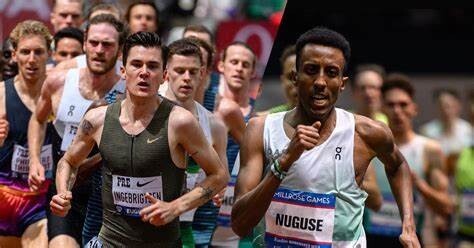
Ingebrigtsen’s dominance over the distance has been unmatched this season, and he has made it clear that breaking the world record is on his radar.
“I feel like I’m in the best shape of my life.The world record is something that has always been in the back of my mind, and I believe this is the best chance I’ve had to go for it," said Ingebrigtsen.
Pushing him to the limit will be the American duo of Cole Hocker and Yared Nuguse. Hocker, fresh off an Olympic season that saw him claim a gold medal in the 1500m is ranked seventh on the all-time list with a personal best of 3:26.73 matching Ingebrigtsen’s time.
Hocker’s confidence has been building all season, and the 23-year-old has openly expressed his desire to break into history.
“I hope to take a stab at the world record, whether it’s this season or next year,” said Hocker.
“But right now, I’m focused on leaving a lasting legacy. The Olympic gold was the first goal, and now it’s time to chase something even bigger.”
Yared Nuguse, ranked ninth on the all-time list, is another strong contender. Nuguse has steadily risen through the ranks with a personal best of 3:27.80 and a season-best of 3:27.80 as well.
The 25-year-old has proven himself capable of competing against the best in the world and could be poised to surprise both Hocker and Ingebrigtsen in Brussels.
The race, however, will be missing one key figure in Josh Kerr, the British 1500m specialist who recently confessed that the mental toll of the season has led him to opt out of the final. Kerr’s absence opens the door for a fascinating showdown between Ingebrigtsen, Hocker, and Nuguse.
In addition to the leading trio, the race will feature strong competition from the likes of Kenya’s Reynold Cheruiyot, a rising star who has posted a season-best of 3:28.28, and Timothy Cheruiyot, the former World Champion.
France’s Azzedine Habz and Great Britain’s Elliot Giles will also be in the mix, having both posted times in the 3:29 range this season.
El Guerrouj’s record-breaking performance in 1998 was the first time a runner had managed to average under 55 seconds per lap for the 1500m.
With athletes now regularly running sub-3:30 times, the level of competition has never been higher. Whether it’s tactical brilliance, pure speed, or a combination of both, this race has all the ingredients to produce fireworks on the track.
by Festus Chuma
Login to leave a comment





